
Home » Travel Guides » Lithuania » 15 Best Places to Visit in Lithuania

15 Best Places to Visit in Lithuania
The first stop on the Baltic trio has a whole load of must-sees and must-do sites up its sleeve.
Forged by long alliances with Poland to the west, conflicts with Russia and Sweden and the Teutonic Knights, and shaped by Slavic builders and Orthodox faiths to name just some of the influences, it’s hardly surprising that Lithuania has so many interesting places for the budding traveler.
Let’s explore the best places to visit in Lithuania :

The historic capital of the Grand Duchy is a veritable treasure trove of medieval wonders and gorgeous Gothic come Russo-flavoured Baroque architecture.
In the Old Town, cobbled roadways weave under the buttresses of the beautiful St Anne’s Church, over café-spattered plazas and under the soaring Gediminas Keep and Upper Castle citadel dating from the 13th century.
Meanwhile, the new town’s blocks pulse with beer bars and sleepless rock clubs, and Europe’s boho district extraordinaire – the self-proclaimed Republic of Uzupis – beckons on the edge of town, a place of shabby-chic, graffiti-strewn streets and more drinking joints than you can shake a cepelinai potato dumpling at!

Jutting out over the confluences of the Nemunas and Neris rivers right in the heartlands of central Lithuania, the second-city of Kaunas proudly stakes its claim as the country’s alternative hub and partying capital.
Thousands of students drive the nightlife, which bubbles up on the tree-shaded boulevard of Laisves Aleja and between the countless craft bars and underground drinkeries of the historic centre, while daytime means seeking out the crumbling bulwarks of the red-brick Kaunas Castle and wandering the enchanting cobblestone alleys of the Old Town – Kaunas’ prettiest district and the home of charming medieval merchant guilds and one gorgeous city hall.
Then there’s the exhibitions dedicated to M. K. Ciurlionis (arguably Lithuania’s best-known artist), which simply shouldn’t be missed!

UNESCO-attested Kernave is steeped in a history and heritage that goes back further than many of the other towns in Lithuania.
It’s hailed as one of the first ever medieval capitals of the Grand Duchy, and it’s thought that the golden age boom happened here in the 13th and 14th centuries, before the onslaught of the Teutonic Order came and razed the fortifications and keeps.
Today, travelers who make their way to the archaeological reserves lining the meanders of the Neris River can spy out mounds (literally!) of relics, now clad in earth but concealing layer upon layer of bulwarks and burial sites, throne rooms and more, and tracing back to the late Palaeolithic Period no less!
4. Klaipeda

Erstwhile Memel was once one of the strongholds of Teutonic rule in the Baltic, later becoming a thriving port and trading town of the Duchy of Prussia, and then the northernmost city in the German Empire of the late 19th century.
Today, Klaipeda bursts with relics of this 800-year-long history, all the while combining them with the more modern edge and nightlife scene expected of the touristic gateway to the Curonian Spit (Lithuania’s most famous coastal stretch). That means travelers can weave between curious sculptures and cobbled squares in the Old Town, hit Lithuanian taverns to sip the locally-brewed beer and case out the bulwarks of Klaipeda Castle all in the same day, and that’s not even mentioning the medieval docksides, the cannong-dotted Prussian bastions and the German-styled beer halls of the main square!

A patchwork of verdant pine forests and flat grasslands, undulating dunes and sandy beaches that curves its way along the Baltic Coast where Lithuania arches towards its long-time Polish compadre in European history and the curious Russian exclave of Kaliningrad, Neringa is one of the most coveted destinations in the country for sure.
Encompassing the whole Lithuanian length of the Curonian Spit, the area offers prime biking and hiking, windsurfing and fishing on the waters of the Curonian Lagoon, the sun-kissed resort strips of Nida and the earthy cottages that makeup age-old towns like Pervalka.
Then there’s Thomas Mann’s charming cottage to see, and the various artist workshops and galleries that sprouted here with the German exodus out of Konigsberg in the 1800s.

Palanga has become a byword for summertime hedonism amongst Lithuanians right across the country, and today this one’s high-season electro and chart parties rage from June to August on the Jonas Basanavicius boulevard and amidst the countless bars and al fresco cocktail joints that line its fringes.
The beach is another magnet during the dog days, offering perhaps Lithuania’s most accessible and sunbather-friendly stretch of golden Baltic sand.
But it’s not all late nights and lazy afternoons in Palanga either.
There’s the picturesque neo-Renaissances charm of the Tiskeviciai Palace to see too, along with the interesting Amber Museum, and the nature reserves of the Curonian Spit nearby!
7. Dzukija National Park

Lithuania’s largest national park covers a whopping 550 square kilometers of land, and makes its home on the edge of the Belarusian border in the extreme south-east of the country.
It’s adorned with great swathes of pine forests and riparian wetlands, all of which come cut through by the meandering channels of the Nemunas River.
Inland dunes are an interesting feature too, rising and dropping to sandy peaks and troughs and playing host to a kaleidoscope of different grasses and rock strata.
Boardwalk treks delve deep into the woods for those donning the hiking boots, while mushrooms bloom in the undergrowth and traditional waxwork crafting abounds in the rural villages.

Trakai is a fantastical fragmentation of islets and grassy hills, shimmering waters and rolling meadows.
It makes its home just a little to the west of the capital at Vilnius and draws crowds of travelers and locals right throughout the year.
Many come to wonder at the Lord of the Rings-style castle that forms the heart of the Trakai Historical National Park; a sprouting of red-brick keeps and turrets that mirrors perfectly against the lake waters all around.
Others come for the summertime recreation that clusters around the banks of the trio of large lakes: Akmena, Galve, Skaistis.
Then there’s the curious multicultural remainders of the Karaim community – a unique Turkic tribe that still uses the pretty timber Trakai Kenesa synagogue that’s seen on-site.
9. Anyksciai

Sat midway between Kaunas and the Latvian border in the east, the indelibly green town of Anyksciai offers a natural getaway balanced with some truly handsome religious architecture.
Check out the soaring Gothic spires of the red-brick Basilica of Apostle Evangelist St Matthew that dominate the banks of the meandering Sventoji here.
With a history going back more than 500 years, this striking construction now touts the tallest church towers in all of Lithuania and some bright stained-glass works by the revered artist Anorte Mackelaite.
After that, be sure to dust off the walking boots (if summer) or wax down the skis (if winter), because Anyksciai has also got the humble ski resort of Kalitos Kalnas and endless arrays of hiking trails on its peripheries.
10. Druskininkai

Moneyed, manicured Druskininkai is the prime spa town in all of Lithuania.
It was famed as far back as the 1600s, under the Grand Duke Stanislaw August Poniatowski, and then rose to prominence in the 19th century with the patronage of one tsar Nicholas I of Russia no less.
The city continues to go from strength to strength, and today its gilded mansions and spa facilities ooze with the chatter of well-to-do Muscovites and city livers.
But mineral-packed waters and healing powers aside, the spot also hails in as the onetime home of Mikalojus Konstantinas Ciurlionis (and there’s a fine museum chronicling the artist’s life), and the spot of the all-new Forest Museum – an immersive exhibition that takes visitors on a haunting journey through Lithuanian folklore and witchery.
11. Panevezys

Lithuania’s fifth-largest cityscape can be found sprawled out on the rolling floodplains of the Nevezis River, in the very heartlands of the country’s northern reaches.
Once a royal charter town in the boom days of the Grand Duchy, the city was rumbled and rocked and razed with the Industrial Revolution and tumultuous European conflicts of the 20th century.
That said, some remnants of the pre-war elegance do remain, whether in the ochre-hued facades and Russian Imperialist styles of the city cathedral, or the lines of aged cottages that occasionally pop up amidst the utilitarian blocks courtesy of Stalin et al.
12. Siauliai

Most people who flock to the post-industrial, onetime Soviet powerhouse city of Siauliai come in search of the legendary Hill of Crosses, which rises in a haunting array of crucifixes and effigies of Christ to the north of the town proper.
However, linger just a little in this off-the-beaten-track center and you’ll discover an array of pretty tree-lined streets, a buzzing café culture, and a gorgeous local cathedral with eye-catching whitewashed faces and a spiked tower.
Be sure to stroll the cobbles of Povilas Visinskis Square, too and flit in and out of the curious and quirky exhibitions on offer at the town’s Bicycle Museum and Radio and TV tech institutes.
13. Aukstaitija National Park

The first ever national park in Lithuania continues to turn heads with its beautiful backcountry patchwork of old growth pine forests and nigh on 30 individual lakes and river ways.
Yes sir, Aukstaitija is a veritable outdoorsy gem of the country’s north-east, offering adventurous types a glimpse of the famed riparian wilds that roll all over this section of the Baltic.
Deer stalk the woodland paths here, while rushes sway on the banks of colossal Lake Tauragnas.
Meanwhile, ancient artifacts and rustic villages draw the attention of anthropologists (it’s thought this area has been inhabited for more than 11,000 years!), and there are haunting burial sites and timber churches to rival even the Viking mounds and staves of Scandinavia.
14. Plateliai

Standing right in the midst of another of Lithuania’s great natural jewels, Plateliai is the much-loved gateway to the Zemaitija National Park, which crowns the grassy Zemaiciu Highland region just a short way from the salt-washed coast of the Baltic Sea.
The verdant and lush surroundings here make for great walking, and even host attractions like the Plokstine missile base left over by the Soviets – now home to the fascinating Cold War Museum.
In the town of Plateliai itself, visitors can spy out one gorgeous timber church from the 1700s, or opt to leave the city streets for a jaunt along the banks of the eponymous lake, where grassy meadows and laid-back hotels but right up to the water’s edge.
15. Rumsiskes

Creaking windmills and faded wooden cottages clad in moss and sod mark out Rumsiskes from the ever encroaching districts of Kaunas that neighbour it.
Unfortunately, the creation of a reservoir in the middle of the 20th century submerged great portions of the old town here, while efforts to preserve the centuries of history associated with the site gave rise to the largest open-air ethnography museum in the entire Baltic region: The Open-Air Museum of Lithuania.
Travelers who make their way here today can expect re-enactment tours and traditional architecture aplenty, along with collections of historic furnishings, clothing, religious iconography and more.
15 Best Places to Visit in Lithuania:
- Dzukija National Park
- Druskininkai
- Aukstaitija National Park

27 Top Things to Do in Lithuania (+Insider Tips & Map of Best Places)
By Author Jurga
Posted on Last updated: April 24, 2024
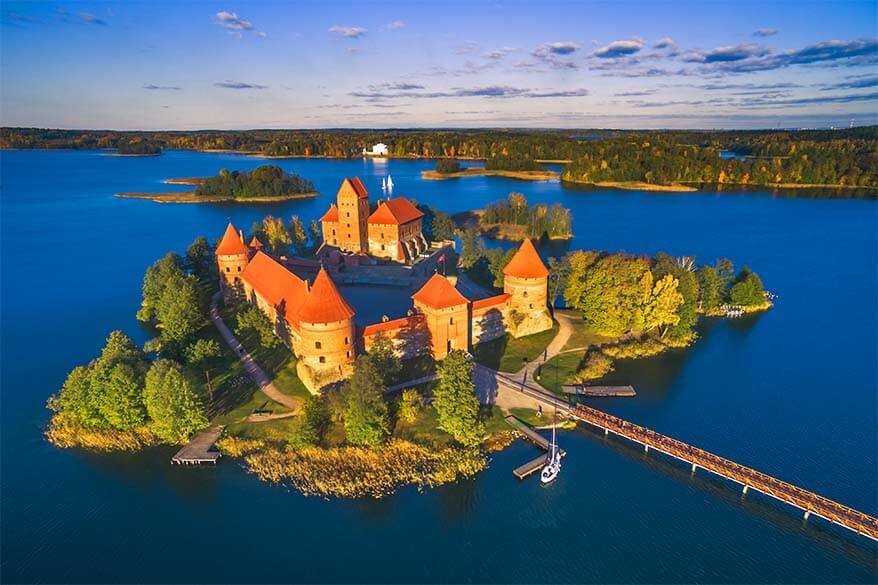
Are you considering a trip to the most beautiful country in the Baltics and wondering what there is to see and do in Lithuania ? In this article, you will find my selection of some of the best places to see and the best things to do in Lithuania . This is an insider’s guide, filled with local tips and advice, and I hope that it will inspire you to visit my home country and explore it deeper.
I have been running the Full Suitcase travel blog for several years now, writing about the most diverse destinations from all over the world… Yet, I always struggled to write about my home country, Lithuania, because it’s somehow hard to see it through the eyes of a tourist…
However, when I Googled ‘best things to do in Lithuania’, I found that all the best-ranking articles don’t do Lithuania justice… Sadly, most of them are written by hired writers who have never even been to Lithuania and have no idea what it’s truly like, not to mention all the inaccuracies and highlighting the strangest places just for the sake of filling the article…
And so I decided that it’s time to share my favorite places and best things to do in Lithuania, giving you a unique local insight and useful practical tips.
I want to show you how diverse and beautiful my home country is and that there is so much more to see and do in Lithuania than it looks at first sight. Find out!

This guide contains the very best things to do in Lithuania and the most unique destinations that you really should see . Every place featured here is one that we, Lithuanians, are proud of. At the same time, I only chose places that I think are truly worth your time as a tourist.
So if you are visiting the country for the first time and want to see the very best that Lithuania has to offer, this guide is for you. Find out!
Good to know: Because the locations mentioned in this article are scattered all over Lithuania, I also created a map , indicating each point of interest. You can find it at the bottom of this article. That should help you get a better idea of where everything is located and plan your trip accordingly.
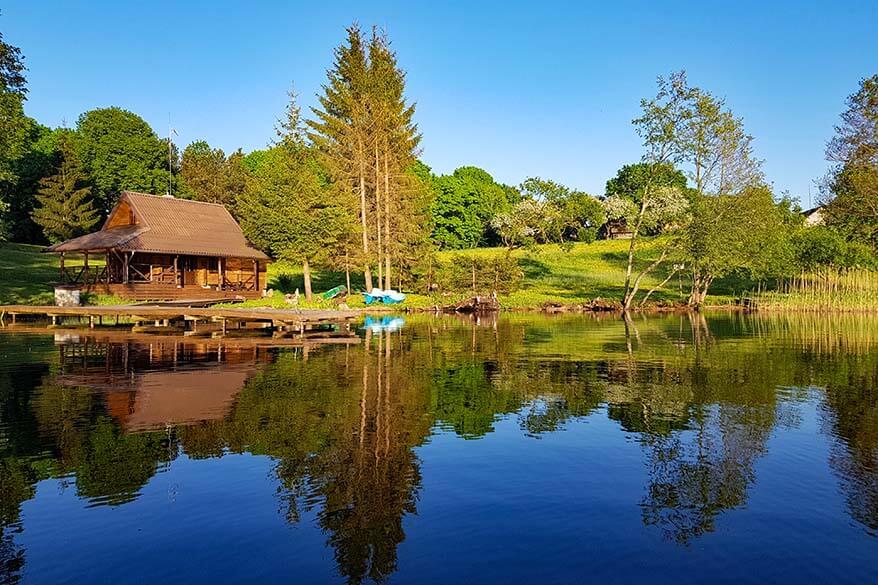
These are the best things to do in Lithuania:
1. Sand Dunes of the Curonian Spit
I want to start this list with my personal favorite place in Lithuania – sand dunes of the Curonian Spit . This is a place where I spent countless summers as a child, a place that I took my husband to when he first visited Lithuania, and a place that I recommend to every tourist traveling to Lithuania.
The Curonian Spit is one of the most unique places in Lithuania. This 98 km long, 0,4 – 4km wide sand-dune spit separates the Curonian Lagoon from the Baltic Sea. There are just a couple of villages, surrounded by endless forests and drifting sand dunes. Sometimes, it seems that time stood still here.
There is a lot to see in the Curonian Spit (and I’ll cover some of the best places below), but the main reason to come here is the sand dunes. Up to 60 meters high in places, these are the highest drifting dunes in Europe.
After intensive logging in the 17th and 18th centuries, the dunes began moving, burying several villages under the sand. Lots of effort and continuous dune stabilization work continues in order to preserve this ever-evolving landscape for future generations. Curonian Spit is now a UNESCO World Heritage Site.
TIP: The most impressive dunes that shouldn’t be missed are Parnidžio kopa ( Parnidis Dune ) in Nida and Pilkosios kopos or Mirusios kopos (Grey Dunes or Dead Dunes) also called Agilos kopa in Naglių Nature Reserve .
Good to know: If you walk too far to the southwest from Parnidis Dune, you risk entering the territory of Kaliningrad, part of the Russian Federation. Make sure that you follow any signs and don’t get into trouble for crossing the border.
LEARN MORE: Curonian Spit

2. Vilnius Historic Center
Vilnius Historic Center , or Vilnius Old Town, is another UNESCO World Heritage Site, and a must-see in Lituania. Despite countless wars and destructions, Vilnius managed to preserve its medieval layout and an impressive mix of Gothic, Baroque, Renaissance, and classical architecture.
There are many impressive buildings in the Old Town and the best way to see it all is to explore the historic center on foot.
Don’t miss the St. Anne’s Church and the adjacent St. Francis of Assisi (Bernardine) Church, the Gate of Dawn, Pilies Street, the Palace of the Grand Dukes of Lithuania, Vilnius University and the Church of St. Johns, the Presidential Palace, and of course Vilnius Cathedral with its Bell Tower, and our National pride – Gediminas Tower…
I am not going to mention all these places separately because this would require a whole separate article. But some of them deserve a separate mention and you’ll find some more info further below.
TIP: See if you can join one of the walking- or bike tours with local guides during your visit to Vilnius. It’s a great way to explore the old town, get some background information of the main sights, and hear interesting stories about the city and its fascinating history.
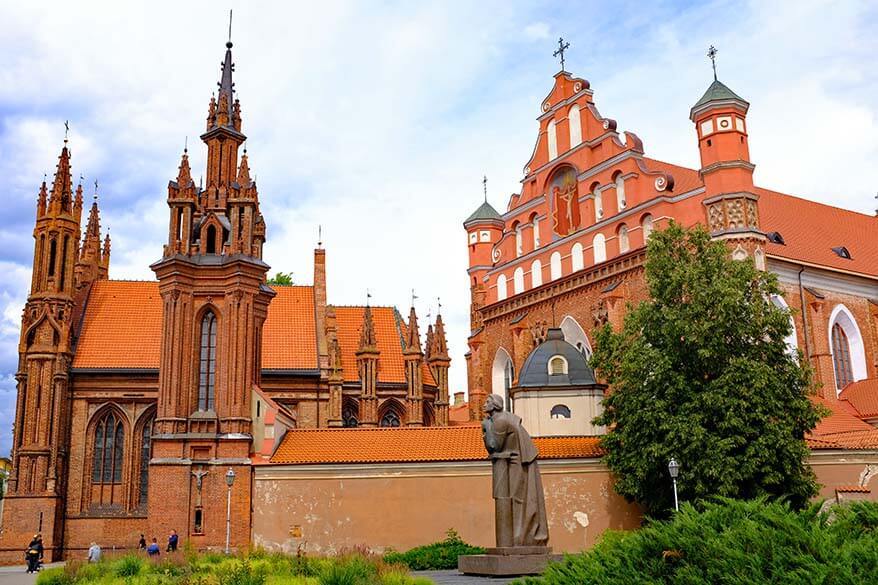
3. Trakai Island Castle
Trakai Castle , built in the 14-15th centuries and just recently restored, is considered a definite must-see place in Lithuania. Located in the most beautiful setting on a little island surrounded by Lake Galvė, the castle is truly impressive. The whole area around Trakai is dotted with lakes and if you can, take your time to explore it as well.
Because Trakai is just a short drive from the capital city, visiting Trakai Castle is the most popular day trip from Vilnius. It’s also one of the most visited tourist attractions in Lithuania, a favorite among tourists and locals alike.
Sometimes, it might feel like a tourist trap, but if you look beyond the crowds, the tour buses, and the souvenir shops, you’ll be able to appreciate the unique setting and impressive architecture dating back from the times when the Grand Duchy of Lithuania was one of the main powers in the region, stretching all the way to the Black Sea.
TIP: You can visit Trakai by taking a guided tour from Vilnius . Alternatively, take a car or a train and visit on your own. If you come in the warm season, I highly recommend renting a rowing boat or a kayak. It’s a great way to explore the beautiful area around the castle. The best way to appreciate the incredibly beautiful surroundings here is by taking a hot air balloon tour .
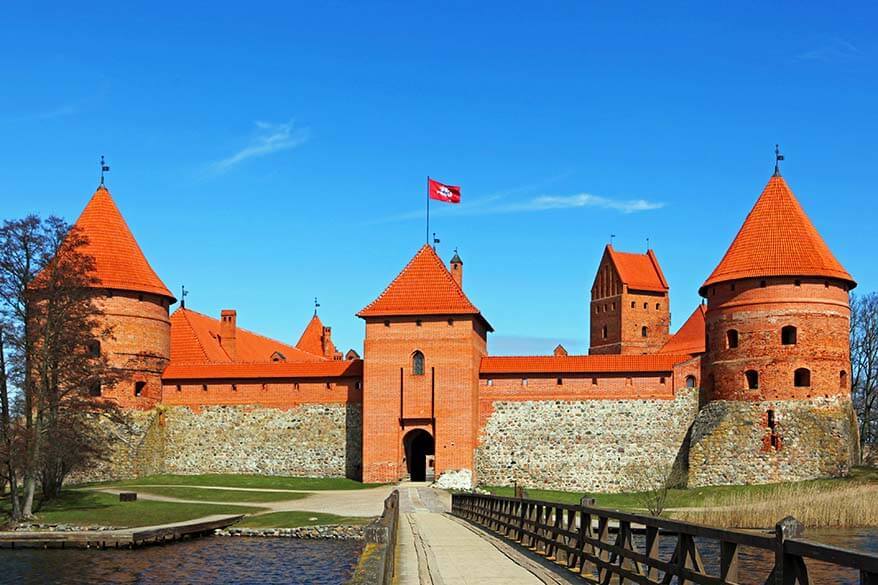
4. Gediminas Castle Tower
One of the absolute must-see places in Vilnius, Gedimino bokštas ( Gediminas Tower ) deserves a separate mention and a place on this ‘best of Lithuania’ list.
This tower is one of our National symbols and one of the very few historic places in the country that we were allowed to be proud of even in Soviet times.
Gediminas’ Tower is the most important feature remaining of the former Upper Castle in Vilnius. The first wooden fortifications at this place were built in the 14th century by Grand Duke Gediminas. This castle was the start of Vilnius city which would later become the capital of Lithuania.

According to a legend, Gediminas was hunting in the sacred forest near the two rivers that we now know as the Vilnia River and Neris River. Because he was too tired to head home, he set camp at this place for a night. That night, he dreamt of an iron wolf, standing on top of a hill and howling as loud as a hundred wolves. In the morning, he asked the head priest to interpret the dream. He told him that the iron wolf represents a castle and a city that will be established here and the glory and fame of which will be known throughout the entire world.
As it was common in those days, Gediminas saw this as a will of God and decided to build a city in this location, naming it Vilnius, after the Vilnia River.
Every Lithuanian grows up reading fairy tales and stories of this legend and it would be hard to find a Lithuanian who hasn’t visited the tower at least once in their lifetime… It will come as no surprise that Gediminas’ Tower Castle is considered as one of the most important places to see in Lithuania.
Practical info: Gediminas’ Tower Castle is open daily (except on Public Holidays). You can either take a funicular or walk up the hill. The views from the top of the tower are worth the effort and you can also visit the weapons and armory exhibitions inside.
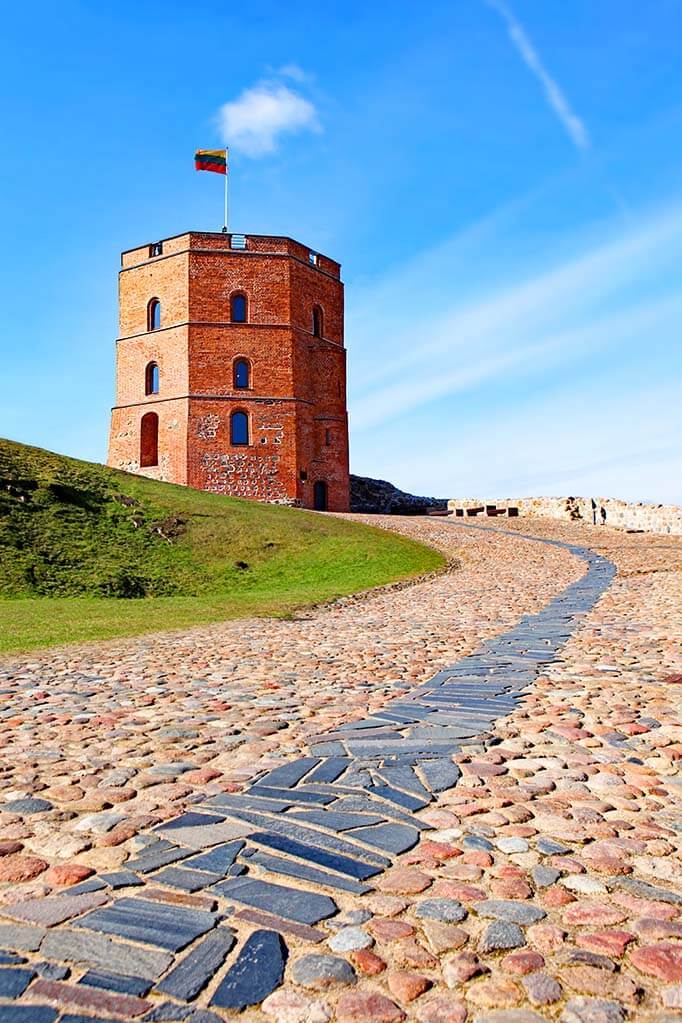
5. Hill of Crosses
Kryžių kalnas , Hill of Crosses , is not just one of the best places to visit in Lithuania, it definitely deserves a place on any list of the most unique places in the world. Hundreds of thousands of crosses in all shapes and sizes, covering this tiny hill in the middle of nowhere is a very impressive sight!
Hill of Crosses dates back to the beginning of the 19th century when people were placing crosses to commemorate their loved ones who died in the uprising against the Russian Tsar. Needless to say, the authorities were not amused. It was forbidden to place crosses and they were being torn down by the government. That didn’t stop the people, however; they just looked for more remote locations. That’s how the Hill of Crosses on the Domantai Hill Fortress was born.
Despite the political oppression, the Hill of Crosses continued to grow and became a symbol of hope and strength for the Lithuanian people. It has become a very popular place for all kinds of religious celebrations in the interwar period.
Afterwards, as Lithuania was occupied by the Soviets, it was strictly forbidden to place crosses or to come to pray here. The Soviets have tried everything in order to destroy the Hill of Crosses – they took away all the crosses, closed the roads leading to it, and even tried to flood the area… But the harder they tried, the stronger was the will of the people to preserve it.
People would come here in the middle of the night, bringing new crosses all over again. The Hill of Crosses has become the symbol of heroic resistance to the suppression of religious freedom.
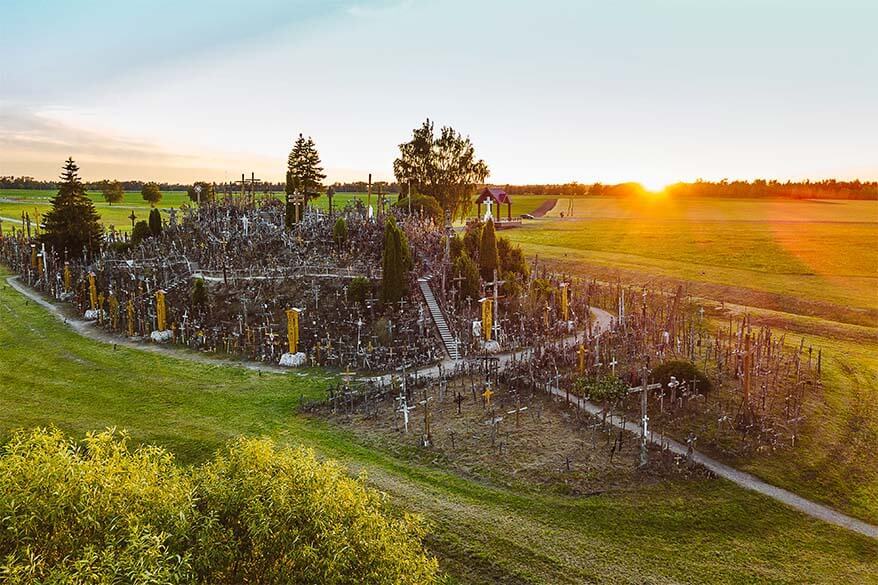
Ever since Lithuania’s independence, the Hill of Crosses has gained more and more significance. Its importance was crowned by the visit of the Pope in 1993. Nowadays, it’s a popular pilgrimage site and one of the most special places to see in Lithuania.
Practical Information: Hill of Crosses is located near Šiauliai, in northern Lithuania. It’s about 2.5 hrs drive from Vilnius and 2hrs drive from Kaunas or Klaipėda. It’s a good stop if driving to Riga in Latvia, that’s also about 2 hours away from here. It’s always open and there is no fee to visit and you can come here at any time.
While it requires some effort to get here, most people consider it more than worth it. It’s one of the most unique places you’ll ever visit.
TIP: You can visit the Hill of Crosses with this popular tour as a day trip from Vilnius . Alternatively, there is a private tour that combines the Hill of Crosses with a visit to Anykščiai (see #14 further below).
LEARN MORE: How to Visit the Hill of Crosses

6. Palace of the Grand Dukes of Lithuania
Valdovų rūmai , the Palace of the Grand Dukes of Lithuania is an excellent museum located inside the restored 15th-century palace at the Cathedral Square in Vilnius. I would dare say that, at the moment, this is the best museum in Lithuania.
The museum has several parts, with the most impressive one being the ruins of the original palace underground and the beautiful rooms displaying authentic furniture, tapestries, and paintings on the upper floors.
But probably the most impressive is the incredible historic virtual reality 3D experience . We have seen many virtual reality experiences in various contexts and this one is one of the very best ever. It’s great for both, kids as well as adults.
In a matter of a couple of minutes, you’re taken back in time and witness the creation and growth of Vilnius city. It’s so well done that it will take your breath away. I think that this 3D experience is the best thing you can do in Vilnius. It will help you appreciate everything you see in the city even more. Don’t miss this!
Practical info: The museum is open daily in summer, and every day except Mondays the rest of the year. Closed on certain Public holidays. More info here .
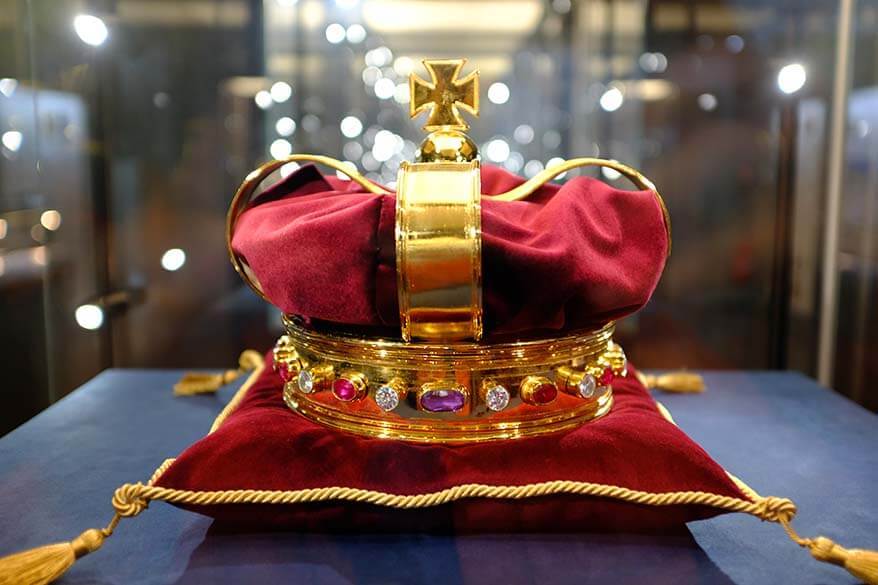
No list of the best places in Lithuania would be complete without mentioning its second-largest city and my hometown, Kaunas . Dating back to the 14th century and set in the place where the two biggest rivers in Lithuania – Nemunas and Neris – come together, Kaunas has always held a very significant place in Lithuania’s history.
In the interwar period, when Vilnius was occupied by the Polish, Kaunas was the temporary capital city of Lithuania. The city has known good times, but it has also suffered a lot, and for a while, it looked like it was struggling with its image.
Recently, Kaunas has been selected as the European Capital of Culture of 2022 and the city is rapidly changing beyond recognition. I am glad to say that it is doing its best to restore and reinvent itself and is again becoming a city that we can all be proud of.
Not to be missed is Kaunas Old Town, Kaunas Castle, the Town Hall Square ( Rotušės aikštė ), the Cathedral, Vytautas Church, House of Perkūnas, Confluence of Nemunas and Neris rivers, the main pedestrian street Liberty Boulevard ( Laisvės alėja ), St. Michael the Archangel’s Church, and its countless museums including M.K. Čiurlionis Museum of Art and Žmuidzinavičius Museum, known as the Devils’ Museum (more info further below).

8. Klaipėda
Surprisingly, hardly ever mentioned as one of the best places to visit in Lithuania, Klaipėda is, in my opinion, another must-see in Lithuania.
Lithuania’s third-largest town and its biggest main port city, Klaipėda is located at the Curonian Lagoon and the Baltic Sea. If you are taking a cruise through the Baltic States, you’ll likely stop here for a day.
Formerly known as Memel, Klaipėda was part of the Prussian Kingdom until 1923. That’s the reason why architecture here is very different than in the rest of Lithuania. I just love the wood-framed 18th-century German-style buildings in Klaipėda!
Don’t miss the Theater Square, the beautiful riverside of Danės River, and countless narrow streets and historic buildings of the Old Town. Another favorite is the Lithuanian Sea Museum (more information further below).

9. Lithuanian Folk Museum in Rumšiškės
There is no better place to get to know what life in Lithuania was like in the past than the Lithuanian Folk Museum in Rumšiškės, aka Open-Air Museum of Lithuania. It’s one of the largest ethnographic open-air museums in Europe, set in a beautiful area close to Kaunas Lagoon.
The museum is a great introduction to the ethnographic regions of Lithuania – Dzūkija (Dainava), Aukštaitija (Highlands), Suvalkija (Sudovia), Žemaitija (Samogitia)… All the houses here represent their respective regions and it’s interesting to see the architecture (and even the traditional clothing) differ from place to place. Inside, you’ll find typical household appliances and machinery, most dating from the 18th – 19th centuries.
Inside the museum, you’ll also find a ‘town’ with traditional buildings from all around Lithuania. There is also a church, a market square, and various houses of craftsmen with demonstrations in pottery, weaving, amber and wood crafting.
TIP: While the nicest time to visit the open-air museum is summer, it’s worth a trip the whole year round. Various events are held here in all seasons. Probably the best-known and the most popular one is Užgavėnės (a sort of Mardi Gras or a carnival, but then in the old-fashioned Lithuanian style). If you are visiting Lithuania during the carnival period (the week of Shrove Tuesday and Ash Wednesday), Rumšiškės is not to be missed!
Practical information: The museum is located just off the highway between Vilnius and Kaunas, about 80km from Vilnius and 30 from Kaunas town center. For opening times and other info, please consult the official website of the museum .
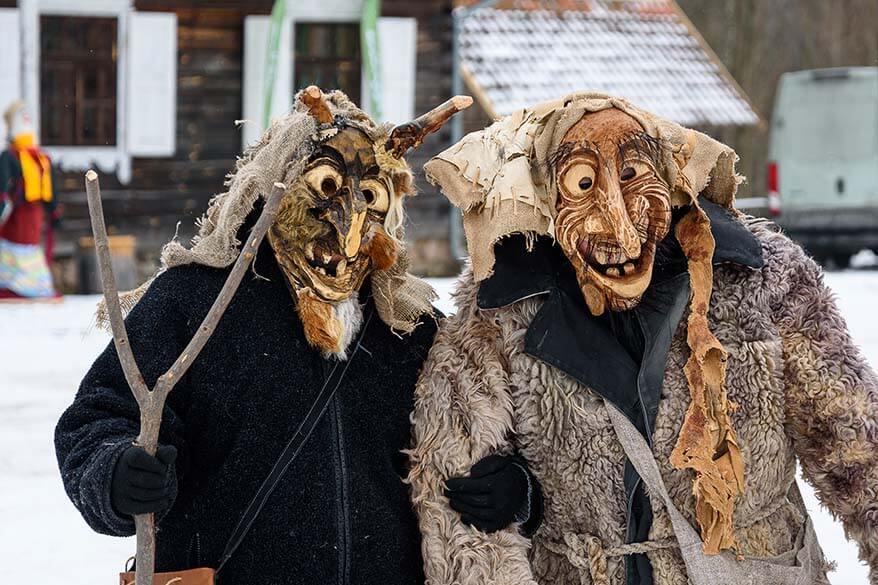
10. Pažaislis Monastery
Pažaislio Vienuolynas ( Pažaislis Monastery ) and the Church of the Visitation are a part of the largest monastery complex in Lithuania. Located on the shores of the Kaunas Reservoir (huge artificial lake), this 17th-century monastery is one of the best places to see in Lithuania. Yet, you won’t find many tourists here. It might get busy during certain events, but most likely, you’ll have this gem all to yourselves.
The magnificent buildings are probably the most beautiful example of Italian Baroque architecture in Lithuania and are definitely worth seeing. While it’s an actual working monastery, it’s possible to visit the beautiful church.
If you have some extra time, go for a walk in the surrounding area. It’s so beautiful and peaceful here.
Practical information: The monastery is located about 10km from the Kaunas town center and can be best reached by car. Public transport is also available. It’s open for visits daily, except Mondays. For more information and opening hours, please check their website .
TIP: You can visit Kaunas, Rumšiškės Folk Museum, and Pažaislis Monastery as a day trip with this guided tour from Vilnius .
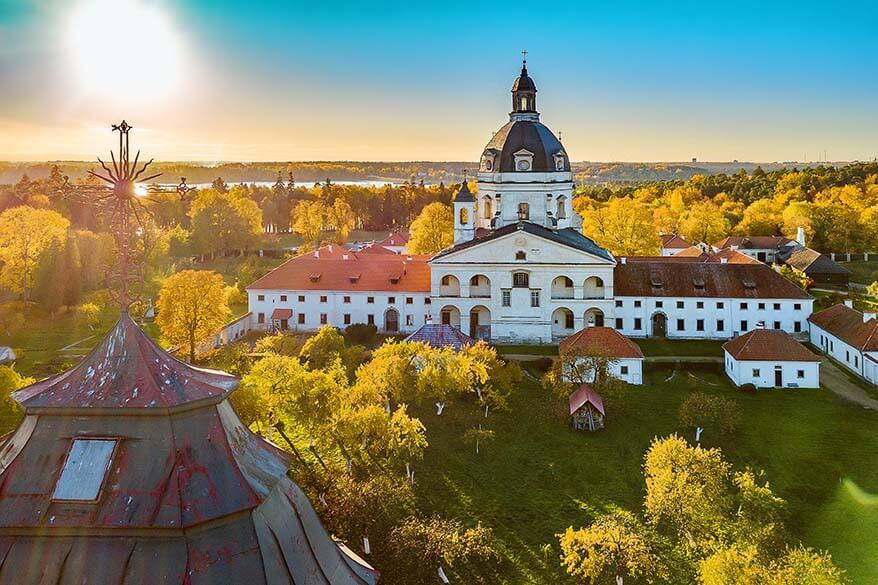
Nida is one of the biggest towns of the earlier mentioned Curonian Spit. In addition to the impressive sand dunes of the area, this picturesque town itself is also worth mentioning among the best things to do in Lithuania. It’s a true hidden gem!
Nida is a small fishermen’s town that has preserved its unique character and architecture not found anywhere else in Lithuania. It’s my favorite vacation place in Lithuania, but because it’s more isolated and not laying directly on the beach, it’s much quieter than the earlier mentioned Palanga.
Not to be missed are the earlier mentioned sand dunes, the colorful wooden fishermen’s houses, Thomas Mann Museum, and the lighthouse. You can also take a boat trip and see the impressive sand dunes from the water or visit the nearby Ventės Ragas (Ventė Cape). But my favorite thing to do is rent a bike and explore the 52 km of bike paths of the Curonian Spit. You’ll never want to leave!
LEARN MORE: Ultimate Guide to Nida

12. Grūtas Park
Grūto parkas ( Grūtas Park ) is a privately owned Soviet sculpture garden located in the forests of Grūtas village, near Druskininkai in the South of Lithuania. It contains a big exposition of the Soviet-era statues, Soviet memorabilia, and lots of other Soviet relics from the times when Lithuania was part of the USSR.
As Lithuania gained independence and all the towns and villages started getting rid of the statues of Lenin, Stalin, and other Soviet-era heroes, a businessman from Grūtas decided to collect them. In 2001, he opened this unique museum that quickly became the talk of the town. It has recently been expanded and now you can also find a small zoo, a kids’ playground (from the Soviet times), and a café here.
Grūtas Park has always been a bit of a controversial place, but it shows a big part of our recent history, and I think it’s certainly worth a visit. It is now considered as one of the most interesting places to see in Lithuania, so if you have a chance, give it a go.
Practical information: The park is open daily, the whole year round. For practical information and how to get there, please check their website .
TIP: You can visit Grutas Park, together with some other landmarks in the region by taking this highly-rated private day tour from Vilnius .
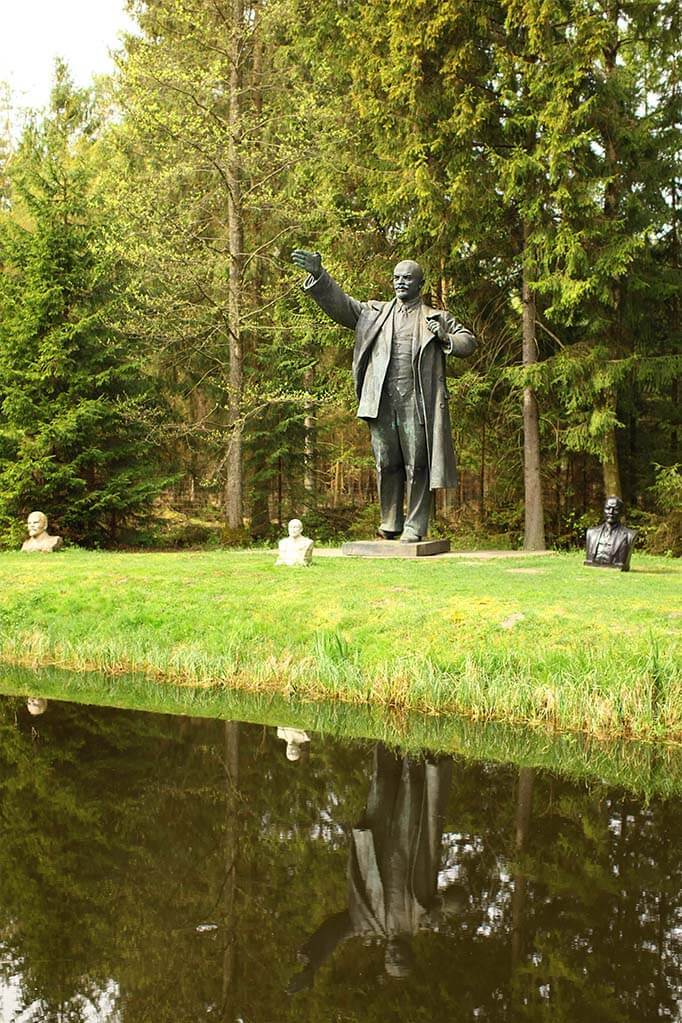
13. Druskininkai
One of the nicest small towns in Lithuania, Druskininkai , is little known to Western visitors. I didn’t see anyone mention it among the best towns to visit in Lithuania, but it’s really worth a visit. I might be biased as my godparents live here and I absolutely love Druskininkai, but I’m not the only one. This resort town is one of the most popular domestic destinations among Lithuanians and an absolute favorite among vacationers from neighboring countries.
Best known for its SPA treatments, Druskininkai is a very green town, with parks, forests, and lakes in and around the town. There are countless walking and biking paths, and the town has quite a lot to offer to tourists. Take a stroll on the pedestrian Vilnius Blvd, rent a rowing boat on the beautiful little lake with a fountain in the middle, rent a bike and discover one of the many parks, or visit a museum…
There is also a fantastic indoor water park, an adventure park, an indoor skiing arena, a gondola with fantastic views over the Neris River, and so much more… In the evenings, don’t miss the Musical Fountain – it’s always fun and you can order a song of your choice if you like to. If you want to explore further, you can also take a boat trip to the nearby historic Liškiava village.
Having mentioned all this, it might sound like Druskininkai is a busy town overrun by tourists. But it never feels like that! It has an amazing atmosphere and it’s a great place to visit in Lithuania in any season.
TIP: Druskininkai is like a destination in itself, so I recommend spending at least one night here (there are lots of really nice hotel s in town). Combine the visit with the earlier mentioned Grūtas Park which is located just nearby.

14. Anykščiai: Treetop Walking Path, Horse Museum & Puntukas Stone
Anykščiai is a sort of resort town, about 100km North of Vilnius. Known as one of the SPA towns and mostly visited by locals, I think it’s also worth a trip for tourists looking to get a bit off the beaten path in Lithuania.
The town itself is very nice and green, and its main landmark is the St. Matthias Church with the tallest spires in Lithuania. But most Lithuanians come here for another reason. A stone.
Anykščiai has always been known as the place where you could see Lithuania’s largest stone, Puntukas . We would travel all the way from the other side of the country just to see the stone…
I recently found out that it’s actually the second-biggest stone in the country, after the Barstyčiai stone, but nobody in Lithuania has ever heard of the latter. So Puntukas is our national stone and a place that every Lithuanian will proudly mention as one of the things to see in Lithuania.
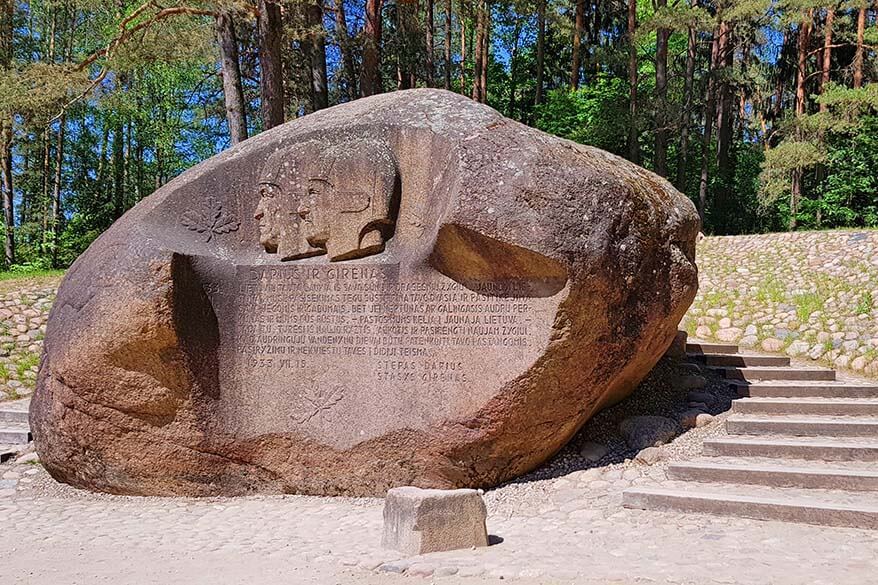
A few years ago, a new attraction has been opened just nearby – Anykščiai Treetop Walking Path , and that is, in my view, worth the visit to the area more than any stone. This Anykščiai Canopy Walk is located inside the national park, surrounded by lush forests. It’s a peaceful (although short) walk at the level of treetops, ending on top of an observation tower with an amazing view of the surroundings.
Another highlight in the Anykščiai area is Arklio Muziejus ( Horse Museum ). It’s a great place to visit, and especially if you are fond of horses or are traveling in Lithuania with kids. With lots of hands-on activities and horse riding available, it’s considered one of the best open-air museums in Lithuania.
While none of these places is an absolute must-see in Lithuania in itself, all of them together make for a really nice excursion. In addition, you can also combine all these places together with the nearby barefoot path or Labirynth park and turn it into a great family-friendly day out.
Practical information: Puntukas stone can be seen for free at any time, while the treetop walk can only be accessed during the day. It’s open daily, but hours vary by season. The Horse Museum is also open every day; for more information, please consult the official website .
TIP: If you don’t have a car, there are several tours that can bring you to this area as a day trip from Vilnius.
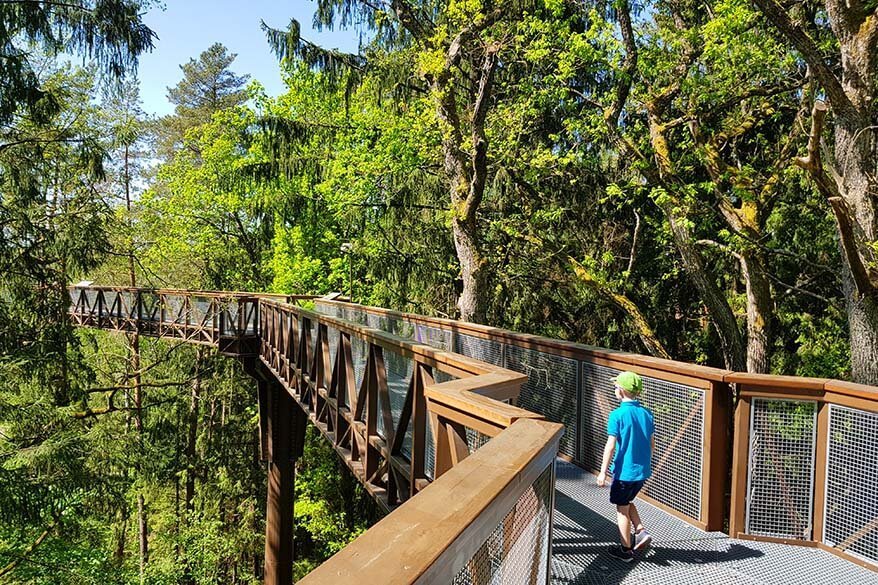
15. Palanga Amber Museum & Pier of Palanga
Palanga is the most popular Lithuanian seaside town. Thousands of Lithuanians spend their summer holidays at Palanga beach.
The town is a mix of beautiful nature, forests, and stunning white-sand beaches, but also the crazy busy and loud pedestrian Basanavičiaus Street that reminds you of a huge country fair… But if you can ignore this noisy crowded street, you will find that Palanga is actually a very pleasant little town that is worth visiting.
The reason why I decided to include it on this list of places to visit in Lithuania is because of the Palanga Amber Museum and the Pier of Palanga .
Palangos gintaro muziejus ( Palanga Amber Museum ) is located inside the restored 19th-century Tiškevičiai Palace and surrounded by the beautiful Palanga Botanical Garden. The museum features a really nice collection of Lithuanian gold – amber.
Amber is something that you’ll see everywhere in Lithuania – every souvenir shop and every market sells all kinds of amber jewelry and other products. But if you want to see some really nice exquisite pieces of amber, then there is no better place to do that than in this museum. My favorites are amber pieces with the fossilized remains of insects. Talking about stopping time…

Another reason to visit Palanga is the Pier of Palanga or Palangos tiltas ( Palanga Bridge ) as locals call it. There is no better place to see a sunset in Lithuania than from this wooden pier that stretches far into the sea.
On summer evenings, and especially on the weekends, it might feel like half of Lithuania has gathered to watch a sunset here. But if you come here in the lower season, you might have it all to yourself, and it’s simply magical…
TIP: If you decide to visit Palanga in summer, try to avoid weekends. If you are visiting in the colder season, after the storm, you might find some small pieces of amber on the beach.
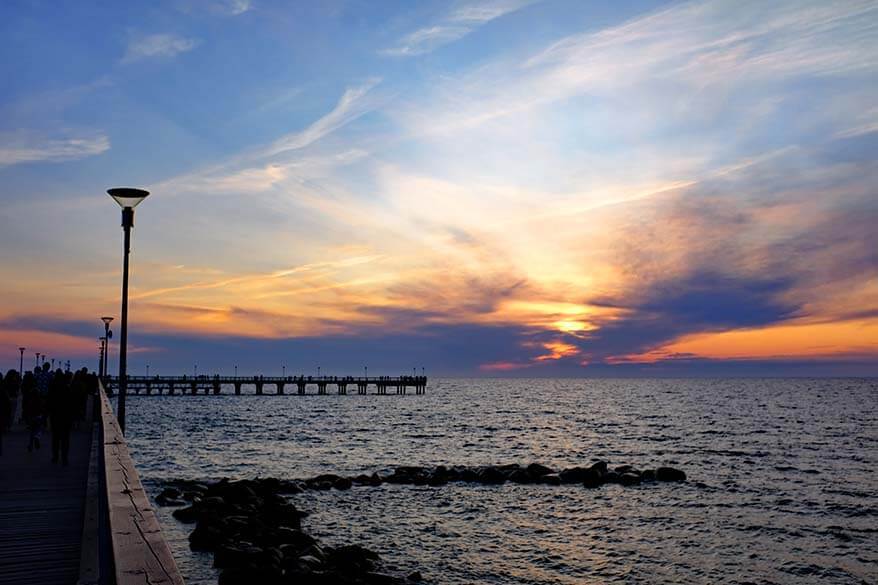
16. Užupis
Located in the center of Vilnius, Užupis is actually just a quirky part of Vilnius Old town. Literally, Užupis means ‘beyond the river’ and it’s indeed separated from the rest of the city by the Vilnia River.
After the fall of the USSR and the disappearance of the former Soviet statues, several local artists erected a statue of the US rock musician Frank Zappa, as a symbol of freedom and democracy. A few years later, they went a step further, and on the 1st of April 1997, declared the independent state of Užupis.
While it calls itself one of the smallest republics in the world and boasts its own constitution, government, president, and even a navy consisting of a couple of small boats, Užupis is not in any way a political statement, but rather an art project if you like. It’s an exciting area loved by artists and they pride themselves on treating everyone equally.
Don’t miss the Constitution of the Republic of Užupis which can be found on the wall of a building on Paupio Street, 3A. It has been translated into 26 different languages, so no excuses or saying you didn’t know the laws of this self-proclaimed republic…
Some of the laws of Užupis state that ‘ Everyone has the right to be unique ‘, ‘ Everyone has the right to hot water, heating in winter and a tiled roo f’, or ‘ A dog has the right to be a dog ‘ and ‘ A cat is not obliged to love its owner, but must help in time of need ‘… You get the idea…
It’s a fun place to see in Vilnius and has become one of the most quirky and popular tourist attractions in Lithuania.
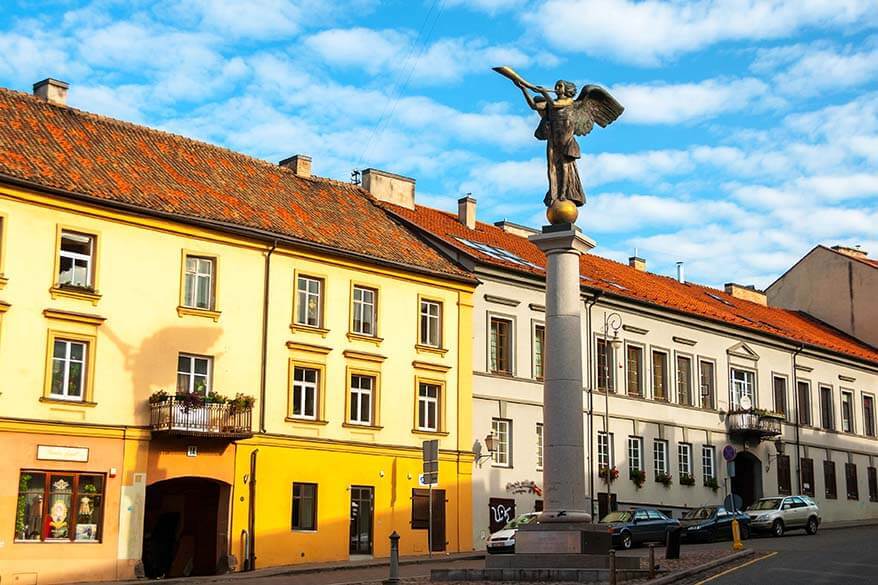
17. Museum of Occupations and Freedom Fights
The Museum of Genocide Victims aka Museum of Occupations and Freedom Fights is one of the most interesting museums in Vilnius, Lithuania.
Situated inside the former KGB building, this is by no means a light-hearted attraction. Some of the things you’ll see here are harsh and thought-provoking. But it’s a big part of our history and so if you want to know what Lithuania has been through in the recent past, this museum is a must!
Inside, you can visit the former KGB prison and see the premises where death sentences were executed for 50 (!) years. Here, you can learn about Lithuania’s occupation and repressions by the Soviets, and the persistent fight for independence.
Practical information: The museum is open Wednesday to Sunday, from 10 AM to 5-6 PM. See the official website for more info.

18. The Geographical Center of Europe & Europa Park
Back in 1989, the French National Geographic Institute determined that the geographic center of Europe is located in Lithuania, near the village of Purnuškės. Several countries claim to be at the heart of Europe and I’m not going into those discussions, but Lithuania gladly accepted this French calculation and proudly calls itself the Center of Europe.
If you like visiting quirky symbolic places like this, then you’ll enjoy a quick photo stop at the Geographical Center of Europe . It’s not much more than a monument, and you can get a special certificate confirming that you visited the center of Europe.
Another interesting place to see nearby is Europos Parkas ( Europa Park ), a sort of open-air museum that was designed to give artistic significance to the fact that Lithuania is the Center or Europe. This is a privately-owned museum, set in the forest with a variety of large modern artworks scattered in the area. In my view, it’s not really a must, but if you are visiting the area anyway, it’s a nice place to stretch your legs and see something different.
Practical information: The Center of Europe is located in Purnuškės, about 30km North of Vilnius and can be visited at any time. Europa Park is located in the same area, about halfway between Vilnius and Purnuškės. It can be visited the whole year round and is open daily. For opening hours and practical info, please check the official website .
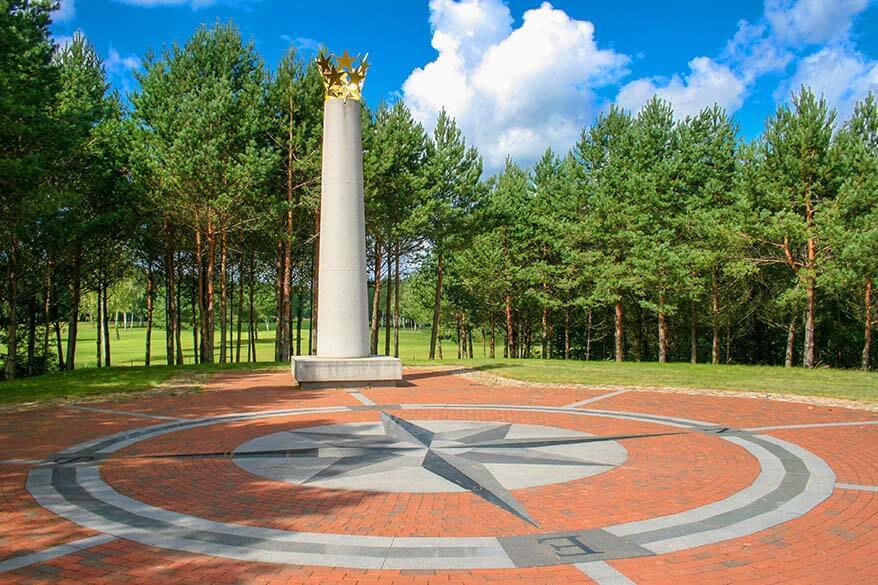
19. M.K. Čiurlionis Museum of Art
Mikalojus Konstantinas Čiurlionis was a Lithuanian composer, painter, and writer who lived at the end of the 19th – the beginning of the 20th century. He’s one of Lithuania’s most famous artists and one of Europe’s pioneers of abstract art.
In his short life of just 36 years, he created hundreds of pieces of music, paintings, poems, and literary works. M.K. Čiurlionis Museum of Art in Kaunas houses the biggest collection of those works and is one of the best art museums in Lithuania. Not only can you find a big collection of his paintings, but also listen to his music. The two are interrelated and many of Čiurlionis’ paintings have musical names.
In addition to the works of Čiurlionis, this large museum houses ancient Egyptian and Greek art, as well as a big variety of European art from the 16th to 20th centuries.
TIP: One of the top attractions here now is an amazing VR film ‘Trail of Angels’ based on Čiurlionis’ works. Don’t miss it! And if you don’t have time to go to Kaunas, this experience is now also available in Vilnius. You can find more info here (be sure to reserve this in advance!).
Practical information: This museum is located in the center of Kaunas and is open daily, except on Mondays. There is an audio guide available and the dedicated staff is always ready to give you more details. More info here .

20. Devils’ Museum
Žmuidzinavičius Museum , known as the Devils’ Museum in Kaunas is one of the most special, quirkiest museums in Lithuania. It’s also the only museum in its kind in the world, and so it definitely deserves a mention among the main points of interest in Lithuania. If you are in Kaunas, don’t miss it!
Antanas Žmuidzinavičius was an artist who collected an impressive number of sculptures and carvings of devils from all over the world. After his death, his collection has been turned into a museum. In addition to the impressive collection of devils, you can also see paintings by the artist himself.
At the moment, the museum houses over 3000 devils from over 70 different countries. You can also learn a lot about Lithuanian folklore and stories and myths about the devils and evil creatures displayed here. If you bring a unique devil from your own country, the museum will accept it as a present and most likely add it to their collection.
Practical information: This museum is located in Kaunas, just next to the previously mentioned Čiurlionis Museum of Art. It’s open daily, except on Mondays.
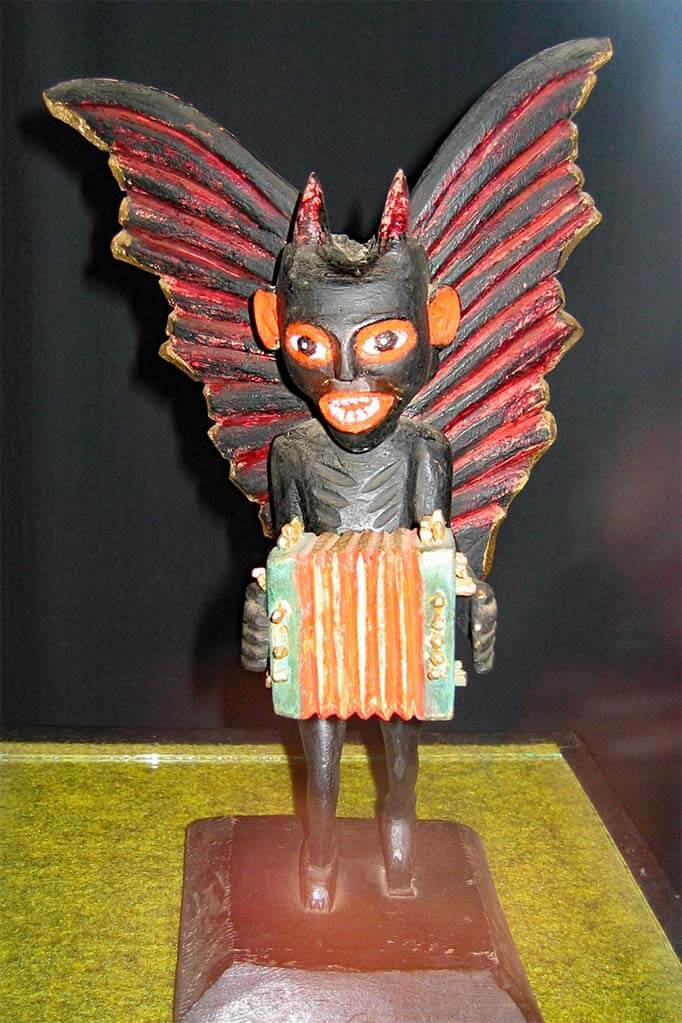
21. The Hill of Witches
The Hill of Witches is an outdoor sculpture gallery in Juodkrantė, on the earlier mentioned Curonian Spit. All the sculptures here are made of wood and most portray Lithuanian fairytale characters, such as witches and devils.
Set in a beautiful forest, this feels like a magical place that will especially appeal to families with children. The Hill of Witches might not be a huge landmark, but it’s so unique and so typically Lithuanian that I think it deserves a visit. If you are visiting the Curonian Spit and have half an hour to spare, it’s a must-do!
Practical information: Since the sculptures are set in the forest, it’s always open and it’s free of charge.
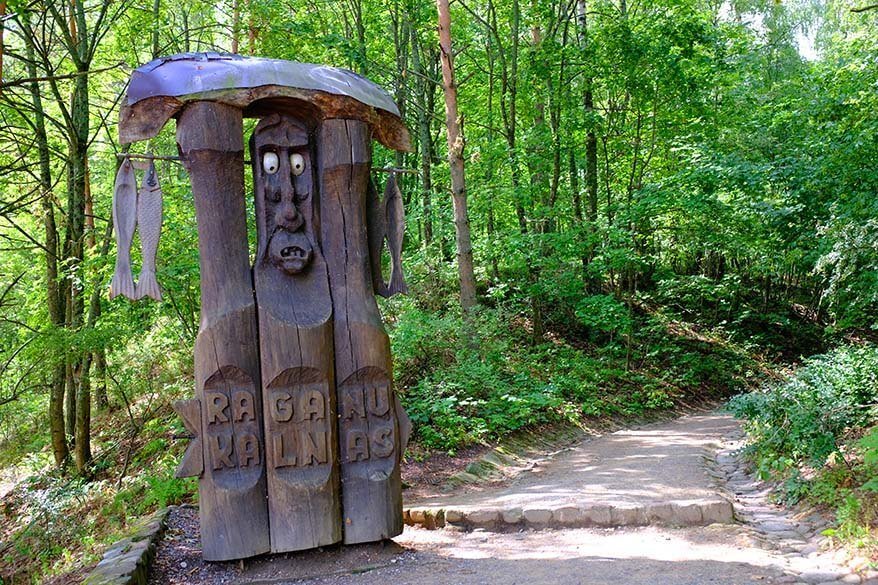
22. Lithuanian Sea Museum
Lietuvos jūrų muziejus ( Lithuanian Sea Museum ) is a maritime museum with big aquariums, an aquarium tunnel, great sea lion and dolphin shows, and also historical exhibits. Located in an old fort on the northern tip of the Curonian Spit, it’s just a very short ferry ride away from Klaipėda town center.
It’s a fun place to visit in Lithuania with kids. Not only can you see a big variety of fish and animals including penguins, sea lions, and dolphins, it’s also a great place to learn more about the Baltic Sea. In addition, you will find some big old ships and also a replica of an old fisherman’s house.
Practical information: Old Smiltynė Passenger Ferry is the best way to get to the museum from Klaipėda. Alternatively, if you are visiting the Curonian Spit anyway, you can come here by car. Just get here early in the morning or parking space will be really hard to find.
It’s open the whole year round. In summer, the museum is open daily except on Mondays, the rest of the year – opening hours differ per season. More information on their website . Count at least half a day for a visit.
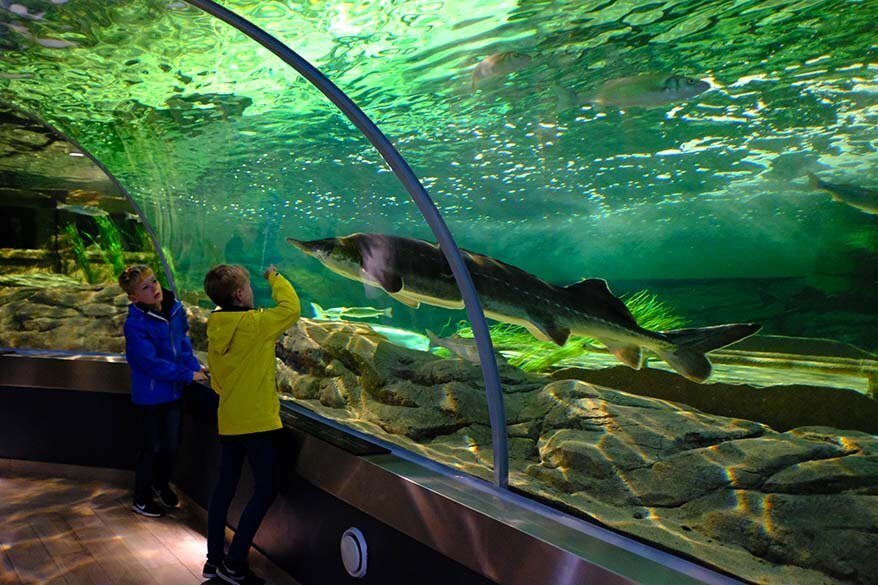
23. Dutchman’s Cap
Olando kepurė ( The Dutchman’s Cap ) is a 24-meter high sand hill with a steep cliff crashing into the Baltic Sea. It’s probably one of the most untouched, rough coastal landscapes in Lithuania.
The Dutchman’s Cap gets its name due to its shape that – looking from sea to land – looks like a traditional bi-corn admiral’s hat. This area has been mentioned as a navigational guide for sailors and fishermen in the early 19th century.
While not an absolute must in Lithuania, it’s a very nice tranquil place with nice scenery. It’s worth a short stop if you find yourself on the Lithuanian coast, but I wouldn’t drive all the way to the coast just for this. The best time to visit is at sunset.
Practical information: The Dutchman’s Cap is located between Klaipėda and Palanga (see the exact location on the map further below). There are many walking paths in this area. You’ll have to leave your car at one of the designated parking areas and walk 10-15 minutes to get to a small viewing platform. It’s also possible to walk down to the coast. You can spend half an hour here or a few hours (searching for amber :)) – it’s up to you.
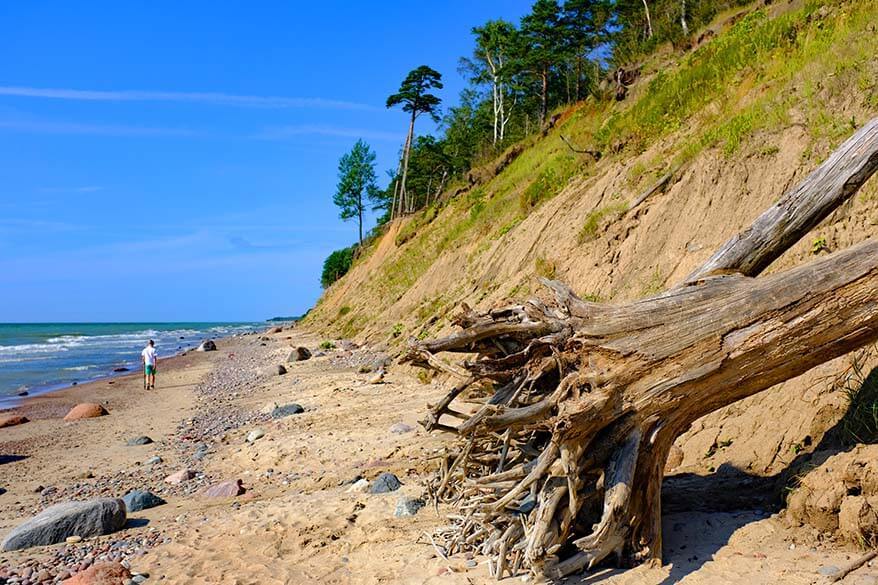
24. Vilnius TV Tower
I was debating whether to include Vilnius TV Tower in this list of the best places to visit in Lithuania. But, since it has historical significance and offers some of the best views in Vilnius, I decided that it’s worth a mention.
On the 13 of January 1991, Vilnius TV Tower was at the center of a bloody independence fight against the Soviets. This was one of the last struggles that finally tore the USSR apart. Sadly, 14 Lithuanian people were killed here by the Soviet tanks that day. This is one of the darkest chapters of our recent history and I still remember the events of that day as if it was yesterday.
With over 326m in height, Vilnius TV Tower is the tallest building in Lithuania and the 8th tallest in Europe. You can visit an underground gallery, the Fight for Freedom Museum, and also take an elevator to the 165m height from where you get an amazing panorama of Vilnius and its wide surroundings.
TIP: Have lunch or dinner at the rotating Paukščių takas (Milky Way) restaurant and enjoy the 360° views with the whole city of Vilnius at your feet.
PRO TIP: If you are visiting Lithuania in the summer season and are looking for something unique to do in Vilnius, check out the new Edge Walk experience !
Practical information: The TV Tower is open for visits daily. More information on their website .
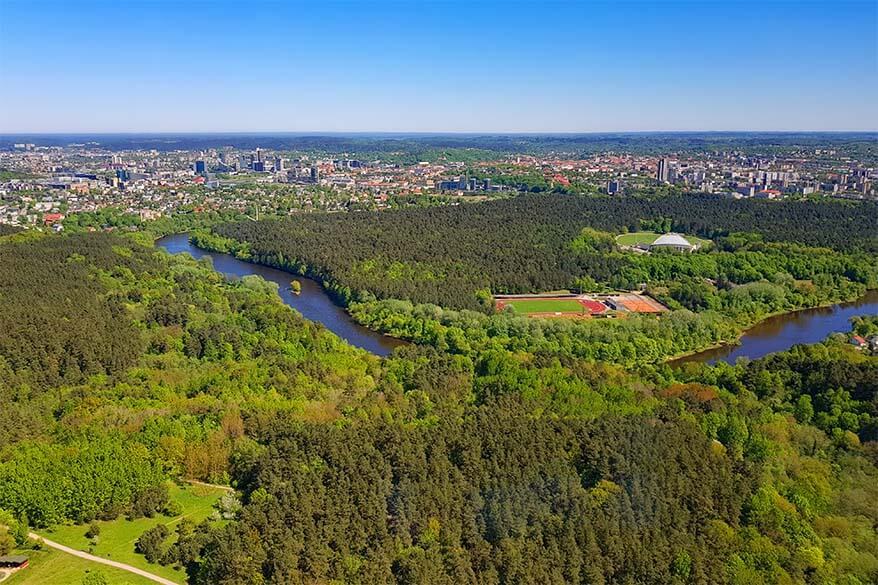
25. Lakes, Rivers, and Forests
With over 6000 lakes, more than 800 rivers, and over 33% of the territory covered by forests, Lithuania is a paradise for those who love simple, untouched nature .
It will come as no surprise that Lithuanians massively leave cities and head to nature every weekend. Kayaking, swimming, fishing, berry- and mushroom picking are just some of the favorite pastimes for Lithuanian people. In winter, people go walking, cross-country skiing, skiing, and also ice-fishing. No matter the season, Lithuanians love the outdoors.
If you are looking to explore Lithuania deeper, do as the locals do, and head to one of the many forests and lakes.
TIP: If you don’t know where to start, here you can find a selection of organized kayak tours all over Lithuania . If you are visiting Lithuania in summer, there is no better way to experience our nature than by going kayaking!
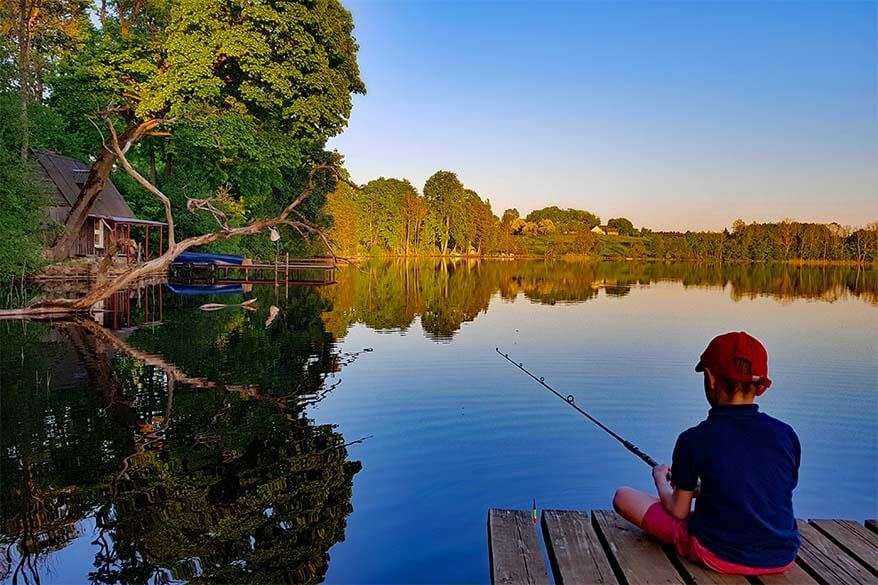
26. Christmas Trees
Lithuanian Christmas trees deserve a special mention. They are so nice and so special that it’s really worth it to (re-) visit Lithuania in winter, just to see the Christmas trees.
The most unique and spectacular Christmas trees can be found in Cathedral Square and the Town Hall Square in Vilnius and also at the Town Hall Square in Kaunas.
But also smaller towns often have the most beautiful Christmas decorations.
LEARN MORE: Vilnius Christmas Trees and Christmas Markets

27. Lithuanian Food
No list of the best things to do in Lithuania would be complete without mentioning traditional Lithuanian food . If you are traveling to Lithuania, make sure to taste at least some of our local specialties.
Lithuania has many traditional dishes that you won’t find anywhere else in the world. The most famous and typically Lithuanian are our potato dishes, such as cepelinai , kugelis , bulviniai blynai , and vėdarai .
Other favorites include koldūnai (sort of dumplings), lietiniai blynai (filled pancakes), šaltibarščiai (cold beetroot soup), kepta duona su česnaku (fried bread with garlic), baravykų sriuba (boletus mushroom soup), and also non-alcoholic drinks such as kisielius or gira .
TIP: If you try just one typical Lithuanian dish, make it cepelinai . They are a sort of potato dumplings, somewhat comparable to the Italian gnocchi in taste and structure. However, cepelinai are much bigger and they are stuffed with either meat or curd filling. They are usually served with a very heavy and fat spirgučiai sauce, but if you are not a fan of fat food, I recommend asking for sour cream instead.
LEARN MORE: Lithuanian Food: Best Traditional Dishes to Try in Lithuania
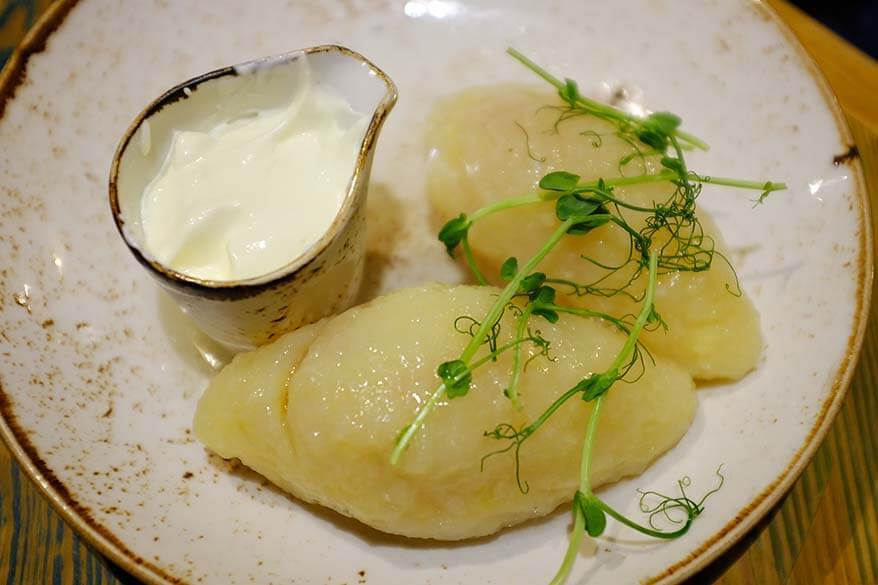
Even More Interesting Places to See in Lithuania
As already said, in this list, I only included the best places to visit in Lithuania that I think are worth your time the most. If you have more time, you might want to consider the following Lithuania destinations as well:
- Kernavė – the former medieval capital of Lithuania and an archeological site close to Vilnius.
- Kėdainiai – one of the oldest towns in Lithuania.
- Birštonas – resort and SPA town surrounded by beautiful nature.
- Labanoras regional park tower – 2nd highest observation tower in Lithuania with amazing views of the area.
- Panemunė Castle – one of the most authentic castles in Lithuania (17th century).
- 9th Fort of the Kaunas Fortress – a museum and memorial for the Holocaust victims.
- Užutrakis Manor – restored 19th-century manor.
- Paneriai Memorial Museum – Holocaust memorial in a forest where tens of thousands of Jews lost their lives.
- Ventė Cape – headland of Nemunas Delta and a bird-watchers paradise.
- Stelmužė Oak – with over 1,000 years, the oldest tree in Lithuania and one of the oldest in Europe.
Needless to say, there is so much more to see and do in Lithuania. But most tourists never visit even half of these places… So if you cover even just a small part of the above, you’ll have a much better idea of what Lithuania is truly like.
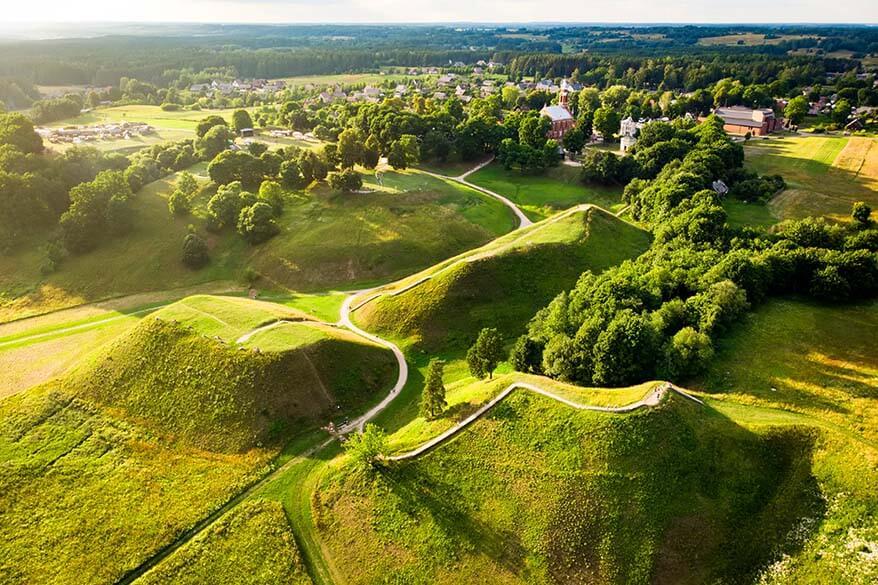
Map of the Best Things to Do in Lithuania
In order to help you get a better idea of where all these points of interest and attractions are located, I created this map of the best places to see in Lithuania .
The purple color indicates the main landmarks and places mentioned in this article. The orange color is for the other nice points of interest that are mentioned separately here above. In order to keep a more clear overview of the main landmarks in Lithuania, I didn’t indicate all the smaller places that are worth visiting in each of the mentioned towns.
How to use this map: Use your computer mouse (or fingers) to zoom in or out. Click on the icons to get more information about each place. Click the arrow on the top left corner for the index. Click the star next to the map’s title to add it to your Google Maps account. To view the saved map on your smartphone or PC, open Google Maps, click the menu and go to ‘Your Places’/’Maps’. If you want to print the map or see it in a bigger window, click on ‘View larger map’ in the top right corner.
So, this is our list of the very best places to see and things to do in Lithuania. I sincerely hope that you found some new ideas in this article and that it has inspired you to explore Lithuania beyond the most popular places like Vilnius and Trakai.
If you have any questions about the places mentioned above, don’t hesitate to leave a reply below and I’ll try to help. Have you been to Lithuania and want to share your experience? Feel free to do so as well!
READ ALSO: Baltics Itinerary: how to see the best of Lithuania, Latvia, and Estonia in 2 weeks
If you found this post useful, don’t forget to bookmark it and share it with your friends. Are you on Pinterest? Pin these images!
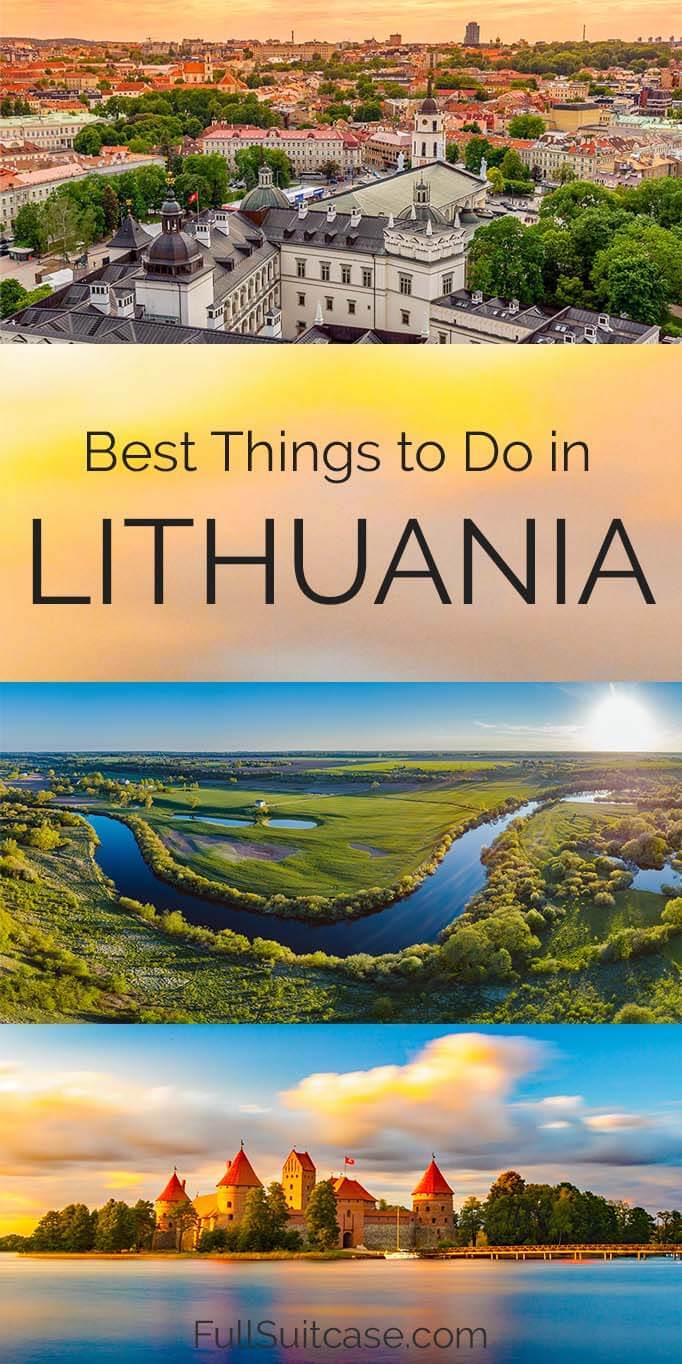
Featured image by Wide Wings/Shutterstock.com. All the other images by Jurga/FullSuitcase.com
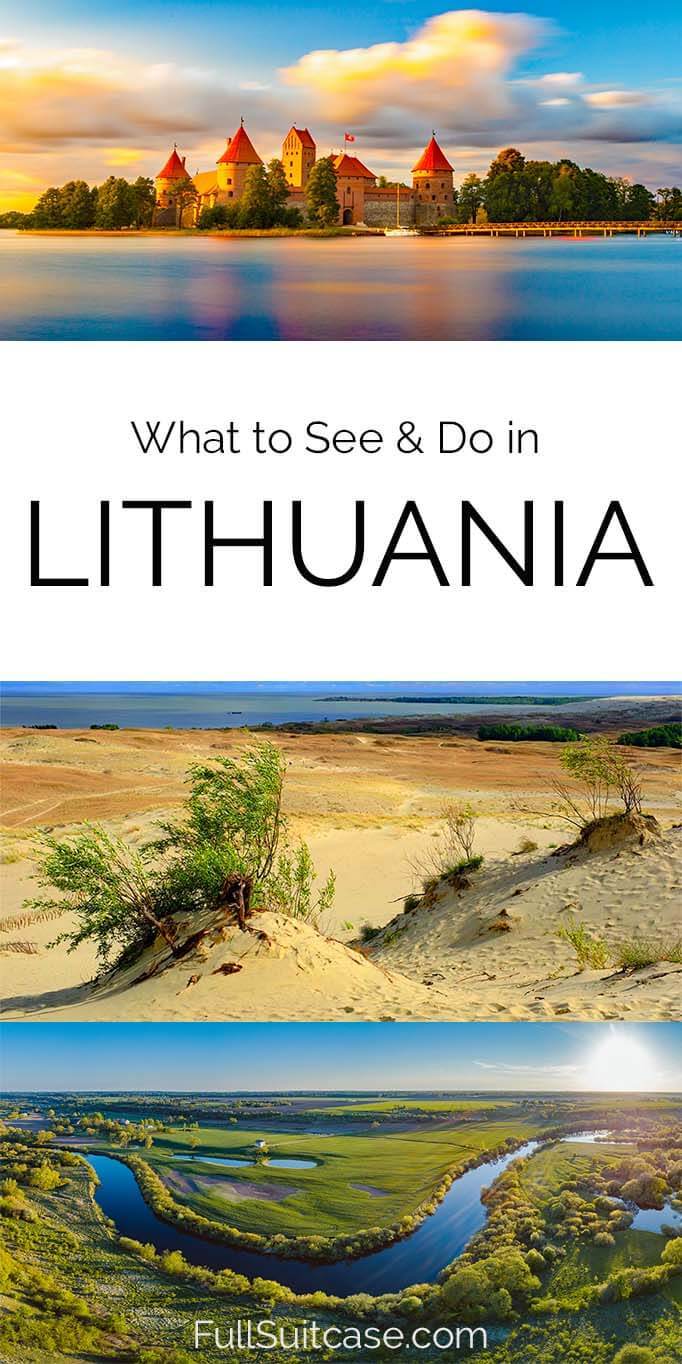
This site uses Akismet to reduce spam. Learn how your comment data is processed .
Monday 25th of March 2024
Really nice blog! We are coming by car in next July from Finland to Latvija. We stay a week in Trakai. We have been there 2019. Last time we came by plane. Now we want see more...I think we also drive daytrip to Druskininkai, We come from Riga to Trakai. From Trakai we drive to Daugavpils.
Sounds like a good plan; Lithuania is wonderful in the summer! Just beware that Trakai (especially the area around the castle) is very busy during the day. Have a great trip!
Gary Kasten
Thursday 14th of March 2024
This is such a wonder presentation. My wife and I are coming to visit. This all started many years ago when we met a gal by the name of Asta who was working in a german night club in Wisconsin Dells Wisconsin in the USA. We still maintain friendship so we are coming to your country. Asta is taking the week off to tour us around your country. She has suguested many thing she would like us to see. Now I haveto read more of your article to let Asta know of other things we might want to do, so thank you for all the information.
Friday 15th of March 2024
Glad to help, Gary, and have a great time in Lithuania!
Saturday 9th of March 2024
What a wonderful article! My husband and I are planning to ride a big loop via motorcycle from England encompassing the Baltics and Scandinavia in June and I have added many of these places to our "hopefully" list! Especially the bee keeping village and Druskininkai. I just love those beautiful little villages, we have nothing like them in Australia. Thank you for sharing these wonderful ideas!
Sunday 10th of March 2024
Sounds like a nice adventure, Georgie. Have a great trip!
Sunday 10th of July 2022
I am so excited to come across your blog and will be using it as a guide when I visit Lithuania in August. Do you recommend having a car to travel to these places - specially from the capital to the sand dunes? Also, do you recommend any healthy favorite restaurants that serve tradition food (not looking for fancy and more for authentic food)? We will be in Lithuania for 4.5 days.
Thursday 14th of July 2022
@Jurga, thank you so much for taking the time reply. Will definitely take your advice. Looking forward to the trip!
Wednesday 13th of July 2022
Hi Kanch, if you just have 4-5 days in Lithuania and want to travel all the way to the Curonian Spit from Vilnius, then yes, I definitely recommend hiring a car. Just be sure not to speed - Lithuanian police is usually very active, especially in the areas you'd least expect it. For restaurants, there are so many restaurants serving traditional Lithuanian food all over the country (even next to the main highways). Most of them are rather simple, low-key restaurants, just like Lithuanian dishes. The best way to find them is to simply ask for recommendations at your accommodation. They usually know all the best places nearby. I also always read the reviews on Google Maps - it helps to avoid disappointments. Have a great trip!
Larry Reibstein
Wednesday 21st of April 2021
Hi -- Just discovered this marvelous blog and this article is wonderfully timely as we're planning a trip to Lithuania in 2022, Covid willing. I have a specific question and hope I'm not imposing on you. We recently discovered, through my daughter's hard work, that our family goes back to Kaunas (Kovno), your home town, with relatives found dating to 1774. I'm looking for resources either there, whom we could meet, or elsewhere that offers information on local Lithuanian ancestry and might have records we can dig into and further research. A scholar, a university office, a foundation of some sort or a government office, perhaps? Alternatively, are there travel agencies that focus on ancestry travel there? Thank you for any guidance and again sincerely hope I'm not imposing on your busy days!
Friday 23rd of April 2021
Hi Larry, I was just reading some articles in Lithuania and there are apparently some companies that specialize in this kind of research, but I have no idea how they work and what it costs, or if you can find any free info. To start with, you could try the official archives and otherwise, I think you'll just have to search online for companies/people that might be able to help you. I don't have any personal experience with this and I don't know anyone who does that. I found a websites that seems to be offering this kind of service - see True Lithuania. Also this website seems to have quite some useful info. Hope this helps, Larry, and I hope you can make that trip happen next year!
Best things to do in Lithuania
Book your individual trip , stress-free with local travel experts
Select Month
- roughguides.com
- best-things-to-do-in-lithuania
Plan your tailor-made trip with a local expert
Book securely with money-back guarantee
Travel stress-free with local assistance and 24/7 support

written by Andy Turner
updated 27.04.2023
Lithuania is a vibrant, quirky and largely unspoiled country, which has undergone rapid change since becoming independent from the Soviet Union. You’ll find lively nightlife, both in Vilnius and on the coast, ample grounds for outdoor pursuits in the national parks and several great beaches, as well as a stark contrast between city life and rural simplicity. Here's our pick of the best things to do in Lithuania.
1. Vilnius Old Town
2. vilnius tv tower, 3. trakai castles, 4. aukstaitija national park, 5. staying in palanga - one of the best things to do in lithuania for a beach holiday, 6. curonian spit and kursiu nerija national park, 7. hill of crosses, 8. kaunas castle & old town, 9. pažaislis monastery, 10. anykščiai treetop walking path, 11. lithuanian sea museum, 12. the hill of witches, 13. spa towns, 14. grutas park, 15. lithuanian food.
The information in this article is inspired by The Rough Guide to Europe on a Budget , your essential guide for visiting Europe.
Travel ideas for Lithuania, created by local experts

10 days / from 1053 USD
Sustainable Baltic Capitals
Enjoy introductory tours and ample free time to suit your interests. In ten days, relish local accommodations, UNESCO town walks, quirky neighborhoods, and private guide tours, delving into the region's history and customs. Start your Baltic States adventure now for independent exploration.

16 days / from 3996 USD
Ultimate Baltics
Uncover both renowned attractions and hidden gems across the Baltic States and Southern Finland. Explore UNESCO sites, serene villages, and sandy dunes. From the capital cities of Vilnius, Riga, Tallinn and Helsinki to the beaches in Klaipeda in Pärnu.

10 days / from 1674 USD
Baltic Highlights
Witness unspoiled landscapes and vibrant capitals. From Vilnius to Riga and Tallinn, move all the way up to Helsinki. Along the way, visit national parks like Laheema and castles like the Trakai castle. Private transfers and unique accommodation choices are included.
A cosmopolitan city with an ancient, Baroque heart, Vilnius is relatively compact and easy to get to know, with a variety of inexpensive attractions and a lively nightlife. Its numerous churches and palaces jostle for space in the Old Town’s winding cobbled alleys, where glitzy restaurants stand incongruously beside dilapidated old buildings.
At the centre of Vilnius, poised between the medieval and nineteenth-century parts of the city, is Cathedral Square (Katedros aikštė). The Old Town, just south of Cathedral Square, is a network of narrow, often cobbled streets that forms the Baroque heart of Vilnius, with the pedestrianized Pilies gatvė cutting into it from the southeastern corner of the square.
To the west of this street is Vilnius University, which was constructed between the sixteenth and eighteenth centuries around nine linked courtyards that extend west to Universiteto gatvė. Within its precincts is the beautiful Baroque St John’s Church (Šv. Jono bažnyčia), founded during the fourteenth century, and taken over by the Jesuits in 1561.

St Johns Church, Vilnius, Lithuania © Tom Roche/Shutterstock
The Vilnius TV Tower was designed by a Lithuanian engineer V. Obydovas. It was originally built to provide broadcasting in the Lithuanian SSR, then part of the Soviet Union. Today it continues to function as a Lithuanian broadcasting tower for several Lithuanian stations. The TV tower is one of the tallest buildings in Lithuania and one of the tallest TV towers in all of Europe.
When considering things to do in Lithuania, visitors to Vilnius should not miss the TV Tower, as its observation deck provides a stunning panoramic view of the city and its surroundings.
Where to stay in Vilnius:
- For an Old Town location: Old Town Trio
- For price and quality: Art City Inn
Find more accommodation options to stay in Vilnius

Vilnius Tv Tower, Lithuania © Pixabay
Around 30km west of Vilnius lies the little town of Trakai. Here one finds a mix of concrete Soviet-style buildings merged with the wooden cottages of the Karaite community, Lithuania’s smallest ethnic minority. Standing on a peninsula jutting out between two lakes, Trakai is the site of two impressive medieval castles and makes for a worthwhile day trip from the capital.
Once you arrive, follow Vytauto gatvė and turn right down Kėstučio gatvė to reach the remains of the Peninsula Castle, now partially restored after having been destroyed by the Russians in 1655. Skirting the ruins along the lakeside path, you will see the spectacular Island Castle (Salos pilis), one of Lithuania’s most famous monuments, accessible by two wooden drawbridges and preceded by souvenir and rowing-boat rental stalls.

Island Castle, Lithuania © Lukas Jonaitis/Shutterstock
Aukštaitija National Park (Aukštaitijos nacionalinis parkas), has an area of 4,530 sq km (1,750 sq miles) of which 15 per cent is lakes. Around three-quarters of the land is forested, and there is a great diversity of flora and fauna, with more than 700 species of plants, 100 species of mammals and 78 species of fish. Canoeing and other water activities are popular, and there are many nature trails.
The best way to explore the park is to start in the tiny hamlet of Palūšė, where there is a handsome 19th-century wooden church and belfry. The park has an additional administrative centre at Meironys. Perhaps one of the quirkiest museums in the country is the folksy Bee-keeper’s Museum in the village of Stripeikiai. There are various hives in the shapes of pagan gods, along with woodcarvings of bee-related deities.

Aukataitija Nsational Park, Lake Ukojas © Pixabay
Related articles from the blog

Around 25km north of Klaipėda, Palanga is Lithuania’s top seaside resort – and party central in the summer. Palanga’s biggest attraction is its white, 18 km-long sandy beach. Throughout the summer months , it hosts several outdoor all-night music events. The wooden pier, jutting into the sea at the end of Basanavičiaus gatvė is where families and couples gather to watch the sunset.
From the beach, head east along pedestrian Basanavičiaus with the rest of the human tide, past the street musicians and vendors, countless restaurants, arcade games, amusement park rides and amber stalls. You can dance until morning at one of the clubs on Vytauto gatvė, the main street, or on S. Darius ir S. Girėno gatvė, which leads off Vytauto gatvė to the beach.
Where to stay in Palanga:
- For a first-class holiday: Grand Baltic Dunes
- For families: Žilvinas Hotel
Find more accommodation options to stay in Palanga

Palanga Beach, Baltic Sea, Lithuania © A. Aleksandravicius/Shutterstock
Shared between Lithuania and Russia’s Kaliningrad province, the Curonian Spit is a 98km sliver of land characterized by vast dunes and pine forests. Much of the Lithuanian stretch is covered by the Curonian Spit National Park (Kursiu Nerija National Park). Some of the areas can be seen as a day trip from Klaipėda, though it warrants a stay of several days to soak up the unique atmosphere.
It has no rivers, a few lagoons and along its shore lies a chain of manmade beaches and dunes. A bird’s-eye view is a wonderful picture of white, sandy hills against a dark blue background. Curonian Spit was awarded UNESCO World Heritage Site status in 2000.

Exploring the Curonian Spit is one of the best things to do in Lithuania for a unique experience © Birute Vijeikiene/Shutterstock
Up on a hill, 12km north of the town of Šiauliai, 188km northwest of Vilnius and 170km east of Klaipėda, lies the Hill of Crosses (Kryžių kalnas). This is an ever-growing, awe-inspiring collection of more than 200,000 crosses, statues and effigies. There are many myths surrounding the Hill’s origin, some dating back to pagan times.
The Rough Guides to Lithuania and related travel guides
In-depth, easy-to-use travel guides filled with expert advice.

The most plausible is that it was to commemorate rebels killed in nineteenth-century uprisings against the Russian Empire. In the Soviet era, they were planted by grieving families to commemorate killed and deported loved ones and kept multiplying despite repeated bulldozing by the authorities. Today, crosses are often planted to give thanks for a happy event in a person’s life.

Hill of Crosses, Lithuania © Sergei25/Shutterstock
Among the top things to do in Lithuania, a visit to Kaunas is a must. Located 98km west of Vilnius and easily accessible by bus or rail, Kaunas is considered by many Lithuanians as the true heart of their country, serving as Lithuania's second city. The most picturesque part of Kaunas is the Old Town (Senamiestis), centred on Town Hall Square (Rotušės aikštė), on a spur of land between the Neris and Nemunas rivers.
Occupying the northeastern shoulder of the square, the red-brick tower of Kaunas’s austere cathedral stands at the western end of Vilniaus gatvė. Predating the cathedral by several centuries is Kaunas Castle, whose scant remains survive just northwest of the square.
Little more than a restored tower and a couple of sections of the wall are left, with temporary art exhibitions inside. However, in its day the fortification was a major obstacle to the Teutonic Knights.

Kaunas old town © Pixabay
Some 7km (4 miles) to the southeast of the Kaunas town centre is Lithuania’s Baroque gem, the Pažaislis Monastery (Pažaislio vienuolynas). Isolated in the countryside above a dam on the River Nemunas, it was built in the 17th century with orchards and gardens that are still cultivated. Entrance is through the Holy Gate, and the church has a fine 45-metre (150ft) cupola, on the inside of which is a painting of the Virgin Mary.
The marble and oak interior is enriched with frescoes restored under the aegis of the Čiurlionis Museum, which became responsible for it in 1966. Built for the obscure Camaldolese Order, it was briefly populated by Lithuanian-American nuns in the early 20th century, and again in 1992. The huge reservoir beside the monastery is called the Kaunas Sea (Kauno Marios) and is popular for recreation.
Where to stay in Kaunas:
- For quirky vibes: Very Bad Hootel
- For couples: Moxy Kaunas Center
Find more accommodation options to stain in Kaunas

Pazaislis Monastery among the beautiful nature in Kaunas, Lithuania © Shutterstock
Visiting the Anikščiai Tree Walking Trail is one of the best things to do in Lithuania for outdoor activities. This unique wooden construction allows visitors to walk through the treetops of the forest and enjoy nature from a new perspective.
The Treetop Walking Path is built as suspended wooden bridges, stairs and viewing platforms through the forest. The path offers amazing views of the surroundings of the forest, including the Anikščiai pine forest and the Šventoji River valley. In addition to natural views, visitors can also observe Lithuanian wildlife up close, including various animal species.

Laju Takas, tree-canopy trail located in Anyksciai, Lithuania © Shutterstock
The Lithuanian Sea Museum and Dolphinarium is home to several seals, penguins and dolphins. The Dolphinarium has 40-minute-long dolphin shows, especially enjoyable for younger visitors. Nearby is Klaipėda Yacht Club, one of the venues of Klaipėda’s annual Sea Festival.
The museum is located in a former 19th-century fortress that was used to defend the port of Klaipėda. Today, the museum's exhibitions cover a wide range of subjects related to marine life, marine history and sailing.

Lithuanian Sea Museum © Shutterstock
Also of note is Witches’ Hill (Raganų kalnas), which was established in the 1980s by a group of local sculptors. This large wooden sculpture park is filled with fabled figures – such as the main pagan god, Perkūnas, and Neringa, a local girl who became a giant and helped sailors in trouble – make a pleasant excursion through the pine trees.
Visiting this spot is one of the best things to do in Lithuania with children, as some of the sculptures double as slides and see-saws. Look for the sign on your right as you are heading south through Juodkrantė town. A walk beside the lagoon path with its stone sculptures provides a pleasant contrast.

The Hill of Witches - outdoor sculpture gallery in Lithuania © Shutterstock
There are several spa towns in Lithuania which are popular tourist destinations for those seeking relaxation, recreation and treatments. The most popular spa towns are Druskininkai and Birštonas.
Druskininkai is located in the southern part of Lithuania and is one of the most famous spa towns in the country. It is not only famous for its mineral waters and mud treatment, but also for its modern spa resorts, water parks and entertainment activities that make a visit to this town one of the best things to do in Lithuania for the whole family.
Another equally popular spa town in the country, Birstonas is situated in central Lithuania, next to the Nemunas River. It is also known for its mineral springs, mud spa and natural attractions, which include the neighbouring Nemunas Loops Regional Park.
Where to stay in Druskininkai and Birštonas
- For the location in Druskininkai: Galia
- For natural surroundings: Pušynė
Find more accommodation options to stay in Druskininkai and Birštonas

An Orthodox church at the centre of Druskininkai, Lithuania © Shutterstock
Tucked in the woodlands around Druskininkai, which are abundant with mushrooms in autumn, there are some ancient farmsteads: at Latežeris, for example, just to the east. Nearby is the small village of Grūtas and its famous Grūtas Park of Soviet Sculptures (Grūto Parkas).
A controversial and rather startling place, it has collections of former Soviet leaders and various Communist bigwigs acquired from the scrap heaps of the early independence years.

Grutas Park, Lithuania © Iryna Kuchma/Flickr under CC BY 2.0 license
Lithuanian cuisine is based on traditional rural fare. Typical starters include marinated mushrooms (marinuoti grybai), herring (silkė) and smoked sausage (rukyta desra) along with cold beetroot soup (saltibarsčiai). A popular national dish is cepelinai, or zeppelins – cylindrical potato dumplings stuffed with meat, mushrooms or cheese.
Others include potato pancakes (bulviniai blynai), and koldųnai – boiled or fried dumplings with meat or mushroom filling. Popular beer snacks include deep-fried sticks of black bread with garlic (kepta duona) and smoked pigs’ ears. Pancakes (blynai, blyneliai or lietiniai) come in a plethora of sweet and savoury varieties.

Marinated herring with new potatoes @ JAri J/Shutterstock
Europe presents an irresistible challenge to the budget traveller. Explore our list of 20 best places to visit in Europe on a budget and start planning your trip.
Visiting Lithuania is a truly unforgettable experience. For more inspirational travel tips check our Rough Guide books .
If you prefer to plan and book your trip to Lithuania without any effort and hassle, use the expertise of our local travel experts to make sure your trip will be just like you dream it to be.
We may earn a commission when you click on links in this article, but this doesn’t influence our editorial standards. We only recommend services that we genuinely believe will enhance your travel experiences.
- Nature & Wildlife
- Authentic Experiences
- History Culture Heritage
- Inspiration
- See & Do
- Where to stay
Planning your own trip? Prepare for your trip
Use Rough Guides' trusted partners for great rates
Travel advice for Lithuania
From travel safety to visa requirements, discover the best tips for traveling to Lithuania
- Culture and Etiquette in Lithuania
- Eating and drinking in Lithuania
- Getting around Lithuania: Transportation Tips
- How to get to Lithuania
- Sports and Outdoor activities in Lithuania
- Best time to visit Lithuania
Find even more inspiration for 56 here
Ready to travel and discover lithuania, get support from our local experts for stress-free planning & worry-free travels.
- Travel advice

Top 10 Must Visit Places in LITHUANIA: Insider’s Guide
Lithuania is an awesome small evergreen country in Eastern Europe with many beautiful and rather unexpected natural and cultural sights worth visiting. Here I will walk you through a list of my favorite must-visit places in Lithuania .
My home country Lithuania is probably the least-known place in Europe. Many people are aware of our sister country Latvia and its capital Riga, but only a few know about the capital Vilnius or Lithuania. Nonetheless, this small Baltic jewel scores points with fantastic nature, majestic churches, medieval castles, charming capital Vilnius, unique old villages, and even some spooky places like the Hill of Crosses in Siauliai. That being said, Lithuania is a true definition of an off-the-beaten-path destination in Europe.
If you landed on this post you are most likely looking for things to do in Lithuania. In this insider’s guide to places to visit in Lithuania, you will find a mix of wonderful cultural, historical, and natural attractions. I also share some useful tips for each location.

Disclaimer: This post contains affiliate links, which means that I may earn a commission if you make a purchase by clicking a link (at no extra cost to you). This helps to keep my blog running and growing by creating more awesome free content for you.
The best 10 places to visit in Lithuania
1. curonian spit (kuršių nerija).
Let’s start with my absolute favorite and the most beautiful natural must-visit place in Lithuania- a UNESCO-listed natural wonder called Curonian Spit (Kuršių Nerija in Lithuanian). It is like the desert of Lithuania half of which is covered in forests.

What is Curonian Spit exactly?
Curonian Spit is a 0.4-3.8 km width sand dune peninsula stretching for almost 100 KM from Klaipeda county in Lithuania to Russian Federation. It is surrounded by the Baltic Sea from one side and Curonian Lagoon from the other making it a magnificent natural formation. Half of the peninsula belongs to Lithuania and has a status of a Natural Park.
It has always been this magical paradise-like piece of land that has been threatened by unforgiving natural forces- never-ending strong winds and furious Baltic Sea waves. Only continuous stabilization and reforestation projects led by restless nature-loving people helped to combat the erosion.
Curonian spit has an incredibly unique but vulnerable nature like nowhere else in the country. It is also home to very old fishermen’s settlements dating back to the 10 th -11 th century. Therefore, the cultural value of the area is of high importance as well. Harmonious coexistence between humans and nature makes this place beyond special. Being at threat of extinction both due to natural forces and human intervention, Curonian Spit has been saved since massive protection works began in the 19th century. Now the lands and cultural heritage are very well maintained and protected by the Government of Lithuania.
Nowadays, many ancient fishermen’s villages have been turned into small guest houses and are welcoming visitors during the summertime. Nida is the most popular resort town attracting thousands of visitors during the summer months not only from Lithuania but also from Germany and other neighboring countries.

How to get to Curonian Spit?
You can reach Curonian Spit by ferry from Klaipeda town in West Lithuania. There are two ferry stations in Klaipeda- an old one and a new one.
Passenger ferries depart from the old ferry terminal in Klaipeda port just north of the city center. They go to Smiltyne and are quite frequent. You can check the schedule for the old ferry online .
If you arrive by car, you must make your way to the new terminal, which is a bit further south of the city of Klaipeda. The schedule as well as location information is available here on the terminal website.
Note: there is an ecological fee for entering Curonian Spit national park by car. You have to pay it if you are willing to drive beyond Juodkrante village which is around 14 km away from the ferry. It is 30 EUR per car during the high season (beginning of June- end of August) and 5 EUR per car during the low season.
2. Vilnius Old Town
If you are traveling to Lithuania, its capital Vilniuswith a petite historical old town is definitely a place to visit in Lithuania.
“Vilnius is the G-spot of Europe- nobody knows where it is but when you find it, it is amazing.” That is a line from the tourism campaign that made the capital of Lithuania famous around the globe. And it is well worth the limelight. Being an underdog European capital for many years, Vilnius finally steps its game up in the tourism sector.

Having one of the largest UNESCO-listed old towns in Northern Europe, Vilnius invites you to the maze of cozy cobblestone streets lined up with outdoor cafes. A cocktail of the best old architecture is mixed with Baroque, Gothic, Renaissance, and even Medieval ingredients that will leave you dizzy (in a good way). Green parks can be found all around the old center and are perfect spots to relax.
The best way to explore Vilnius’s old town is on foot. Many people choose cycling around the city as an alternative faster way to get from place to place. Beware of pedestrians if you decide to jump on a bike as many streets are narrow. You can also rent one of those street pay-as-you-go bicycles available to pick up in Old Town.
I would suggest starting your walking or cycling tour around Vilnius’s old town at the very heart of it- Cathedral Basilica in Cathedral Square. Although you can walk the old town part in as little as a couple of hours, spare yourself a good half a day at least to enjoy Vilnius at a slow pace.
3. Trakai and its island castle
Trakai is a small historical town built on lakes with its gorgeous island castle. Only 28 km from Vilnius city center, it is a perfect half-day nature escape with a fair amount of cultural sights and outdoor activities.
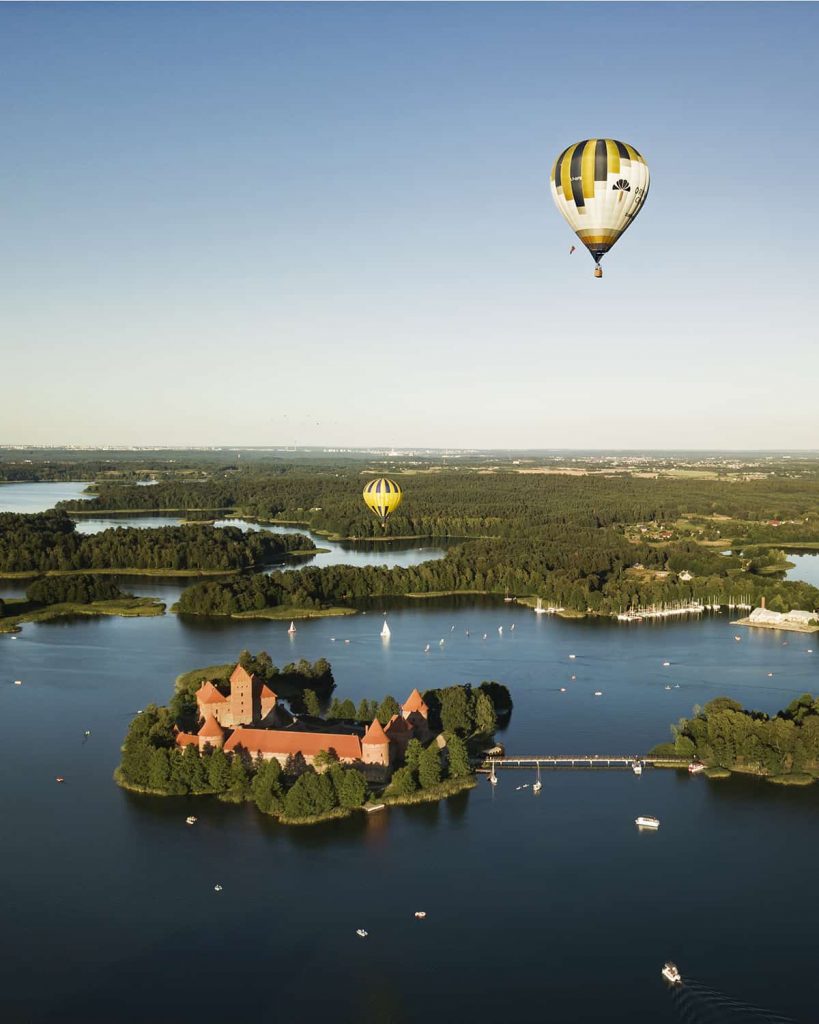
Trakai is an absolutely majestic place that is a must-visit when traveling in Lithuania. Here is a list of a few exciting things to do in Trakai:
- Visit the spectacular medieval castle built on the island at the heart of Trakai town.
- Go kayaking, stand up paddling, or take a boat tour around Galve lake to enjoy 360 degrees views of Trakai castle.
- Swim in the lake. With over 200 hundred super clean water lakes to choose from, Trakai is a perfect beach day out in summer.
- Get on an air balloon- one of the most beautiful views you would ever see from above. Tip- go at a sunset for the best experience or at sunrise to catch misty views.
- Taste traditional pastry “kibinai” with homemade kvass- this is a very specific food for Trakai town. I suggest Senoji Kibinine or one of the homemade spots that you will come across in the town for an authentic experience.
4. Kernave- The First Capital of Lithuania
Kernave is referred to as the Lithuanian Troy. It is one of the most beautiful spots in the region often overlooked by foreign travelers. This UNESCO inscribed little town is the medieval capital of The Grand Duchy of Lithuania. It has an archeological site that holds a history of thousands of years- a real treasure-trove for Lithuanian archeologists.
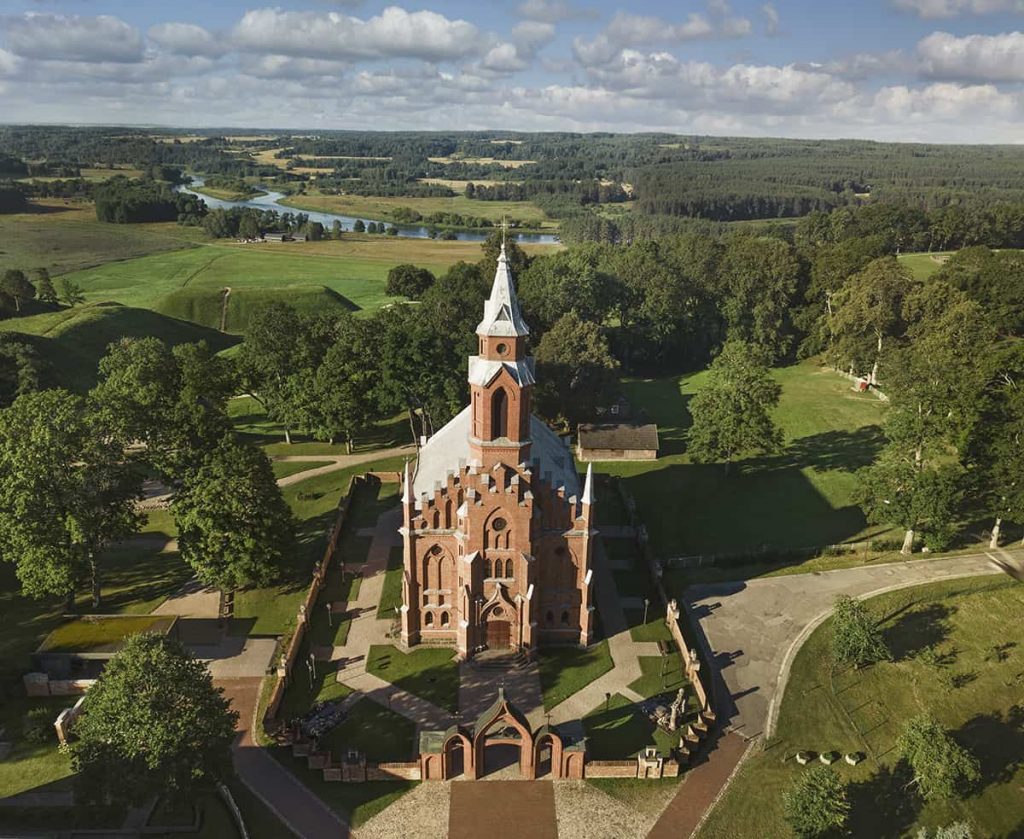
Kernave invites you to discover Lithuanian ancestry. It is a very mysterious place, especially during the misty mornings. The highlight of the scenery is five hill-fort mounds on the legendary Pajauta Valley near the banks of river Neris. Those picturesque mounds guard the remains of the last European pagan capital.
Although ancient settlements were destroyed back in 14 th century, a replica of the 13 th century housing complex was re-created for educational purposes.
One of the most important political and economic centers during the history of pagan Lithuania, Kernave is a symbol of statehood. With its many legends and stories, the town of Kernave has a very special aura around it.
How to get to Kernave?
Situated around 35km north of present capital Vilnius, Kernave is easily reachable either by public bus or a car.
By car from Vilnius, take the A1 or A2 motorways, and then the 108 or 116 roads. By bus, go to the station’s platforms 10 or 11. Busses to Kernave run about six times a day.
Things to do in Kernave
Apart from exploring the mounds at Pajauta Valley and enjoying the glorious nature, there are a few other things you could do in the area. For those of you into history, there is a museum dedicated to this special place. Also, the before mentioned open-air museum of the old settlements of Kernave.
If you are more into something adventurous, you can even go on a 1 or 2-day kayak tour from Vilnius to Kernav e. Or sign-up for annual ultra-marathon run for 84km from Vilnius to Kernave .
I would highly recommend visiting Kernave early in the morning while the town is still sleeping. If you are lucky, you might also catch the fog which adds up to the overall atmosphere.
If you are short on time and keen on informative local tours, I would recommend checking out those highly rated guided activities in Vilnius, Trakai, and Kernave. They can be easily booked online through GetYourGuide website links below.
5. Baltic Sea Coast & Dutchman’s Cap
You will love Lithuania’s Baltic sea coast for its unique scenery and wilderness. Imagine the sea meeting the forest at a 20 meters cliff. It makes a kind of unusual coastal view, doesn’t it?
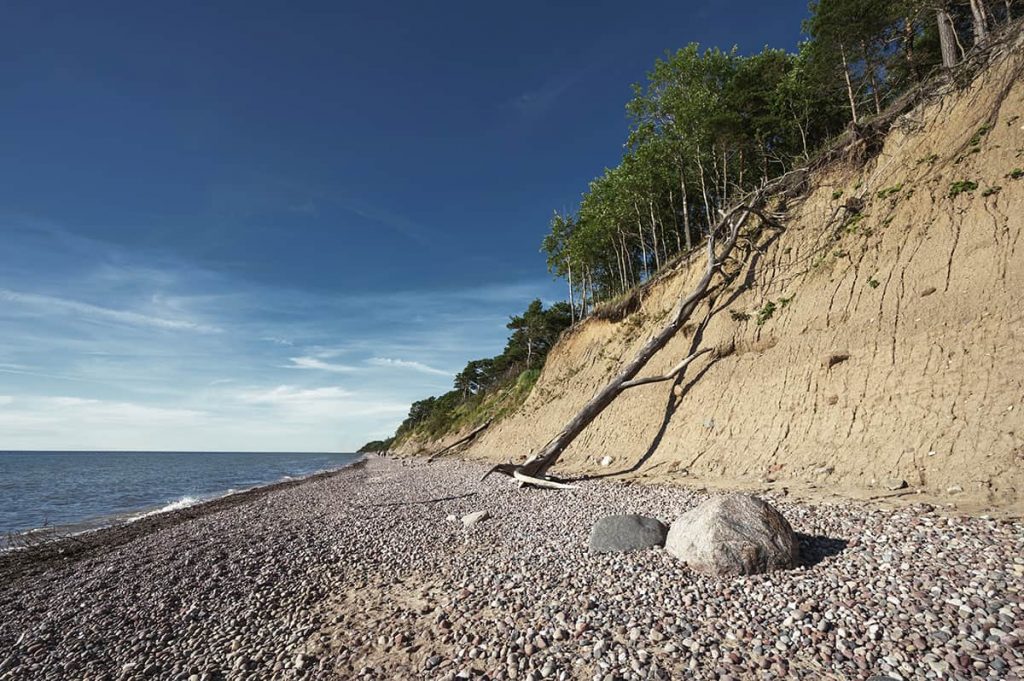
Baltic Sea coast is rated as one of the best in Europe. Some of the most amazing natural spots are located in the Seaside Regional Park of Lithuania, with Dutchman’s Cap and beaches between Karkle and Giruliai villages being the highlights of the area.
Karkle village is the administrative center of the Seaside Regional park and ethnocultural reservation. It is one of the oldest and biggest historical coastal settlements dating back to the 15 th century. Around 3km south of Karkle you will find the cliff of the Dutchman’s Cap – an impressive parabolic dune emerged 24.4 meters from the sea. Sadly, it gets eroded by the beat of the waves. The Dutchman’s Cap is overgrown by the oak and pine forest. It creates a contrast to the sandplain, which is stretched around. The hill used to serve as a guide for seamen and fishermen.
Today, there is a wooden path leading towards an observation deck built for visitors to enjoy the panorama from the cliff. You can also admire the view of the bluff from the sea level.
During the summer months you can relax at the unspoiled wild beach and swim in the Baltic Sea. It doesn’t get particularly warm but is very refreshing on a hot day.

How to get to the best beach spot on Lithuanian Baltic Coast?
Ideally, you would arrive in your own car. There are plenty of paid parking spots from which you can easily reach all the fantastic Seaside Park locations including the beach.
Public transport is also available from the nearby city of Klaipeda. There is a bus number 24 stopping at Dutchman’s Cap. You can find the bus schedule and a convenient stop on Klaipeda’s public transport website here .
As advised by locals, the best swimming and sunbathing locations are at a former Zuvedra (Seagull) recreational camp, Karkle, and Nemirseta villages. However, those places get pretty crowded to my own liking during the hot summer days. Therefore, I would suggest choosing the spot between Dutchman’s Hat and WWII bunker called Battery Memel Nord (this is currently a tourist attraction located on the beach).
I have marked the best part of the beach on the map bellow. You might find yourself completely alone on summer weekday.
Things to do at the Baltic Sea Coast of Lithuania
- Easy hiking: soak up the fresh air and enjoy the coastal views from the 15 meters height while taking footpaths through one of the most beautiful forests in Lithuania
Marked hiking trails were opened in 2020. After completing a section of the trail each time you will be motivated to move forward by the fun statements. “3km – you have burned one croissant, 6km- one burger, 12km – family size pizza” says illustrative information board on the trail.
Those are the 3 new hiking trails in the Seaside Regional Park starting in Karkle, passing Dutchman’s Cap, WWII fortifications in Giruliai, and finishing at lake Kalote. The total length of the trails is 12 km, with each section being 3.5-4.5 km lenght. You are welcome to choose any or all of the sections or mix them up as you go. There are red, blue, and yellow marked routes. Navigation is very easy.
I have done a part of the red section from Karkle to Dutchman’s Cap and then continued following the yellow trail (which is also a part of the Litorna route) up until the Memel-Nord battery (another spot of interest for visitors who are interested in post-war relicts). The total calories burned unknown but the beauty of the coastal nature is what keeps you wanting to explore further.
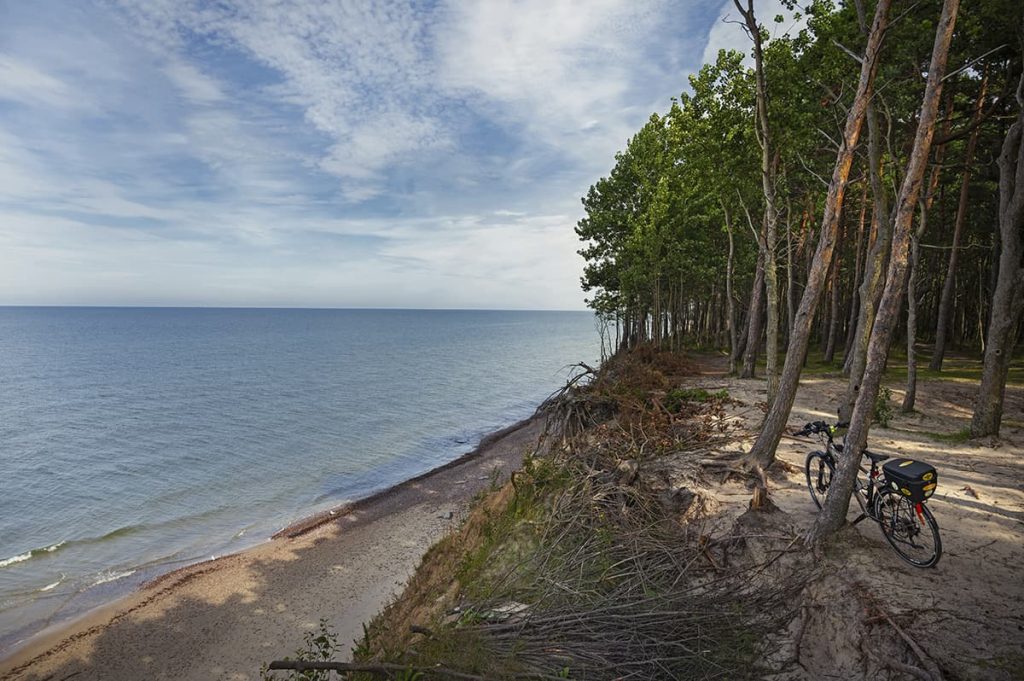
- Cycling from Palanga to Kaipeda
The bike path connecting two seaside towns Klaipeda and Palanga is a great way to actively spend a day in nature. With small detours from the main path, you can access many of the beautiful spots along the coast by cycling.
- Reward yourself with a filling late lunch
After a long day outside, there is nothing better than a wholesome Lithuanian meal. My place to go in the area is Žvejo Sodyba (Fishermen’s homestead) in Karkle village. It is a restaurant offering traditional Lithuanian cuisine in an old-style wooden fishermen’s house and a beautiful courtyard. Portions are huge and super delicious.
- Watch the sunset over the Baltic Sea
This is the most romantic and magical time at the West Coast in Lithuania offering one of the most beautiful sunset views you might ever see.
6. The Hill of Crosses near Siauliai town
The Hill of Crosses is a stoic mound holding the weight of over 300 000 crosses. I bet you have not seen anything like this before. Imagine an earthen hill in the middle of nowhere fully covered with various sizes of crosses and rosaries clinking against metal and wooden crucifixes, filling the air with eerie chimes. Sounds mysterious, doesn’t it?

Currently serving as a pilgrimage and historical sight in Northern Lithuania, the Hill of Crosses is in fact surrounded by legends, haunting stories and mystery.
The precise origin of the custom of leaving crosses is unknown, but it is believed to have started at the beginning of the 19 th century. The hill has been getting covered with crosses of different sizes and styles, rosaries and religious icons.
Historically, this place went through a lot: it survived medieval sieges by German crusaders, 19-th century uprisings by Lithuanians against Russian Tsar and finally the furious aggressor- Soviet Union. In the 1960-70s, atheist Soviets attempted to level the hill with the ground by bulldozing it and burning the crosses. Those multiple attempts failed just as did the Soviet Union, andThe Hill of Crosses is still standing embodying the peaceful resistance to Soviet occupation.
For some, it is a very sacred place that attracts pilgrims from all around the world, while others find it spooky. Whichever it may be, the Hill of Cross certainly does not leave anyone indifferent.
Is the Hill of Crosses worth visiting? Absolutely yes!
Due to its remote location, the Hill of Crosses is not on every traveler’s radar. It is 12km away from Siauliai town in Northern Lithuania and around 3 hours drive from the capital Vilnius.
To manage your expectations, the Hill of Crosses itself is just as big as a football field. Therefore, it won’t take long to explore it compared to the journey length. Not to put you off, it is a sight to never forget- the atmosphere there is very special. I believe that winter/autumn is the best time for visiting the Hill of Crosses because the absence of greenery adds up to the mysterious atmosphere. Foggy autumn mornings would do a great job of getting you a bit spooked out.
How to get to the Hill of Crosses?
The easiest way is to drive (I highly recommend renting a car in Lithuania, makes moving around much easier). Not a driver? No problem, public transport is also available, just takes longer. First, you would have to get to Siauliai town. Then, you will be able to find a local bus at Siauliai coach station that will bring you to the Hill of Crosses. Alternatively, you can take a taxi but obviously it will be a more costly option.
I would recommend including the Hill of Crosses as a stop when going to or from the Lithuanian seaside- it is a bit of a detour but you will see some pretty cool countryside on this road trip. It will be more engaging than flying at 130 km/h on a Vilnius- Klaipeda highway.
7. Lake Plateliai in Zemaitija National Park
A lake of seven islands – Plateliai is the most picturesque lake and an ultimate attraction in Zemaitija National Park. Located around 80 km away from the Baltic Coast, the lake makes it an awesome detour to North-West Lithuania. On the way, you will be surprised by the changing scenery of rolling hills as a contrast to mostly flat Lithuanian landscape.

Plateliai is the biggest lake in Zemaitija (Samogitia) region and 9 th biggest in Lithuania. Covering 12 square kilometers and reaching up to 49m in depth makes it is a perfect base for diving and underwater archeology. Therefore, the lake is not only a natural treasure but also an important cultural sight.
On the west bank of the lake, you will find a charming historical town Plateliai (the same name as the lake). This town of only 1000 inhabitants comes to life during the summer season when many locals arrive to enjoy water activities and relax in the nature.

Cycling around Plateliai
The major summer attraction around the lake is one of the most impressive cycling trails that starts and finishes at Plateliai town. It is an incredibly beautiful and well-maintained marked cycling trail that is both family-friendly and is also suitable for beginners.
Total length of the trail is around 25 km. There are plenty of possible stops on the way and points of interest to explore: Cold War Museum, Plateliai Manor Park, several viewpoints, small villages, Uzpelkiu mound, Litvaku memorial garden to name a few.
I highly recommend renting a bike for a few hours or even a day once in Plateliai town. Bike rental prices are very affordable in Lithuania (1 EUR per hour) and it’s one of the best ways to move around. Going at a slow pace, you will enjoy beautiful nature and fresh air. Don’t forget to stop for a swim in the clean and refreshing waters of Plateliai lake.
Also, you can find the tourist information center in Plateliai town where you can receive all the information about places of interest. All of them are reachableby cycling around the lake.
Alternatively, walking is also a great option to enjoy your stay at Plateliai. 4 km Seires educational trail is a perfect way to get familiar with the breathtaking landscape of Plateliai reserve. Part of the trail is suitable for people with mobility restrictions. The starting point coordinates of the trail are 21.827357, 56.048411.
As mentioned before, there are plenty of water sports activities: standup paddling, kayaking, yacht sailing, diving, water cycling. The best place to go for rentals would be Plateliai Yacht club.
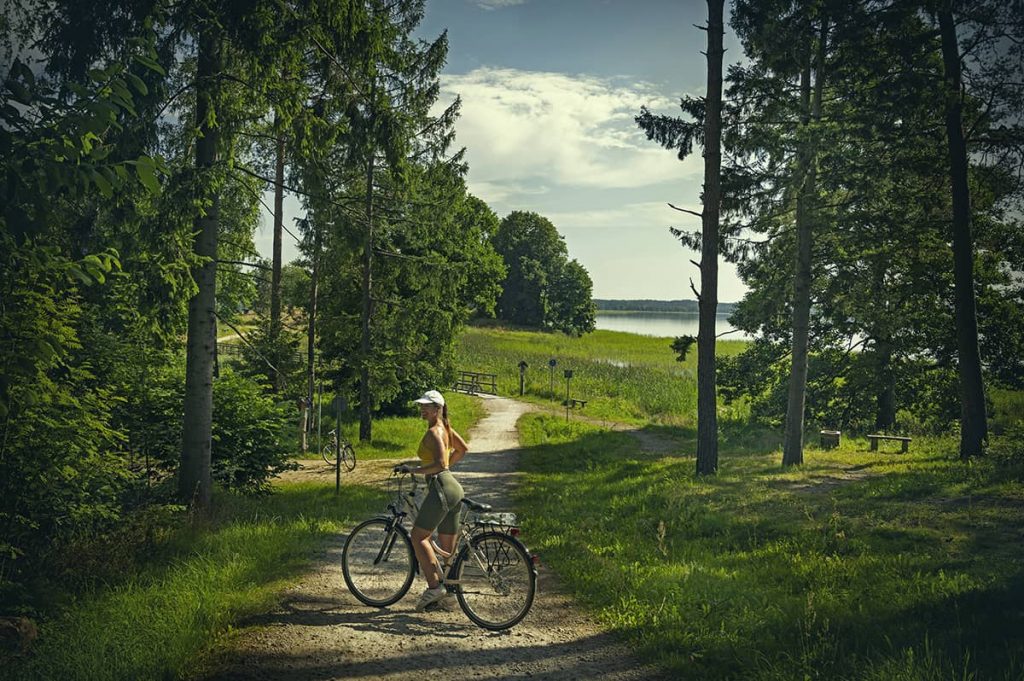
Where to stay in Plateliai?
Only 8 km from Plateliai town, there is an incredible rural tourism homestead called Iesnale featuring an amazing garden with apple trees, a water pond and even its own lake. The hosts are very welcoming and are happy to help to make your stay as comfortable as possible. They also have bicycles for rent. I have stayed there for a couple of nights, highly recommend it!

8. Moletai Astronomical Observatory
Moletai is a small town surrounded by lakes only an hour away North-East from Vilnius which makes it a great day trip with quite a few fun things to do.
Recently, Moletai Tourism Center prepared lots of activities to attract more visitors to this off-beaten path destination. From recreational trails, lake escapes to unique virtual tours through time introducing the history of Moletai and Astronomical Observatory surrounded by lakes- this place has something to everyone.
The Museum of Ethnocosmology
The museum of Ethnocosmology in Moletai is an astronomical observatory that looks like a sci-fi movie building placed in the natural lush green surroundings. It is quite an unusual sight on its own. Working 24 hours, the museum offers educational tours conducted in English as well. Also, on a clear night, the observatory is open for observations of distant celestial objects through a telescope- quite cool!

9. Auk š taitija National Park
It is said that Lithuanians’ love for nature arose in the territories of the present-day Auk š taitija (owk-shtai-ti-ya) National Park. It is no surprise that once-pagan country was bewitched by those deep green forests and dark blue lakes.
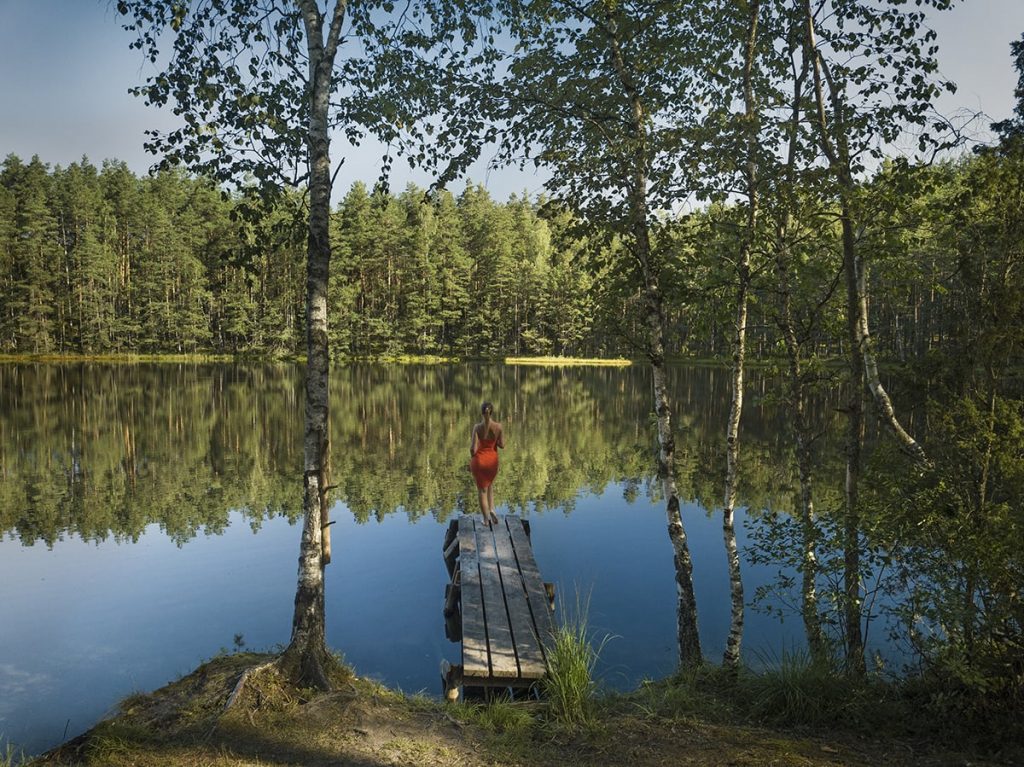
30 rivers and 126 lakes of different sizes and shapes are sprinkled around the pine woods covering 410.56 km² of the national park territory. Wildlife is also present in this area – you can find boar, deer and elk.
Aukštaitija National Park is the oldest of five national parks in Lithuania. It is around 100 km North-East of capital Vilnius.
Things to do in Auk š tatija National Park
Explore breathtaking Ladakalnis (Ice Hill)- a former fortification mound from where a panorama of seven lakes unfolds. You can wonder around and follow some nature trails to explore the area and take a dip into the lakes.

Go kayaking in Zeimena river or other surrounding rivers. This is by far of my favorites activities in the area. You will experience beautiful and easy but at times tricky routes since there are natural obstacles along the way. You have to maneuver around them. Sometimes you might even come across a tree that fell into the river and completely blocked the way. Therefore, you will have to carry your kayak over the tree which makes it a little bit of an adventure.
There are plenty of kayak rental spots in the area. You can check “Superbaidares” . They have information in English with all short and long routes, even overnight routes available to choose from.

How to get to Auk š taitija National Park
The main jumping-off point and a base to stay for the park is a sleepy town Ignalina. There are buses several times a day leaving from Vilnius intercity bus station, you can check timetables here .
However, the most convenient way to reach the park is by car. This way you will have more flexibility to move around the park and stop wherever you like.
10. Kirkilai Lakes and Observation Tower in Biržai Regional Park
Lithuanians are obsessed with observation towers. They are one of the sites which attract the highest number of visitors in Lithuania. There are over 30 registered view towers varying in height and shape scattered across the country. Those towers offer visitors panoramic vistas of some of the most beautiful natural surroundings.

Since it would take a good week or two visit them all, I would like to highlight the absolute must visit- Kirkilai Observation Tower. It is located in Biržai regional park, North Lithuania.
You might wonder what is so special about this particular tower. The answer is – a unique shape and unusual landscape.
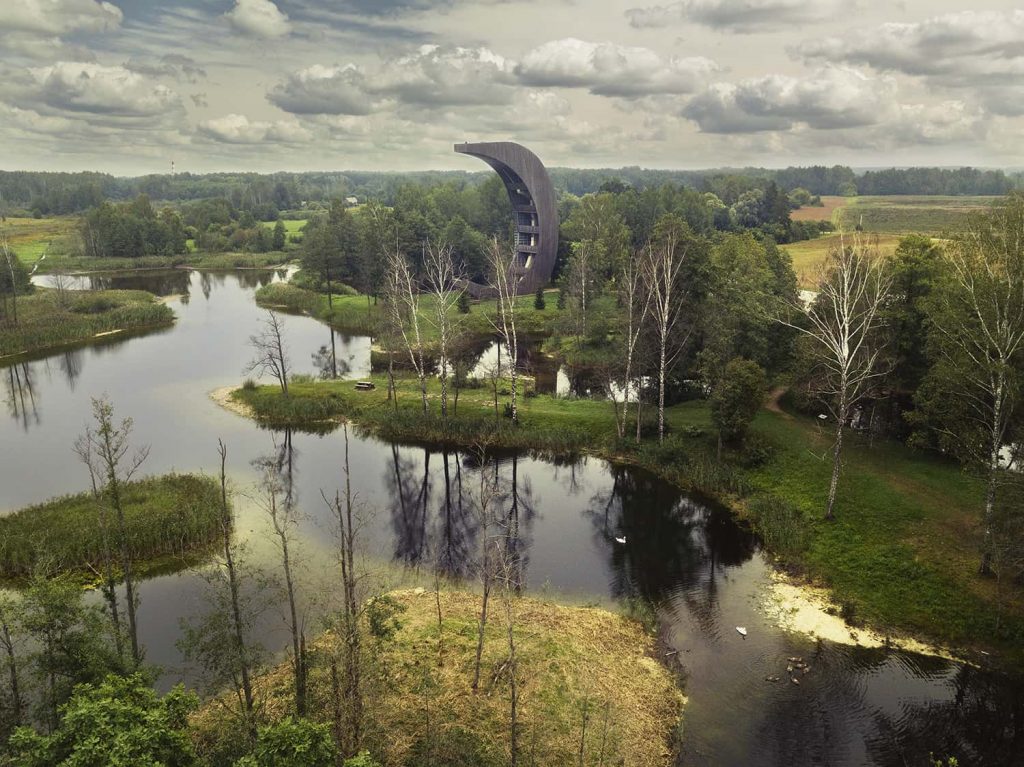
30 meters height Kirkilai observation tower resembles a canoe which also looks like a Moon from the side. The surrounding landscape features a unique terrain of 30 water-filled sinkholes that were formed due to karstic processes. From the top of the tower, you will see wonderful views of those karstic lakes which, on a sunny Summer day, vary in color.
How to get to Kirkilai Lakes and Observation tower
The tower is a bit off-the-beaten-path 10 km away from Biržai town and 2,5 hours drive from the capital Vilnius. Yet it is a stop worth to be included in your road trip route, especially if you heading up North. You can combine a trip to the Hill of Crosses by visiting the Kirkilai view tower.
Location: 56.247821, 24.690785 (or simply type Kirkilai lakes and observations tower into Google Maps )
This is my list of the top 10 must-visit places in Lithuania. If you have any questions related to traveling in Lithuania, please let me know by commenting below or sending me a private message- I will be happy to help you out. Also, do not forget to pin this post to your Pinterest, so you can come back to it later.
Make sure to check useful quick tips and main information about traveling in Lithuania at my Guide to Lithuania page . There you will also find all the related posts that will help you plan your trip to my beautiful country.
Love it? Pin it!
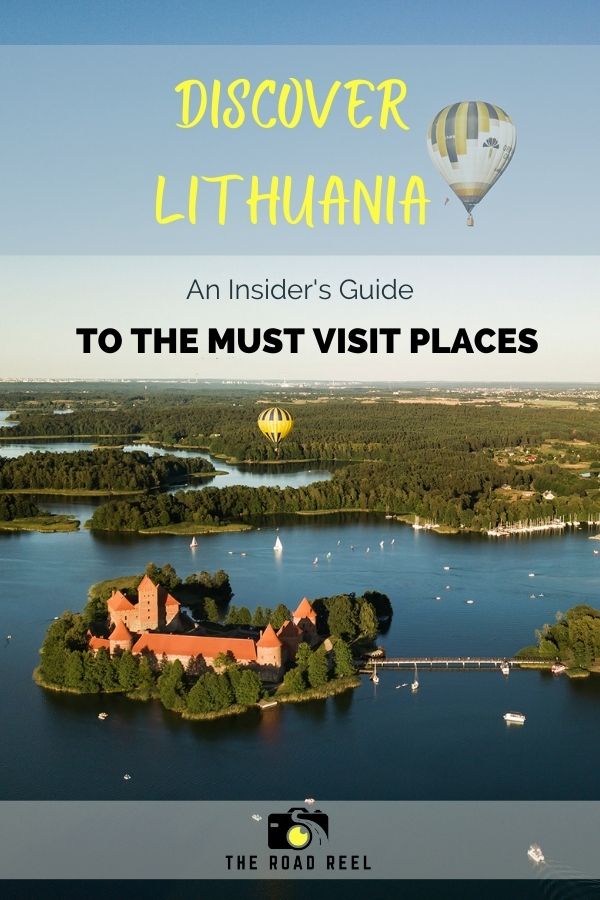
Enjoy your journey and hit me up to let me know how it went!
Hi! I am a freelance photographer & videographer as well the creator of www.theroadreel.com. Born in Lithuania, and currently residing in the UAE, I have been traveling around the globe independently for over a decade. I created The Road Reel to share my passion for travel and photography through detailed road trips and city itineraries, and hiking guides, along with regular and drone photogragraphy tips.
- Pingback: Montenegro Itinerary: Epic Two Week Road Trip! | The Road Reel
- Pingback: Top 10 Must Visit Pavilions At Dubai Expo 2020 (and The Ones To Skip)
Leave a Reply Cancel reply
Your email address will not be published. Required fields are marked *
Save my name, email, and website in this browser for the next time I comment.
- Skip to content
- Skip to primary sidebar
This Rare Earth
A travel resource for the adventurous and often-solo female
- 40 Things To Do in Lithuania
Lithuania , Blog , Europe / February 21, 2023 by Monica / Leave a Comment
If you are looking for the best things to do in Lithuania, you have come to the right place! There are so many places to see in Lithuania and hidden gems across the country that your trip is bound to be unforgettable. Scroll down for the best of of Lithuania things to do!
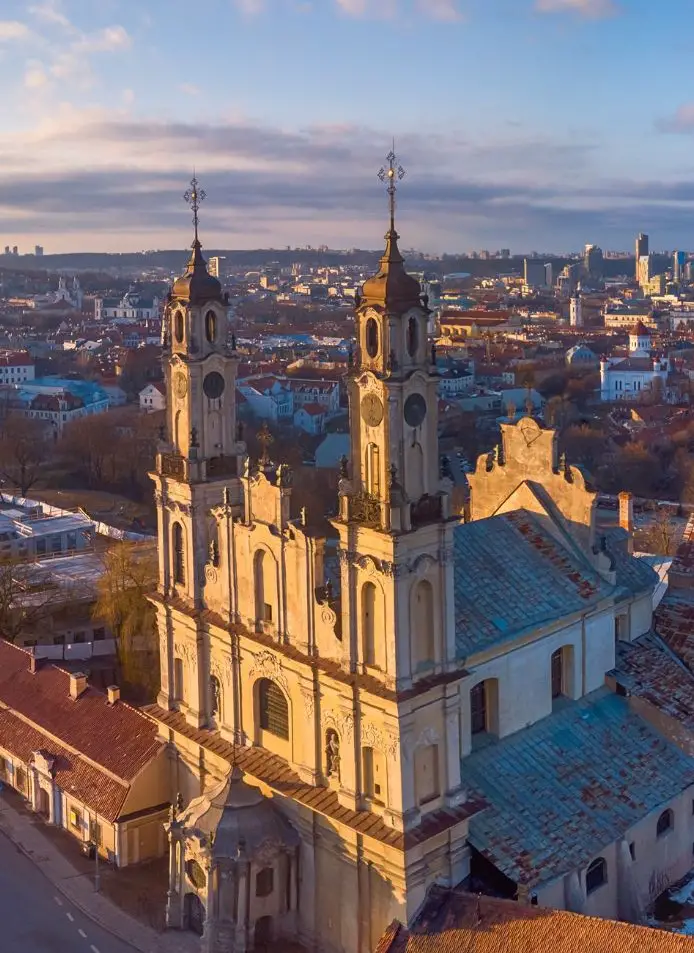
If you have been here for a while, then you may already know – I’m extremely obsessed proud of my Lithuanian heritage and I go back and visit every chance I get.
I was born in the USA, but I am Lithuanian by heritage. And over the years, I’ve discovered so many fun things to do in Lithuania that I want to share with you! Whether you like nature or history or quirky arts, Lithuania has it.
I can’t wait to show you why this beautiful Baltic gem should be at the top of your list.
Table of Contents
40 Best Things to Do in Lithuania:
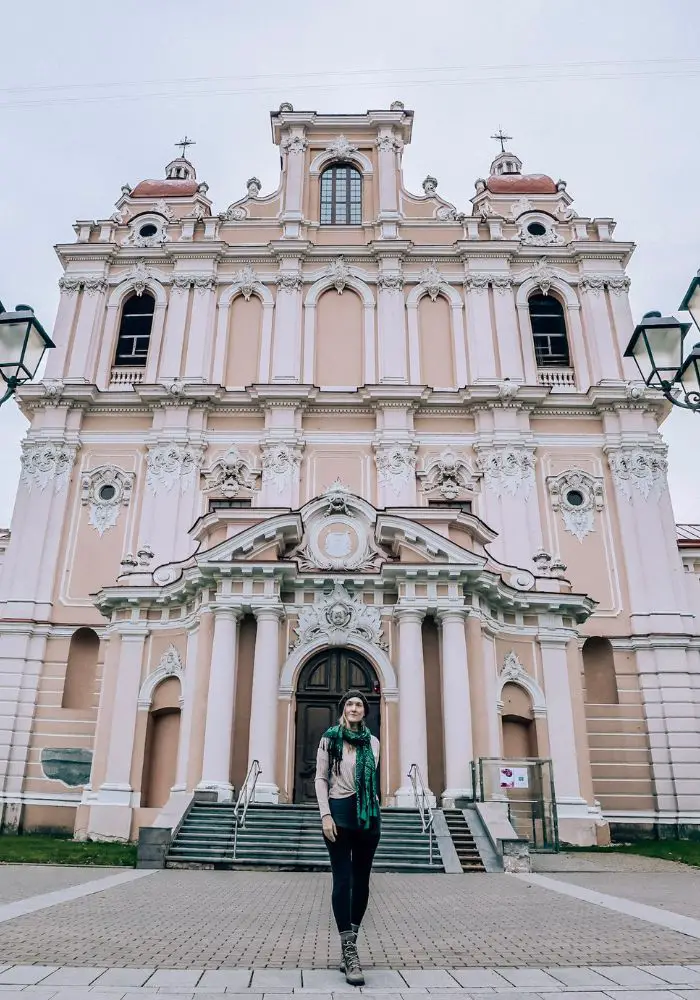
1. Explore Vilnius’ Old Town
Want to see Vilnius without the hassle of planning? No problem!:
Vilnius City Highlights Walking Tour : This two hour walking tour of Vilnius visits Gediminas Castle, Vilnius Cathedral, Vilnius Town Hall, and more! This sightseeing tour is a perfect introduction to Lithuania’s amazing capital city. Book your tour here !
The Old Town in Vilnius, the capital city of Lithuania, offers an unexpected blend of old and new. There is so much to see here, from ornate churches to thought-provoking museums to quirky galleries.
A maze of cobbled streets flanked by charming buildings juxtaposes modernity with history. Exploring these narrow pathways reveals enchanting sights such as Gothic spires, dazzling murals, and elaborate Baroque facades.
Anyone looking for things to do in Lithuania – especially first time visitors – should not miss a stroll along Gediminas Avenue. Here you can admire architecture that seems straight out of a storybook! Art galleries, incredible churches, and trendy coffee shops line the road.
Old Town Vilnius is an unforgettable experience!
You May Also Like: The Best Things to Do in Vilnius, Lithuania
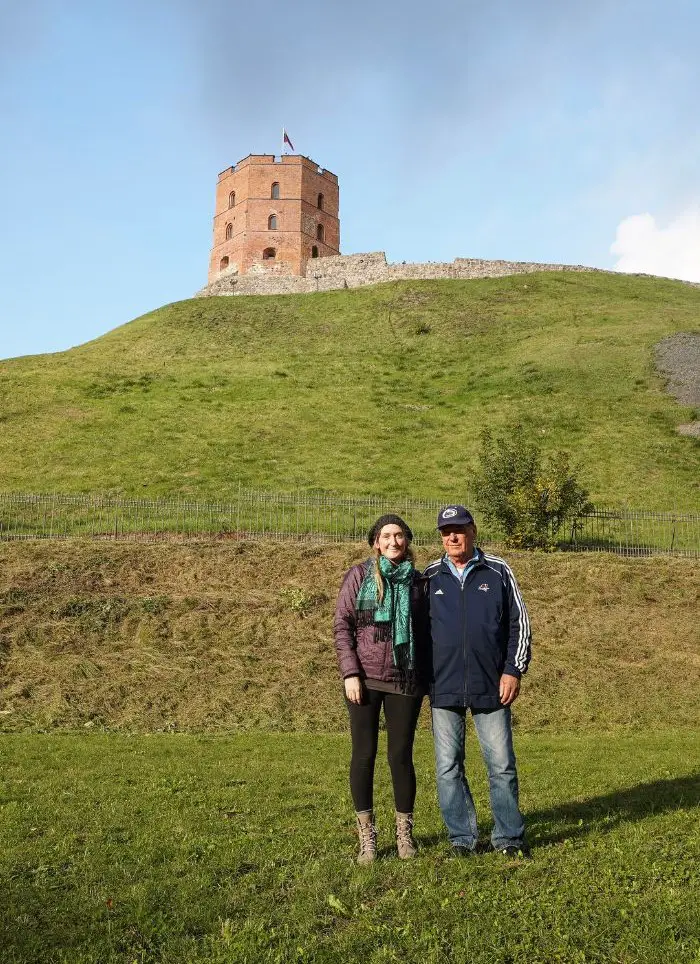
2. Take in the views from Gediminas Tower
Gediminas Castle Tower stands on a hilltop in the heart of Old Town Vilnius, and is all that remains of the Upper Castle. Dating back to the 14th century, this tower has served as a symbol of power and strength throughout Lithuania’s turbulent history.
A small museum inside the tower showcases Lithuania’s history, both distant and recent. There are three levels of displays within the tower, and a balcony on top that offers breathtaking views of the surrounding areas.
This is a great historical experience for anyone looking for interesting things to do in Lithuania!
You May Also Like: Visiting Gediminas Castle Tower in Vilnius
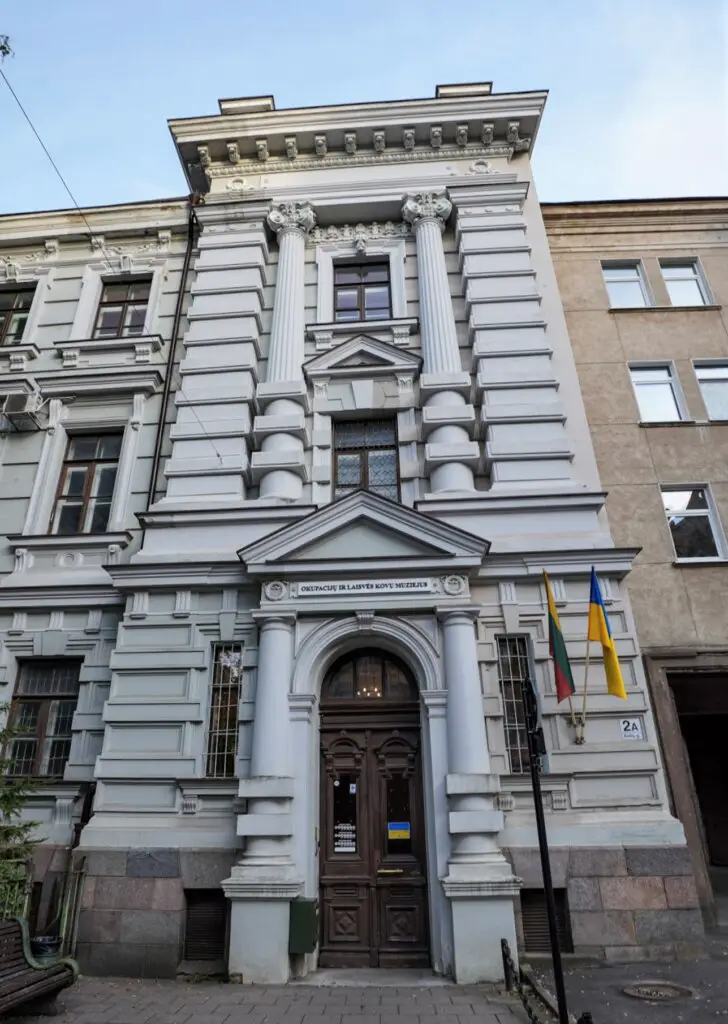
3. Visit the KGB Museum
Okay, this museum has had several different names over the years. It is officially called the Museum of Occupation and Freedom Fights, but is often casually referred to as the KGB Museum .
This museum is housed in the old KGB headquarter building. It holds everything from original KGB spy equipment to handmade Lithuanian artifacts to photographs and histories of individual Lithuanians who fought for their freedom.
Explore the old KGB prison cells and read about the atrocities that happened exactly where you stand. It is a sobering stop to any itinerary, but a must see nonetheless.
You May Also Like: Visiting the KGB Museum in Vilnius
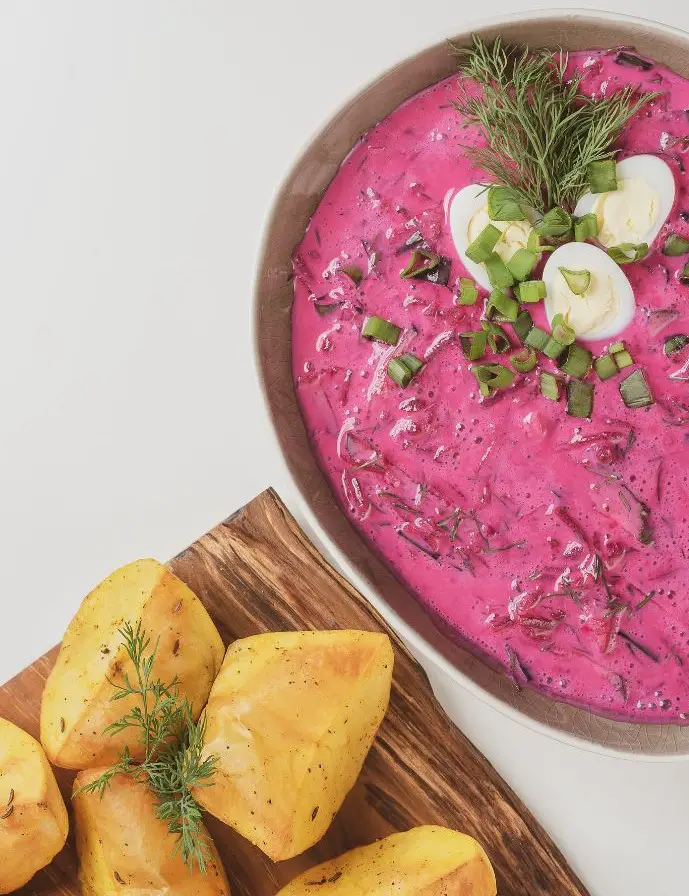
4. Try traditional cuisine at Etno Dvaras
This is easily one of the top things to do in Lithuania for foodies! A visit to Etno Dvaras restaurant in Vilnius is sure to tantalize your taste buds and introduce you to traditional Lithuanian food .
This cozy eatery offers a unique blend of Lithuanian dishes with modern-day twists. Sink your teeth into their famous potato dumplings, or sample their tasty beet root soup. Everything is cooked from scratch n the traditional authentic way.
Additional dishes you must try include potato pancakes, fried bread with garlic, and thin crepes stuffed with cheese and jam. With a wide variety of traditional cuisine for you to choose from and all cooked with locally sourced fresh ingredients, dining at Etno Dvaras is an unforgettable experience.
You May Also Like: Traditional Lithuanian Foods to Try on Your Visit
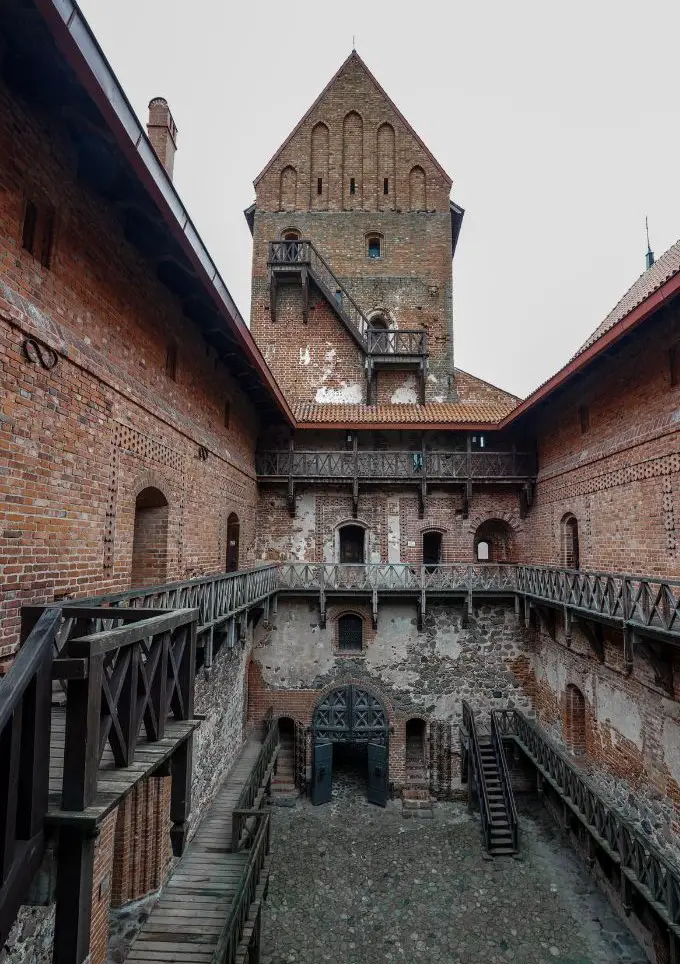
5. Take a trip to Trakai Island Castle
Trakai Island Castle is one of the best things to do in Lithuania as well as the single most popular day trip from Vilnius .
The historic castle, built from the 13th century, is situated almost 450 feet from the mainland and is surrounded by a lake. This castle offers stunning visuals.
Wander through the castle halls to learn the history of this former capital city. See how royalty lived throughout Lithuania’s history. Take part in educational tours which will teach you about the castle’s history as well as craftsmen’s artistry dedicated to restoring the building.
You May Also Like: Visiting Trakai Island Castle in Lithuania
🗺️ Planning Your Next Big Trip? 🗺️
This Rare Earth now offers Custom Itinerary Services for destinations across the world! If you are feeling overwhelmed while planning your next big trip, or don’t know where to start, I can likely help. Fill out the form below to learn how we can create a fully customized itinerary tailored to your unique travel preferences and needs!
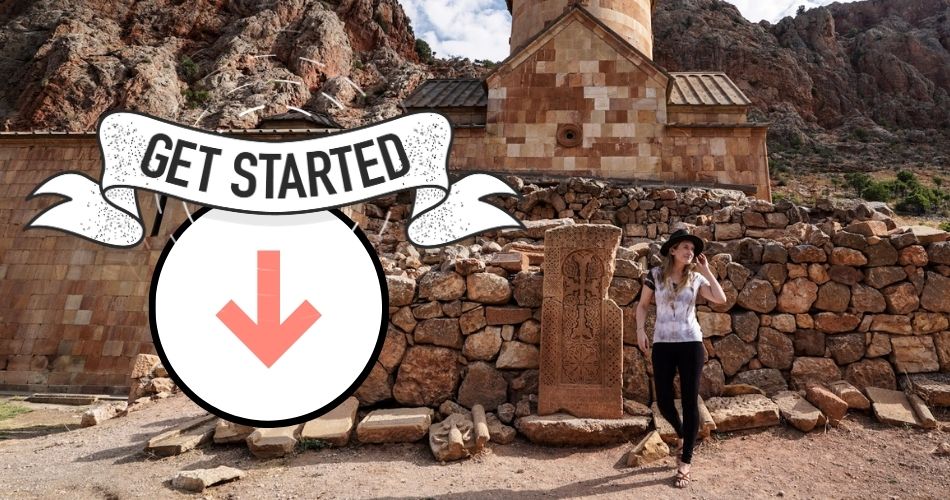
6. Take a sailboat ride around the castle
As you cross the bridge to Trakai Castle, you will see several sailboats in the water around the island. Visitors can take a sailboat ride around the lake for even better castle views!
Most of the time, the sailboat owners will come and offer rides to passers-by. But don’t be afraid to approach them and ask for the current price. I highly recommend it!
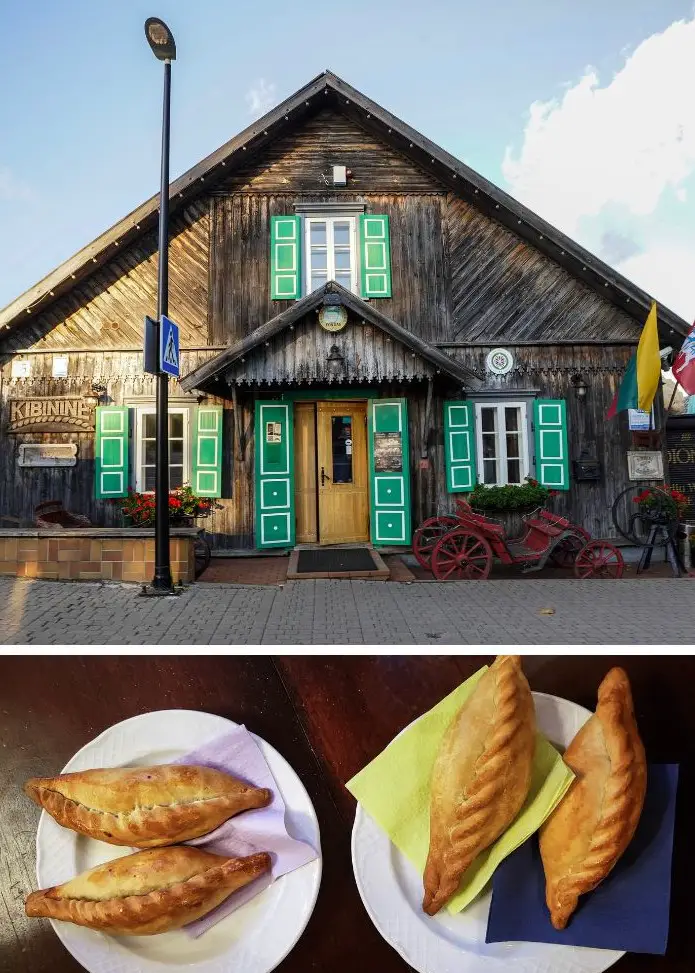
7. Eat the local Karaim fare
When in Trakai, I highly recommend you try the local cuisine, native only to this area of Lithuania.
Kibinai are stuffed pastries shaped in a half circle and baked until hot. They look somewhat like empanadas but the ingredients and spices are very different. Krupnikas is a local honey liquor that is traditionally consumed after your meal. Definitely grab both of these treats in Trakai!
You can find details on the restaurant I always visit in this article .
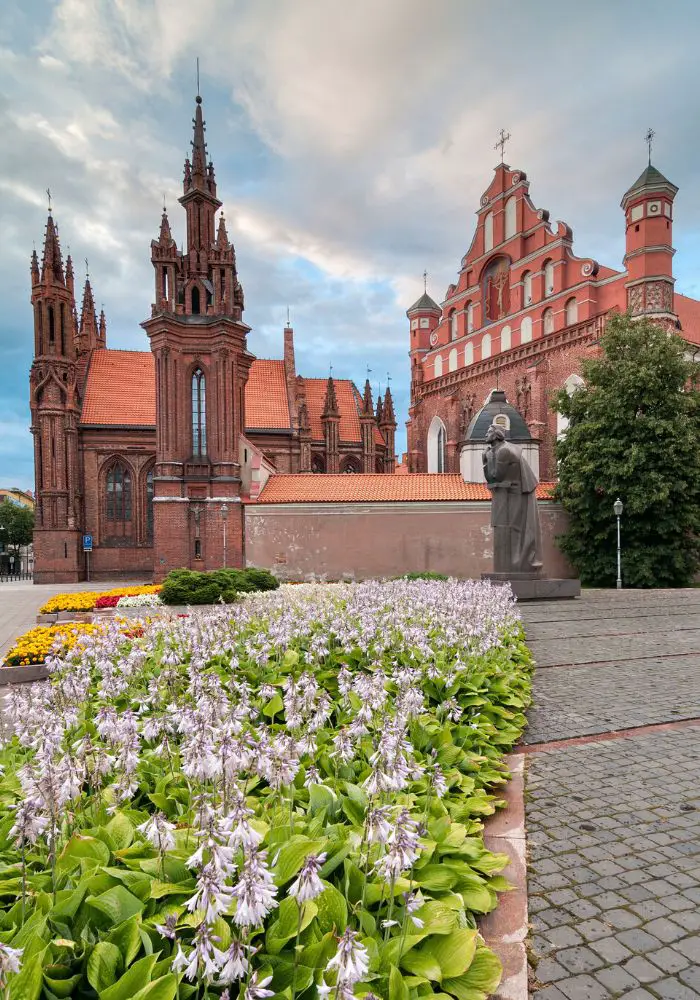
8. Visit St. Anne’s and St. Bernardine’s Church Complex
This unique blend of architectural styles is made up of two iconic churches in Vilnius; St. Anne’s and St. Bernardine’s.
St. Anne’s is the Gothic church showcasing the tall and intricately detailed spires. From the time it was built, the exterior of the church has remained unchanged, though the interior has had some upkeep and more modern elements from the 20th century.
Not to be overshadowed, the impressive St. Bernardine offers a massive and unusual backdrop for St. Anne’s, in a more bright and whimsical style. Seeing the two very-different churches side by side truly highlights the beautifully contrasting styles. Both are free to enter.
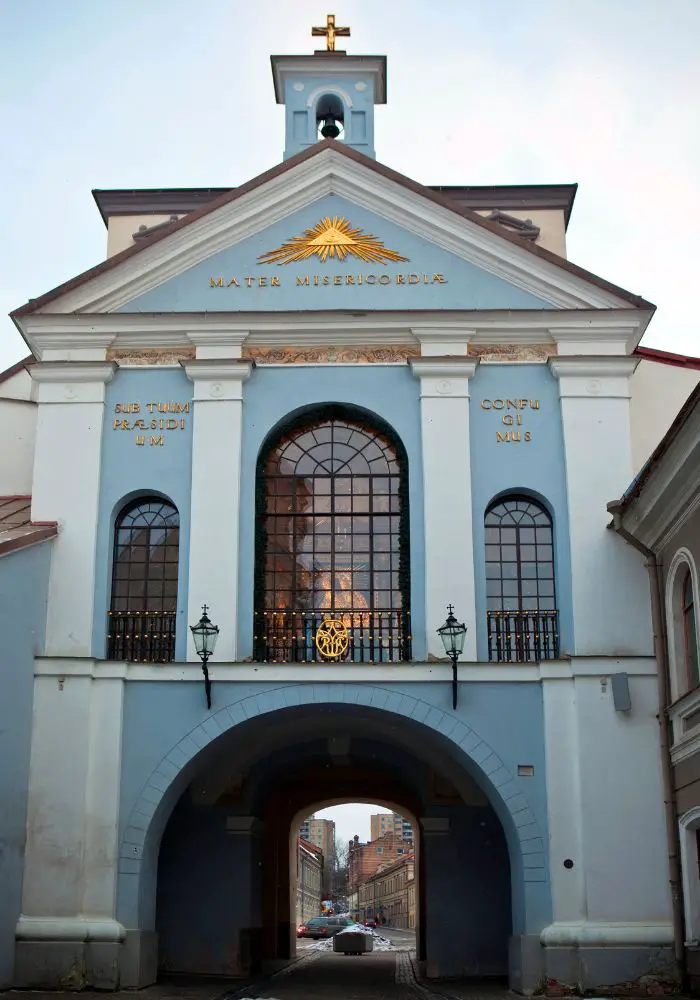
9. Find the Gates of Dawn
The Gates of Dawn is the last remaining “gate” of the original nine entrance points into the city. The walls were built over 600 years ago and hold a major historical significance for the city. However, it also has a major religious significance, too.
People often stop and make the sign of the cross with lowered heads or even say a quick prayer before passing through. This is due to the small chapel inside the Gate which holds a religious icon of Mary.
Whether you are religious or not, this is a significant stop.
You May Also Like: 25 Interesting Facts About Lithuania
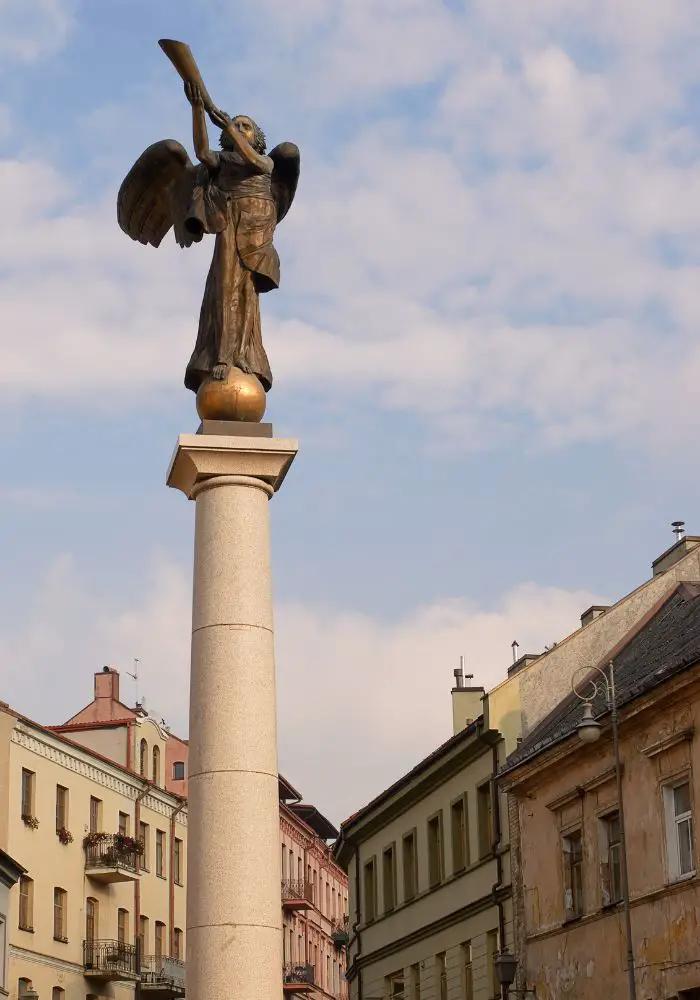
10. Walk around the Republic of Uzupis
The Republic of Uzupis in Vilnius, Lithuania is a wonderfully unique place to explore.
Founded by a group of artists on April 1st, 1997, this tiny republic is known for its vibrant and eccentric culture. Uzupis is full of character. From the lively streets to quirky galleries to unique monuments, there is something to be found around every corner.
Find their constitution posted on a concrete wall, written in multiple languages. Whatever experience you’re searching for, Uzupis definitely has something on offer that won’t disappoint!
11. Stroll through the MO Modern Art Museum
A visit to the MO Art Museum in Vilnius should be on every art lovers list of things to do in Lithuania. Though the MO Museum is small in size, it contains everything visitors could want, including educational areas, a café and a museum shop.
The museum offers various workshops, lectures and other activities throughout the year. Check their current offerings and hours here .
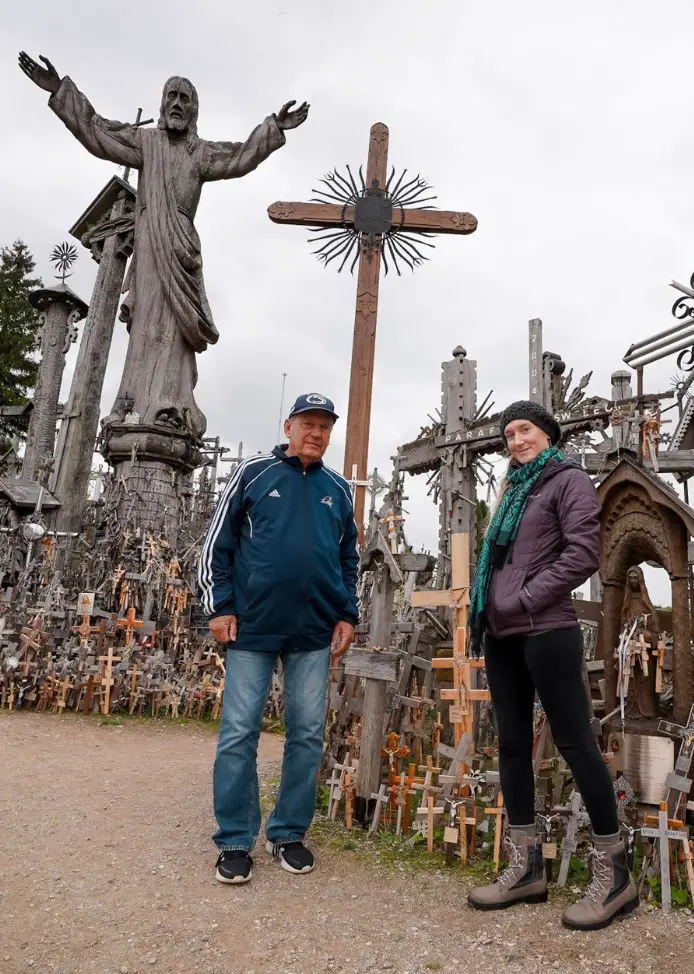
12. Spend a day at the Siauliai Hill of Crosses
You simply cannot visit Lithuania without taking a day trip to the Hill of Crosses !
This almost-unimaginable site is covered in hundreds of thousands of crosses in all colors and sizes. Since at least the early 19th century, Lithuanians have traveled here to leave memorial crosses on a hill as a symbol of resistance against its oppressors.
Now, it has become a popular tourist attraction and religious site. It draws people from around the world to marvel at its unique charm, whether they are religious or not.
Read more about the Hill of Crosses here and find details on how to visit!
13. Go chocolate tasting at the Chocolate Museum
Ruta’s Chocolate Museum is a must-visit destination for chocoholics and one of the tastiest things to do in Lithuania! Near the Hill of Crosses, in Siauliai, the museum presents an interesting history of the oldest chocolate factory in Lithuania.
Explore how ancient chocolate was produced by the Mayans and Aztecs. Learn how its consumption has changed over the centuries. One of the best parts about Rūta’s is that you can purchase limited-time flavors and chocolates that are not sold in stores!
14. Check out old bikes at the Bicycle Museum
Founded more than 30 years ago, the Bicycle Museum holds nearly 100 interesting bicycles of all types, from the oldest wooden bike to the one-wheeled unicycle to the smallest bike on record.
Though not widely known, this museum is definitely worth a visit if you re in Siauliai!
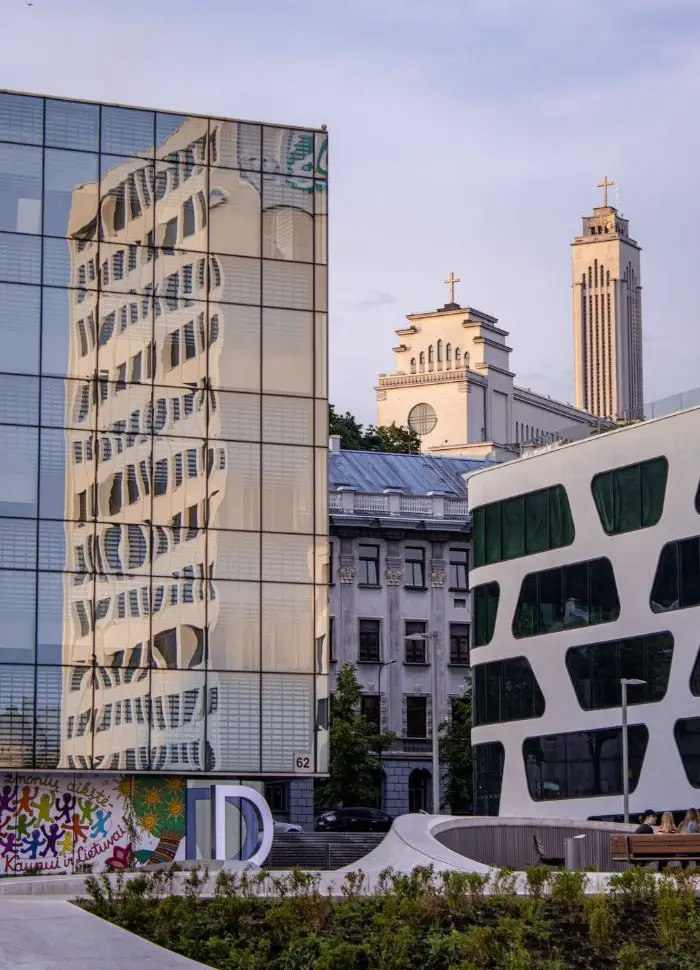
15. Journey to Kaunas
Kaunas, Lithuania is an inspiring city with many things to explore! From the captivating diversity of its architecture to its lively culture, Kaunas is a must-see destination.
As the second largest city in Lithuania, Kaunas offers everything from historic structures to lively cafes and pubs. It’s easy to get lost in the charm of this unique Lithuanian city.
History lovers will marvel at the abundance of museums and foodies will enjoy the delicious local eateries. It’s no surprise that visitors come from near and far to explore Kaunas, Lithuania.
You May Also Like: Things To Do in Kaunas, Lithuania
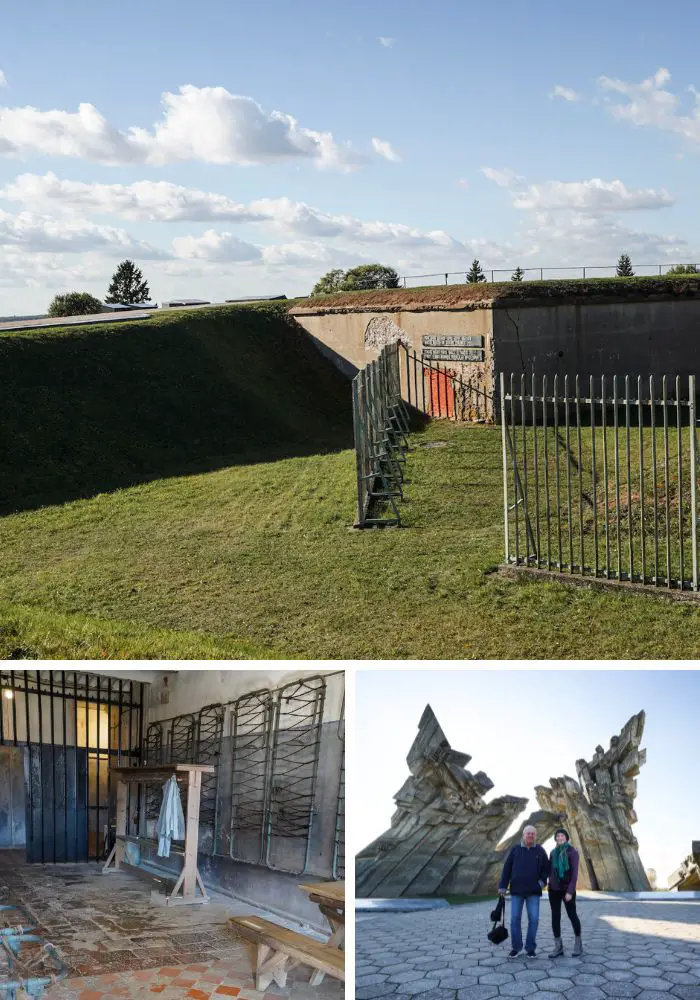
16. Learn an important history at the IX Fort
The Ninth Fort in Kaunas, Lithuania is a must-see for anyone interested in history. The fort was built in the late 17th century as part of the city’s defensive walls, and it played a key role against enemy invasions. Most poignant, the Ninth Fort was transitioned into a prison during the Nazi and Soviet occupations.
Now a museum, visitors get to can explore the casements, barracks, and the fort’s underground tunnels as they learn about the country’s struggle for independence. This former fort-turned-concentration-camp also tells the story of the Holocaust in Lithuania through bone-chilling artifacts, photos, and documents.
The Ninth Fort is an absolutely essential stop for anyone interested in history. It covers both Lithuanian history and history connected with World War II. Though a heavy experience, it is one of the most important things to do in Lithuania to learn from the past. When I took my father to Lithuania , he told me that this was one of his favorite stops in the entire country.
17. Dive into history at the War Museum
The War Museum in Kaunas is one of the city’s most popular tourist attractions. The museum chronicle Lithuanian history, both distant and recent, with a focus on the country’s experience during World War II.
This museum features a wide range of exhibits, including an expansive firearm collection, historical weapons, photographs, and personal belongings of soldiers and civilians.
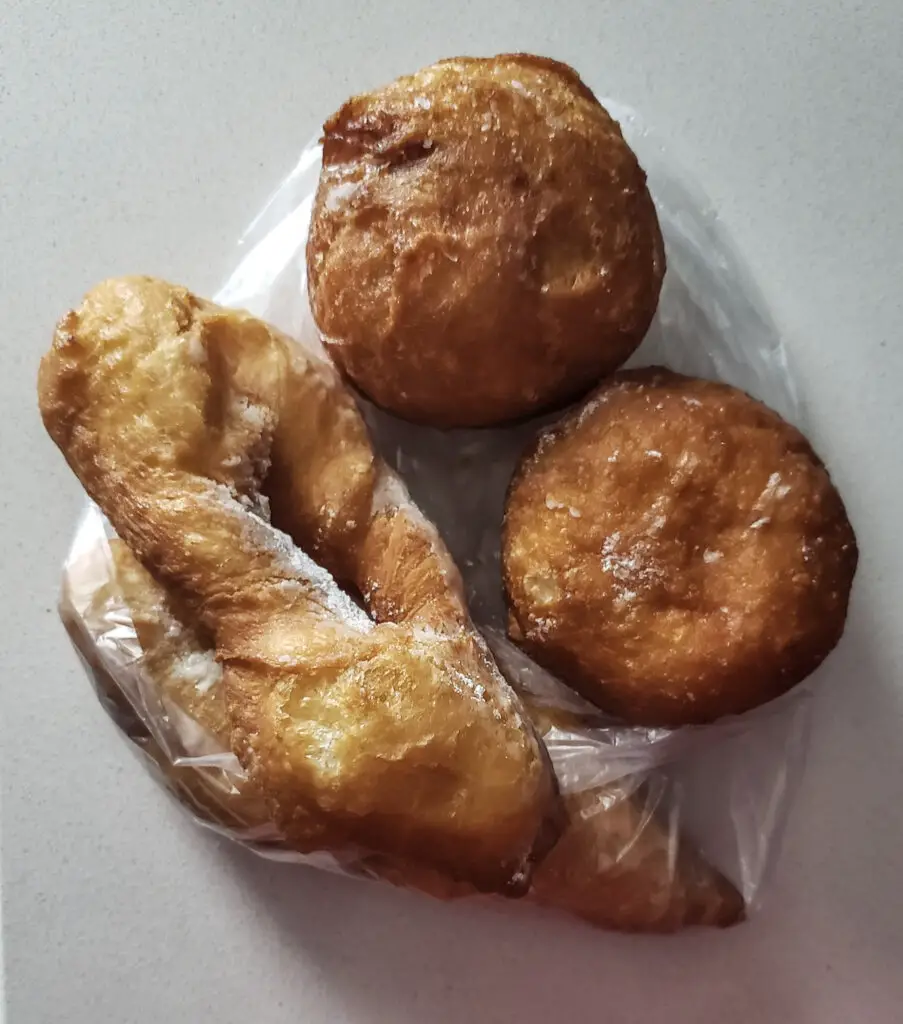
18. Get fresh Lithuanian donuts at Spurgine
Spurgine is a famous donut shop and cafe located in Kaunas, Lithuania. Visitors in town can’t wait to get their hands on this famous treat and you won’t want to miss out either.
Spurgine donuts are made with the typical ingredients – sugar, flour, butter and plenty of love. They’re cooked up nice and hot and are served all day long!
My favorite thing about Spurgine is that they don’t worry about forming the pastries into perfect round shapes like commercial donuts. Rather, they are haphazardly shaped and come out piping hot.
Visit early during the busy season because sometimes the line stretches down the block.
Fun Fact: My aunt used to make these Lithuanian donuts with her grandmother. When she saw my photos, it brought back such great memories for her!
19. Walk Laisvės Avenue
When visiting Kaunas, tourists absolutely need to walk along Laisvės Avenue in the New Town area of Kaunas. It is one of the longest pedestrian streets in all of Europe!
There are plenty of cafés, boutique shops, bars, and restaurants lining Laisvės Avenue. No matter what you are in the mood for, it is likely found here. It is a local favorite place for walking and meeting friends.
This is also where you will find Spurgine Donuts, mentioned above.
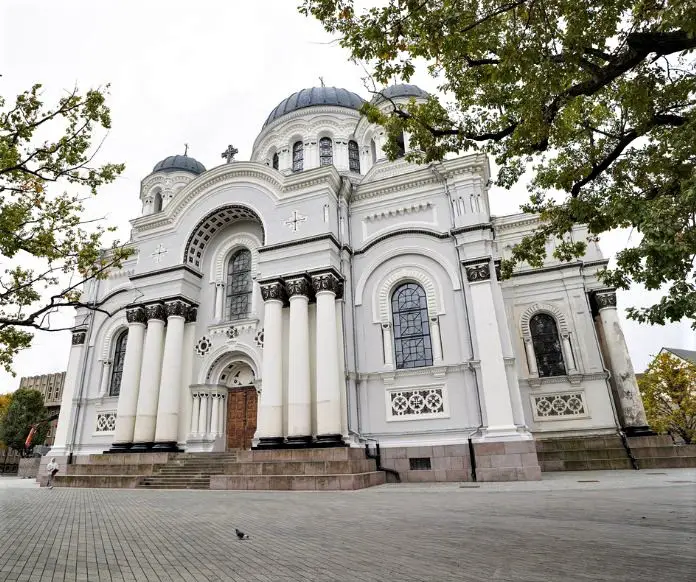
20. Gaze at St. Michael the Archangel’s Church
This is one of the most grand churches in Kaunas. The rounded domes and proud columns make it quite the sight to see from afar. It was built in 1413 and is one of the oldest churches in Lithuania.
Inside, most everything is white. It creates a pretty, stark and clean backdrop for one of the many beautiful churches of the country. Don’t miss this church when you are in Kaunas!
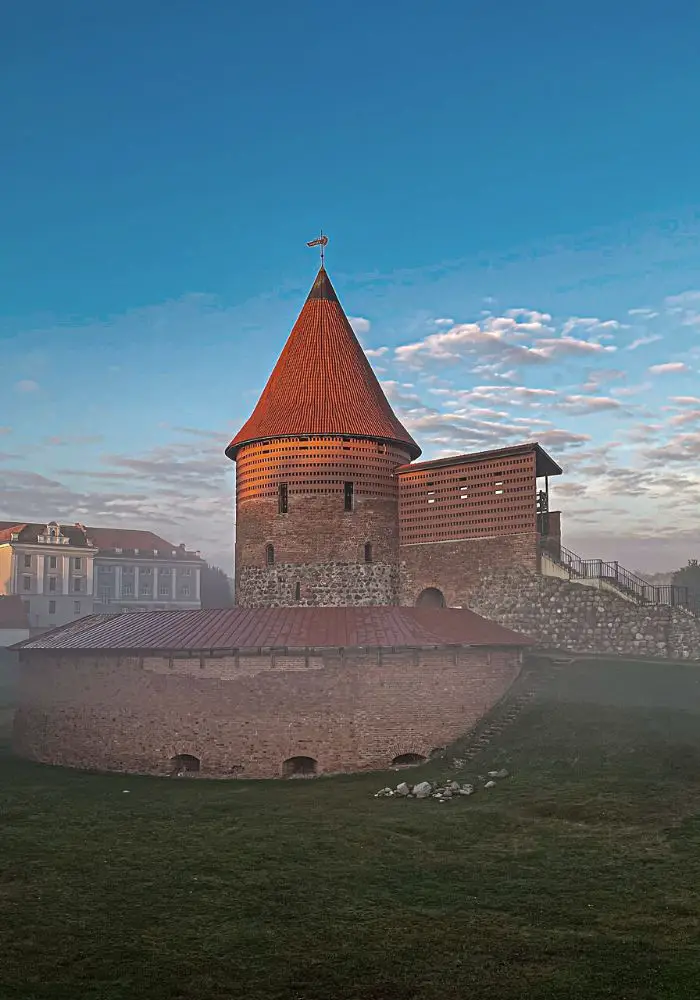
21. Find the remains of the Kaunas Castle
Once you have seen Trakai’s grandess and Gediminas Tower’s views, you might think you’ve seen all the castles there are in Lithuania. But, you’d be wrong.
Kaunas Castle is a medieval castle constructed in the mid-14th century. Its location is strategic for protection of the city – a rise on the banks of the Nemunas River near its confluence with the Neris River.
Today, Kaunas Castle is one of the best things to see in Lithuania if you like history. Visitors can explore the castle grounds, visit the museum, and take in breathtaking views of the city from the top of the castle tower.
22. Tour the Stumbras Vodka factory
Stumbras Vodka Factory in Kaunas, Lithuania is a must visit destination for anyone who likes vodka. With over 100 years of vodka production, this factory offers a truly unique experience!
The museum is located within the factory and showcases the history of vodka making in the country. Visitors will get to see first-hand how the vodka makers use traditional methods to make pure spirit from wheat, potatoes and rye grains. Groups can schedule a tasting of different vodkas from Stumbras, but be sure to book in advance. It is not a “walk in” type of environment.
23. Brave the Devil’s Museum
For anyone interested in darker attractions, you need to stop at Kaunas’ very own Devil Museum. This homage to Lucifer showcases over 3,000 artefacts of Satan – from art to trinkets to carvings.
For the most part, the collection here is attributed to Antanas Žmuidzinavičius (1876–1966), a famous Lithuanian painter and professor, but has been added to over time. As part of the displays, you can see Žmuidzinavičius’ paintings, too.
Besides the visuals, visitors get to learn about ancient legends, old beliefs, and superstitions about the Devil from around the world. It is definitely fascinating!
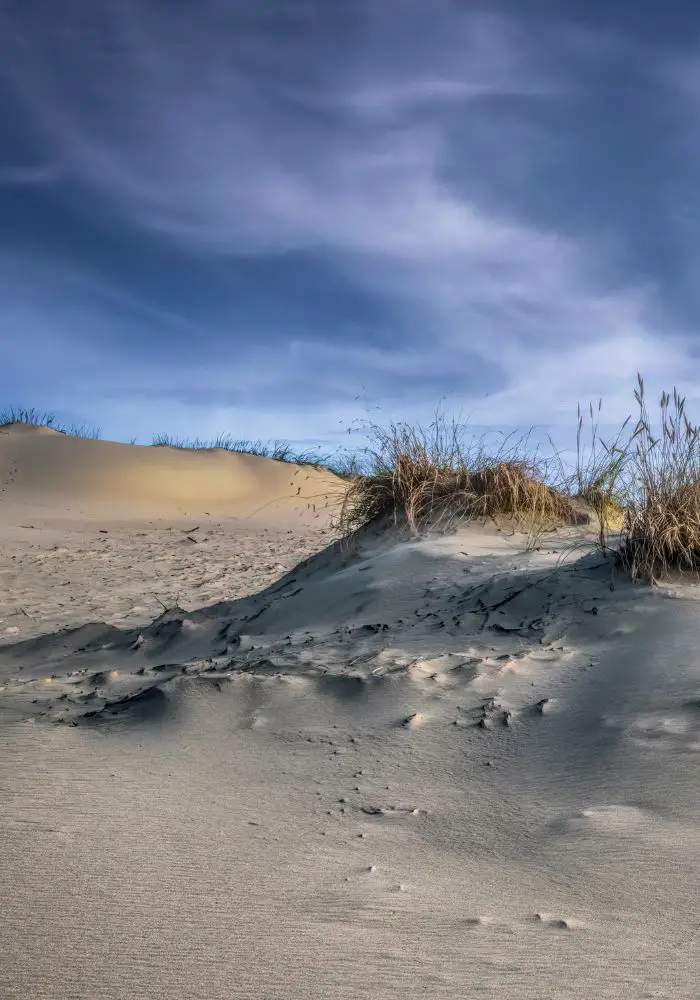
24. Take a ferry to the Curonian Spit
visiting the Curonian Spit is one of my all time favorite things to do in Lithuania. You will need to take a ferry from Klaipeda across a small stretch of the Baltic Sea to a thin strip of land called the Curonian Spit.
One of the prettiest sights to see are the large sand dunes leading up to the Baltic Sea. Climb tot he top for some of the best views!
25. Have a spa day in Neringa
Neringa, Lithuania is a dream destination for those looking to treat themselves to a lavish spa day. Whether it’s a break from the stress of travel or just your chance to enjoy peace and quiet, Neringa is the place to relax.
From yoga on the beach to rejuvenating sauna rooms and massages, this seaside city will provide every guest with something to that suit their individual needs. Neringa is sure to provide you with an unforgettable spa day experience.
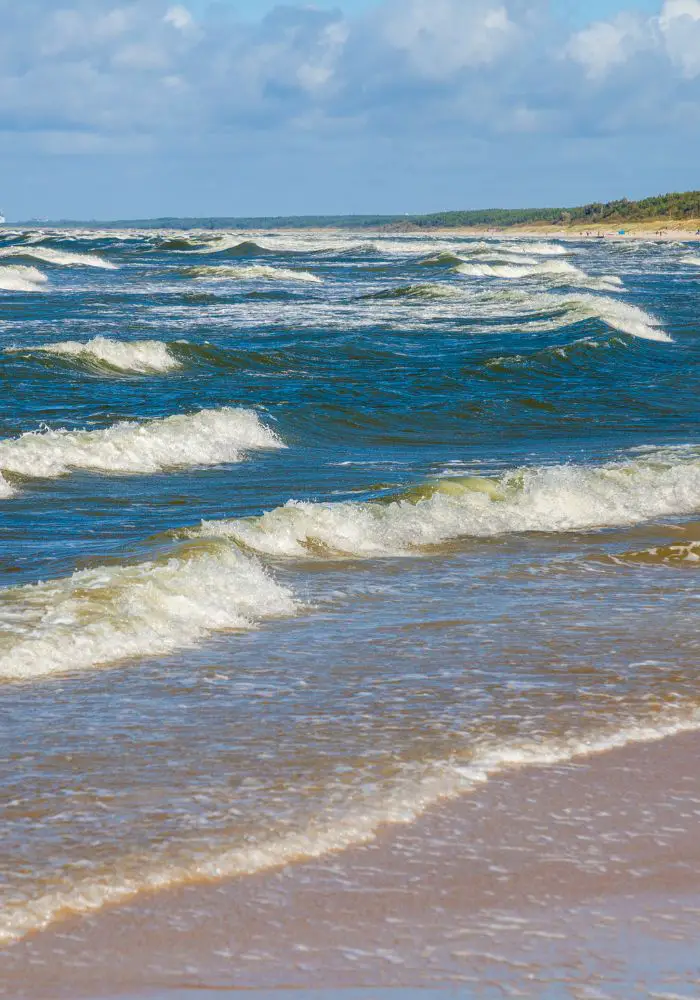
26. Visit the Baltic Sea in Palanga
This small seaside resort town offers the perfect blend of lively activity and pure relaxation. Summertime is when Palanga shines, when the weather is perfect and the sun is shining.
Take a leisurely stroll down the main street lined with stores, restaurants, and cafes. Pick up locally-made handicraft souvenirs for yourself or loved ones. There are numerous outdoor activities to partake in such as bicycle rentals or exploring nearby nature parks under a canopy of trees.
With an endless variety of things to do in Lithuania’s Palanga, you’re sure to have lots of fun and create memories that will last for a lifetime.
27. Explore Soviet artifacts at Grutas Park
In the south of Lithuania near Druskininkai, a unique outdoor exhibition in Grutas Park features old and dismantled Soviet monuments. They were brought in from various cities and towns around the country and create a somewhat spooky exhibition.
This park is casually referred to as Stalin Park by locals. It contains old Idols and statues imposed by the Soviet regime. It’s quite interesting to visit. Don’t miss it!
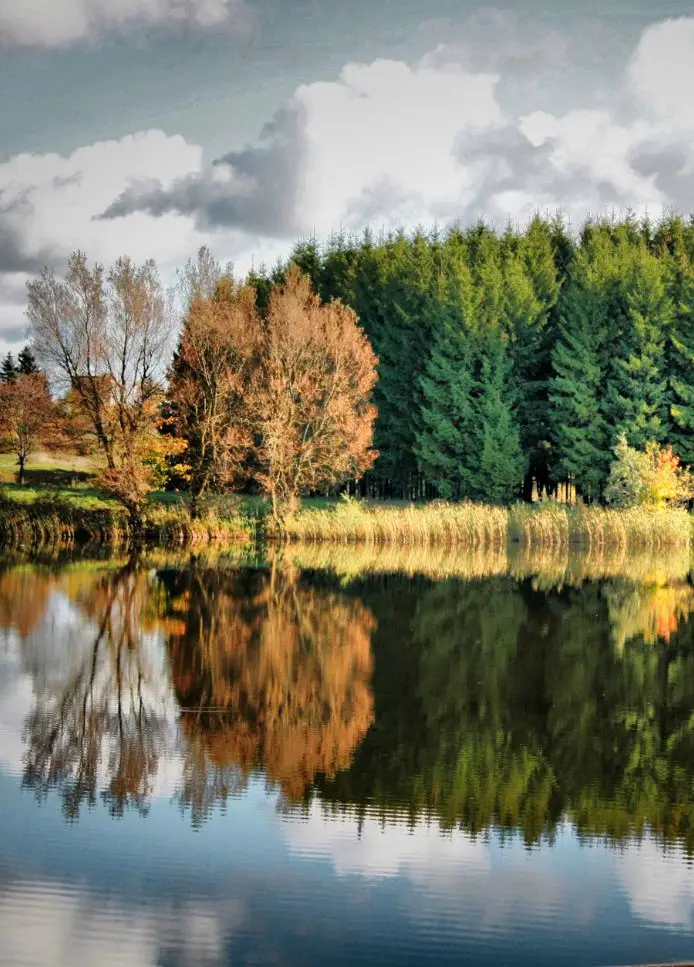
28. Discover Aukstaitija National Park
Aukštaitija National Park is in north-eastern Lithuania, not too far from Vilnius . It was established in 1974 and is the oldest of the five national parks in the country.
To get a true glimpse of Lithuania’s impressive natural side, this is the place to visit! Almost 60% of all plant species found in Lithuania can be seen within this park. Sixty-four species of plant and 48 species of bird can also be seen. If you like nature, this should be on your list of things to do in Lithuania!
29. Go back in time at Rumsiskes Open-Air Museum
Rumsiskes Open-Air Museum of Lithuania is one of the largest ethnographic open-air museums in Europe and was established in 1966 on the Kaunas Lagoon. The exhibitions at the museum teach about the ethnographic regions of Lithuaniaand displays them as they looked from the 1700’s onward.
More than 130 houses are filled with household appliances, crafting, and agricultural machinery of their time and region. It is a great place to tour to catch a glimpse of the past!
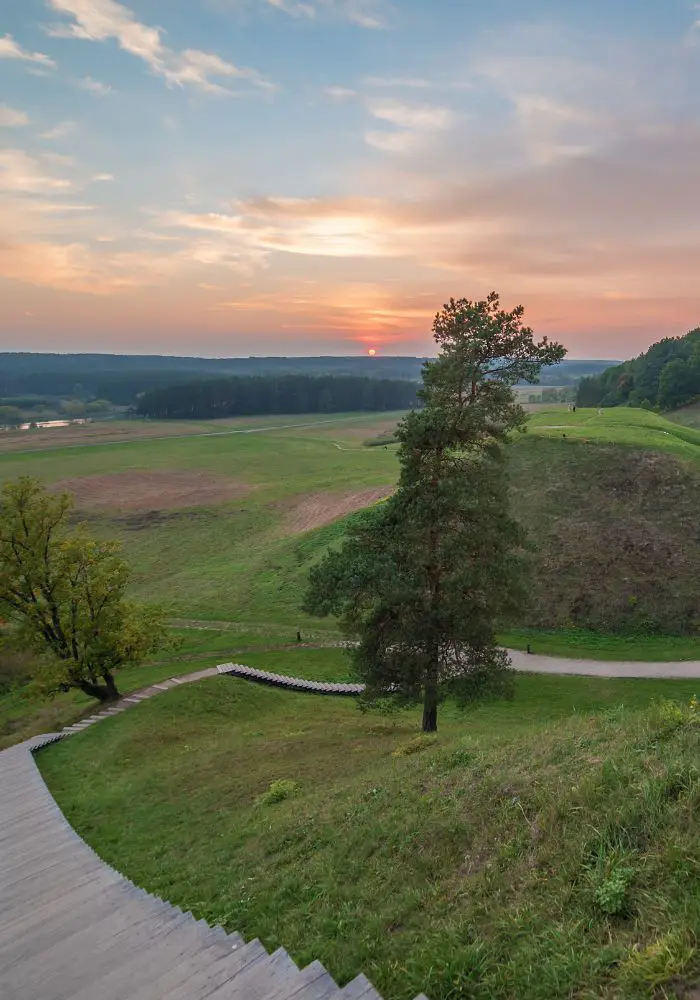
30. Visit the first capital city
Kernavė was the original capital city of Lithuania, before it moved to Trakai and then Vilnius . It offers lush green landscapes and is a beautiful contrast to all of the cities you are likely to visit.
Today the Kernavė Archaeological Site holds cultural monuments from the Paleolithic Period to the Middle Ages. Interestingly, Kernavė was the last Pagan capital, and remnants of that history are evident
Tourists can visit Live Archaeology Days, held at the beginning of July, where skilled Lithuanian craftspeople show-off their skills and sell handmade products. These include ceramics, glass art, jewelry, honey, and much more.
31. Tour Marvel at Pazaislis Monastery
Built in the baroque style in the 17th century, this monastery was built by the influential Pacas family in Lithuania. Although the monastery has been damaged multiple times during various wars, it is still one of the best things to see in Lithuania.
The monastery is managed by the order of the Sisters of St. Casimir, and is such a beautiful, impressive sight. Don’t miss the unique dining and hospitality complex next door, where you can experience a contemporary interpretation of historical dishes.
32. Visit the Museum of Ancient Beekeeping
This museum demonstrates the cherished traditions of Lithuanian beekeeping. Bronius Kazlas founded this museum in 1984, and has only become more popular over time.
The museum is set in six buildings stuffed with several hundred exhibits that showcase the history of beekeeping. See traditional beekeeping tools as well as the ancient honey centrifuges.
If you happen to visit during the yearly honey-gathering season, the museum is transformed into a festival like atmosphere. Celebrate, taste and purchase various types of honey on this special day, celebrated yearly on August 15th.
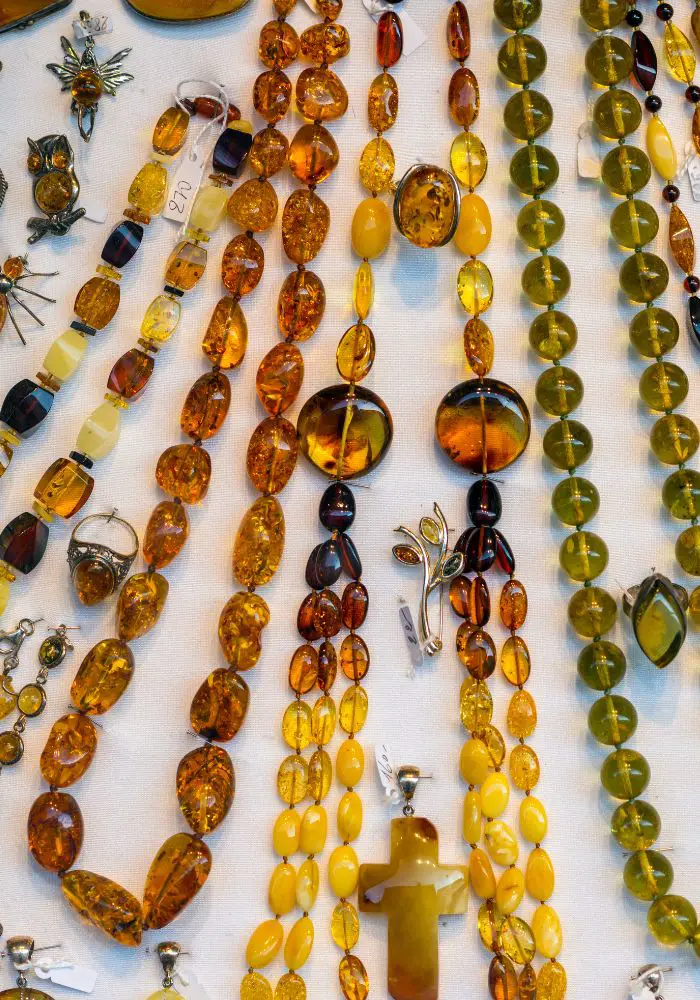
33. Buy some amber jewelry or goods
Amber is one of the top goods and products that Lithuania has historically produced. Today, you will see amber everywhere. In high end jewelry shops, small souvenir stores, and even local flea markets carry various amber goods.
The most typical places to buy amber are in Vilnius , Trakai , and Palanga, though you will likely see it all over the country.
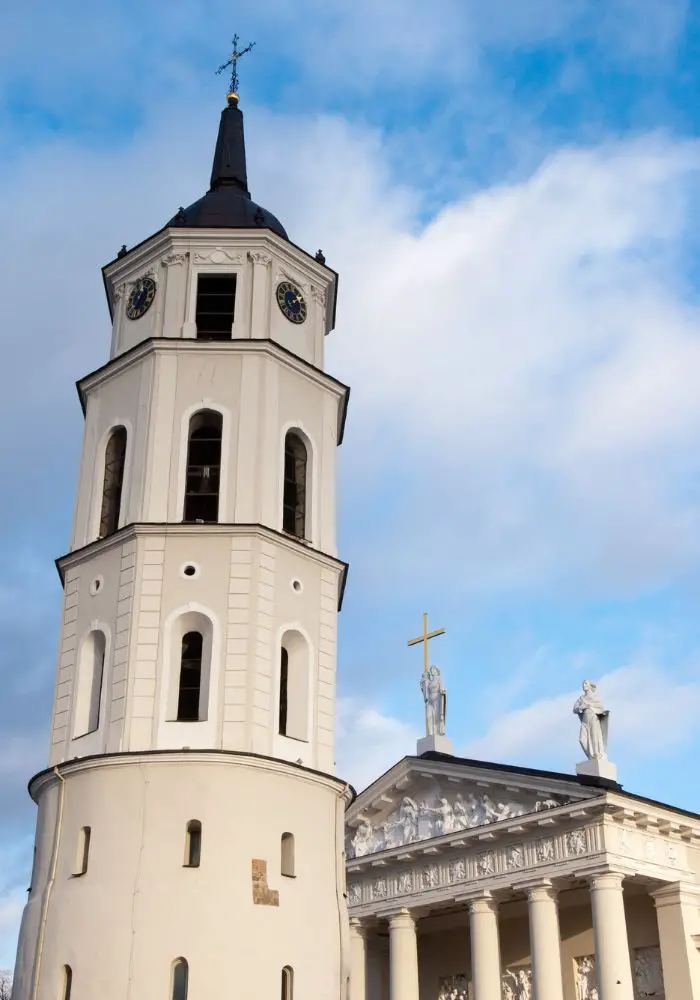
34. Explore Cathedral Square
In Vilnius, Cathedral Square is one of the most well-known local meeting points and is often used for festivals throughout the year. Visitors can climb the tall white bell tower to see Vilnius Old Town from above. I highly recommend it!
The Cathedral of St. Stanislav and St. Ladislaus is the official name of the iconic building above. It is built upon the site of a former pagan temple next to Gediminas Castle. Interestingly, though Lithuania is a strong Catholic nation now, it was the last pagan nation in Europe.
Operating hours are from 7:30am through 7:00pm, seven days per week. Entry is free.
35. Gaze at the President’s Palace
While in the US, the White House is under strict protection, Lithuania’s Presidential Palace is quite easy to see from up close. This grand building stands proudly in the middle of historic Old Town Vilnius. You are likely to pass it whether or not you were aware!
Get up close and personal on a tour. Free guided tours of the Presidential Palace are available on Saturdays and Sundays for those who want to see more than the exterior.
36. Climb the Hill of Angels
The Hill of Angels was started in 2009 on the side of a green rolling hill in Trakai . While I had read about this site, I actually found it by accident and am so glad to have seen it personally.
Angels are placed here by families or sponsors. Each of the angels has its own individual meaning: the angel of love, or self-sacrifice, or health, and many more. There are over 40 angel sculptures today, each spaced out and built in various styles for various reasons.
This beautiful site is one of the lesser known things to do in Lithuania, but worth a view nonetheless.
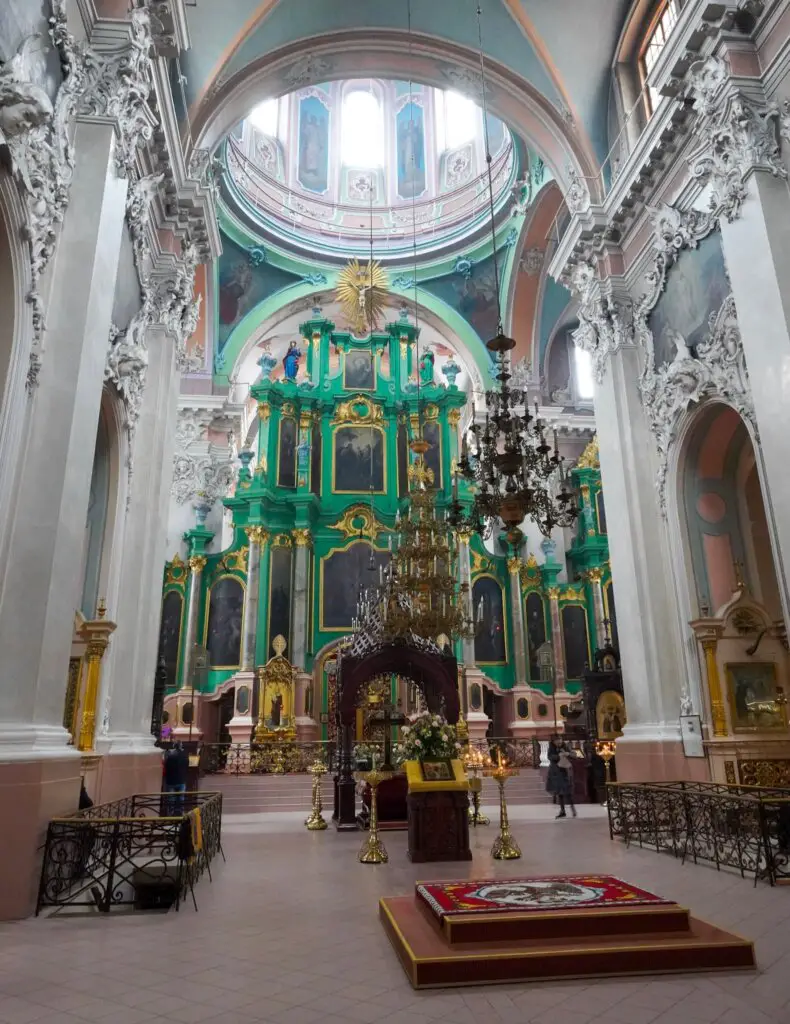
37. Pay your respects at the Church of the Holy Spirit
The Church of the Holy Spirit is a small and unassuming Russian Orthodox church within Vilnius. It was rebuilt 1749–1753 in the Vilnian Baroque style.
The interior is where this church shines. The deep green interior and simulated marble sculptures are so ornate and different from any other church I’ve seen here.
The church commemorates and displays the Saints Anthony, John, and Eustathios, who are martyrs for not abandoning their Christianity.
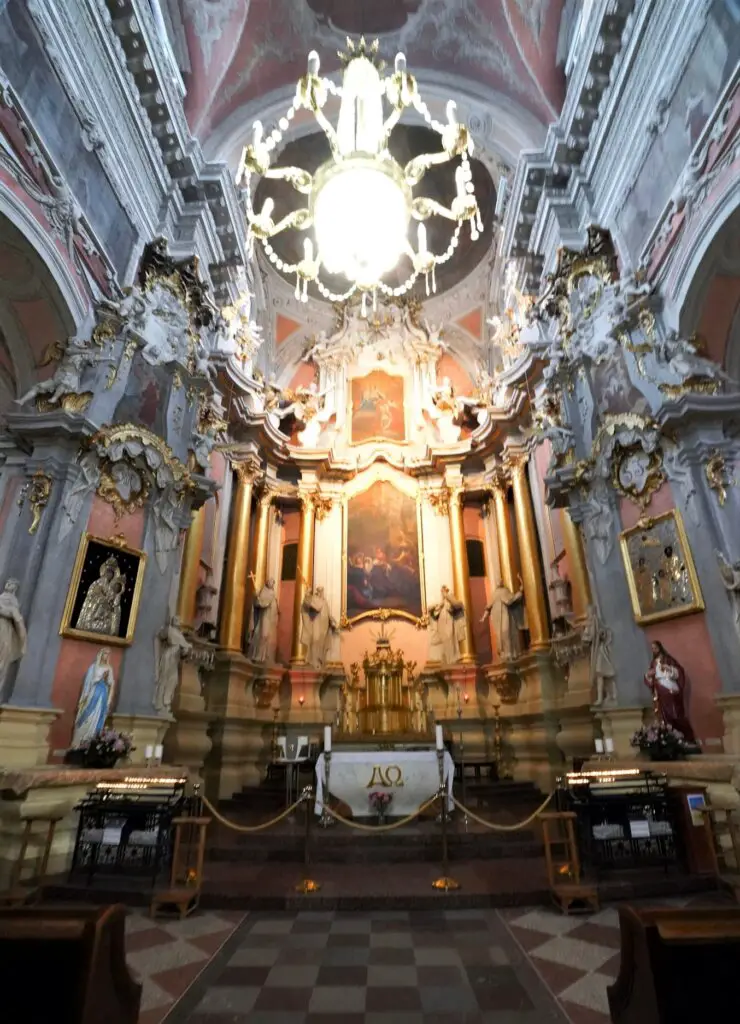
38. Enter the Church of St. Theresa
This church is typically regarded as one of the first Baroque churches in the capital. This title is particularly significant since Vilnius is sometimes referred to as ‘the city of Baroque’ due to the architectural style.
The construction of the church began in the location of an original wooden chapel that burned down in a fire. What you see today was completed in 1650.
The façade of the church is striking, and the interior is bright white bathed in golden light. The metallic artwork depicting Mary was visited and blessed by the pope, and is believed to perform miracles.
Ready for Adventure? Subscribe Today.
Unsubscribe at anytime.
39. Stand in the Center of Europe
Depending on what geographical borders you measure from, the official center of Europe is marked in Lithuania, outside of the capital Vilnius.
A large sculpture was meant to mark the spot, but the French scientists who had proposed the spot in the first place later said that they accidentally missed the exact target by couple of kilometers. Today, the correct center is now marked with a square and a small museum.
This spot is recorded in the Guinness World of Records.
40. Investigate the walls of Literature Street
in 2009, Literatų gatvė (Literature Street) in Old Town Vilnius was commemorated by a group of local artists. They began putting up three-dimensional decorated plaques along a concrete wall, each dedicated to an individual writer.
The idea proved popular, and now you can see over 200 plaques placed along a single wall in a wide variety of shapes, sizes, and colors. Some are portraits, some are quotes, some are objects or abstract pieces.
Final Thoughts: Things To DO in Lithuania
So – how many of these interesting, odd, and historical things will you add to your itinerary?! There are so many top things to see in Lithuania that it can be tough to choose.
Lithuania has so much to offer for every type of traveler. No doubt, within this list, you are able to find a few tailored to your interestes.
Let me know below – with the best of Lithuania at your fingertips, which will you be doing first?
More Planning Resources for Lithuania:
- The Best Things to Do in Vilnius, Lithuania
- Visiting Gediminas Castle Tower in Vilnius
- A Complete Guide to the Hill of Crosses in Lithuania
- 25 Interesting Facts About Lithuania
- Visiting Trakai Island Castle in Lithuania
- Visiting the KGB Museum in Vilnius
- Things To Do in Kaunas, Lithuania
- Traditional Lithuanian Foods to Try on Your Visit
- The Top 10 places to Visit in Lithuania
Pin Me for Later!
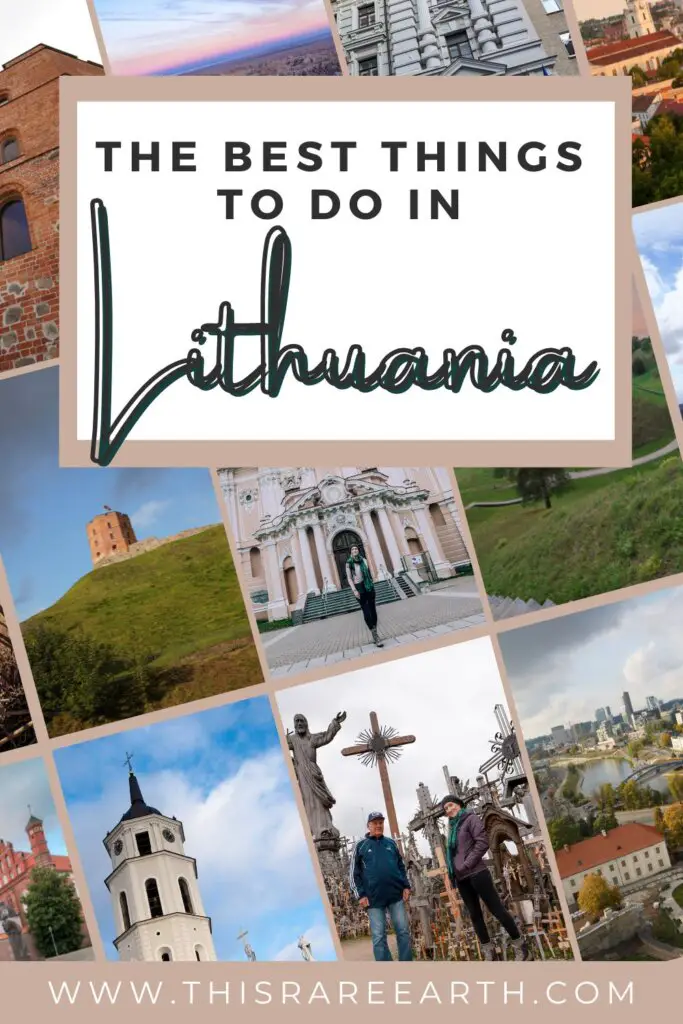
- Cabo San Lucas vs San Jose del Cabo Travel: Which Is Better?
- Cancun vs Cabo: Which is Better, Los Cabos or Cancun?
- 10 Tips for Visiting Joshua Tree National Park
- The Ultimate Guide to Visiting El Matador Beach, Malibu
- The Perfect Day Trip to Malibu: A One Day Itinerary [2024]
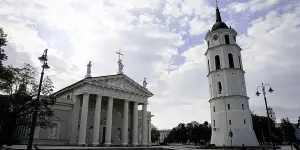
About Monica
Monica has been a solo female world traveler for over 15 years. She is an expert on outdoor adventures, solo female travel, and off the beaten path destinations. She is the founder of This Rare Earth and is a firm believer that the world is not as scary as the media might have you think! Learn more about her here . Connect with her on Instagram .
Reader Interactions
Leave a reply cancel reply.
Your email address will not be published. Required fields are marked *


What are you looking for?
8 best places to visit in lithuania {+ full itinerary}.
When we visited Vilnius (the capital of Lithuania) in early 2019, I really wasn’t too sure what to expect.
As a post-Soviet satellite state, Lithuania is one of the many countries in Eastern Europe that seems to get very little publicity in the UK.
But after spending a few days in Vilnius and discovering that there were so many awesome things to do there, we simply HAD to discover more of the country!
So we rented a car for 2 days and set about on our Lithuania itinerary that took us to many of the best cities and towns.
What we discovered was one of the most beautiful countries in Europe.
There are truly breathtaking views all across the country, and so much to see despite it being relatively small.
Well, to help you plan your own Lithuania itinerary, here are what I believe to be the 8 best places to visit in Lithuania this year.
Travellerspoint
First up, let’s start with the capital city!
In my opinion, Vilnius is a wonderful blend of old and new.
Here, you will find old castles, cobbled streets and gorgeous churches dating back hundreds of years.
But amidst it all is a hustling, bustling generation of young professionals, working for exciting new companies.
Of an evening time, when the weather is nice, you will find the streets lined with people sat outside of trendy bars and cafes.
They also have a few novels, modern transport initiatives that I haven’t discovered anywhere else in Europe.
Most notably, Citybee, which is an app you downloaded on your phone, and from here you can quickly and easily rent electric vehicles and scooters for however long you like.
Simply login and upload a few details, and then rock up and scan whichever vehicle it is you wish to take.
You can find out more and learn how it works on the Citybee website .

The best things to do in Vilnius
There are literally tonnes of awesome things to do in Vilnius , but here are our 5 favourite things to do there.
- Climb up Gediminas Castle Tower
- Go bar hopping in the evening
- Visit the Cathedral
- Go on a guided walking tour
- Hire the Citybee scooters for a few hours!
Where to stay in Vilnius
There’s great accommodation to suit all budgets in Vilnius.
- Tinggly Blogger House - This is where we stayed as a part of our sponsored stay with Tinggly . However, you can also hire it out on Booking.com. It’s a really place to stay, warm cosy and very modern. They have a full kitchen you can use, a giant projector screen and even a Segway! It’s located about a 10 minute drive from the city centre.
- Radisson Blu - We love the Radisson Blu Hotels and the one in Vilnius is a large, modern hotel that is very hard to miss. It is ideally located in the city centre, just a short walk or drive from all of the main sites. If you are happy to spend a little more, then this is a great place to choose.
2. Šiauliai
In recent years, Siauliai has become an increasingly popular place to visit, and for one major reason …
The Hill Of Crosses.
This is literally what it says on the tin. A large hill that you can walk over, covered in thousands upon thousands of crosses.
Some big, some small, some wooden, some metal, it really is a unique and wonderful spot to discover.
It has become a very popular pilgrimage spot, and Pope John Paul II even visited back in 1993.
You don’t need to spend too long here, but you certainly can’t miss it if you are road tripping across Lithuania.
The best things to do in Šiauliai
- Visit the Hill Of Crosses
- Check out the Cathedral of Saint Peter and Saint Paul
- Take a walk around Rėkyva Lake

3. Klaipėda
On the western coast of Lithuania, you will discover the large port city of Klaipeda.
As well as being a significant trading hub for the country, it has grown to become a popular place for tourists and local Lithuanians.
Here, you will find a long sandy beach stretching as far as you can see.
As you walk down it you come across old battery forts from WW2.
If the weather’s nice, and you’re feeling particularly daring, then you can even go for a swim!
Back in town, you will find a number of nice spots to visit.
This includes …
The best things to do in Klaipėda
- Sculpture Park
- The ruins of Memel Castle

Nida is possibly my favourite place to visit in Lithuania.
Located on a spit of land just off the coast of Klaipeda, Nida is nestled away at the far end, offering stunning ocean views from both sides.
It is surprisingly built up and is a popular place for holiday goers and, I imagine, retirees.
You’ll find lots of nice beachside restaurants and even a small farmers market at the end of town.
To get to Nida, you will need to catch a ferry across from Klaipeda to Smiltyne.
These run very regularly and aren’t very expensive as they only take about 15 minutes each way.
But as a word of warning, the queues back over from Smiltyne to Klaipeda can get very long and congested.
As such, leave plenty of time if you have a deadline for getting back across to the mainland.

Kaunas once served as the nation’s capital in 1938 and has ever since been an important and well developed city.
We didn’t have the chance to discover too much of Kaunas, but did manage to stop off and see one of their most famous and humbling sites, the Ninth Fort.
This is a large memorial and sculpture built in dedication to the roughly 50,000 jews and other Lithuanians who were killed in WW2.
The burial site is located right beside the statue, a chilling reminder of Lithuania went through under Nazi rule.
The best things to do in Kaunas
- Visit the Holocaust memorial at Ninth Fort.
- Discover Kaunas Castle
- Marvel at Vytautas the Great Church and the Cathedral of St. Peter and Paul
- Take a stroll through the Old Town

Trakai ended up being one of my favourite places in Lithuania, located just a short 1 hour drive away from Vilnius.
Here, you will find perhaps the best castle anywhere in Lithuania.
The castle dates all the way back to the 14th century, and is still in incredibly good condition.
But what makes it so captivating is that it’s located on a small island in the middle of a giant lake.
You can spend hours walking around the town, the lake and even taking boat rides out and around the lake itself.
We didn’t have time for this, as the day was already drawing to an end when we reached Trakai, but it’s definitely something to do if you have more time!
It only cost a few Euros per person and they take you to many of the nicest spots.
Alternatively, you can rent a kayak and take yourself out and discover the castle from even more angles.
Seriously, don't you think this castle should have made an appearance in Game of Thrones?
The best things to do in Trakai
- Discover the beauty of Trakai Island Castle
- Go for a boat ride out on the lake
- Go for a sunset meal by the lake

7. Panemunės pilis
If you are interested in discovering even more spectacular castles, then one of the best places to visit in Lithuania is Panemunes Pilis.
It was built in the early 1600s and is located just up from the banks of the Neman River.
It has been recently renovated and restored, and guests even have the choice to stay there for a night .
It is a few Euros to go into the castle, and you can climb to the top of one of the spires. On a clear day, you are blessed with astounding views for miles in all directions.
Then, just outside the castle you will find 2 small lakes and some peaceful wooded gardens to walk through.
There’s also the opportunity to ride a pony and to try out some archery if you wish.
When you leave, head over the main road and stop off at the small snack wagon located right by the river.
They serve a few basic options, but it’s such a nice spot to take a minute to relax and appreciate the scenery.

8. Raudone Castle
As you head back towards Kaunas or Vilnius, then you can simply follow the road that runs alongside the gorgeous Neman River.
It is by far one of the most spectacular things to see in Lithuania, and the drive alongside it is wonderful and you are blessed with some of Lithuania’s best views for hundreds of miles.
Also, as this would have once served as a key means of transporting goods throughout Lithuania, there are a number of towns and castles located not far from it’s banks.
With Raudone Castle being the next one, located just 10 minutes from Panemunes Pilis.
The castle itself isn’t quite as spectacular, but the grounds around it are.
You can take some time to walk around the grounds and then enter the castle and walk to the top of one of its towers.

Other Great places to visit in Lithuania
As we only had 2 days to drive across Lithuania. We had to stick to the most popular Lithuania attractions.
However, if you have more time, then there is plenty more to see, despite Lithuania being such a small country.
Other spots to visit, of which we didn’t get chance to visit, but really wanted to include:
- Aukštumala Educational Trail
- Kirkilai Observation Tower
- Marvele Cascade
- Lake Apvalaus

Planning the perfect Lithuania itinerary
As mentioned throughout, we had 2 days to drive across Lithuania, which is plenty of time if you are happy to spend 4 or 5 hours driving each day.
In fact, here is the exact 2 day Lithuania route that we followed:
- Panemunes Pilis
- Raudone Castle
This is plenty to see and do in just 2 days, and I wouldn’t recommend trying to cram in any more.
But what I would recommend is allowing more time to spend traveling across Lithuania.
I imagine that 4 to 5 days would be plenty of time to see all of the places to visit discussed above and to do so at a slow and leisurely pace.

Getting around Lithuania
Now that you know which places you want to see in Lithuania, it’s time to decide how you plan to get around!
Based on our experience, I would 100% recommend having your own form of transport, be it a car or a campervan.
It gives you complete freedom over the route you take and which places you choose to stop off at across Lithuania.
So how do you go about hiring a car in Lithuania?
Option 1: Rentalcars.com / Hertz
We did a lot of research before hiring our car and ended up booking through Rentalcars.com with Hertz.
Rentalcars is a good place to start your search as they are a price comparison site for all of the major car hire firms in Lithuania.
By booking through them, you also tend to get a few extra perks, such as a free secondary driver.
In total, we paid around 100 Euros for the two day booking. We picked it up Saturday morning and took it back Sunday night.
This included 2 drivers, and full insurance and cover for any damages we might incur.
Click here to search for car rental in Lithuania
Option 2: Citybee
Remember the company Citybee that I mentioned when discussing Vilnius?
Well, they allow people to hire out both cars and mopeds.
As such, you are perfectly able to hire a car directly through their app and then drive it to other parts of Vilnius.
We saw a number of Citybee cars when driving across Lithuania, so it’s certainly something that a number of people do.
I can’t comment on how easy it is, but I do know that you can find out everything you need to know directly on their app .
As a developed European nation, Lithuania has decent rail networks operating all across the country.
Aside from the 2 castles, you can use trains to visit all of Lithuania’s best cities and towns discussed above.
You can find out more about train travel in Lithuania here , here and here .
Similarly, you are more than able to get buses all across Lithuania.
This doesn’t give you quite as much freedom as having your own form of transport, but is certainly much cheaper.
If you want to look at bus routes and bus tickets then here are a few good sites to use:
- Check My Bus
- Autobusubilietai.lt
If you want to get across to Nida from Klaipeda, then you will need to get the ferry to Smiltyne.
When you arrive in Klaipeda, simply follow the signs to the ferry terminal, and you then pull up and purchase a ticket from the barrier attendant before you get into the docks.
The ticket costs around 20 Euros and is for a return fare.
The trains run very regularly, and you can find out their full schedule here .

Common questions when planning where to visit in Lithuania
To help you with planning your perfect Lithuania itinerary, I’ve gone ahead and answered the most common questions people have when visiting.
All of which I had myself!
How much should I budget for visiting Lithuania?
Lithuania is actually quite a cheap country (at least compared to other European countries).
As a rough idea …
- A cheap hotel room will set you back roughly 30 Euros per night
- A meal in a mid-range restaurant is about 5 or 6 Euros per person if you eat local Lithuanian cuisine (which you should!)
- Petrol is currently 1.15 Euros a litre
We budgeted 40 Euros a day per person, which allowed us to see everything we wanted and to eat out once or twice a day.
Do they speak English in Lithuania?
The national language is Lithuanian, but In most cases, yes they speak English.
However, if you speak to many older people, then you will find that they either don’t know English or refuse to speak it.
Instead, they will speak Lithuanian or Russian.
If you are speaking to younger people, then you will typically find that they speak fluent English, especially if they are working in tourist-oriented jobs.
Are Lithuanians friendly?
I will let you make up your own mind on this!
Based on our experience, I think Lithuanians are just naturally much more reserved than people from the UK and other parts of Europe.
When you speak to them, they rarely smile and many will seem quite short and possibly rude.
However, this is just a part of their culture and likely a throwback to the long time the country spent under Soviet rule.
You tend to find that the younger generations are much more open and friendly than older people who grew up and lived through much tougher times.
When is the best time to visit Lithuania?
If you are looking for warmer weather, then you should visit in the Summer months from June till August.
With that being said, we visited in late April until early May, and found the weather to already be very hot, with temperatures in the day time exceeding 30 degrees Celsius.
Apparently, the autumn months of September and October can be very lovely in Lithuania, but it can start to get pretty cold.
If you are there in the heart of winter, then expect it to get very, VERY, cold!
From what we discovered, Lithuania is prone to extreme heat in the summer and extreme cold in the winter months.
What’s the best way to get to Lithuania?
If you are coming from Europe, then flights to Lithuania are pretty darn cheap.
Our tickets were £56.50 each, for return flights from London with Ryanair.
If you are flying within Europe, then you tend to find that Ryanair offer the cheapest flights.
Either way, the best way to find flights to Lithuania is by using Skyscanner .
You can also drive to Lithuania or get a coach.

Final thoughts
Hopefully you can tell that I am a really big fan of Lithuania!
We really had no idea of what to expect when we arrived, but left having fully enjoyed and appreciated our time spent exploring there.
So thank you once again to the Tinggly team for helping to make our trip so memorable.
Hopefully, this rundown of the best places to visit in Lithuania has helped you in planning your own Lithuania itinerary.
As always, if you have any further questions, then just drop me a comment below and I will be happy to help wherever I can!
Planning to visit other countries in the Baltics? Check out these posts for inspiration:
- Our Epic 2 Week Baltic Road Trip Itinerary
- The Best Things To Do In Latvia
- The Best Things To Do In Estonia
- How To Plan A Trip

Leave a comment
Let us know what you think.

5 million people can't be wrong

Top Things to Do in Lithuania – 25 Tourist Attractions Not To Miss
By Author Christian L.
Posted on September 17, 2021
Categories Destinations , Europe , Lithuania
It might not be the first European country you think of, but Lithuania offers a unique holiday experience for any avid adventurer. From exploring the beautiful countryside to tasting some of the locally crafted brews, this Balkan state has plenty of fun and exciting things to do.
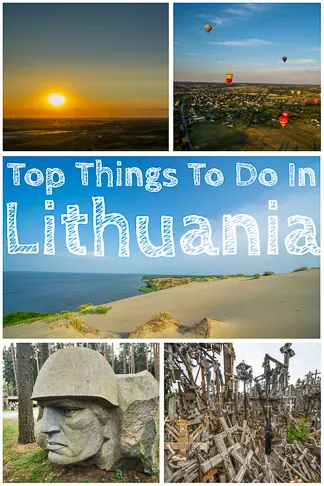
Most holidays start in Vilnius, Lithuania’s capital , but with so many great destinations on your doorstep, you would be wise to plan a broader travel itinerary. To make it easier for you, I have highlighted 25 of the best things to do in Lithuania – accompanied by Lithuanian pictures from my adventures here.
Top Things To Do In Lithuania
1. fly in a hot air balloon ride over vilnius.
This is one of the best ways to view as much of Lithuania as possible. Once you’ve settled down and are familiar with your surroundings, this is the perfect choice for adventure seekers.
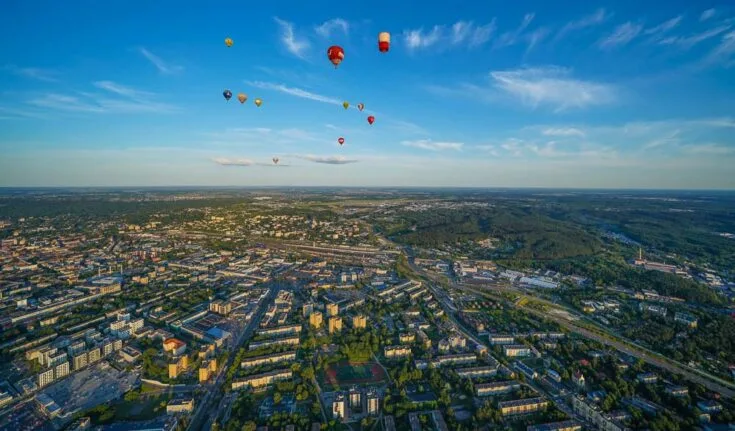
By taking a hot air balloon tour , you will be able to see all of Vilnius and the surrounding countryside without needing to walk a step. As long as you go up on a clear day, you will have exceptional views many kilometers into the distance.
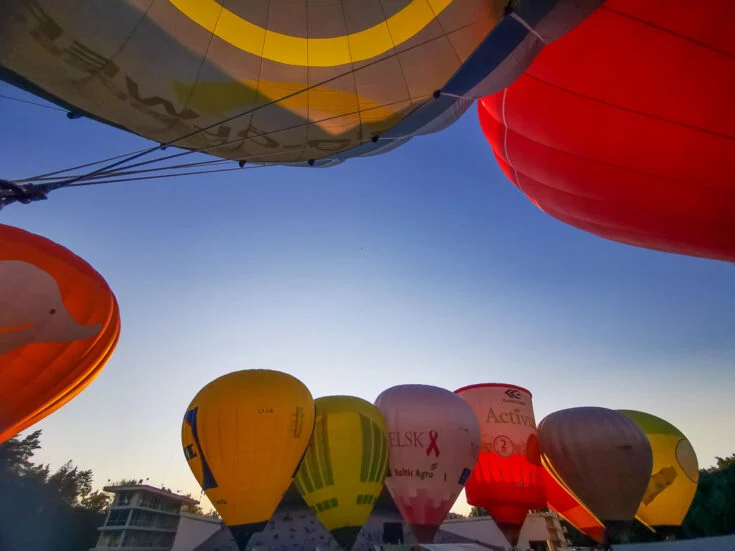
The trips can take anywhere from 1 to 3 hours, depending on which tour option you choose. The more time you spend up there, the more you will be able to see. If you’re not afraid of heights, then you’ll have a great time getting a glimpse of Vilnius from a rare and unique standpoint.
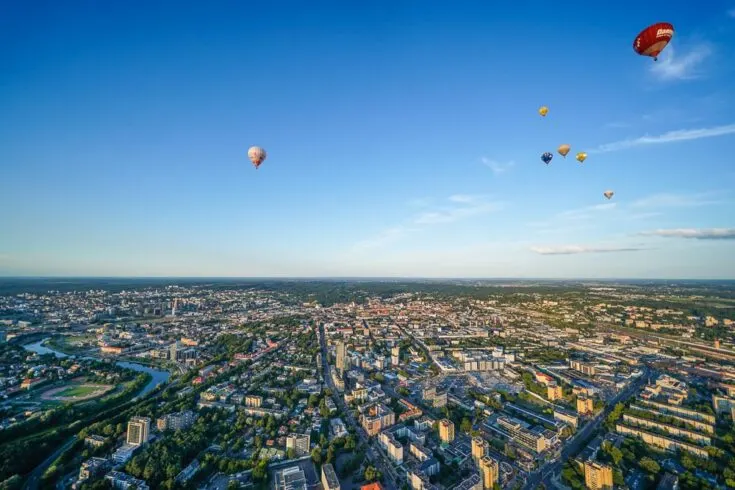
2. Plan a Pilgrimage to the Hill of Crosses
The Hill of Crosses is one of the major Lithuanian points of interest. This unique destination is covered in over 200,000 crosses and is a cultural center for both locals and tourists alike.
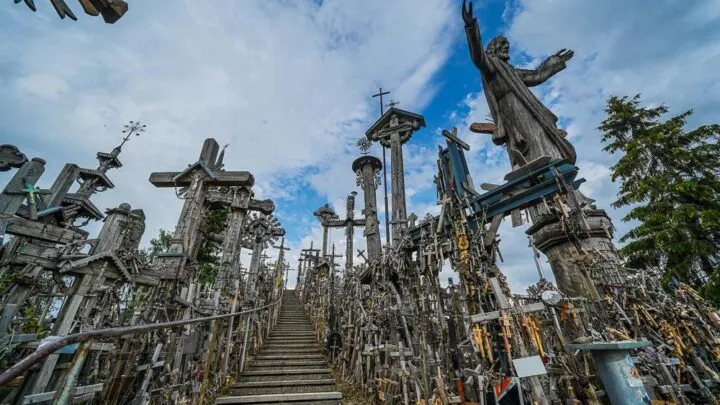
The first crosses were recorded here in 1831. Locals started erecting them as a way to commemorate loved ones who had died during the November Insurrection . This war-filled time made it difficult to locate the bodies of people who had died, so people started using the Hill of Crosses as an impromptu graveyard.
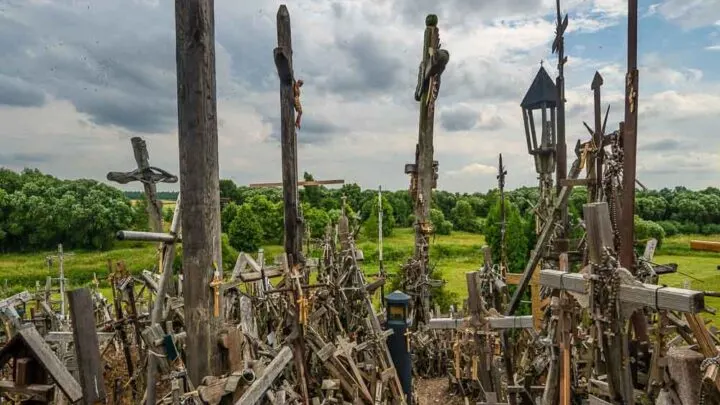
Since then, it grew into a significant part of Lithuanian culture and was used as a symbol for resistance, peace, and hope. Although the hill had been partially demolished over the years, people kept coming back to rebuild it. In modern times, locals and foreigners alike continue to place crosses and other symbols of Christianity throughout the site.
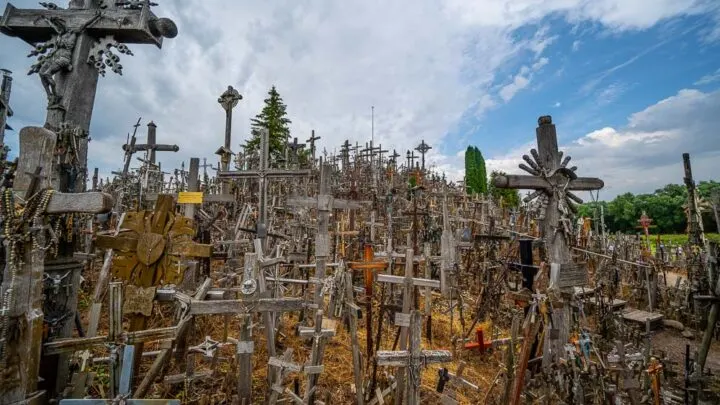
Whether you want to stay in one of the nearby cities or take a day trip from Vilnius , the Hill of Crosses is a must-see destination when visiting Lithuania.
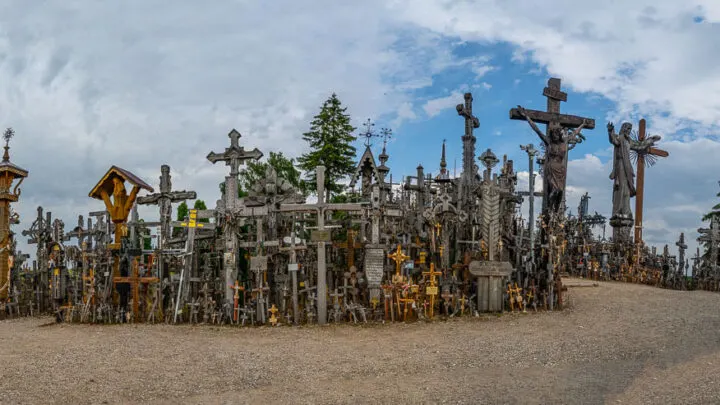
3. Canoe in the Vilnele River
Another activity for the adventurous is a guided canoe trip on the Vilnele River (also known as the Vilnia). It is one of the two main rivers that flow through the city of Vilnius and a great opportunity to explore the city and get a bit wet on a warmer day.
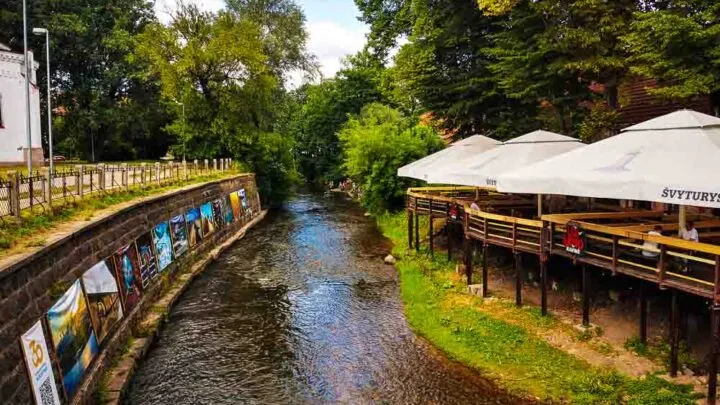
This activity is best enjoyed during the summer or early fall months when the weather is still pleasant. You’ll be taken out by your local expert, who will guide you on this 2-hour experience.
There are easy parts with flat water and then some white water sections offering more excitement. It is considered the most challenging route in Lithuania, but don’t let that scare you off – this is not a country that is known for difficult river canoeing.
4. Visit the Curonian Spit Beaches
When you think of Lithuania, golden sandy beaches might not spring to mind – but they should. The Curonian Spit is the most unique geographical attraction in the country. It is an almost 100 km stretch of dunes that cuts through the Baltic Sea from Lithuania to Kaliningrad, Russia.
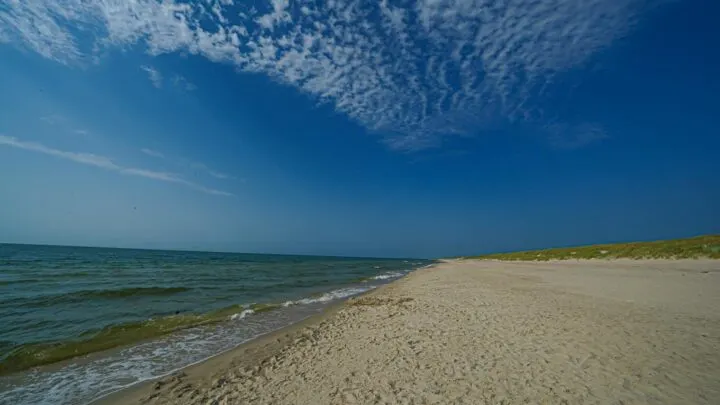
Here you will find many exciting natural activities, as well as plenty of tourists during the summer months. Even though this is a popular destination, you will not have to worry about finding a nice quiet beach to relax on. If one of the spots is too full, you can just walk a little bit further to the next one.
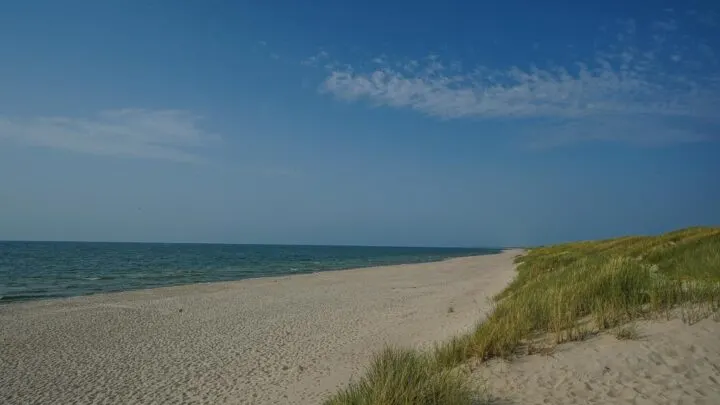
If you want to head out onto the water, you’ll have plenty of opportunities to swim, take boat rides, or walk around looking for amber gemstones that may have washed up. While lounging on the beaches all day is good enough for most people, you can find some other fun Lithuania things to do on our list in the same area.
Tip: If you don’t feel like exploring the spit on your own, you can always choose a full-day guided tour .
5. Hike Up Parnidis Dune
While visiting the Curonian Spit, the Pardanis Dune should definitely be on your list of top things to see in Lithuania. This is the most popular destination in the spit, so a must-see site on its own.
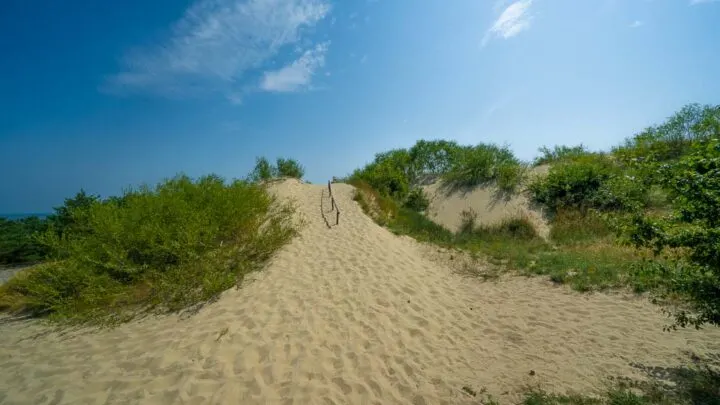
This isn’t your average dune, standing at a height of 52 meters. There is a path that will take you all the way to the top, and once you are here, you will be spoiled with some of the best views in the area. You will also find a massive sundial structure that has been built on a stone pillar. The sundial is almost 14 meters tall and weighs over 36 tonnes.
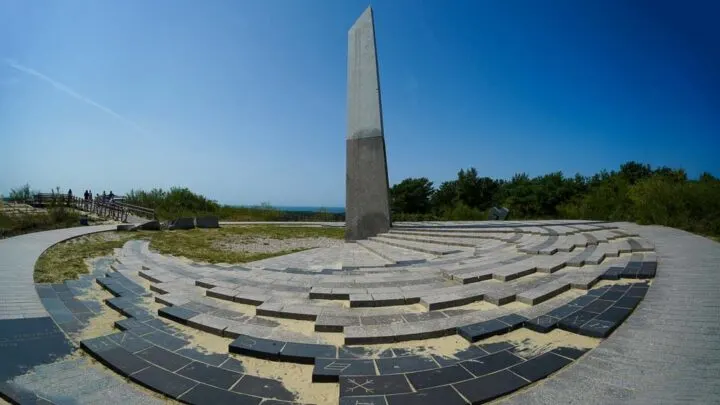
The Pardanis Dune is a wandering dune which means that it moves a few centimetres each year. Although that might not seem like much, this dune has passed through the nearby town of Nida a few times over the centuries.
6. Taste Lithuanian Craft Beer
While exploring Lithuania, you should definitely sample some of the local craft beer. When most people think of beer, they think of European countries like Germany, Belgium, and England. However, Lithuania is not one to be forgotten.
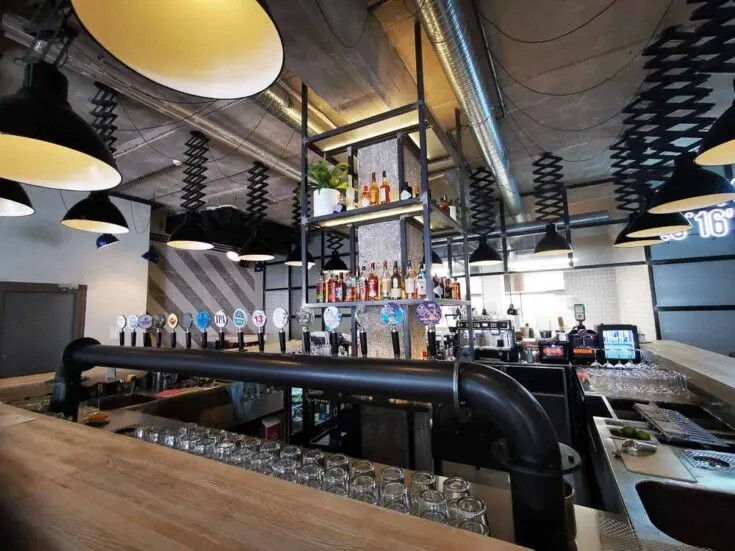
There is an ancient culture of beer making that stems back to the 11th century. Originally taught by German beer experts, Lithuanians then took on a style of their own.
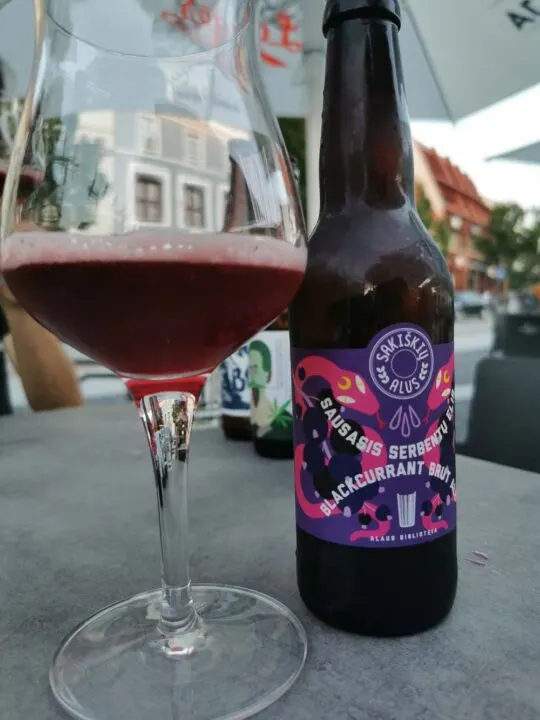
The result is some of the most unique craft beers you’ll ever taste. Beer types like kaimiskas (traditional farm-style ale), landbier, and Kvass are only some of the styles you will be able to try.
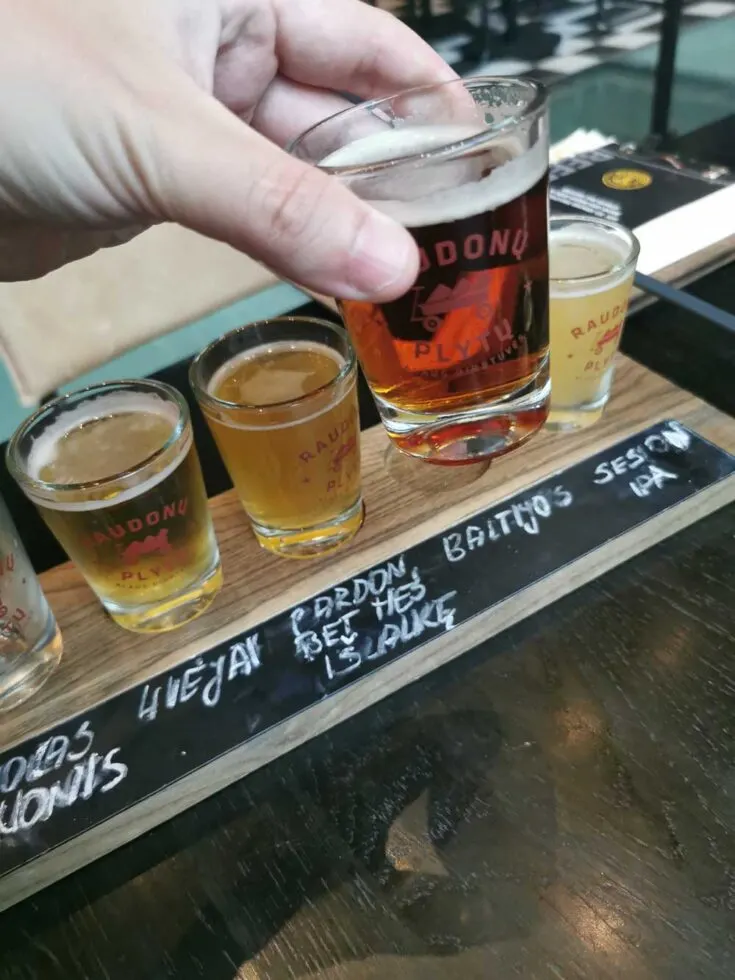
The best place to sample a wide collection of Lithuanian craft beer is in Vilnius, at one of the many beer houses. However, if you are particularly keen to explore Lithuanian beer culture, you can head to the northern regions. Here you will find many large breweries as well as traditional farmhouse brews.
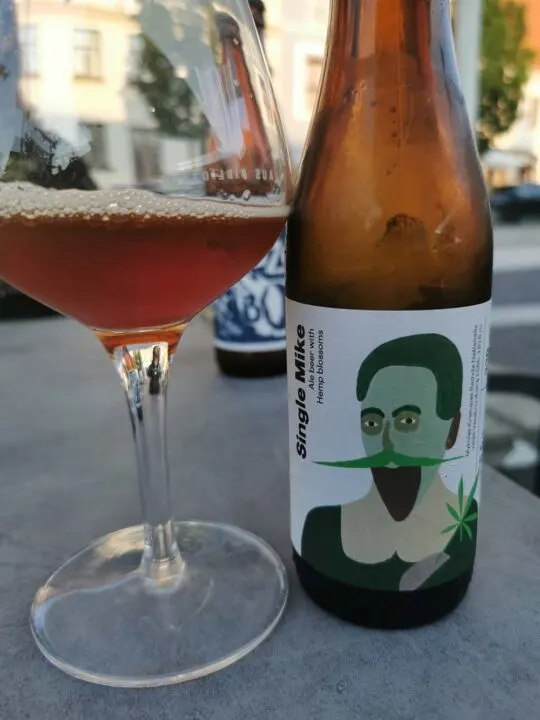
7. Stroll Through Grutas Park
Grutas Park is one of the most unique Lithuanian destinations to learn about Soviet control over Lithuania. It is a park/museum that was founded by a wealthy businessman in 2001. Almost all Soviet Artifacts that were located in Lithuania during the Soviet area is now located in Grutas Park. It’s a great place to explore by yourself or on a guided tour .
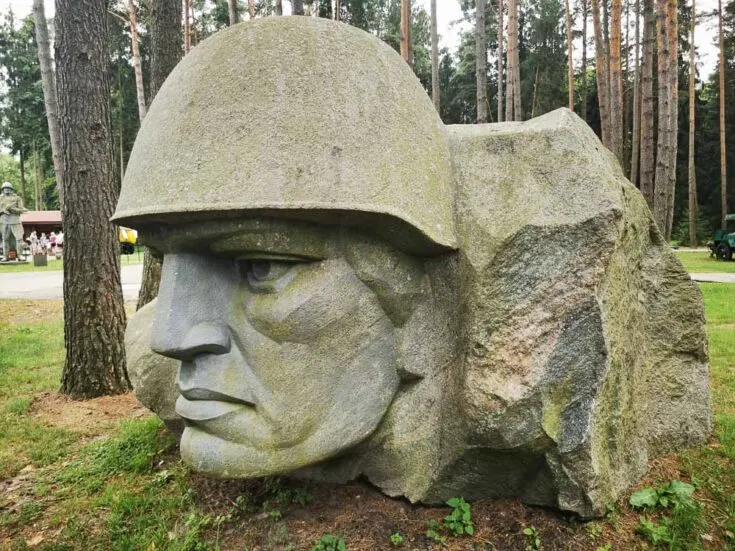
As a part of Soviet rule, many statues commemorating Soviet leaders were erected throughout the country. However, Lithuania largely resisted Russian influence, and as soon as their independence was gained (in 1991), the statues were removed from public places.
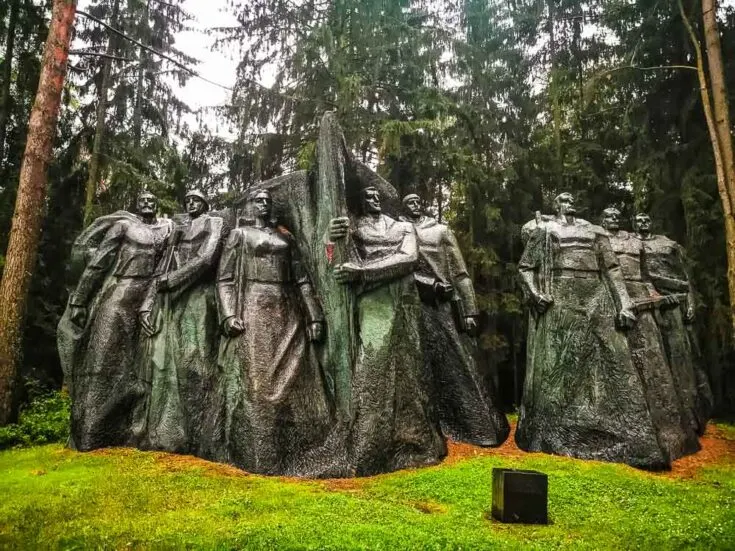
At first, the statues were scattered, but they were then collected and placed in this privately-funded museum. Today you can stroll through the gardens and take in over 80 statues from 46 different sculptors which once was located all over Lithuania during the Soviet area.
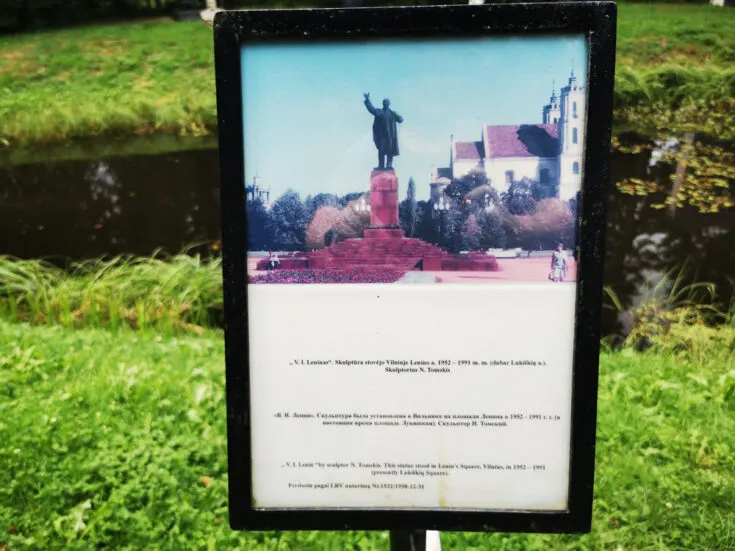
Apart from the statues, you can enjoy traditional Lithuanian pine forests, playgrounds, mini-zoos, and cafes – all of which contain Soviet-era relics. If you’re someone who has a passion for both nature and history, then this unique tourist attraction is worth a visit.
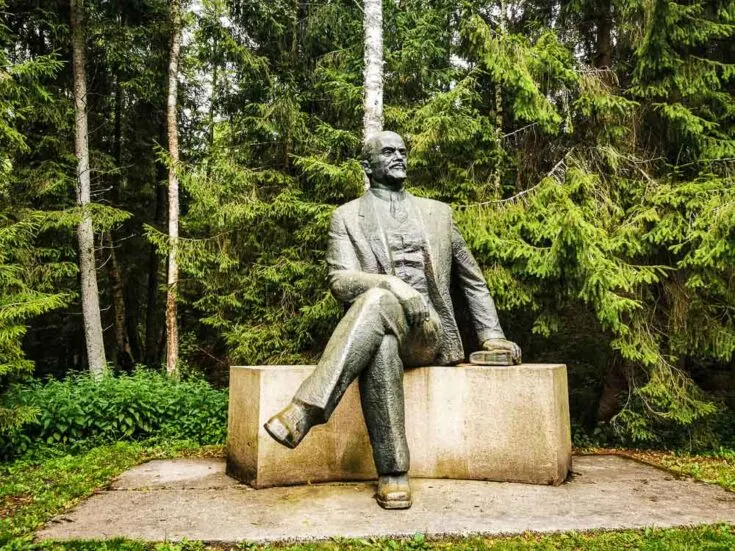
8. Explore Trakai Castle
When you’re staying in Vilnius or one of the surrounding towns, Trakai Castle is a great option to explore. This ancient site has been at the forefront of local history for hundreds of years. Originally the residence of the Grand Duke of Lithuania, the castle served as the main point of defense for Vilnius until it fell into disarray in the 17th century.
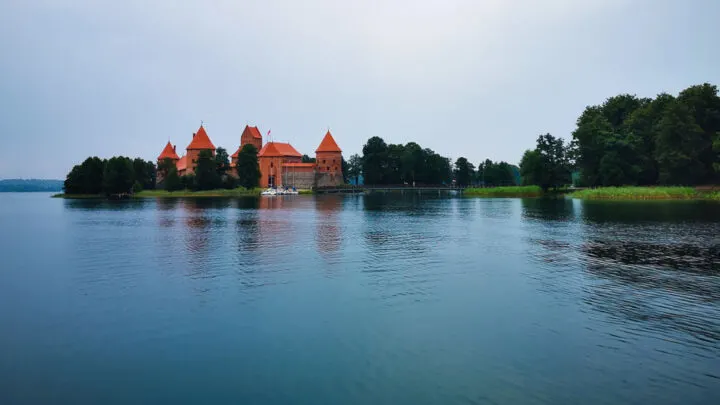
Today it stands as a museum and a place to explore what life was like during these medieval times. The castle grounds are filled with decorations dating back to the Grand Duke’s occupation, archaeological findings, and artworks. You can either explore the grounds by yourself or using one of the many guided tours that are available.
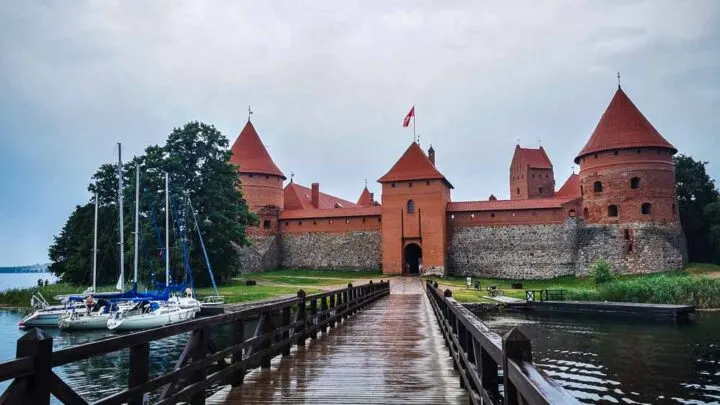
The museum isn’t the only way to experience the castle. In summer, the large grounds burst into life with both music festivals and converts hosted here.
9. Visit the Palace of the Grand Duke of Lithuania
Another piece of ancient architecture that should be on your list of what to see in Lithuania is the Palace of the Grand Duke of Lithuania. The palace is part of the Vilnius Castle Grounds, along with the remains of Vilnius Castle and Gediminas’ Tower. Together they form a magnificent attraction for any history lovers visiting the city.
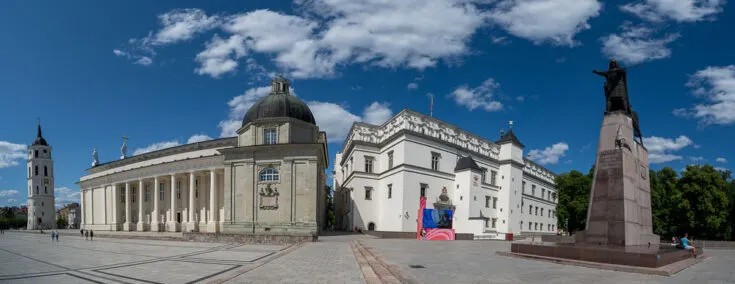
The current palace is a reconstruction, with the original building having been demolished in 1801. It was completed in a renaissance style to match the last remodeling that took place in the 16th century (as well as the nearby Vilnius Cathedral).
Archaeological evidence suggests the site had been used for a long time before the palace was erected. The buildings were remodeled and improved throughout the height of the Grand Duchy of Lithuania and reached their height during the reign of Sigismund II.
Walkthrough the grounds and the palace itself while you take in the magnificent architecture and glimpse back into the opulent lives of the Lithuanian royalty.
10. Step Back in Time at Dino Park
Families and dinosaur lovers alike should make sure to head to the city of Radailiai to visit the famous Dino Park. While most of the activities on this list might be better suited to adults, this is great for the whole family.
The amusement park is filled with over 50 different animated moving and roaring dinosaurs – but don’t worry, they won’t bite. These lifelike prehistoric giants will give you the perfect opportunity to get up close and personal.
Apart from the dinosaurs, you can also try some of their other forms of entertainment – like a 5D cinema, electric cars, and a mirror labyrinth. There are places to eat and snack while exploring the grounds, so you can take your happy time.

11. Take Photos in the Radailiai Upside Down House
Located just 13 km outside of Klaipeda, inside the Radailiai Dino Park, you will find the Upside Down House. This is a popular day trip for tourists and locals who are staying in the area and is a great place to visit with kids while exploring Dino Park.
The Radailiai Upside Down House is exactly as the name suggests – an upside-down house. This type of attraction has become very popular worldwide and is a unique experience where you will get plenty of selfie-worthy moments.
Stroll around a house where all the household appliances will be hanging from the rooftop – don’t worry, they won’t fall on you. It’s a truly bizarre place that acts as a life-size art exhibit. If weird and wonderful things interest you, then get your tickets and start snapping photos.
12. Experience Magic at the Vilnius Museum of Illusions
Few places offer the same level of mystery and satisfaction as the Vilnius Museum of Illusions. Most of the museums that you find in Vilnius or throughout Lithuania are focused on local history or culture – but not this one. Here you will be able to entertain your inner child and be mindblown by various optical illusions and unique exhibitions.
It’s a great place to bring the family, and any children under 7 years old can accompany an adult for free (max 3 kids per adult). The price is reasonable at $13 per adult and $10 for students/seniors.
If you need some help navigating through the museum or understanding some of the exhibits, you can just ask one of the helpful staff for help. The Vilnius Museum of Illusions is the perfect spot for a more unconventional Lithuanian experience.
13. Stop at Klaipeda Old Town
Klaipeda, Lithuania , is a unique town with German-influenced architecture found en route to the Curonian Spit. If you are planning a trip to the famous Baltic beaches, this is a great stop on the way with plenty of comfortable accommodation options available (like the Amberton Hotel ).
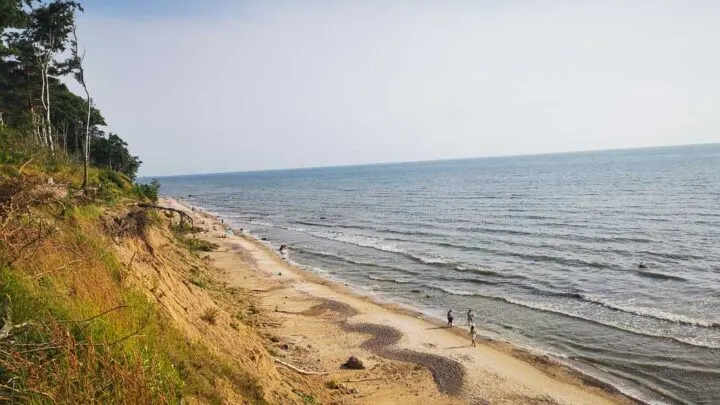
The town itself is small but rarely gets overcrowded. Take your time walking through the cobblestone streets as you observe a type of architecture not found anywhere else in Lithuania. This is due to Germany’s control of the area during WWII.
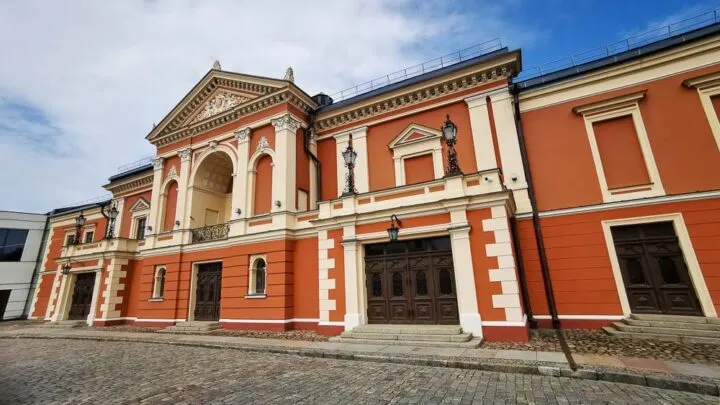
While exploring the town, make sure to check out two of the most popular spots – Turgaus Gatve and Theatre Square. The latter is where Hitler is said to have announced the town’s annexation.
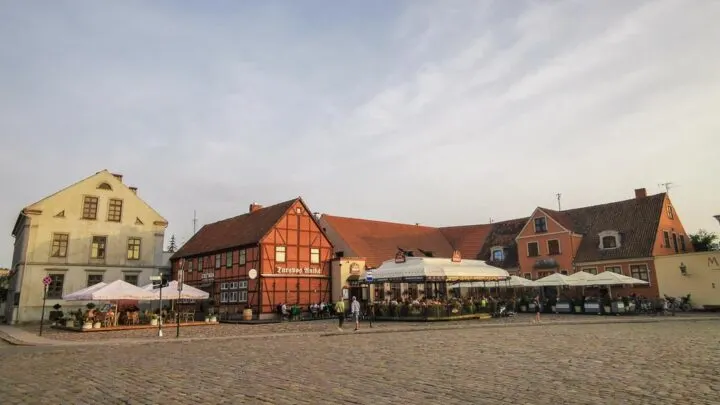
Friedricho Pasazas is another great place to visit during summer. Here you can spend the afternoons in an open-air courtyard listening to live music performances while eating local cuisine amongst both locals and tourists alike.
14. Kaunas, Lithuania
Kaunas is the second-largest city in Lithuania and was the first city in eastern Europe to be declared a UNESCO City of Design . This is thanks to the European Art Deco style of architecture that was adopted after World War I.
When the city went through this period of modernization, the culture surrounding it also adapted. There is a cafe culture in the city, where you will find plenty of coffee shops with tables spewing out into the surrounding streets. It’s a lovely place to walk around and just take in the local atmosphere.
When you’re not getting lost in exploration, you can also check out some of the many popular Lithuanian attractions found throughout the city. Some of the most noteworthy include the Ninth Fort, Pazaislis Monastery, Kaunas Castle, and the Devil’s Museum.
15. Pažaislis Monastery
The Pažaislis Monastery is one of the most magnificent churches in the country. Situated on a peninsula extending into the Kaunas reservoir, this destination is a prime example of Baroque architecture.
The grounds are massive, and walking up to the large charge is an experience on its own. Once you walk inside, you will be greeted with marble decorations and ceilings painted with frescos dating back to the 17th century.
One of the things that are so impressive about this church is that its artwork and marble decorations have survived countless wars, changes in ownership, and theft. This is now a popular tourist destination, managed by a convent.
If you visit between the summer months of June and September, you also be able to attend the Pažaislis Music Festival. Three months of concerts are held on the grounds – but not inside the actual church. It has been a tradition since the 1960s and still remains a popular event that attracts thousands of visitors.
16. Visit the Devil’s Museum
Don’t let the name scare you. The Devil’s Museum is one of the stranger things to do in Lithuania and perfect for those who love eerie artwork. The museum itself is not at all creepy; it’s just the type of artwork that is on display that might make you squirm.
You can find interesting pieces depicting devils, wizards, witches, and plenty of other mythological monsters. Although the content might not be of interest to you, the artwork itself is very well done and worth a look.
The museum was opened after the founder of the collection’s death in 1966. At the start, there were 260 pieces on display. However, after the public caught wind of this creative collection, more and more people started donating their own pieces.
By the mid-80s, a three-story extension had to be built to house all of the pieces. And, by 2009, there were over 3,000 items on display. There are more than enough artworks for you to spend a few hours wandering around the house.
17. Church of St. Anne, Vilnius
As far as churches go, Vilnius is definitely the number 1 destination in Lithuania. With a total of 28 churches (1 church per 700 inhabitants), you’ll need to spend more than one day exploring the city to see them all.
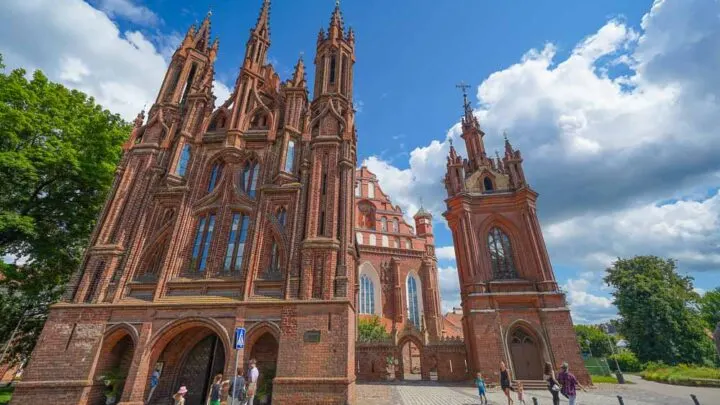
If you are limited on time, the Church of St. Anne is one of the main ones worth visiting. It is only a 10-minute walk from Vilnius Cathedral and offers a gorgeous Gothic design with characteristic red walls, two towers, and a nave.
The original church was built from wood in the 15th century, but it was only during its rebuild in the 16th century when it became a prominent feature of the city. 33 different types of clay brick were used in its construction, which were then painted red. Inside you will find beautiful Baroque-style decorations along with an impressive altar.
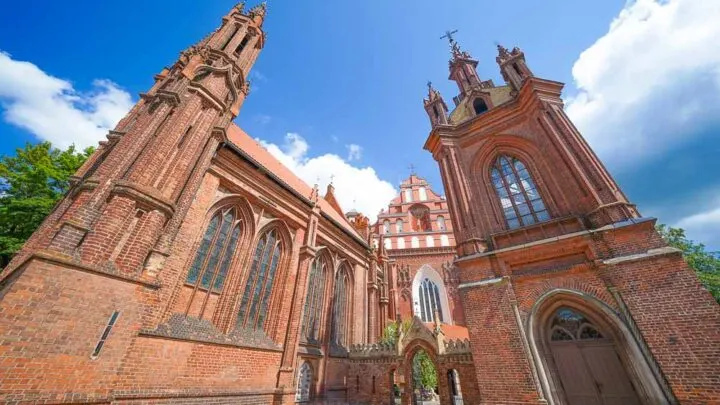
Although it is not the main Roman Catholic Church (those honors go to Vilnius Cathedral) since 2018, it has been used to celebrate Mass according to the traditional Roman rite. Once you’re finished exploring the church, you can climb up the neo-Gothic bell tower next door, which was constructed much later in the 1870s.
18. Go Underground at Plokstine Missile Base
Have you ever wondered what an underground missile silo looks like? Well, then Lithuania has the perfect museum for you. For a small fee, you can head straight into the first Soviet Union nuclear missile base.
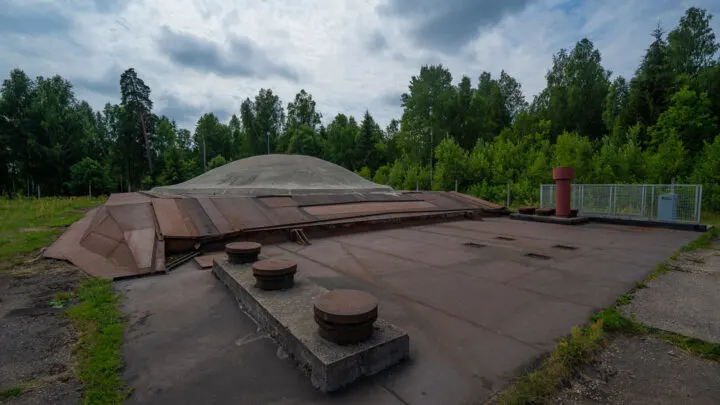
Although most of you might never have heard of the Plokstine Missile Base, it is where the Cuban missile crisis nuclear warheads came from. They were transported from here to Sevastopol, where they were then loaded on a ship headed to Havana , Cuba .
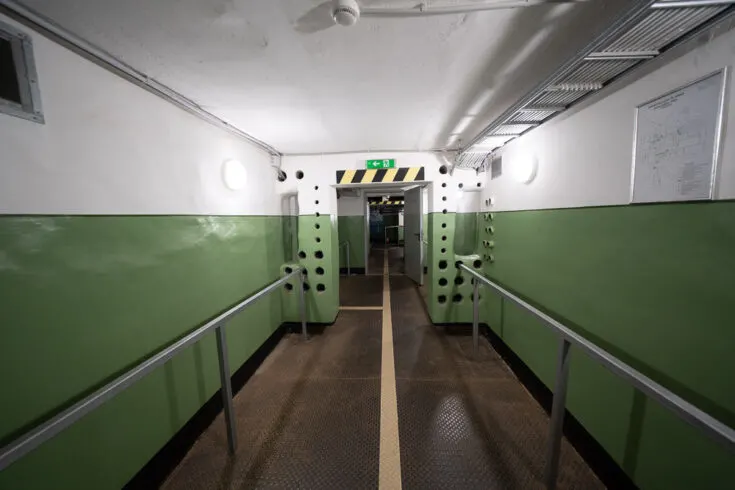
The silo is located in the Plokstine forest in northwest Lithuania. The site was chosen because of its remoteness, which does make it slightly more effort to visit – but still an important historical destination.
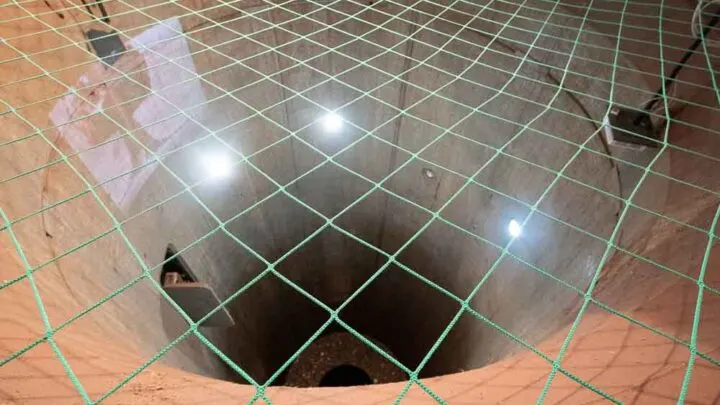
Plokstine Missile Base was decommissioned in 1978 and remained abandoned for many years, where it suffered from metal theft. Luckily, in 2012 the cold war museum was opened here, allowing the history of that era to be preserved.
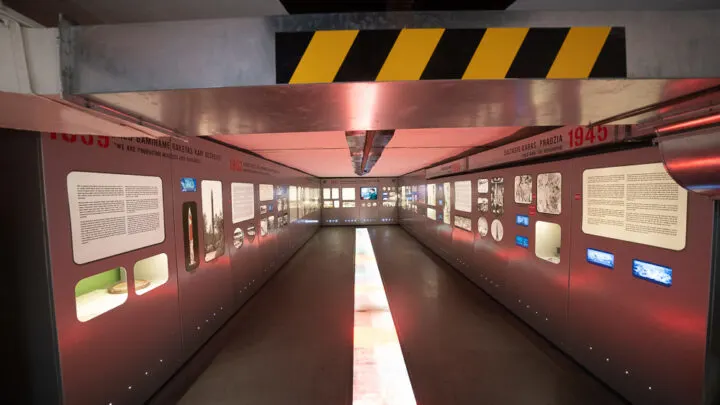
19. Visit the Self-Proclaimed Republic of Uzupis
Did you know there is a self-declared republic inside Vilnius? The Uzupis Republic declared its independence on the 1st of April 1997 and is an art-focused town that is definitely worth the visit.
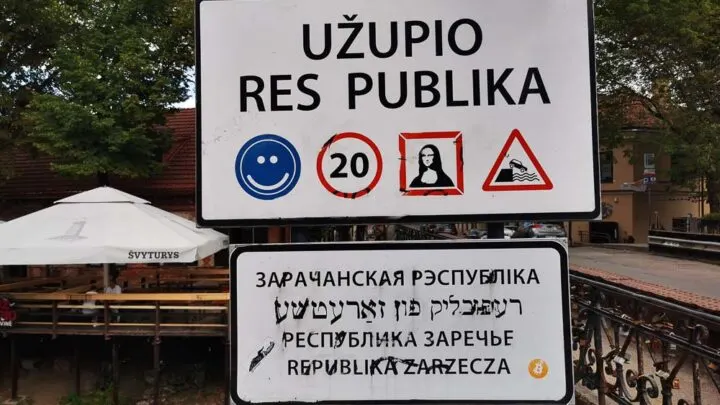
Artists have favored this part of Vilnius for a long time, and as a result, the neighborhood has transformed into an art-focused bohemian destination. Although it’s small (only 0.6 square km), you can easily fill up a day exploring all of the local hotspots.
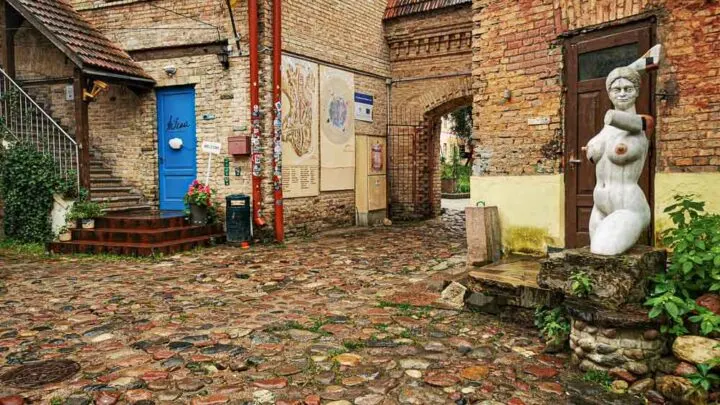
Whether you’re walking along the Vilnele River, spotting the legendary local mermaid or visiting the art incubator to see all the amazing creations, Uzupis is a great holiday destination. Of all the sculptures you’ll see in the republic, make sure to spot the bronze archangel Gabriel in the town square.
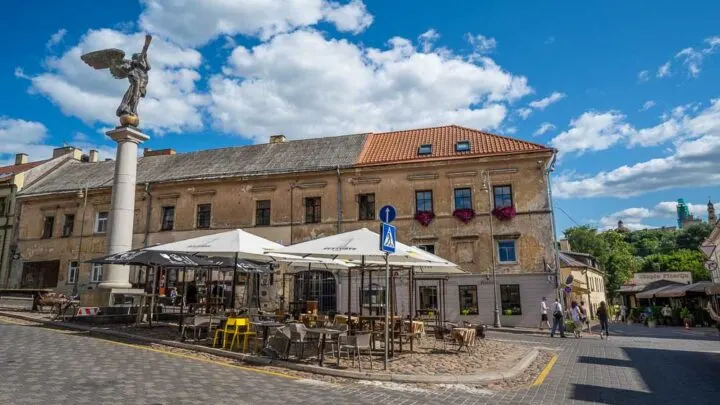
20. Pay Respects at Vilnius Cathedral
When you’re exploring the old town of Vilnius, the main cathedral is a worthwhile stop. Although it isn’t the only church in the city, it’s by far the biggest and most beautiful. It’s also very close to the Vilnius Castle Grounds, which makes it great to include on a day tour.
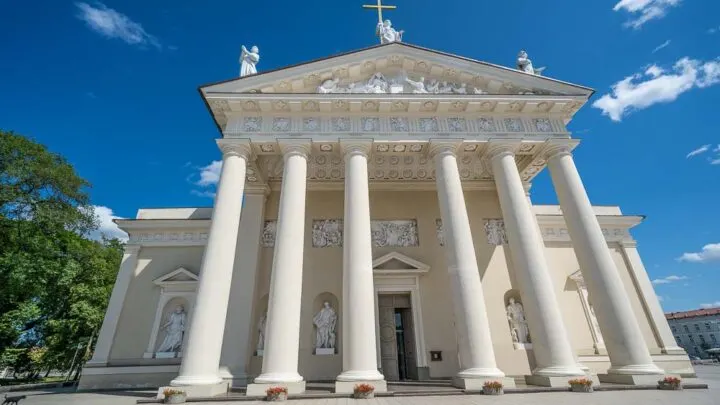
The magnificent white walls and detailed interior are the main attractions, but you can also walk up the Vilnius Bell Tower to get some incredible panoramic views of the surrounding areas. The entrance to the tower is just outside the main entrance.
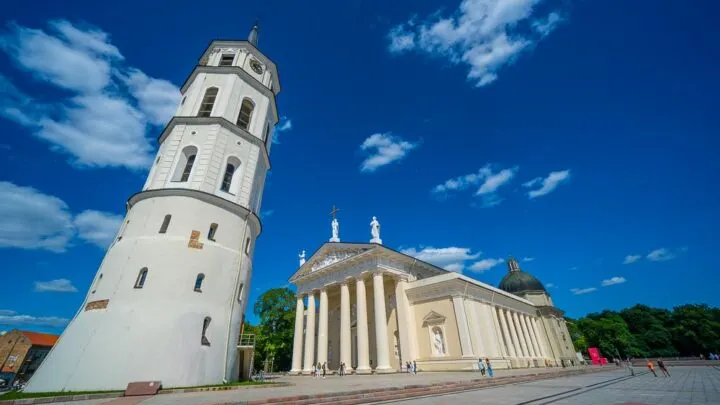
Vilnius Cathedral has had a long history since its inception in the 13th century. Originally a Gothic-style church, it was rebuilt towards the end of the 1700s in its current Neoclassical style. It’s a great destination to appreciate the struggles Vilnius has faced and overcome over the centuries.
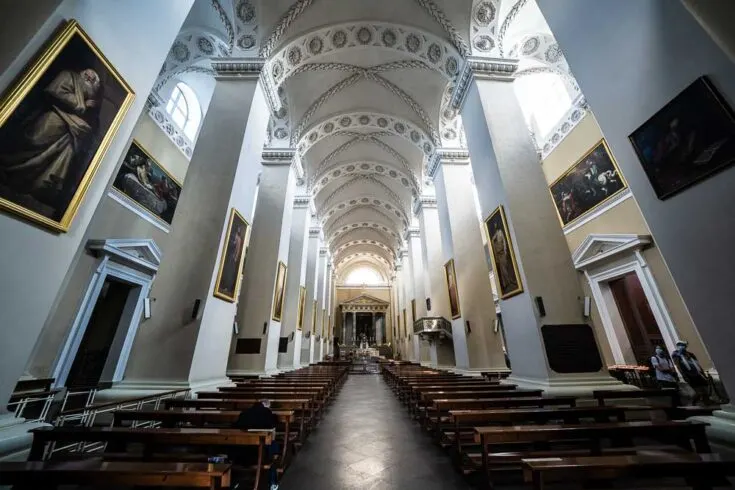
21. Go Skiing in Lithuania
This northern European country might not be as famous for skiing as France or Switzerland, but it still offers many wonderful opportunities. Not only can you ski here in winter, but there is also a state-of-the-art indoor venue available all year round.
The Snow Arena is a popular destination in the south of Lithuania, just outside Druskininkai. It’s a 2-hour drive from the capital and is a very relaxing area known for its spas and tranquility.
Although most tourists prefer to visit Lithuania during summer, if you are here during the colder months, you will have access to many more skiing locations. When in Vilnius, you can travel just outside the city to the Liepkalnis entertainment area. Here you will find snowboarding and skiing in the winter or mountain biking, climbing, tubing, or tobogganing in summer.
22. Relax in Druskininkai
What is a holiday without a bit of relaxation? If you need a break from the hustle and bustle of the major cities, head over to Druskininkai in the southern part of Lithuania. It is located just over a 2-hours drive away from Vilnius and has been a popular spa destination since the 19th century.
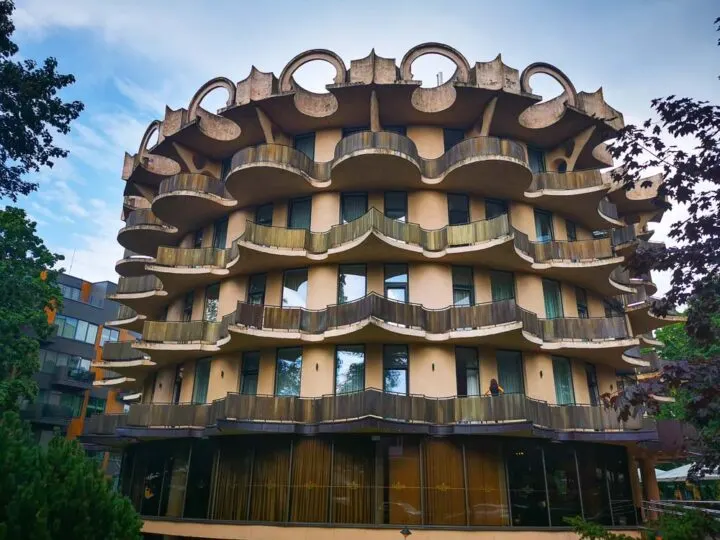
Like much of Lithuania, the history of Druskininkai has been fraught with warfare and enemy occupation. Despite all the hardships, the town maintained its focus on relaxation and spa life. It started growing into the popular spa town that it is today after WWI and has continued to be a major destination for people from Lithuania as well as neighboring Poland, Belarus, and Russia.
There are plenty of exciting events and attractions to visit in the town. If you aren’t relaxing in a spa, you can visit the first water park opened in Lithuania, the Grutas Park Soviet Memorial, or go skiing at the indoor Snow Arena. The annual Druskininkai Poetic Fall and International Art Festival are also great ways to experience the local culture.
23. Visit the Lithuanian National Opera & Ballet Theatre
Lithuania’s history of ballet and opera is not as longstanding as some other European countries, but the culture has developed thanks to the Lithuanian National Opera & Ballet Theatre (LNOBT). It was opened in 1974 and is the largest theatre of its kind in the country.
The modernly designed building in Vilnius is a place to learn more about ballet and opera in Lithuania, but you can also attend shows here. It is still a fully functioning theatre with events hosted throughout the year. You can book tickets online, with prices ranging from $20 to $70 depending on the event and your preferred seating.
In Summer, the LNOBT moved some of their events to an open-air theatre erected in Trakai Castle. This is a popular attraction that has been going on since its inception in 2001. It’s a great opportunity to get outside on a warm Lithuanian day and experience local culture and art.
24. Take the Train up Gediminas’ Tower
Gedimimas’ Tower is considered the birthplace of Vilnius. The hill where the tower is located is where Grand Duke Gediminas had his vision for the settlement. Although not much of the original structures remain, the tower is still a beacon of history and an important landmark of Vilnius.
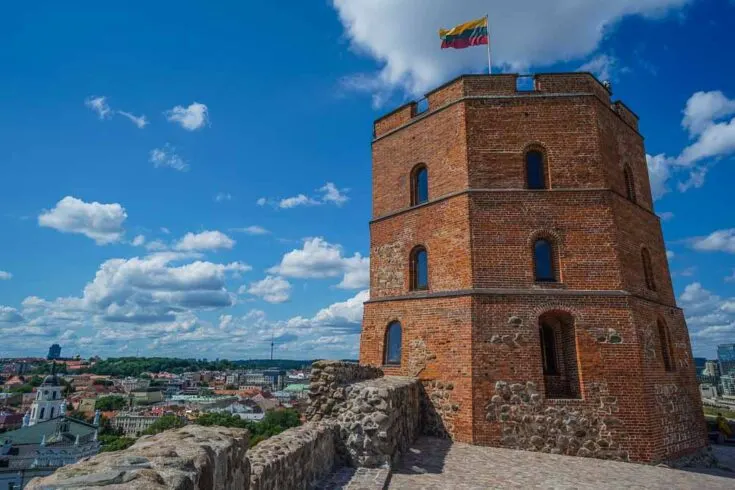
It is located on the same grounds as the Palace of the Grand Duke, so it can easily be viewed on the same day. Once you reach the top, you will be able to enjoy some of the best views of the city. If you aren’t a fan of walking up hills, don’t worry, there is a functioning train that can take you up/down.
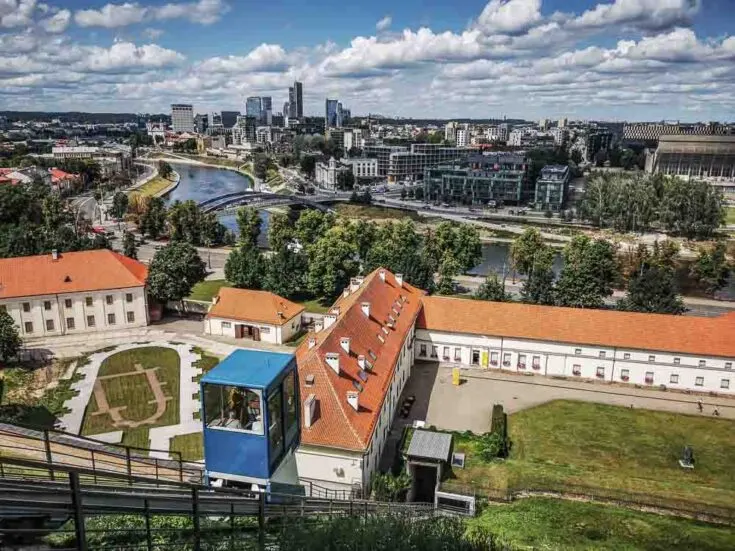
Inside the tower, you will find a small museum showcasing the history of the surrounding area. Archaeological findings are displayed as well as the different designs of Vilnius castles that were prevalent throughout the 14th to 17th centuries. Few places to visit in Lithuania offer such an in-depth glimpse into the country’s past.
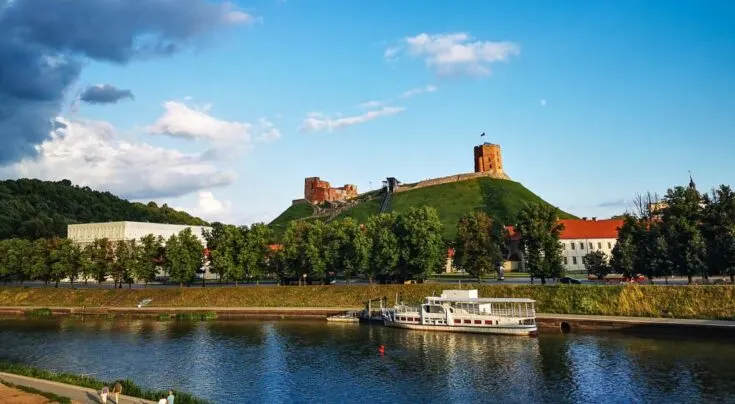
25. Hangout at the notorious Lukiškės Prison
Once one of the most notorious prisons under the Soviets, now the new cultural hub in Vilnius with art gallery, concerts, and a bar.
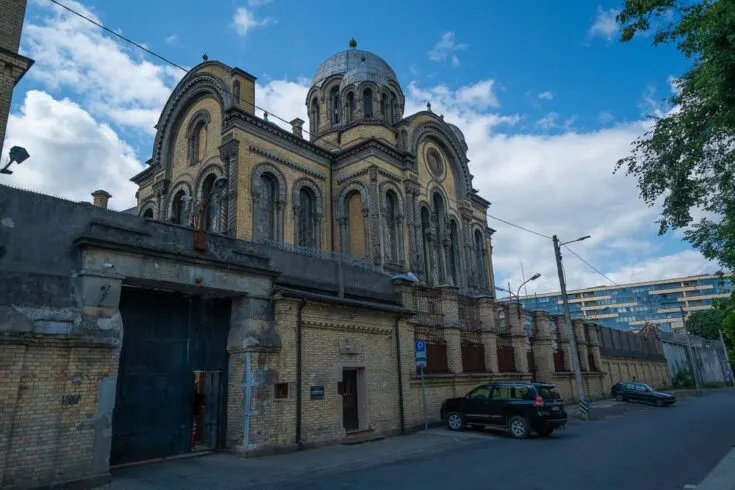
Once the most notorious prison in Lithuania until the prison was officially closed on 2 July 2019.
The prison opened up in 1904 when Lithuania was part of the Russian Empire. It was also used by the Germani Nazi s occupation of Lithuania during WW2 when it was used by the Gestapo as a holding cell for thousands of Jews.
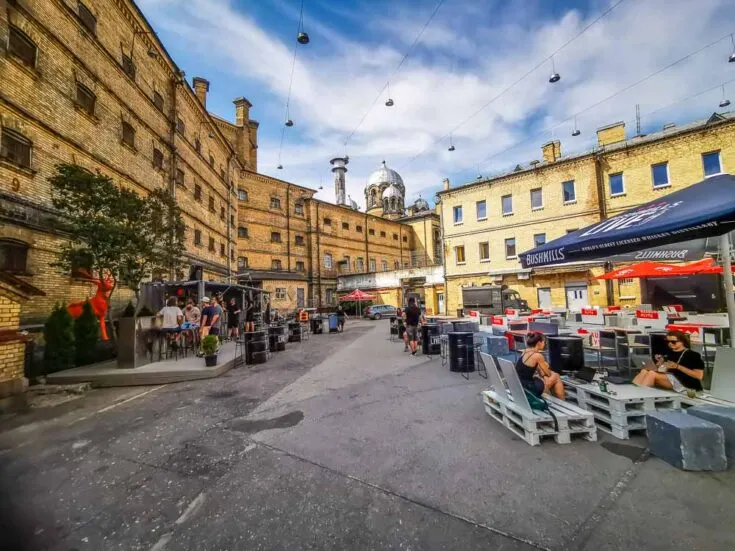
Now the prison has reopened under the name Lukiškės Prison 2.0, which these days offers everything from art studios which is used by around 250 famous local artists. You can also tour the old prison with some of the old prison guards working as guides in prison now, (you will hear some crazy stories from their own experience working in the prison during the time it was a notorious prison,
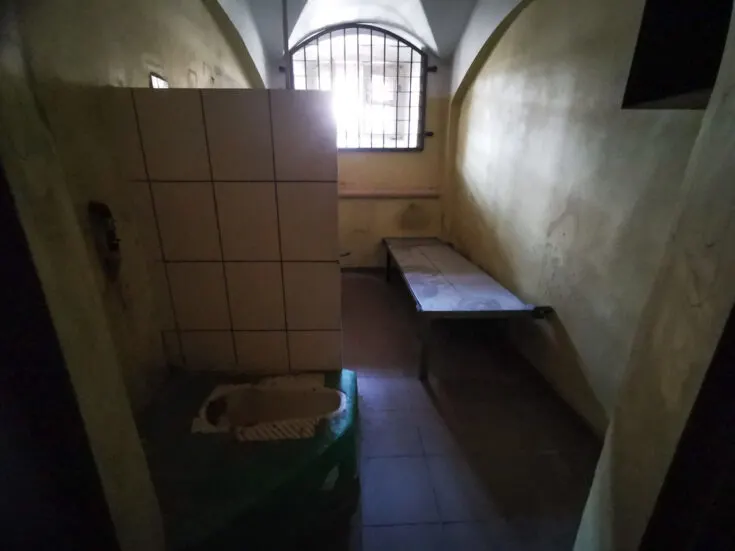
Visit Lithuania Tourist Attractions
Lithuania is truly an unconventional European holiday destination. The curious combination of Balkan culture and modern European architecture is one of its major selling points.
Learn about the Soviet occupation of the country, sample some of the local’s sensational craft beer, or just spend your day relaxing on white sandy beaches. There are so many fun things to see in Lithuania that you will want to visit again and again.
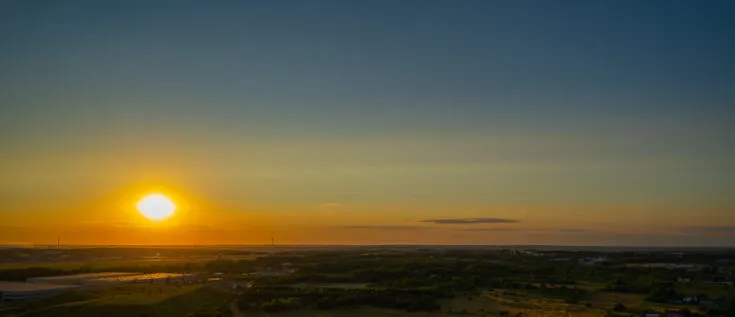
Now that you know exactly what to do in Lithuania, I hope you enjoy your time here as much as I did. If you find any other great things to do in Lithuania that I haven’t mentioned, please let me know in the comments section below.
Best attractions in Lithuania: Top 25

Where to go in Lithuania? When choosing a tour of this country, tourists often ask themselves the question, what to see in Lithuania in the first place? Below are the most interesting sights in Lithuania, which must be visited as part of an introductory tour of the country.
What to see in Lithuania first
Being the closest to the countries of the former Soviet Union, this country is associated with something native and close. In addition, guides in Lithuania perfectly knows not only English, but also Russian, which is even more attractive to travelers from Belarus, Ukraine and Russia. Knowing the main local attractions, you can easily organize the best vacation of your life abroad.
1. Vilnius old town (Vilnius)

The sights of Lithuania begin with the Old Town of Vilnius. It is a true historical center with a special atmosphere of the past centuries and many cultural monuments. The Old Town of Vilnius has preserved the old architecture almost completely. The narrow streets paved with cobblestones and cobblestones allow only for walking. Wandering along these intricate paths among the ancient stone buildings, you can find yourself walking by no less interesting churches - Orthodox, Lutheran, and Catholic. Also worth seeing are museums, hotel yards, educational institutions, and apartment buildings. Here you can get acquainted with the Gothic architecture, see buildings created in the style of the Renaissance, Art Nouveau, Classicism, Baroque. In addition to a visual acquaintance with the historical part of the city, a walk through the Old Vilnius suggests an opportunity to have a snack in a cozy cafe or restaurant. There are also many souvenir shops, where you can buy something as a gift for relatives and friends.
Lithuania | Save on hotel reservations
2. trakai castle (trakai).

Lithuanian sights are full of amazing natural colors and real architectural masterpieces. The Trakai Castle, located 30 km from Vilnius and near the small ancient town of Trakai, is just that. The island castle is a Gothic architectural ensemble. In the center rises a huge princely palace. The main building is surrounded by powerful defensive walls and a lot of towers. The Trakai castle is a must-see in Lithuania. You will be impressed not only by the external picture of the architecture. The excursion through the halls of the palace deserves special attention. The state rooms of the Palace are decorated with frescos, stucco and stained glass windows. Every detail of the interior and exterior speaks of the wealth of the people who once lived within these walls. Even the saddles for the horses were used here in gold. The special romance of a guided walk to the walls of Trakai Castle is in the possibility to admire the water smoothness of lakes Helvia and Luka, washing the approaches to the ancient building.
Official site : https://www.trakai-visit.lt
3. Neringa resort town (Curonian Spit)

It’s hard to imagine the sights of Lithuania without Neringa Resort City. This rather young tourist corner of the country is especially recommended by guides when answering the question of what to visit in Lithuania in the first place. Neringa was founded in 1961. However, the history of the origins of this wonderful place goes back many centuries. Neringa is situated on the Curonian Spit. The resort town is rightly called the pearl of Lithuania. It is a haven for artists and a place of attraction for tourists from all over the world. There you can truly relax and unwind. The beaches of Neringa are of the highest level of organization and environmental cleanliness. There are many hotels and private inns that welcome visitors all year round. You can go fishing, take a rest, or just enjoy walking to the landmarks and relaxing by the water. Neringa is famous for its tall pine trees, unique vegetation, clean air and mild climate. It is the right place to revitalize the body and relax the soul.
4. Curonian Spit National Park (between Klaipeda and Kaliningrad)

Lithuania’s sights cover a huge territory. Literally every corner of the country is interesting in terms of tourism. Not far from the city of Klaipeda is a unique place - the Curonian Spit. Part of this area is located in Lithuania - Neringa, and part of the Curonian Spit is part of the Kaliningrad region of the Russian Federation - a national park. The park’s territory is washed by the salty waters of the Baltic Sea and the freshwater Kurshsky Bay. The colors of the dune landscapes are truly impressive. In this place, a combination of fir and birch forests is gathered. Vegetation will surprise not only biologists. The brilliance of local plants and the uniqueness of the geographical picture will prompt the spirit of true natural beauty and ordinary tourists. Ecotourism is widespread here. Come to this park, to rest your soul, breathe fresh air and enjoy the untouched beauty of wildlife. Not far from the Curonian Spit is located three residential villages and several tourist centers.
5. Kaunas Castle (Kaunas)

Lithuanian sights such as the Kaunas Castle are a must-see as part of a sightseeing tour of the country. After all, this is something to see in Lithuania that is especially curious, in terms of historical interest, as well as in terms of getting to know the unusual architecture of the past times. Until now, almost a third of the buildings have survived. The castle is of Gothic architectural style. The round building is made of stone. Around the preserved main part of the castle there are two towers, fragments of the fortification wall and other small buildings of intricate forms. You can learn about the history of this Lithuanian landmark in the museum, which is organized in one of the towers. It is noteworthy that colorful theatrical performances are regularly held on the territory of the castle. In this place there are a lot of entertainment events that may be of interest to tourists. Guides in Kaunas recommend visiting the annual operetta festival, medieval music concerts, costume shows.
Official website : https://www.visit.kaunas.lt
6. Amber museum in Palanga (Palanga)

What to visit in Lithuania? Of course, the Amber Museum, located in the city of Palanga! It is a unique museum, which colorfully tells the history of the “sun stone”. Visiting the walls of this attraction, you can plunge into the bright colors of the stone fairy tale. Museum of Amber was opened in 1963 in the building, which once belonged to the famous historical figure - Earl Tyshkevich. The Count’s Palace was built in 1897. Today the walls of the building have been restored, and the surrounding areas are adapted for comfortable walks and recreation. But the most interesting thing is in the 15 halls of the palace. Once you cross the threshold of the museum, you encounter a unique collection of amber. See the “live” beauty of the stone, feel the attraction of amber, listen to the fascinating stories about mining Lithuanian “gold” - all this is offered during a visit to the museum. Here tourists are also told about the life of the founder of Palanga - Earl Tyshkevich. After visiting the museum you can take a walk in the park near the palace.
Official site : https://www.pgm.lt
7. Hill of Crosses (near Šiauliai)

Lithuanian sights related to local shrines are especially interesting and impressive! For example, the famous Mount of Crosses is a must-see in Lithuania. The unusual hill is about 12 kilometers from the city of Šiauliai. On the hill there are more than 50 thousand crosses of different size and shape. It remotely resembles a cemetery, but there are no graves in this place. There is a legend that explains why there are so many symbols of faith. It turns out that by placing the cross on the hill, people hope to attract good luck. This is exactly the reward everyone who sets his cross on the mountain will receive, if the prophecy is to be believed. In this place you can see crosses of all kinds. There are both huge wooden crucifixes and small crosses. There are entire statues created in the form of the holy face of Christ, and there are simple wooden crosses without additional patterns and inscriptions. The atmosphere of this place is strange, but light. This is something really worth visiting in Lithuania. Memories after visiting the holy hill, will remain vivid. And who knows, maybe luck will really smile.
Official site : https://www.hillofcrosses.com

Lithuanian sights are fascinating with a huge number of protected places of nature. Kernavė Museum Reserve is a tourist destination that is especially popular with visitors. Kernavė is the first capital of Lithuania. It is a complex of five settlements, 35 km from Vilnius, on the banks of the Neris River. This wonderful place keeps the memory of the history of the development of the country and the Baltic peoples. Traces of the civilizations that lived here in the 10th century B.C. have been found in this reserve. This place is especially attractive in early July. The Days of Living Archaeology festival is organized to celebrate the State Day in Kernav. During this period it is possible to see grandiose performances demonstrating the peculiarities of ancient crafts. There is old-time music everywhere, and every detail of the festival has a distinctive local flavor. You can also try different medieval entertainment. For example, you can compete in the martial arts or touch the skills of medieval warfare.
Sights in Lithuania: What else to see while in Lithuania
The list of historical monuments, parks and those places that may be of interest to travelers in this state is extremely extensive. Below you will find photos and descriptions of tourist sites that are included in many tours in Lithuania , and you can decide whether or not to include them in your sightseeing itinerary.
9. Kaunas Old Town (Kaunas)

Lithuania’s sights are crowned by perhaps the most impressive part of the country, the old town of Kaunas. The old part of Kaunas concentrates a huge number of unusual monuments of architecture. The atmosphere here is saturated. The area is simply mesmerizing in its beauty. Start your trip to the old part of town with the Town Hall Square. Here you can see the former Palace of Marriages, and now the White Swan of Kaunas - the City Hall. Further along the way you can see the Kaunas Cathedral of Peter and Paul. The pedestrian street Vilniaus deserves special attention. Here you can walk and enjoy the beauty of the old part of town. Street is very lively and colorful. Walking along it you can see a lot of strange buildings. Part of the buildings are given under the residential premises, but a greater number of buildings occupied by a cozy cafes, souvenir shops, stores. After walking along the pedestrian street Viliņiaus and visiting the stores and cafes, it is worth going to Laisves Alley - the widest pedestrian boulevard of the old city.
10. Cathedral (Vilnius)

A list of must-see places to visit when exploring Lithuania would be incomplete without such a sight as the Vilnius Cathedral. It is the most important Roman Catholic cathedral in Lithuania. The cathedral was given the status of a “small basilica”. The history of the cathedral goes back centuries. The building literally “remembers” the days when Vilnius was founded. It is the oldest cathedral in Lithuania, in which the great Lithuanian princes were crowned. The cathedral is located in the center of Vilnius, at the foot of the Zamkova Mountain. The building has gone through many changes, including some destructive ones. Nevertheless, today the cathedral retains its status as one of the most beautiful architectural monuments in Lithuania. It is built in the style of classicism. Its exterior resembles that of an ancient Greek temple. Inside it is no less attractive in terms of decoration. Unique paintings, frescoes and other works of art create a unique coloring of the interior decoration of the temple. On the lower tier of the cathedral there is a museum, which carefully preserves the history from pagan times.
Official site : https://www.piligrimukelias.lt
11. The Witches Mountain (Curonian Spit)

Lithuania’s sights not only impress with beauty, but also shock with mystery. The Witches’ Mountain is a must-see in Lithuania! This mystical place is located in the Curonian Spit area. Witches Mountain is represented by a beautiful dune, which has a parabolic shape. There are mysterious rumors and curious legends around this amazing sight. It is believed that this mountain appeared, thanks to the Giantess Neringa. When you come to these places, you can enjoy the fabulous scenery of local nature. There are intricate sculptures of characters from Lithuanian folklore on the mountain. Walking around the mountain, you can literally feel the mystical atmosphere of the place. If you manage to look at the mountain from afar, you can understand why there is an opinion that the mountain is divided between light and dark forces. Visually, the elevation is divided into two colors. One half of the mountain is lighter than the other. To visit the Mountain of Witches will be interesting even to those who do not believe in fairy tales. Clean air, beautiful nature, special local relief - this is something that in itself fascinates the eye and without the accompaniment of fairy tales and mysterious tales.
12. St. Anne’s Church and Bernardine Church (Vilnius)

The sights of Lithuania are represented by a variety of local shrines. One of the most interesting monuments of architecture located in Vilnius is the Church of St. Anne and Bernardine Church. The church is located in the Old Town on Mairone Street. The building was created in the classic Gothic style. The architecture of the shrine is striking in its forms and depth of style. Going to this Lithuanian landmark, you can enjoy not only the unique architectural pattern of the structure, but also touch the history. In the temple, there is an exhibition showing the history of the cathedral’s oldest building, from the times when it was a pagan sanctuary to the present day. In the lower tier of the temple, there are tombs of famous personalities: princes, bishops and nobles. In the main room of the temple there are fourteen altars with wooden sculptures of saints. The beauty and attractiveness of this temple is difficult to convey in words. It is better to see it once and see for yourself how beautiful the architectural image of the Lithuanian capital is.
Official site : https://www.onosbaznycia.lt
13. Tyshkevich Palace (Palanga)

One of the most popular Lithuanian resorts is Palanga , where people go to enjoy the cleanest pine air, relax in the sands of the Curonian Spit and dip in the waters of the Baltic Sea. Palanga owes its well-being to the Tyshkevich family, who greatly contributed to improvement of the resort town, development of roads and local beaches. The symbol of the resort is the Earl’s Tyshkevichi manor, an elegant and noble palace. Once it was wooden and served as a summer residence of counts, but years later one of the heirs of the famous family decided to settle here for a long time, so he commissioned a German architect to design a new stone building. The new two-storey palace took on Baroque, Renaissance and Classicist features, and after restoration in the 1950s it was opened to the public. Today the palace houses the world-famous Amber Museum, the precious stone that the Baltic Sea coast is rich in.
14. Lithuanian Sea Museum and Aquarium (Klaipeda)

Sea Museum in the city of Klaipeda can be called one of the best options for what to see in Lithuania in winter. This cozy and exciting place is located on the northern tip of the Curonian Spit in the premises of Kolgalis, a fortress of the 19th century. All in all, the museum complex includes several departments - in addition to the Maritime Museum itself, there is the Natural Museum of the Curonian Spit, the Aquarium and the Dolphinarium. On the way to the fort the first is the Maritime Museum, where you can get acquainted with the peculiarities of everyday life of local fishermen and see a boat, built by an amateur fisherman on the basis of ancient drawings. In the building of the fort there is a complex of aquariums - 34 small and one large one, which contains more than a hundred species of fish and other inhabitants of the Baltic Sea and the Curonian Lagoon. Finally, the main pride of the museum is the dolphinarium, where regular performances and interesting facts about the life of dolphins are presented.
Official site: https://muziejus.lt
15. Acute Brahma (Vilnius)

Once in the early 16th century, Vilnius was surrounded by a strong fortress wall with five gates, one of which has survived to this day - the Ostrea Brama Gate. Such an unusual name some attribute to the family name of Princes Ostrogsky, others - to the long metal spikes, which were set in the fortress wall. Anyway, today Ostrya Brama is an architectural monument, in which Gothic style and Renaissance are mixed. The gate’s attic is decorated with the Lithuanian coat of arms and the image of Hermes with a winged helmet; the outer side of the tower is decorated with the coat of arms of the Lithuanian principality; below it there is a mural depicting the Savior; and on the right side of the tower there is a small section of the restored fortress wall. Directly above the gate is the Chapel of Our Lady of Ostrobram, one of the most famous and revered icons in Lithuania. The icon of the Virgin Mary inside is believed to have miraculous powers.
Official website: https://www.ausrosvartai.lt
16. Gedimin’s Tower (Vilnius)

The historic centers of the Baltic capitals are veritable treasure troves of objects of antiquity, with narrow cobbled streets, odious cathedral spires, mysterious alleyways and mystical basements of old houses. Sights of Estonia, Latvia and Lithuania, among which the medieval castles and historic towers have a special place, will tell about the centuries-old heritage of the Baltic states. For example, the Gediminas Tower, named after the founder of Vilnius, Prince Gediminas, adorns the Old Town of Vilnius. The tower is 48 meters tall and stands on the Castle Hill, offering a beautiful view of the Old Town of Vilnius. The tower was once part of the Upper Castle, built in the 14th and 15th centuries, and today among the fortifications only Gedimin’s Tower has survived in its original form. The tower has been repeatedly destroyed and rebuilt, and in its present form it is an 8-cornered structure, within the walls of which is a branch of the Lithuanian National Museum.
Official site: https://www.lnm.lt
17. Laisves Alley (Kaunas)

Laisves is the Lithuanian Freedom Alley in Kaunas, which is a pedestrian street more than 1.5 km long and up to 27 meters wide. It is a great place for walking and recreation, located near the Old Town, so when you explore the historic center, you can sooner or later get to the Laisves. The beautiful green boulevard is framed by slender rows of linden, maple and chestnut trees, and along it are many stores and souvenir shops, bars and cafes, museums and theaters, monuments and fountains. So when you get to this avenue, you can always find something to do - whether it is shopping, a cultural program or even a bike ride. Laisves is a mirror of city life - it regularly hosts festivals and various processions, festive and tragic events. Among the latter is the act of self-immolation as a protest against the Soviet occupation, which was committed in 1972 by Romas Calante - in memory of this hero there is a plaque on the alley.
18. Park of Europe

A tourist map of Lithuania shows that just 20 km from Vilnius there is an open-air art museum, where the beauty of nature and the charm of modern art are wonderfully intertwined. The Park of Europe is located right in the middle of a wooded area, and its origins date back to the early 1990s. That’s when it became known that in this place is the geographical center of Europe, which it was decided to mark through art. The initiator of the arrangement of the park was sculptor Gintaras Karosas who addressed an invitation to his colleagues from all over the world to take part in the decoration and to place their works here. The sculpture park began its existence with the installation of a stone pyramid on which a pointer indicating the distances to all the capitals of Europe was installed. Later the collection was enriched by hundreds of art objects, which were donated to the park by artists and sculptors from many countries around the world.
Official website: https://www.europosparkas.lt
19. IX Fort of the Kovno Fortress (Kaunas)

For those interested in Lithuanian military landmarks, the presentation recommends a visit to the city of Kaunas. It is here that the Kovno Fortress is located, a masterpiece of fortification that could have become one of the centers of tourism, if not for a grim milestone in its history: during World War II, this fort became a place of mass extermination of Jews and Poles. Tens of thousands were killed in Forts 7 and 9, among them it was the 9th that was used as a prison for prisoners. When the prison was overcrowded, its prisoners were driven into a ditch and shot, and their bodies were covered with quicklime and burned in order to destroy any evidence of large-scale murder. Sixty prisoners, however, managed to escape and the atrocities of the Nazis were known before the war was over. Today Fort 9 is the best preserved of all the fortifications, it has been restored and houses a museum dedicated to the tragedy of the Holocaust.
Official website: https://www.9fortomuziejus.lt
20. Druskininkai town (southern Lithuania)

Magnificent pine forests, wide sandy beaches, emerald sea, ancient homesteads, health-improving rest and effective treatment - all this is resort Lithuania. Spa cities, though not always can boast clear and warm weather, but local sea air, mixed with the scent of pine is extremely pleasant and healthy. One of the most well-known and popular balneological resorts of the country is Druskininkai. There is a number of mineral springs which serve as a basis for the work of local balneotherapeutic resorts. Along with waters of various degrees of mineralization, local soils are also famous for therapeutic peat muds used for treatment of various diseases. Apart from sanatoriums, the resort has a number of spa centers, hotels, health resorts, entertainment centers for adults and children. Also Druskininkai regularly becomes a place of interesting events - festivals and master classes.
Official website: https://www.druskininkai.lt
21. Palace of the Grand Dukes of Lithuania (Vilnius)

The Palace of the Grand Dukes of Lithuania is not quite an ordinary historic castle: on the one hand it is the most important national symbol of the country, on the other - a new building, reconstructed in our days on the model of the construction of the 15th century. In the 4-8th centuries the first settlement was located on this site and the constructions were of wood, while in the 13th century the first stone fortifications appeared. The ancient lower castle was built in the 15th century, but over the next 3 centuries, it was rebuilt, changing the architectural style, and by the 17th century was half destroyed after the invasion of Russian troops. The idea to rebuild the original structure appeared in the 1980s, and only in the early 2000s it began to materialize. Seven years later the castle was erected and officially opened, and 6 years later it received its first visitors. Today there are expositions revealing the role of the ancient residence and displaying various historical findings.
Official website: https://www.valdovurumai.lt
22. Old Town of Klaipeda (western Lithuania)

If your itinerary in Lithuania covers the western part of the country, you can visit the ancient city of Klaipeda, divided by the Dange River into two parts: on the right side is the modern city center, on the left - the Old Town of Klaipeda, preserving the old shape and atmosphere of the past centuries. In the narrow streets of the Old Town there are Lithuanian houses neighboring with German ones. Since the 13th century the town was owned by Germans, and Lithuanians, who were not allowed to settle there, used to live in the outskirts of the town. During World War II when the Soviets occupied the city, the Germans were expelled to their historical homeland; after some time the city was inhabited by the natives as well as the Russians and the Belarusians. Among the historical monuments of Klaipeda there are part of the fort on the Curonian Spit, the remains of Memelburg Castle, and among the German heritage - numerous houses of burghers and merchants.
23. Aukstaitija National Park (north-east of Lithuania)

In the 1970s, the first national park, later renamed Aukstaitija National Park, appeared on Lithuanian territory. It is located about a hundred kilometers north of Vilnius, covers an area of about 400 square kilometers, and most of its area is covered by forest. The rest of the territory is occupied by mirror-like lakes, picturesque rivers and brooks. Among the lakes, the largest is Kretuonas, the deepest is Tauragnas, the most unusual is Baluošas, it has 7 islands, one of which has its own lake. The abundance of forests and reservoirs creates perfect living conditions for hundreds of species of birds and animals. Local reservoirs attract visitors not only with their beauty, but also with excellent conditions for fishing - there are dozens of species of fish, there are rental stations for boats and equipment. There are about 120 villages on the territory of the reserve - these are interesting places, popular with tourists, where you can admire the mills and wooden churches.
Official website: https://www.aparkai.lt
24. Dzukija National Park (southern Lithuania)

A serene vacation at the Druskininkai resort can be diversified with a trip to nearby attractions. When looking for something to see around Druskininkai, you can stop at the picturesque landscapes of the Dzūkija National Park. It was once created to preserve the local forests and villages, as well as to protect the natural landscape of the region. The park’s vast territory of almost 600 square kilometers stretches along the Neman River and is a land of pine forests, crystal-clear rivers, lakes and continental dunes. Among the most attractive places are the unique villages of the pine dunes, where at any time of the year you can go on a trip - on foot, by bike or by canoe. Visitors are very interesting to meet on the way hollow pines - ancient relics for beekeeping, in which artificially made passages for bees.
Official site: https://gamta.cepkeliai-dzukija.lt
25. Rumsiskes ethnographic museum (Lithuania)

About 30 kilometers from Kaunas is Rumsiskes - a vast open-air ethnographic museum, where all the natural beauty of the Lithuanian land is revealed. It is here that you can get a full sense of the spirit of Lithuania, experience the atmosphere of the past and listen to stories about Lithuania of the 18th and 20th centuries. The 174-hectare museum features almost two hundred buildings from different parts of the country, some of which are more than 200 years old. The natural scenery features huts, outbuildings, mills, chapels, farmsteads and front gardens. Along all this splendor laid a circular hiking route length of about 6 kilometers. The central place in the park occupies a paved square, where the atmosphere of the old county is recreated. Here, in the old tavern you can try dishes of national cuisine, and in the museum of everyday life - you can see how to make clay pots, weave lace, create jewelry from amber, leather and wood.
Next door to Lithuania is a country famous for its wide beaches and huge dense forests - Latvia. When traveling in Lithuania, consider visiting Latvia. Read about sights of Latvia and get inspired for your future journey around Europe!
- Sightseeing
Popular articles

Best attractions in Limassol: Top 30

Best attractions in Morocco: Top 23

Best attractions in Hong Kong: Top 36

Best attractions in Qatar: Top 10

Best attractions in Prague: Top 30

Best attractions in Bucharest: Top 25

Best attractions in Bern: Top 20

Best attractions in Iceland: Top 20

Best attractions in Czech Republic: Top 35

Best attractions in Lucerne: Top 26

Best attractions in Malta: Top 20

Best attractions in Barcelona: Top 30

Touropia Travel
Discover the World
12 Best Things to do in Vilnius, Lithuania
By Alex Schultz · Last updated on May 4, 2024
Lithuania’s capital and largest city, Vilnius, is steeped in history, with lots for visitors to see and do. Located in the southeast of the Baltic state, the city straddles the banks of the Neris River and has long attracted traders and travelers to its ancient streets. Consequently, there is a very multicultural feel to it, with German, Polish, Russian, and of course, Lithuanian influences all on show.
Home to impressive churches and cathedrals, cozy cafes, and quirky art installations, Vilnius boasts one of the best-preserved Old Towns in Europe. While it was once known as ‘the Jerusalem of the North,’ its thriving Jewish population was sadly wiped out during the Second World War. A number of historic tourist attractions, cultural landmarks, and fascinating museums are tragically all that remains of the sizeable community.
Nowadays, however, it is a very pretty and peaceful place, with plenty of parks and green spaces dotted around. It is this lovely, laidback feel that make the things to do in Vilnius a delight to explore.
12. Vilnius University
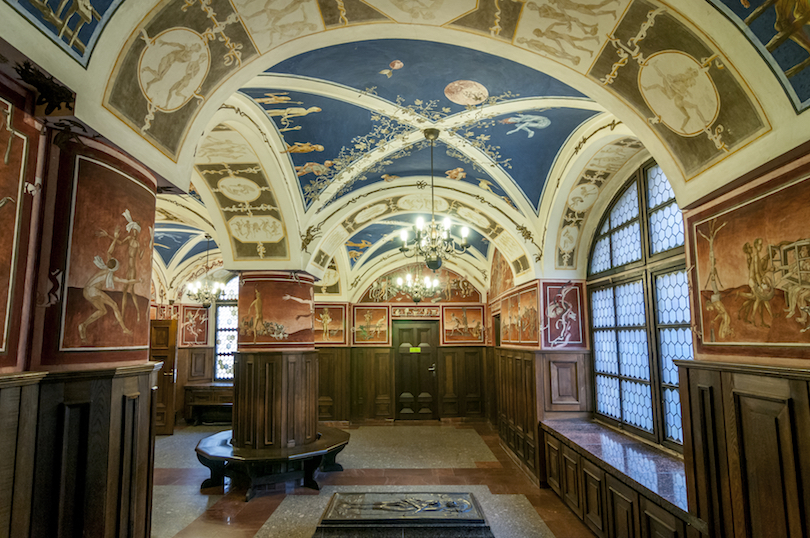
One of the oldest higher education institutions in the whole of Central Europe and the Baltics, Vilnius University was remarkably founded all the way back in the 16th century. As various buildings, courtyards, and galleries were added over the years, it showcases a wide range of architectural styles.
Wandering around the campus is a treat as you pass wonderful Baroque, Classical, and Gothic features. The two main attractions are its lovely library and the Church of St. John, both of which make for majestic sights. While the university may be centuries old, it still hums with life as students and tourists alike congregate in the Grand Courtyard.
11. Vilnil Museum of Illusions
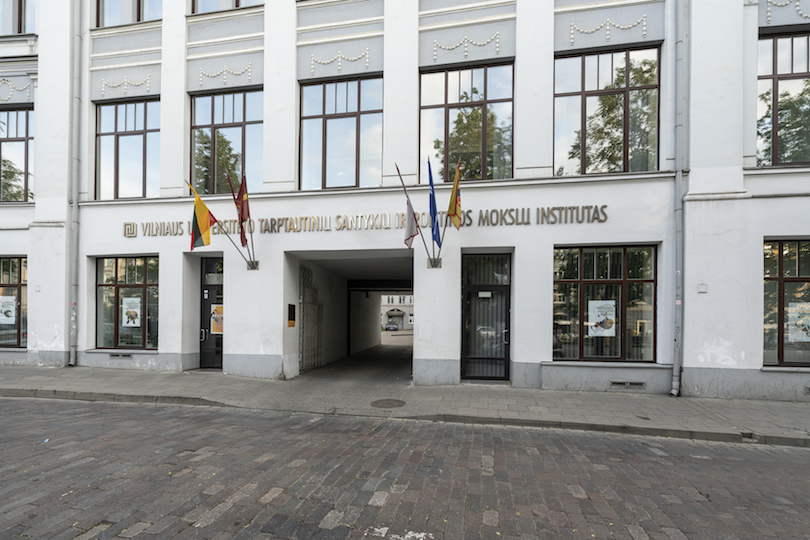
Only opened in 2016, the Vilnil Museum of Illusions is a fun and fascinating place to visit that is dedicated to a rather unique and unusual field. As the name indicates, the museum looks at optical illusions. Some of its interactive exhibitions really are mind-boggling to behold.
Perusing its creative, perspective-altering installations, 3D paintings, and virtual reality displays make for a cool experience. In addition to this, the museum also hosts amazing LED dance shows and performances every week.
10. Palace of the Grand Dukes of Lithuania
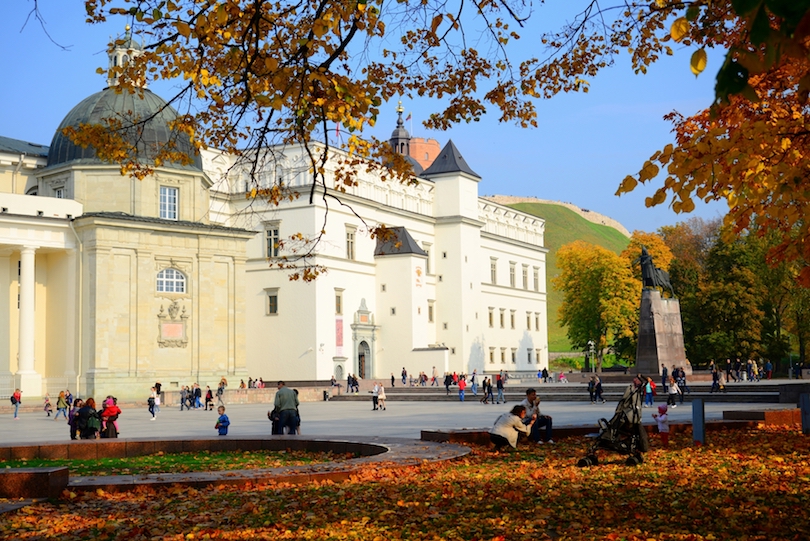
Once the cultural and political center of the Polish-Lithuanian Commonwealth, this fantastic palace actually only dates to 2018. This is because the original was destroyed in 1801 after having stood in the same spot since at least the 15th century. Located within Vilnius’ Lower Castle, the reconstructed palace now features some marvelous Baroque, Gothic, and Renaissance-style ceremonial halls and serves as an excellent museum.
While exploring its grounds, you’ll get to see the ruins and remnants of the former palace and lots of interesting exhibitions on the history of Lithuania. With so many wonderful artifacts, artworks, and architecture on show, the Grand Duke’s palace has something that will interest everyone.
9. Gediminas Tower
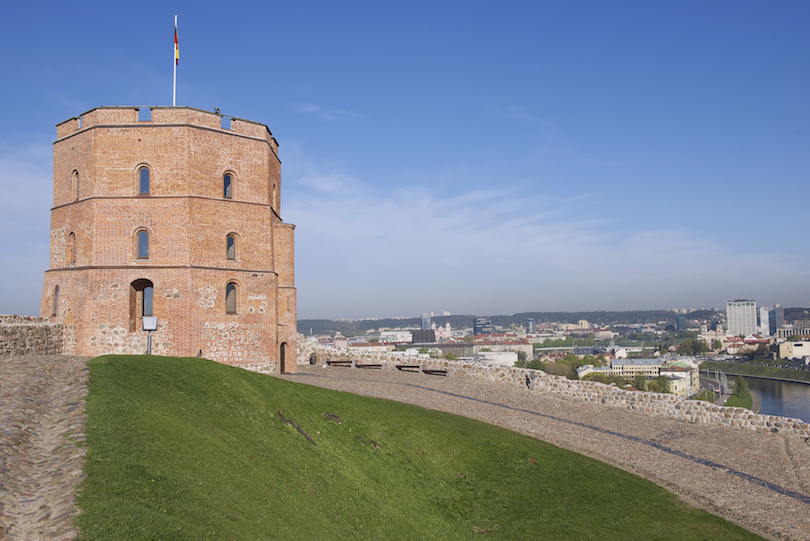
Boasting one of the best views of the city, Gediminas Tower has watched over Vilnius and the Neris River ever since 1409. Set upon a prominent hilltop, the tower is one of the only remaining parts of the Upper Castle still on show and was rebuilt in its current form in 1933. The three-tiered red brick tower looks very distinctive. Inside, there are some fabulous models of what the castle used to look like.
The main highlight, however, is the breathtaking view you can enjoy from its observation deck. To reach Gediminas Tower, visitors can take a delightful little funicular ride up the side of the hill to the important and historical sight, which acts as a symbol of the city.
8. Uzupis Statue
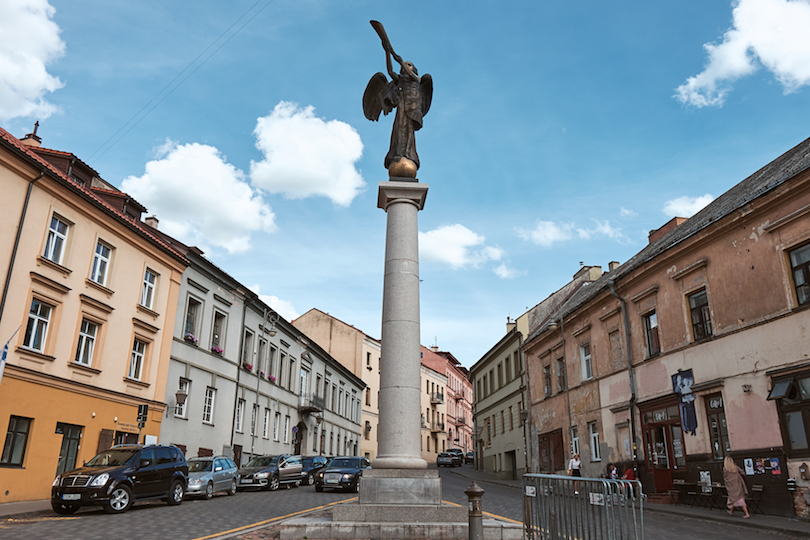
Surrounded on three sides by the Vilnia River which loops around it, Uzupis is the artsiest and most bohemian neighborhood of the city. Meaning ‘beyond the river’ in Lithuanian, the self-proclaimed ‘republic’ certainly has its own distinctive look, feel, and identity. This is perfectly encapsulated in the magnificent statue that lies at its heart – the Angel of Uzupis.
While the angel blowing on a horn was erected in honor of Zenonas Steinys, a local animator, the bronze sculpture has since come to represent the rejuvenation and revitalization of the quirky district.
7. Gate of Dawn
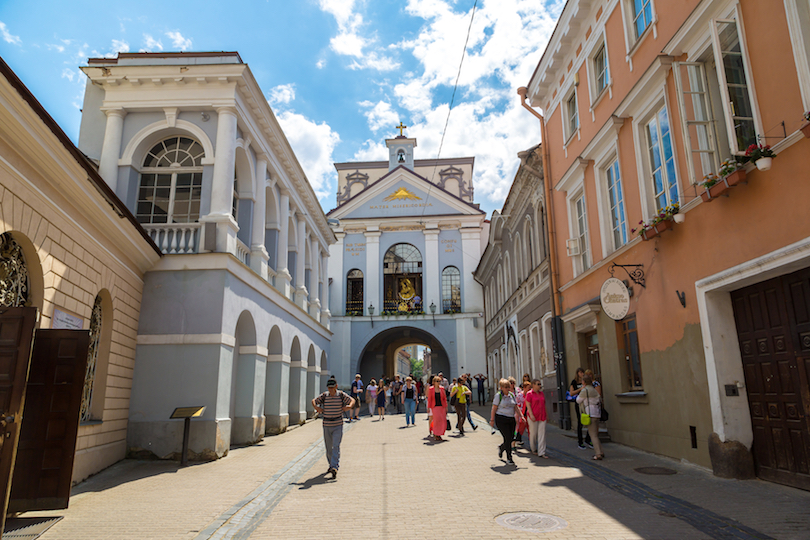
Built between 1503 and 1522, the gorgeous Gate of Dawn is the only remaining part of Vilnius’ city wall still standing. Not only a significant historical and cultural landmark, the gate is also a popular pilgrimage site as it is home to a famous and revered chapel of the same name.
Within the chapel is an exquisite painting and icon of the Blessed Virgin Mary, and many people come here to pay their respects or pray for miracles. Entering Vilnius for the first time through such a monumental gate really is an unforgettable way to start your trip.
6. Vilnius Cathedral
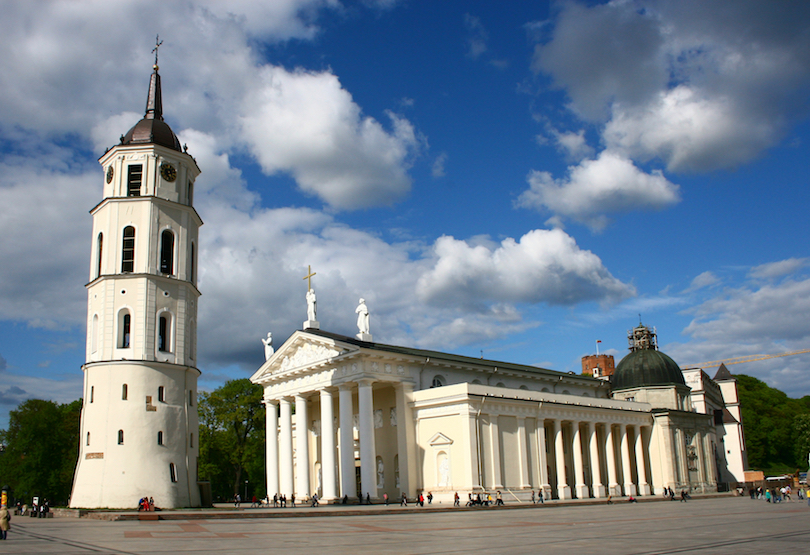
Glimmering in the light, the bright white Vilnius Cathedral and beautiful belfry before it are one of the main symbols and sights in the city. While a wooden cathedral was first erected here all the way back in 1387, the current Neoclassical building only dates to 1783.
Very elegant to gaze upon, it is here in the cathedral that the Grand Dukes of Lithuania used to be coronated. Fitting of such an auspicious occasion, the interior is lavishly decorated, with lots of splendid artworks and frescoes on display. Its crypts and catacombs are also well worth exploring: these house the remains of many of the nation’s most famous figures, and the tombs themselves make for a magnificent sight.
5. KGB Museum
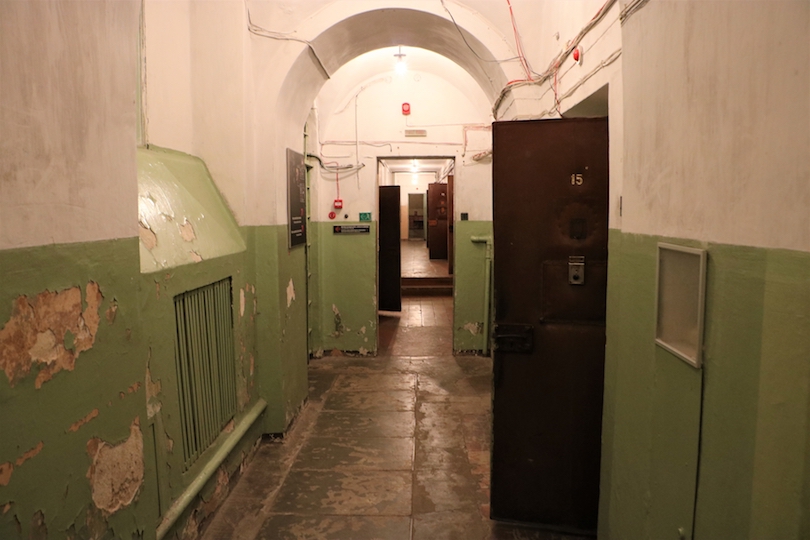
Recently renamed the Museum of Occupations and Freedom Fights, the KGB Museum (as it is informally known) certainly looks at a tough, troublesome, and tragic part of the country’s history. Located in a huge building that once acted as the KGB’s headquarters in Vilnius, the museum houses lots of harrowing displays that document the country’s 50-year occupation by the Soviet Union.
Its vast collection includes artifacts, photos, and the prison cells themselves in which the Lithuanian resistance were tortured and executed. Although it is not for the faint-hearted, the KGB Museum is definitely worth visiting for the important light it sheds on Lithuania’s troubled past.
4. Church of St Peter and St Paul
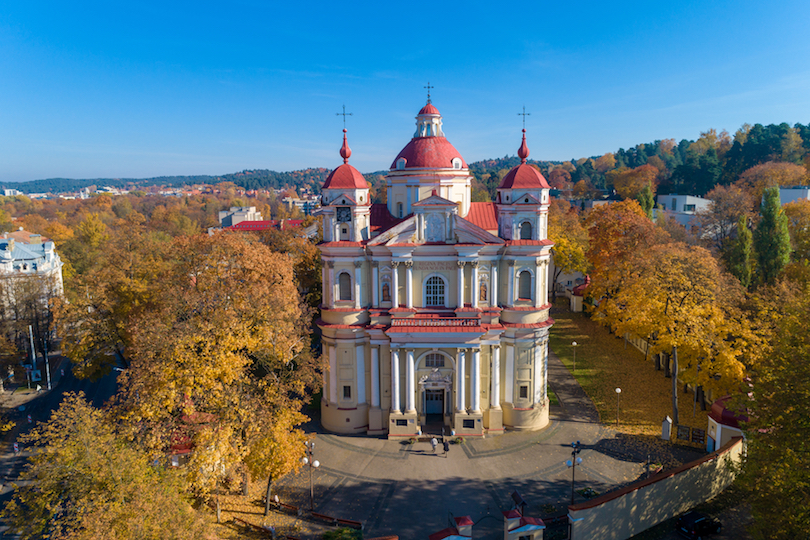
Although the Church of St Peter and St Paul does not appear all that special at first sight, visiting it really is a must when in Vilnius. This is because its breathtaking Baroque interior boasts some spectacular stuccoes, with around 2,000 intricately carved figures on show. It is this huge number that makes the church unique in Europe.
Painted in a dazzling bright white, its interior sparkles before your eyes and looks very elegant and ornate. Interspersed among the never-ending stuccoes are some wonderful frescoes for you to enjoy, as well as a fantastic Rucoco pulpit. Built between 1675 and 1704, the Church of St Peter and St Paul offers a visual extravaganza with so many sculptures and stuccoes for you to take in.
3. Hill of Three Crosses
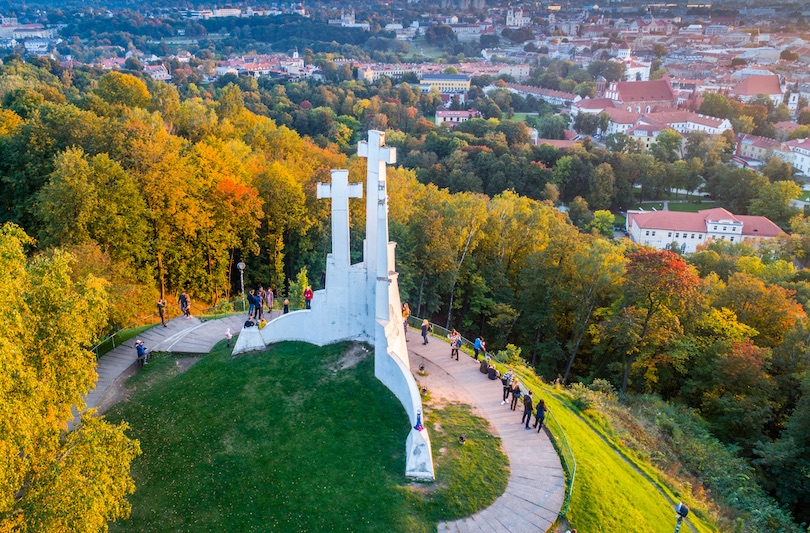
Towering above Vilnius, the Hill of Three Crosses boasts brilliant 360-degree panoramas of the city and its surroundings. While its viewpoint is the main attraction, the hill and the three crosses set atop it are actually an important historic site, and symbol of the country’s rebirth.
As the legend goes, wooden crosses were erected atop of the hill all the way back in the 17th century to commemorate seven Franciscan friars who were beheaded here. In the fifties, however, the Soviets removed them, with the current monuments only being built in 1989 as the union was collapsing. As such, the Three Crosses came to symbolize the nation’s reawakening. Popular among both tourists and locals alike, many people come here in the evening to watch the sun set over the city.
2. St. Anne’s Church
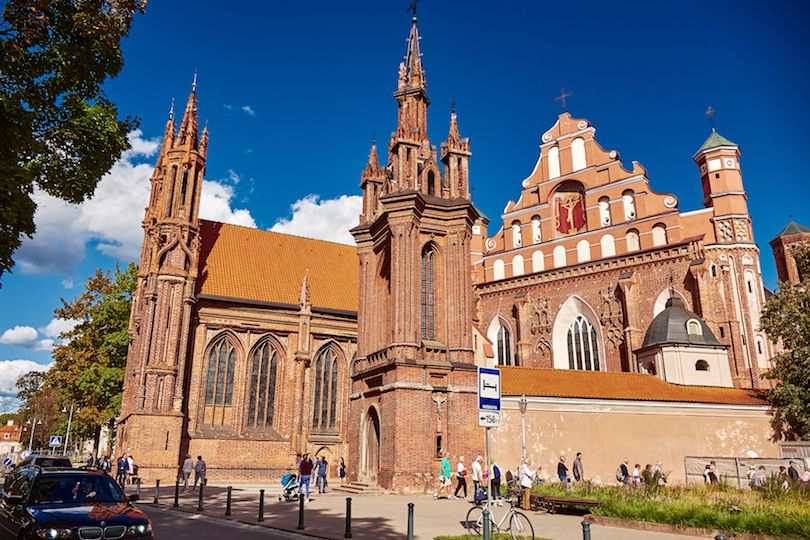
Lying on the banks of the Vilnia River, St. Anne’s Church is undoubtedly one of the most impressive and beautiful buildings in the city. Dating to the year 1500, the church was built in a Flamboyant Gothic style, and this is what makes it so appealing. Flanked by two towers, with a delightful spire lying between them, its elegant red brick facade really does make for a beautiful sight.
While its Baroque interior is somewhat plain in comparison, its main altar is well worth checking out. One of the most prominent landmarks in Vilnius, the gorgeous St. Anne’s Church lies just a stone’s throw away from many of the Old Town’s most important sights.
1. Old Town
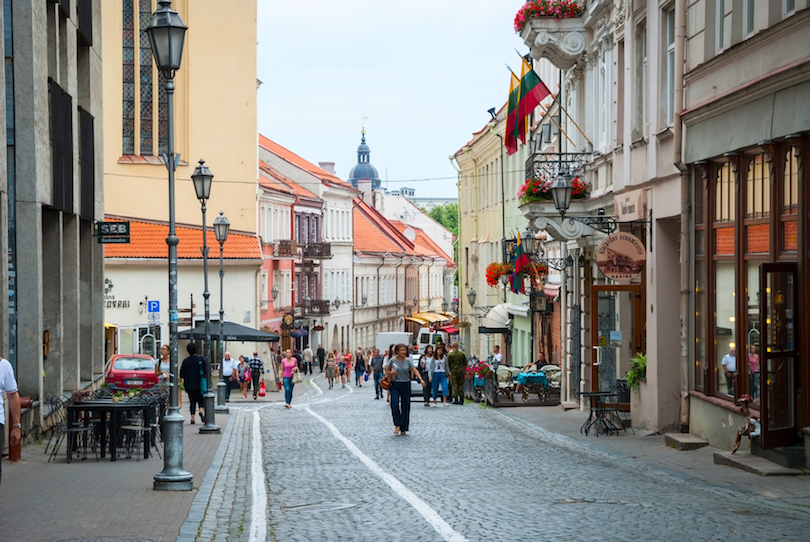
One of the largest and most well-preserved historic centers in Northern Europe and the Baltics, Vilnius’s Old Town is a treat to explore, with marvelous medieval buildings wherever you look. Encompassing some 74 different quarters, it is home to a wide array of different architectural styles. You’ll find Baroque and Classical palaces and artisans’ guilds on show alongside Gothic and Renaissance churches and cathedrals.
Interspersed among its many historical sights and cultural landmarks are atmospheric cafes and restaurants that also date back centuries. With numerous different sides to it, you can be walking through the castle complex one minute, Cathedral Square the next, before finding yourself in the Vilnius Ghetto. With so much for you to see and do, Vilnius’ Old Town is the highlight of any trip to the city.
Best Time to Visit Vilnius
Tucked away in the southeast of the country, Lithuania’s capital Vilnius sees the most people visit in both summer and winter. While July and August are perfect for sightseeing, outdoor dining and making the most of the warm weather, December sees magical Christmas lights and sometimes snow transforms the Old Town into a winter wonderland.
With average temperatures reaching 16 to 22°C (61 to 71°F), May through September is by far the best time to visit Vilnius. Many of its biggest events like the Capital Days Festival and Vilnius Culture Night also take place. Along with Christmastime, this is the busiest and most expensive period.
Although the city is already greyer and darker, many also visit for the Vilnius Jazz Festival in October. Its glittering golden trees also make for some great photos alongside its beautiful Baroque buildings.
From November to early January, the city’s cozy Christmas market and colourful decorations convince many to brave temperatures of -3 to 4°C (26 to 39°F). A festive atmosphere prevails despite the long dark days.
After the New Year’s Eve celebrations, the city sleeps until spring when its pretty blooming flowers appear again.
Map of Things to do in Vilnius, Lithuania
Share this post:
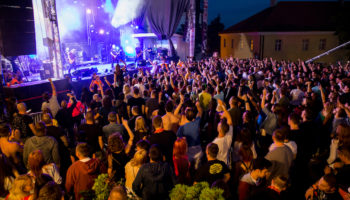
19 Best Things to Do in Serbia
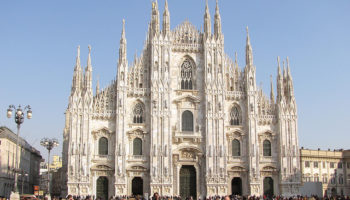
10 Most Captivating Gothic Cathedrals of Medieval Europe
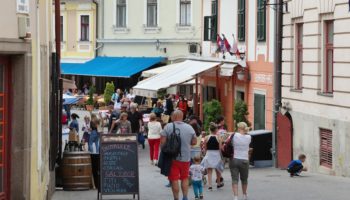
12 Best Cities to Visit in Hungary
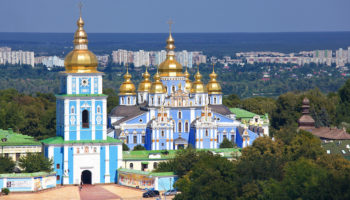
25 Best Places to Visit in Eastern Europe
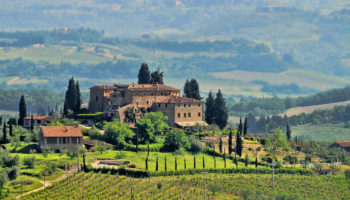
6 Most Beautiful Regions of Europe
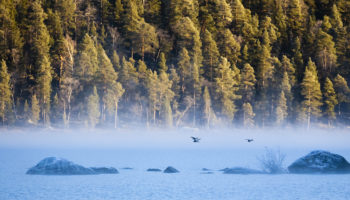
10 Most Beautiful Lakes in Finland
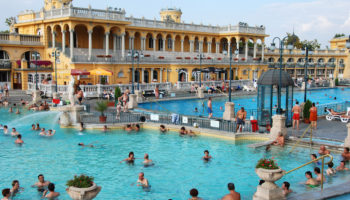
17 Top Tourist Attractions in Budapest
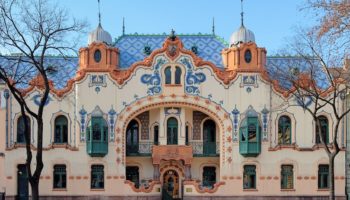
10 Best Places to Visit in Serbia
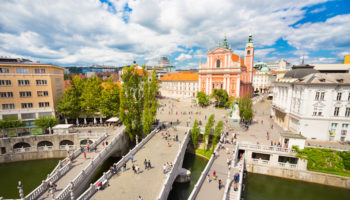
12 Top Tourist Attractions in Ljubljana, Slovenia
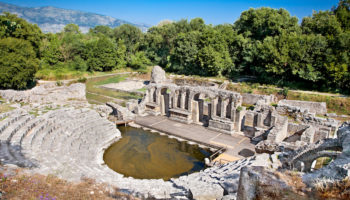
10 Best Places to Visit in Albania
Reader interactions, leave a reply cancel reply.
Your email address will not be published. Required fields are marked *
This site uses Akismet to reduce spam. Learn how your comment data is processed .
6 places you have to visit in Lithuania
Are you planning to visit Lithuania in 2021? Or maybe you are just looking for a new destination to travel to. There are many interesting places to visit in Lithuania – from white sand dunes in the west to amazing capital Vilnius in the southeast. Here we recommend 6 must see places in Lithuania that should be on your travel list.
Time to spent in Vilnius : 2 – 4 days Best time to visit Vilnius : May – September
Vilnius is definitely the place no. 1 you have to travel to when you visit Lithuania. The capital of modern Lithuania as well as the historical capital of the Grand Duchy of Lithuania has a lot to offer for different types of travellers and tourists: city breakers, business travellers, history lovers, foodies, adventure seekers, architecture lovers, even nature lovers! The easiest way to get to Vilnius is to fly to Vilnius airport, but it is also quite common to take a bus from neighbouring countries. Vilnius is also the best place to start your travel around Lithuania.
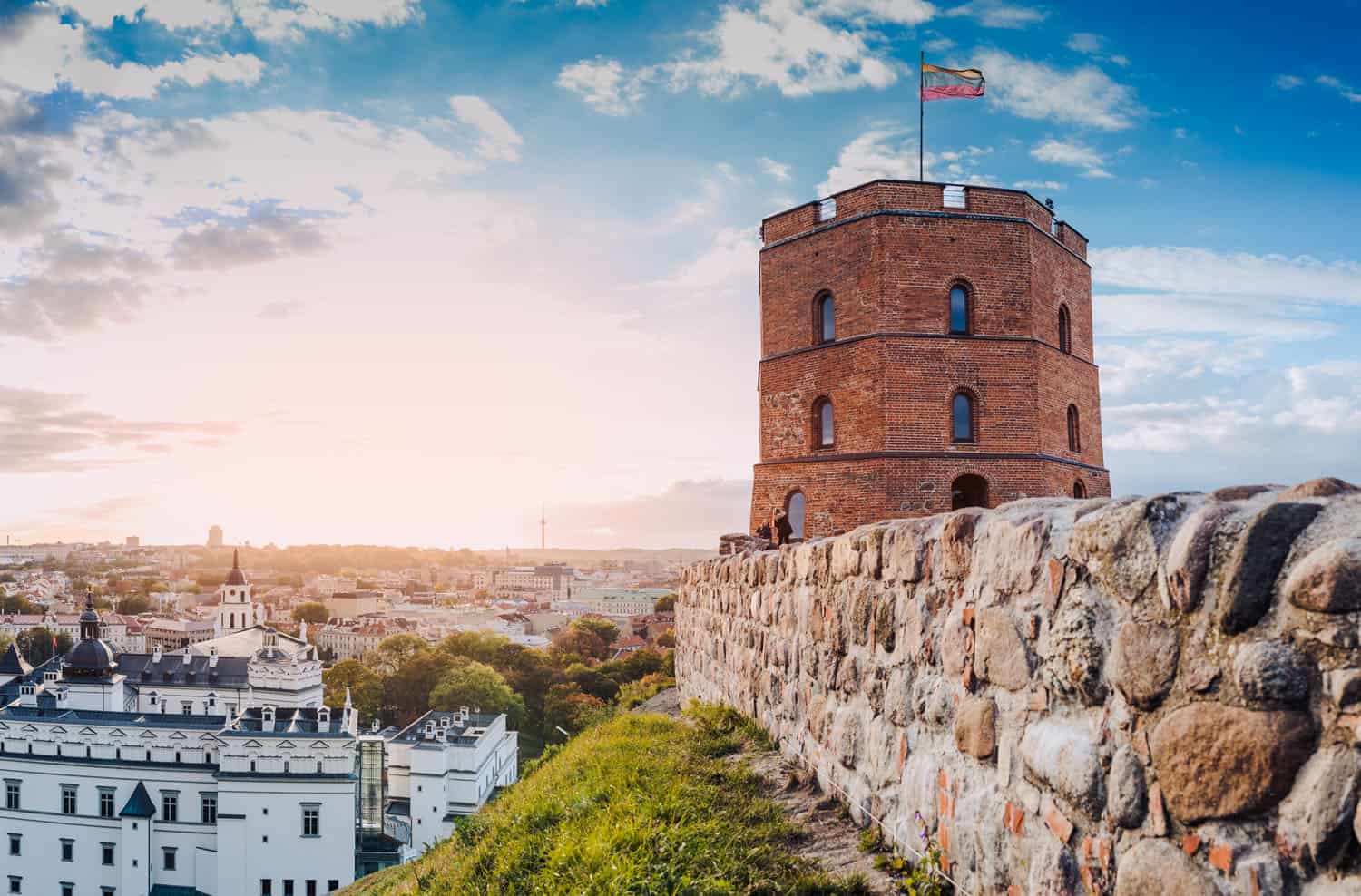
Vilnius is truly an amazing city wherever you think it is . This is actually Vilnius tourism ad made last year to attract tourists and travellers to the capital of Lithuania (you can explore a special Where is Vilnius website dedicate to this ad campaign). You might be wondering what is so amazing about Vilnius. Well, it is a very diverse city. Most of the travellers and tourists visiting Vilnius are fascinated by Vilnius Old Town which is one of the largest in the region. It is also included into UNESCO World Heritage List. Some people do not even step out of Vilnius Old Town during their visit. And you cannot blame them. The narrow winding streets, magnificent churches on every corner (visit the church of St. Peter and St. Paul, which is famous for its interior!), hidden courtyards can take quite some time to explore and take in. So many places to take excellent pictures! However, if seeing is not enough for you, you can dive deep in the history of Vilnius and Lithuania by reading some guidebooks, visiting museums or joining Vilnius city tours run by professional local guides. Vilnius has always been a multicultural city surrounded by strong and powerful neighbours, so there is a lot to explore – from the very beginning of the capital of the Grand Duchy of Lithuania, the Golden Age during the times of Polish-Lithuanian Commonwealth when Vilnius Old Town got it’s shape, to the tragic history of occupations, suppression and Lithuanian Jews.
Even though Vilnius Old Town is the place that attracts most of the tourists in Vilnius, we recommend you to explore more of this beautiful city. Just a few minutes from Vilnius Old Town, you can find Uzupis - a bohemian artists’ republic with its own constitution, rules and plenty of artworks. If you are the fan of street art, you can visit Open gallery – an open air street art gallery with over thirty murals made by artists from all over the world in the territory of former Soviet factory, or wonder around the New Town (Naujamietis) where you can find weird sculptures, more murals and many cool new restaurants and cafes, some bars. If the weather is not the best, you can check out some cool Vilnius museums. The most popular ones are Museum of Occupation and Freedom Fights for people who are interested in the history after WWII and Palace of the Grand Dukes of Lithuania for the history of Grand Duchy of Lithuania. If you are into art, check out the most popular museum in Vilnius among locals - MO museum . Do not forget to taste some local food in traditional Lithuanian restaurants all over Vilnius city centre and enjoy Vilnius nightlife on Vilniaus & Islandijos streets. You can even fly over Vilnius in hot air balloon, go kayaking in Vilnia or Neris rivers during the summer time.
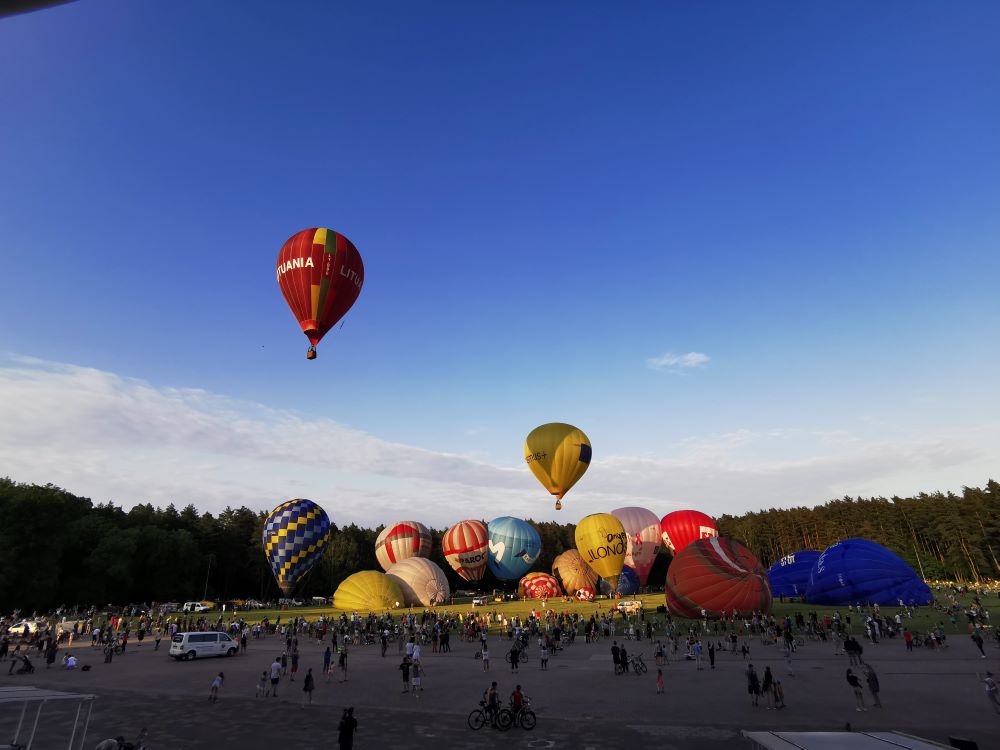
If you are visiting Vilnius for the first time, we recommend joining Vilnius free walking tour . It is a great way to get an overview of Vilnius, Lithuania and history just into 2 hour walking tour. There is no fixed fee for the tour, so you can give the guide whatever you feel he or she deserves! Our guides are also always ready to give you recommendations and local insights to help you to explore Vilnius and Lithuania better. Just ask! We are also based in Vilnius, so if you check our blog on things to do in Vilnius , you might find more useful posts about activities, local events, history, tips and recommendations. Here is one for 5 things to do in Vilnius for every traveller .
If you have only a few days to visit Lithuania, Vilnius is the place you should travel to.
Time to spent in Trakai : half a day Best time to visit Trakai : early morning
Trakai is a beautiful small historical town surrounded by lakes approximately half an hour away from Vilnius. The town is mainly famous for its red brick Trakai castle on the island in the middle of the lake. It is one of the most popular tourist attractions in Lithuania and a must see place for anyone visiting Lithuania. The Grand Dukes of Lithuania used to reside in the castle and the town is an important reminder of the glorious Lithuania’s past. Trakai also offer a lot of picturesque views as the town is surrounded by lakes.

It gets very busy in Trakai during the summer season (May – September), especially during the weekends when locals also flood this cosy little town. We recommend you to get to Trakai early in the morning so you could enjoy the views without crowds of people.
If the weather is nice, you can rent a boat to float around the castle. It is very easy to do, as there many people offering water activities around the lakes. Otherwise, you can visit a museum inside Trakai castle. The entrance costs 8 EUR. However, if you have been to other castles in Europe, do not expect to see a lot in there. Lithuania has always been between fighting sides and many things were lost during history.
One more must thing to do in Trakai is try kibinas - traditional food of the Karaites community in Trakai. Karaites were brought to Lithuania from Crimea over 600 years ago and preserved their traditions. You can not only taste kibinas or other dishes Karaites make, but also find their cute wooden houses with three windows facing the street as well as their house of worship called Kenesa and a tiny museum to learn more about this small community still living in Trakai. If you are wondering where to get kibinas, you will find anywhere closer to the castle. I would recommend you to take away a few kibinas, then rent a boat and enjoy this dish in the middle of the lake!
You can get to Trakai very easily from Vilnius by public transport or if you are active, you can even try cycling from Vilnius to Trakai! Also, you do not need a lot of time to explore Trakai. Actually half a day is enough to see the castle, try kibinas and swim in the lake!
The Hill of Crosses
Time to spent in the Hill of Crosses : around 1 hour Best time to visit the Hill of Crosses : daytime
Hill of Crosses is also consider as one of the highlights of Lithuania. A powerful and mysterious place with thousands of crosses. It's hard to reach it by public transport, but it’s possible. Just check our blog post about how to get to the Hill of Crosses .
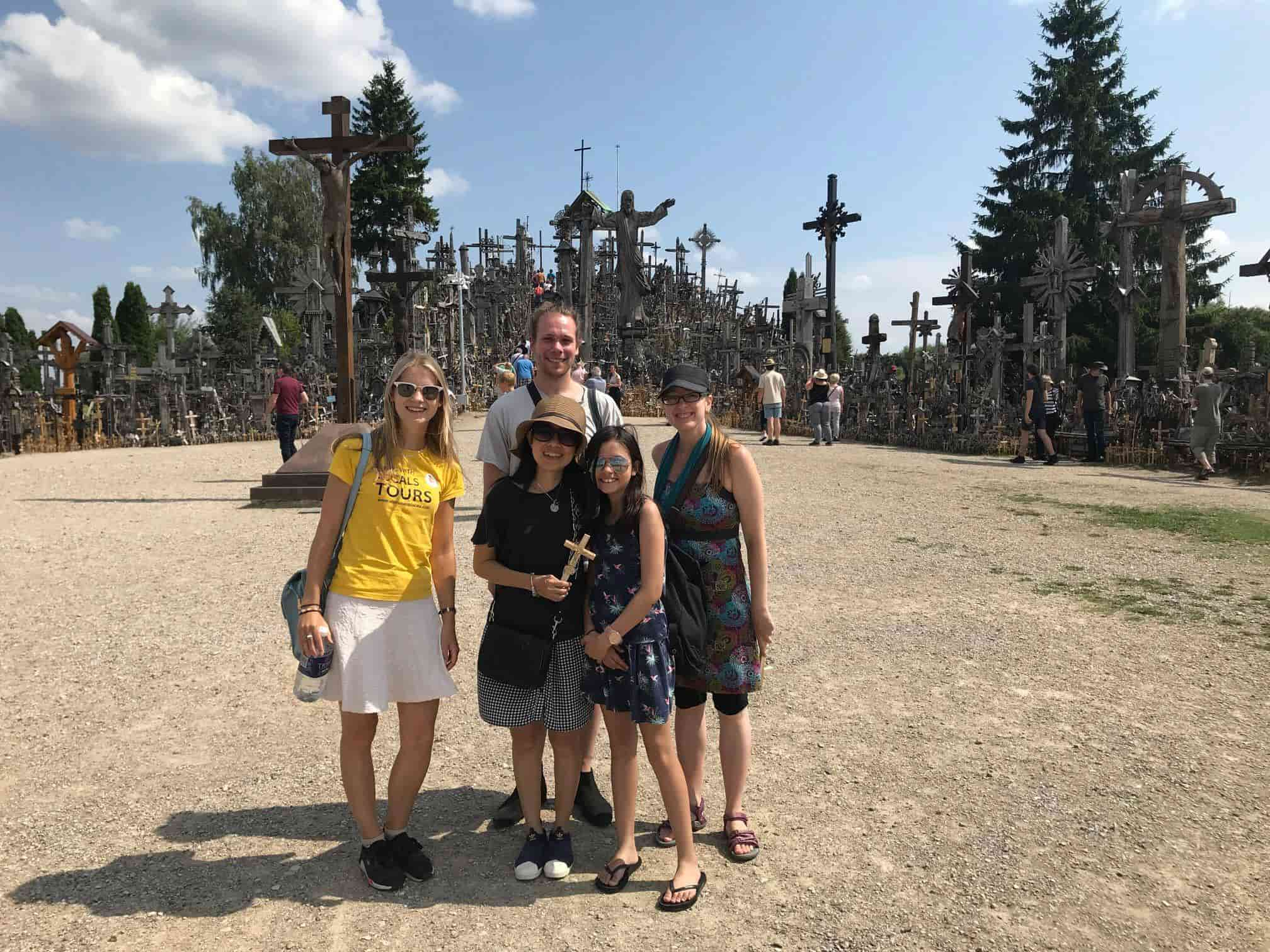
Hill of Crosses represents the resistance of Lithuanians through the hardships of the last two centuries when Lithuania was under Soviet rule and a part of the Russian Empire. During those times bringing crosses to the hill that authorities tried to destroy helped Lithuanians to not to forget what they truly believed in.
By the way, Lithuania is quite a flat country, so do not expect to see a huge mountain with thousands of crosses. It is really tiny. However walking on tiny paths among thousands of crosses brought here by Lithuanians and people from all over the world is quite exciting. You can even find a cross that was sent to the Hill of Crosses by the Pope John Paul II after he visited Lithuania in 1993!
The best way to visit the Hill of crosses would be to include in your itinerary around Lithuania and Latvia. It is quite far away from the major cities and there is not much to do. You can have a short stop on the way to Riga, Klaipeda from Vilnius or Kaunas or the other way around.
Time to spent in Kaunas : 1-2 days Best time to visit Kaunas : May - September
Kaunas is the second biggest city of Lithuania, the former capital of the country, located 1 hour 15 min drive from Vilnius. It is quite different from Vilnius and if you want to get a better idea of Lithuania, it is definitely worth to include it in your travel around Lithuania.
Kaunas is very proud of its modernist architecture which gave a shape to the city during interwar period in the last century when Kaunas was the provisional capital of Lithuania (what about Vilnius you say? Well, it was a part of Poland at that time!). Kaunas is actually waiting for UNESCO to recognize this modernist Kaunas architecture as a part of the UNESCO World Heritage list! Fingers crossed. You can enjoy this modernist architecture on Laisves avenue as well as streets around in the city centre.
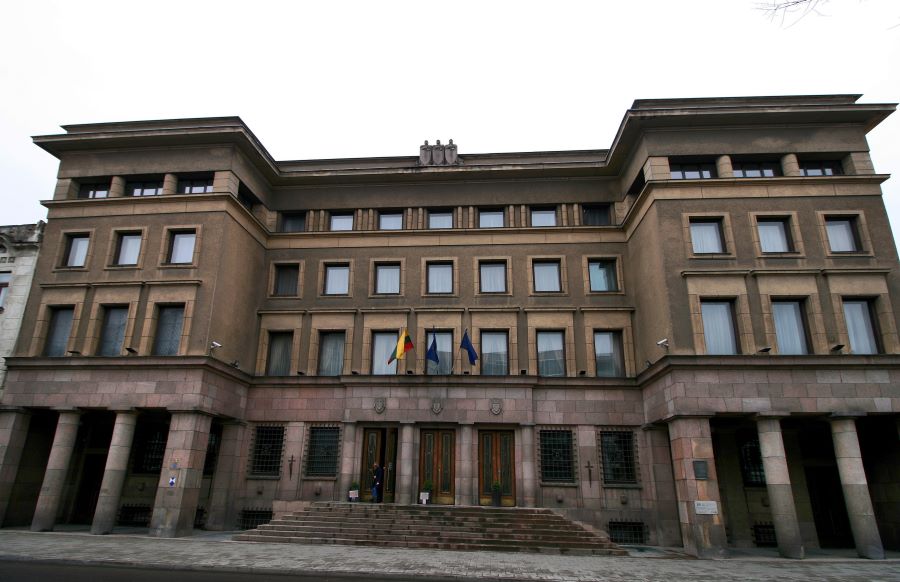
Kaunas is also known as a capital of the second “religion” in Lithuania - basketball !! If you have a chance, go to a basketball match in Žalgirio arena to see how crazy Lithuanians are about basketball :) It does not matter if you like basketball or not. It is just fun to feel the awesome atmosphere.
You probably got an idea that Kaunas is all about modernism and basketball. However it is not true. Kaunas also has a beautiful tiny old town to explore (Kaunas was even a part of Hanseatic league and every May medieval Hansa days’ festival attracts a lot of visitors to Kaunas), a modern street art scene, quite a few interesting museums to visit. Probably one of the most unusual museums you can find in Kaunas is Devil’s museum . You can find over three thousand devils there – masks, paintings, sculptures, souvenirs, etc. Not too far away from Devil’s museum, you can find one of the oldest funiculars in Europe ! We really recommend to take a ride up where you will find a huge white Christ's Resurrection's church . From the top of the church you can see a great panoramic view of Kaunas.
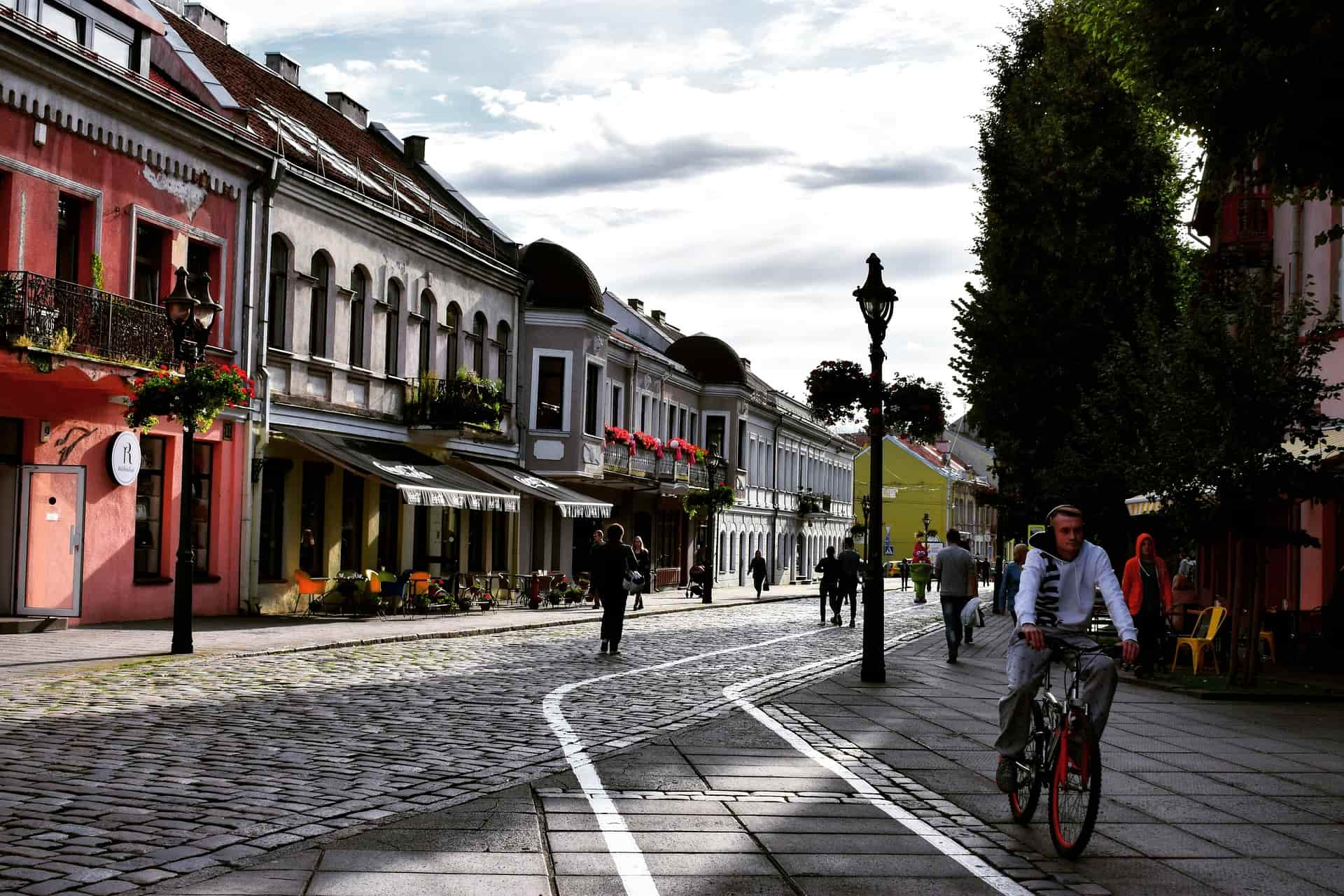
In the outskirts of Kaunas, you can find the Ninth fort – a memorial place and museum dedicated to the Jews who perished there during WWII. It is a must visit place to pay a tribute to the harsh history.
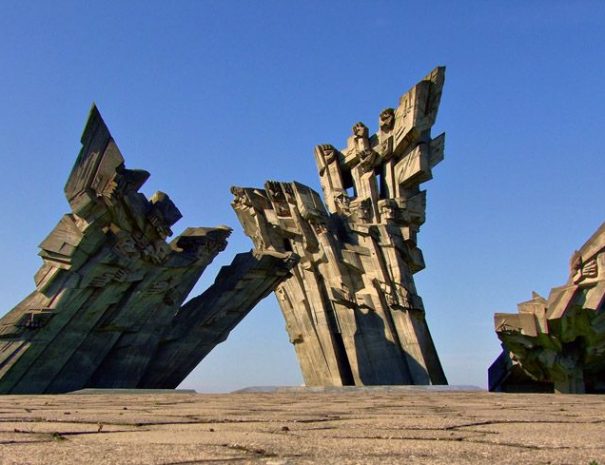
If you happen to be in Kaunas on Saturday, join Kaunas Free Tour . Lovely locals guide will give you a great insight into locals traditions, the new "modern" part of the city and of course tell you many stories about the interwar period (that's when Kaunas was the capital of Lithuania for almost 20 years) and show some parts of Kaunas Old Town.
As you can see, there are quite a lot of things to do in Kaunas if you decide to include it in your travel around Lithuania. One more thing to mention is that Kaunas will be European Capital of culture in 2022 . If you do not visit Lithuania this year, you could plan your trip next year and expect more action in Kaunas!
Aukštaitija National Park
Time to spent in Aukštaitija National park : from one day to one week Best time to visit Aukštaitija National Park : July-August
Aukštaitija National Park is a perfect spot for all the nature lovers. If you visit Lithuania during the summer time, this is one of the most popular destinations for Lithuanians to get away from city life and enjoy many lakes, hills, forests and ethnic villages. You can find different hiking, cycling and water routes. However you can rarely meet international travellers and tourists travelling around this park. The problem might be the infrastructure as the best way to get around the park is by your own car and it really lacks public transportation. Also, most of the people flood Aukštaitija National Park during the weekends, so some places might be closed during the weekdays. However if you desire for some nature and do not mind local adventure, we really recommend you to include Aukštaitija National Park in your travel around Lithuania. You will be impressed by the greenery and all the lakes around you.
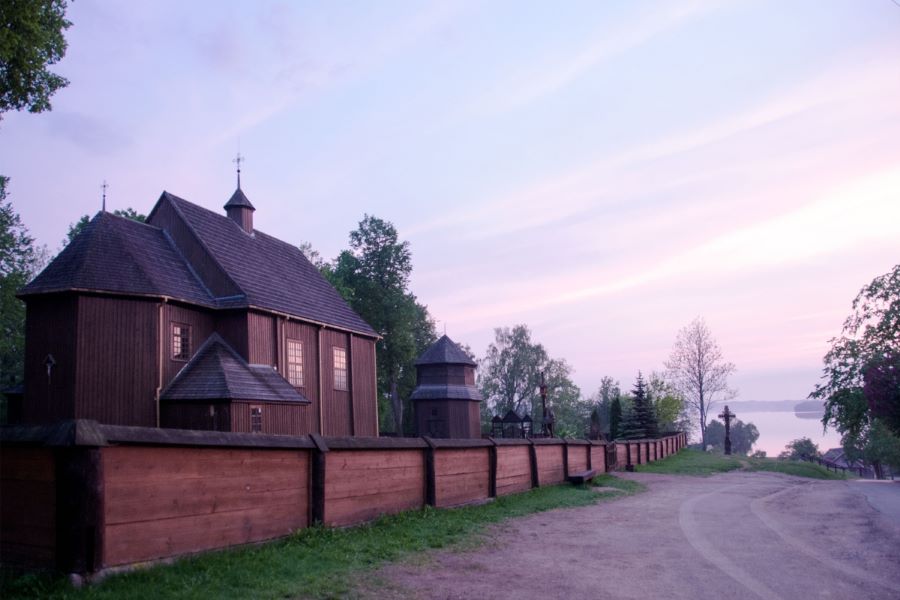
A must visit place in Aukštaitija National Park is Palūšė where the visitor center of Aukštaitija National Park is located. You can find quite a few accommodation options in Palūšė if you want to spend a few days in the park to enjoy nature. Palūšė is a small tourist village which gets really busy in summer during the weekends. One of the tourist attractions in Palūšė is the oldest surviving wooden church in Lithuania, but most of the people come here because of the hiking routes in the forest, beaches next to Lūšys lake (that’s where the name Palūšė comes from – near Lūšys lake). You can also rent boats, kayaks, etc. Palūšė is the point where most of the cycling and hiking routes start in Aukštaitija National Park, so it is actually a good base for further exploration.
You can get to Palūšė by public transport. You need to take a train or a bus to Ignalina from Vilnius (around 2 hours) and catch a local bus to Palūšė. It should take around 15 min to get there from Ignalina. However you can also walk or cycle to Palūšė (around 5 km). There is a bunch of bicycle rentals in Ignalina!
However, the best way to get around and see the most of Aukštaitija National Park is by car. You will be able to drive around, enjoy spectacular views of nature around you and stop wherever you want to explore different parts of the park. One of the cultural attractions in Aukštaitija National Park is the museum of Ancient Beekeeping . It seems like a museum itself is like a little village made of six buildings. You can book a guided tour around the museum to learn more about beekeeping, get tips from herbalists and beekeepers or take relaxation in the attic listening to the sounds of bees and smelling the honey.
Another must visit in Aukštaitija National park is a legendary Ladakalnis hill . It surrounded by lakes. If you go up the hill (not that high :D - 176 m), you can see six different lakes! However you need to walk around a bit to find them all as you cannot see them from one spot because of the trees. Driving to Ladakalnis is also very picturesque. Around 2 km from Ladakalnis, you can find one of the symbols of the park - an old Ginučiai wooden mill .
There might be the lack of information in English about this nature gem in Lithuania. However we found a detailed brochure in English made by Aukštaitija National Park visitor centre. You can find a bunch of hiking, cycling, water and road transport itineraries around the park! Most of the routes start in Palūšė. So if you are a nature lover, check it out, and include one of the routes in you travel around Lithuania.
Lithuanian Seaside (Curonian Spit)
Time to spent on the Lithuanian seaside : 3-7 days The best time to visit Lithuanian seaside : May - September
Lithuania has only around 90km of the seaside. That’s is not a lot compared to our neighbours, but those kilometers are very well used! You can find the small cute fishermen villages, the long white sand beaches, an ice-free port in Klaipeda (one of the few in northernmost Europe!), a party town Palanga and even a UNESCO World Heritage Site – Curonian Spit aka Neringa!
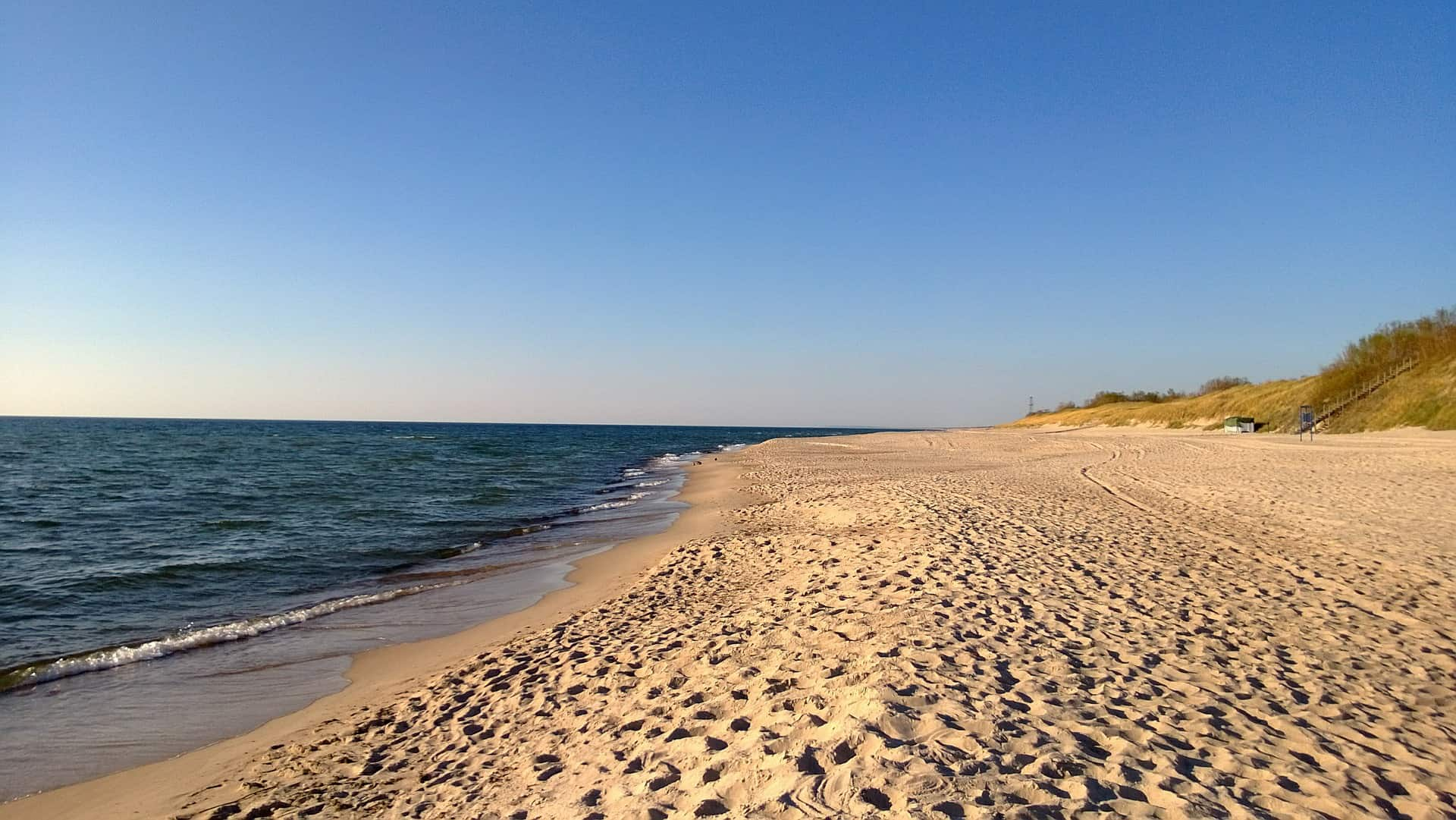
If you come to Lihuanian seaside during the winter time, probably not much will be going on, but during summer months it gets really crowded. In summer, Palanga becomes a party capital of Lithuania. Even some nightclubs from Kaunas and Vilnius closes down for summer time and go to Palanga. That is the place where party happens! Sometimes we joke that Palanga is like Miami of Lithuania.
If you are not a party person and you don’t fancy crowds of people, you can base yourself in Klaipeda or one of the fishermen villages in Curonion Spit.
Klaipėda is the main port of Lithuania. It has been a German city for a long time, so you might get the feeling you are in Germany in Klaipėda’s Old Town. Usually Klaipėda is less crowded than Palanga as the main beaches are a bit further from the city centre. The major event in Klaipėda is “The Sea Festival” (Jūros Šventė) which takes place on the last weekend of July. It is very busy, but a lot of fun if you fancy some local events. Klaipeda is located around 30 km from Palanga and only a few minutes ferry ride from Curonian Spit, which is an amazing attraction in Lithuania, a part of UNESCO World Heritage List. This unique piece of land stretches around 98 km in length and the width varies from 400 m (!) to 4 km. On one side you will find the Curonian lagoon, but just in a few minutes you can enjoy the Baltic Sea with white sand beaches. Half of it belongs to Lithuania, another half to Russia (Kaliningrad region). Several small fishermen villages attract travellers to stay in Curonian Spit to feel all of its beauty. Probably the most well-known is Nida. It is the biggest in the Curonian Spit and has the most attractions. A must visit in Nida are white sand dunes. You might feel like you are in the dessert. And you can see Russia from those sand dunes as Nida is located just on the Russian border. You can even find the sculpture of Jean Paul Sartre who was photographed enjoying the nature of Curonian Spit in 1965. Also, a famous German novelist Thomas Mann lived there for couple of years.
Another fishermen village worth mentioning is Juodkrantė . It is definitely less crowded. An interesting Lithuanian tourist attraction in Juodkrantė is the Hill of Witches – a unique open air museum of wooden sculptures of witches, devils and other folk characters. Every Lithuanian has at least one photo made on the Hill of Witches ! Next to Juodkrantė you can find ‘the Dead forest’ . Sounds a bit creepy, doesn’t it? But it is worth a visit. A very strange place where the colony of cormorants is located. Once you get closer you start hearing the sounds of cormorants, thousands of them. Their acid poop kills the pine trees, so you will see a lot of dead trees around you. However cormorants poop is good for deciduous trees, so you can already see the small ones growing.
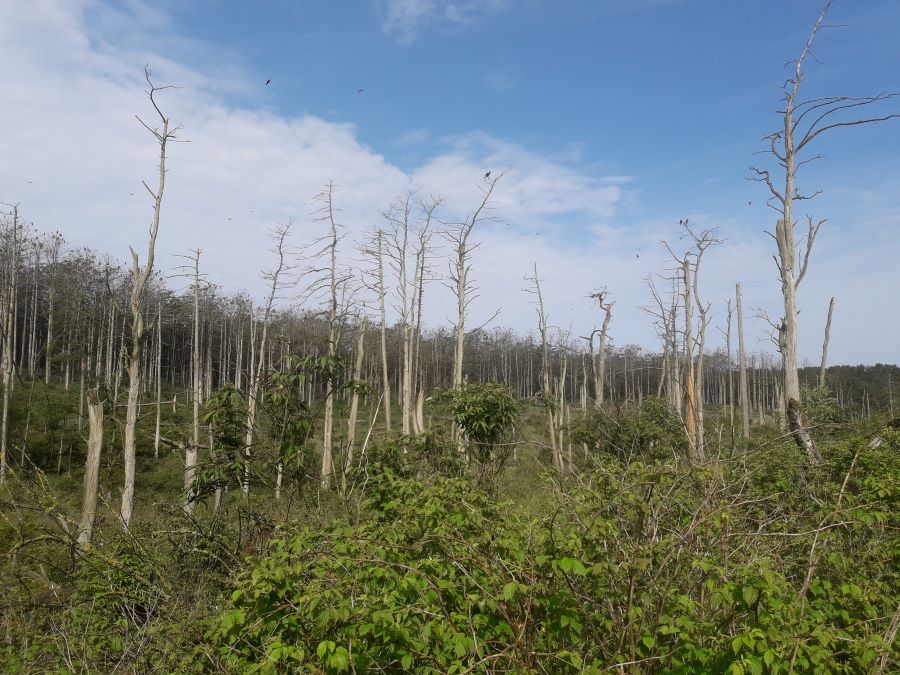
You can also find the most popular museum among Lithuanians in Curonian Spit – Lithuanian Sea museum & Dolphinarium .
If the weather is nice, it’s a great idea to cycle from Klaipėda to Nida (50 km one way + ferry ride) on the Curonian Spit or from Klaipeda to Palanga (30 km one way). Cycling is pretty easy to do even for not an experienced biker, as all the way is pretty flat.
Lithuanian seaside is a popular tourist attraction during summer time even among Lithuanians. Depending on your interests you can stay in different places, but it is a must to visit Curonian Spit during your travel around Lithuania.
If you plan well, you can see all these six must see places in two week holiday around Lithuania. But it might be quite intense, so you can also come a few times to explore different parts of Lithuania.
Visit Lithuania and enjoy this hidden gem of Europe!
Related Posts
Best neighbourhoods to stay in vilnius for the first time visitors.
Once you've purchased those cheap flight tickets to Vilnius, it's time to choose where to stay in this beautiful city. Vilnius is quite compact, and you can easily walk everywhere. However, de Read more ...
Our new walking tours in Vilnius!
Summer is almost here! Can you feel the excitement in the air? For us, the guides, these are the last weeks before the hustle and bustle of the high season. And we think it’s finally the time to Read more ...
Is it safe to travel to Lithuania and Vilnius?
Personal safety is really important factor when choosing a travel destination. After all, you will be far away from home, in a new and unknown environment, with limited knowledge of local language or Read more ...
- Before coming to Lithuania
- Eat and Drink in Vilnius
- Things to do in Vilnius
- Vilnius sightseeing
50 Fun & Unusual Things to Do in Vilnius

- 4 Pinterest
Are you looking for things to do in Vilnius ? Dazzling travelers for decades with its historic Old Town, charming countryside nature, and fascinating historical resilience – Vilnius, the capital city of Lithuania, has a little bit of everything.
A stroll through the picturesque Old Town is a step back in time (1387 to be exact!) as it’s known as one of the best preserved historic old towns in Northern, Eastern, and Central Europe. Vilnius is an incredibly walkable city that only deserves to be explored, whether on a walking or bike tour.
Walk past the stunning Cathedral Square to see local events take place or do a bit of people-watching. Head to the last remaining gates that formed the great wall that once enclosed the city from enemies.
Known as “the Jerusalem of the North” for its large Jewish community at the beginning of the 15th century, a stroll through the Jewish quarter is necessary to get the full spectrum of the Lithuanian history.
So pack your bags, and get ready to explore the next destination on your bucket list, Vilnius!
1 – Check out the impressive artwork and views at the Vilnius Cathedral & Bell Tower

Centered right next to the historic Old Town, the Vilnius Cathedral is a church dedicated to the saints Stanislaus and Ladislaus, dating back to the 19th century.
Besides being known as where the Grand Dukes of Lithuania held their coronation ceremony, the church is a house of beautiful art.
Inside, you’ll see many paintings between the 16th-19th centuries, from frescoes to various other religious artworks. Step in a bit further, and you’ll also see remnants of the church’s previous use as a pagan temple, like the original floor and altars.
Next, stop by the 57 meters tall bell tower for epic city views, including all of Cathedral Square down below.
2 – Take a stroll through the charming Old Town

Enjoy a walk through the Old Town of Vilnius, northern Europe’s most extensive and continuous medieval town, founded in 1387.
The UNESCO World Heritage Site is an assortment of cultures, religions, and architecture that enchants visitors left and right with sights like Town Hall Square and the Gates of Dawn.
Discover unique sites like Vilnius University, the oldest Baltic education institution, on a walking tour! Stroll Gediminas Avenue and Pilies Street, and the restaurant-lined Vokieciu Street.
Afterward, pop into a store for some hand-crafted souvenirs, or sit in at a restaurant to sip on a beverage of a traditional Lithuanian drink like kvass, a low-alcohol drink, or coffee.
- old town walking tours
3 – Shop for local goods at Hales Market

Check out the fresh ingredients and wonderful food aromas at indoor Hales Market – Vilnius’ most prominent and oldest market!
Located in the heart of Old Town, spend a few hours looking through the food stall and checking out other items typically sold, like handcrafted home goods items.
The market is famous for selling authentic ingredients and organic produce and works closely with local farmers using best practices. Hungry? There are tons of cafes and restaurants to dine at to your heart’s content inside!
If market hopping is on your list of things to do in Vilnius, check out Kalvariju Market next! A cash-only, smaller local market overflowing with local vendors, local ingredients, and more.
4 – Stop and smell the roses at Bernardine Garden

Bernadine Garden is a breath of fresh air in central Old Town. The garden covers 9 hectares of plants and flowers of all shapes and colors, including a 400-year-old oak tree (the oldest in Vilnius!).
Also known as Sereikiškės Park, Bernadine Garden comes from the Bernadine monks who visited the garden. Bernadine Garden was officially opened to welcome them in the 15th century.
Since then, the garden has been a favorite place for locals to get together. Today you can stroll through the idyllic park with a beautiful square, giant fountains, a botanical garden, ponds and meadows, and much more.
Entry to the park is free, and opening hours are from 7:00 AM – 10:00 PM.
5 – Learn about the Lithuanian fight for freedom at the KGB Museum

Learn about the Soviet influence and the fight for freedom in Lithuania at the Museum of Occupations and Freedom Fights.
Divided into two floors, get an idea of the day-to-day life of those who lived through the war between 1940-1953. The museum is inside the former office of the KGB Deputy Chief, where locals were held captive if there was any suspicion of rebellion.
The KGB Museum is immensely impactful, engaging, and an excellent opportunity to learn about the 50-year Soviet regime with detailed exhibits, artifacts, and stories from those kept captive inside.
The museum is open every day except for Monday and Tuesday. Tickets are 6 euros per adult.
- walking tours in Vilnius
6 – Visit the important site of The Hill of Three Crosses

The Hill of Three Crosses is a famous monument in Klanai Park – an 8-minute drive from Old Town Vilnius. The symbolism dates back to the 12th and 13th centuries when a group of Franciscans died as martyrs on the hill. Today the crosses honor their deaths.
Nowadays, the monument has become a national identity amongst Lithuanians. Today, you can walk by the memorial and see it for yourself. Pass the monument during sunset, and the crosses will illuminate beautifully, and sometimes in different colors, to celebrate a holiday.
From the Hill of Three Crosses, you can get spectacular views of the Old Town, so don’t forget your camera!
7 – Check out St. Anne’s Church, the most famous church in Vilnius

Sitting close to the right bank of the Vilnia River is St. Anne’s Church, a church with Gothic architecture in red brick and stunning detail.
The 500-year-old church has a few interesting stories and legends, including gunshot holes on the walls.
Though the outside may be impressive, the inside isn’t as much. After the fires and war destructions, the interior has changed a lot.
However, it’s still worth going inside and checking out the remnants of the Baroque interior and the frescoes inside that have since been redone.
The church is free to enter anytime between Tuesday-Friday – 10:30 AM – 7:00 PM.
8 – Check out the royal digs inside the Palace of the Grand Dukes of Lithuania

Only a 2-minute walk from the Gedimina’s Tower is the 15th-century Palace of the Grand Dukes of Lithuania .
The lavish palace was built as the home of the future Kings of Poland and the Grand Duchy of Lithuania. However, it was demolished in 1801 after it was used for various other administrative purposes.
You can visit the modern, Renaissance-style Palace of the Grand Dukes of Lithuania, which was rebuilt in 2002 and completed in 2018. It sits today where the original once stood.
Inside, you’ll see archaeological remains of the original palace and rooms restored to their original medieval design. You’ll learn more about the day-to-day life and purpose of the Grand Dukes of Lithuania.
9 – Take in the stunning Lithuanian countryside on a Hot Air Balloon Flight

Enjoy the views of Vilnius and fly over the picturesque landscape of dozens of lakes, rolling hills, and even the Trakai Castle on a magical hot air balloon ride!
Witness the beautiful views of Trakai, a beautiful historic town with a quaint lake right beside it. Take a peek at the Trakai Castle, which sits on its little island!
On your hot air balloon experience, you’ll be able to celebrate with a glass of champagne as the sun starts to set its rays on the beautiful Lithuanian countryside. When you book a hot air balloon experience, you will also receive roundtrip transportation from your hotel for your convenience.
The experience lasts around 2 hours.
- hot air balloon rides over Vilnius
10 – Experience the Trakai Castle, the only castle built on a lake in Eastern Europe

The famous Trakai Castle is a stunning piece of medieval architecture dating to the 14th century, situated on Lake Galvé, the deepest lake in Lithuania. Found on an island, the way to get to the castle is on foot using the bridge.
Inside the castle, you can discover some of the exhibitions which hold the history of the previous residents of the castle, the Grand Dukes of Lithuania. Get to know how they lived inside the Trakai Castle, how long they lived there, and peek at a few of their belongings.
Make sure to check out a tour from Vilnius, which includes a stop at the Paneriai Memorial Park, the sight of the Ponary massacre.
- Trakai Castle tours from Vilnius
11 – Explore the inside of the rich Užutrakis Manor

Visit the beautiful Užutrakis Manor , known as one of Lithuania’s most well-preserved mansions and parks. Complete with French-style interiors, dreamy terraces, and stunning views of the Trakai Castle from the estate.
The park is a stunning mix of antique sculptures, busts, and various plants and trees. To get to the mansion, the noble family used a boat to traverse Lake Galve rather than take the road to the estate on the peninsula.
The manor was restored recently to its glory days, and the park, with its French landscape touches, grew to 80 acres.
The mansion hosts some concerts and events, so check them out!
12 – Get panoramic views of Vilnius from Gediminas’ Tower

Sitting atop Gediminas Hill is the last bit of the defense castle called the Deminias Tower. Named after the founder of Vilnius, the Grand Duke of Gediminas, the tower dates back to the 13th and 14th centuries.
The legend says that he ordered the tower’s construction after he had a dream of a howling iron wolf, which signifies a strong capital city.
Check out the museum inside and the exhibitions that display artifacts from the tower, like art, items, and letter archives. Don’t forget to also check out the events hosted inside!
The Gediminas’ Tower is a favorite local spot to catch a stunning sunset and 360-degree views of Vilnius.
13 – Enjoy the great outdoors at Pavilniai Regional Park

Enjoy a scenic trek through the Pavilniai Regional Park, renowned for its beautiful natural landscape and sights.
Check out the Pūčkoriai Exposure, the highest exposure in Lithuania of 65 meters near the Vilnia River, and the Pūčkoriai Dam, a fascinating geological sight. You’ll see tons of hikers, walkers, people fishing, and even four-wheeled motorcycles in the distance, taking advantage of the park’s beauty on a sunny day.
Visit the fun Ribiskes Labyrinth inside the Pavilniai Regional Park. If you’re visiting in winter, Minsk Liepkalnis Hill is famous for skiing.
Book a mountain bike tour through the park, seeing more geological and historic sites at the park, with the guidance and instruction of your tour guide.
14 – Climb to the top of St. John’s Bell Tower

Tucked into the corner streets of Old Town is one of the most beautiful churches, St. John’s Church Bell Tower .
Aside from its beautiful Baroque architectural style, and stunning interiors, one of the highlights of visiting the church is the spectacular views from the bell tower.
You can climb the 193 original steps or take the elevator to the top of the tower for incredible views of Vilnius’ famous red roofs and curvy streets.
The bell tower is the tallest building in Old Town, reaching 45 meters high! You can find this must-see spot on Pilies street. Adult tickets start at 5 euros for adults and 3 for students.
15 – Take a look at the ancient texts inside Vilnius University

Explore the oldest university in the Baltics, Vilnius University , adorned in various architectural styles, from Baroque Gothic to Classical.
Perhaps one of the treasures inside the university is the library, as it’s one of the largest in Lithuania. The library predates the university, as the Jesuits founded it in 1570.
Visit the library , and look at some of the books inside, some as old as 400 years. Also, inside the library, you can find documents, archives, and other fascinating literature pieces.
Look at the ancient texts in the library, and look around at the impeccable ceiling, wall frescoes, and intricate chandeliers.
The library is 6 minutes away from Old Town.
16 – Learn about the early Jewish community at the Jewish quarter

Travel 8 minutes north of Old Town to explore the “Jerusalem of the North.” In the early 15th century, Lithuania saw a rise in Jewish immigration, most settling in Vilnius.
Back then, there was an opportunity to grow in Vilnius for the members of the growing Jewish community. They built their neighborhood and even constructed their synagogue, which today is the Great Vilnius Synogague.
Today, you can roam the streets of the Jewish quarter and read some of the commemorative plaques and memorials set out around the streets.
You can deepen your knowledge of the Jewish quarter by booking an engaging tour of the Jewish quarter. Learn about remarkable Jewish community members and their life in Vilnius.
- Jewish tours in Vilnius
17- Wander inside The Church of St. Francis and St. Bernard

Look at the intricacies inside the Church of St. Francis and St. Bernard, even after years of changes.
The church was restored to its original glory in 1994, with a few items saved from the original church worth checking out.
The Bernadine Monks founded the Church of St. Francis and St. Bernard in the middle of the 15th century.
Be greeted by wood altars in late Baroque style and see brilliant examples of frescoes from the 16th century depicting Bernadine religious imagery. Look at the original cross and a replica of the Holy Steps directly from Jerusalem.
The church is 9 minutes from Old Town, and mass is available in English for those interested.
18 – Plan an escapade to Kaunas

Kaunas is a historical and picturesque city 1 hour and 20 minutes northwest of Vilnius. It is known for its medieval charm, fortresses, castles, and quaint streets. There are many things to do to get lost in Kaunas for the day!
Explore the streets of Old Town, checking out the differently mixed architectural styles, enchanting cobblestone streets, and dozens of shops and restaurants to tuck in for a pick-me-up.
Visit the Kaunas Cathedral Basilica of St. Peter and St. Paul, a Gothic church from the mid-15th century, or stroll through The Kiemo Galerija – The Courtyard Gallery for a peek at modern art in Kaunas.
Take a train or bus to Kaunas, costing between 5-9 euros one way.
19 – See a holy image of St. Casimir at The Pink Church of St. Casimir

The Pink Church of St. Casimir owes its name to its slightly pink-tinged facade and the mix-match of different architectural styles.
Like many other churches, the pink church of St. Casimir underwent many changes, from fires to war, but today, it has been restored as a Catholic church to honor St. Casimir.
Step inside to see an interior as beautiful as the outside. The Baroque interiors showcase beautiful dark marble mixed with pink stonework. You can also see a few images of St. Casimir and an icon surrounded by silver.
Some locals believe the icon of St. Casimir, also known as “Three-Handed St. Casimir,” grants miracles, so don’t be shy to ask for a wish!
20 – Get trippy inside the Vilnius Museum of Illusions

Step into an alternate reality when you visit the Vilnius Museum of Illusions , from upside-down rooms, optical illusions, and other activities that blend science and fun like nowhere else.
Check out the exhibitions, where you can see interactive art, solve tricky riddles, see lights and shadows, and do funky science experiments. The exhibits are constantly changing with new activities, so there’s always something new to see!
Once you’ve explored, have a cup of coffee inside the funky 2D cafe, and don’t forget to take a selfie inside!
Tickets are available for purchase online, starting at 12 euros per adult. The museum is open every day of the week, beginning at 10:00 AM.
21 – Get on the Swing of Destiny at the Free Republic of Užupis

Stop by the unique district of Užupis – the smallest community 12 minutes away from Old Town that recently underwent an artful transformation.
The Free Republic of Užupis was a dodgy neighborhood in the early 90s. However, towards the end of the decade, it all changed when a group of artists got together to create an art space called in the community called Užupis Art Incubator.
Today, the colorful, artsy, and innovative district attracts visitors to check out the art scene of sculptures, paintings, and creative installations at the Užupis Art Incubator. Locals also recommend swinging on the “Swing of Destiny” under the Užupis Bridge. While there, you’ll also hear about the legend of the Mermaid of Užupis.
22 – Take a walk to explore the Street Art scene

Vilnius has many art displays on almost every corner, from art sculptures to murals and funky arrangements.
You already know about Užupis being a hotbed for creatives and the best art scene. However, there are other places to scope out as you go through the city.
Check out the mural of Donald Trump and Vladimir Putin on the wall of the barbecue restaurant Keulė Rūkė called “Make Everything Great Again.”
Walk through the Graffiti Alley of Vilnius, also in Užupis, a walkway covered in different art mediums and colorful murals.
Check out the “Think” mural in the Old Town, an inspiring work of street art, or the #WALLSTHATREMEMBER – a mural dedicated to honoring the once-growing Jewish community.
23 – Take a tour of the historic Lukiškės Prison

Check out the interiors of the Lukiškės Prison , an active detention center from 1904 until it closed in 2019.
The prison was known to be the first prison to have different religious worship centers inside, as well as for keeping some of the worst political prisoners from Lithuania and surrounding countries.
The prison underwent a cultural transformation and recently opened as an art center with multiple works of art inside by local artists. Along with art galleries, you can also check out a concert inside, and grab a drink and snack, all while exploring the former prison.
Check the website to book your entry to the events inside, see what’s happening, or book a prison tour.
24 – Get wild at Zoopark

If you have kids, you should add a trip to the Zoopark to your list of things to do in Vilnius and learn more about the local ecology and wildlife.
With over 80 different animal species living at Zoopark, you’ll be able to see and learn more about the natural habitats of local animals and a few exotic animals. Additionally, you can book a guided zoo tour to enrich your experience and even feed a few animals their favorite food!
If you have kids, the guided tours are entertaining, as the guides will typically offer fun trivia throughout the experience! Tickets and tours are available on the zoo’s website.
25 – Take a peek at Lithuanian heritage at the National Gallery of Art

Get an expansive view of Lithuanian art and experience the works of art through the years at the National Gallery of Art , located only 9 minutes from Old Town.
Explore the many exhibitions, both permanent and temporary, dating back to the early 20th century to today.
Each piece is organized chronologically to follow Lithuania’s art timeline, making it a great experience to walk through. It feels like the artist paints the country’s history and society before your eyes!
Tickets to visit the art museum start at 8 euros per adult, but entry is free if you visit on the last Sunday of the month!
26 – Sit for a while at Town Hall

Check out Town Hall in the center of Old Town, an administrative Neoclassical architectural building that dates back to 1432. The Town Hall is where Lithuanian government officials meet with other world leaders when visiting Lithuania.
The Town square on any other day is a lovely place to enjoy, and sit at one of the nearby cafes or restaurants and do some people watching.
On some occasions, Town Hall square is famous for street performers, from acrobatics to musicians. Locals recommend taking a break at a cafe in the square to relish the architecture.
Other activities that take place outside of Town Hall are outdoor markets and different types of cultural festivals.
27 – Walk through the Hill of Crosses

Located a little under 3 hours north of Vilnius is the fascinating site of the Hill of Crosses . When you get there, you’ll be surprised to see a scene of many crosses placed in one place.
The tradition is that families place each cross for a loved one who passed, and it is a tradition that started as early as the early 1800s.
The practice began as an act of faith and a way for the families to honor their recently departed. The ceremony is said to have roots within the Šiauliai religion. For them, the cross is a symbol of love.
To see the site thoroughly, book a tour of the Hills of Crosses site from Vilnius!
- Hill of Crosses tours from Vilnius
28 – Take a tour inside the Presidential Palace

Book a tour to explore the Classical-style Presidential Palace .
It is a beautiful example of Classical style architecture built in the 18th century as the residence of a Lithuanian nobleman. However, today, it’s the official office of the President of Lithuania.
The free palace tours, typically between 10:00 AM – 3:00 PM, are on Saturdays and Sundays. Also open on Saturdays is the park near the palace. Admission into the palace is free.
Stick around for the flag hoisting ceremony every Sunday at noon for 5-10 minutes. This event commemorates the Lithuanian Armed Forces, appearing in full uniform. There is also a Changing of the Guards happening daily at 6:00 PM.
29 – Dress up for a night at the Lithuanian National Opera and Ballet Theatre

Bring your best outfit to attend a show to remember at the Lithuanian National Opera and Ballet Theatre !
After the first ballet concert in 1636 in the Palace of the Grand Dukes of Lithuania, Vilnius became one of the first European cities to host this type of entertainment.
The Lithuanian National Opera House then opened in the 18th century to host many more ballet performances inside its Ballet Theatre, including opera concerts and even hosting film premieres.
Browse the performance calendar and dates and select a show that catches your eye! Tickets can be purchased online or by phone.
Pro tip: Book your tickets 14 days before the performance date.
30 – Admire the details at the Gates of Dawn

The Gates of Dawn was originally part of the city’s defensive wall, dating back to 1503, comprised of 10 gates. The only one standing is the now-famous Gates of Dawn, which has become a sacred space to gather for many locals.
Walking by the Gates of Dawn, you’ll notice a beautiful image of the Blessed Virgin Mary, a cross at the top of the gate, and an overall light blue tone with gold details.
The image of the Virgin Mary is known worldwide across several religions; therefore, you may bump into a crowd when visiting.
The gates are located only a 7-minute walk from Old Town.
31 – Appreciate the art on Literatai Street

Lovers of art and curiosities must visit Literatai Street, only a 6-minute walk from Old Town, overflowing with numerous expressions of art using different mediums, from painting, woodwork, and glass sculptures.
It’s believed that the Lithuanian poet Adomas Mickevičius lived on this street in the 19th century. However, it wasn’t until 2008 that a group of local artists paid homage to Mickevičius, other artists, and the arts by adding different art forms throughout the street.
Since 2011, Literatai Street has become one of the most visited avenues in Vilnius to observe so much public art and learn about its inspiration. In addition, the walls are updated with new art, so visit it often, even if you’ve seen it before!
32 – Take a close look at 16th-century war artillery at City Bastion

The City Bastion is a museum showcasing the interesting history of the weapons and defense tactics used by the Grand Duchy of Lithuania.
The museum is inside a replica of what the defense fortification would have looked like. It shows many examples of the different types of artillery used during the 16th century to fend off foreign enemies in Lithuania and most of Europe.
Walk through the brick tunnel hallways, glance at the cannons, and learn about the difficulties of war.
The museum tickets start at 6 euros per adult and 3 euros for children. The museum is only a 7-minute walk from Old Town.
33 – Learn about the currencies of the world at the Money Museum of the Bank of Lithuania

Learn about the history of money and the world’s different currencies inside the fascinating Money Museum of the Bank of Lithuania .
Dig deep into the more than 50 exhibits, each showing different types of currencies worldwide, from the early days of trading to the future of money.
See the history of the euro and why it became the main currency of more than a few European countries. Then, visit the interactive and digital displays of money, including fun money games.
Don’t forget to check out the record-breaking and largest coin pyramid, made of 1,00,935 coins using Lithuanian one-cent coins.
Entry is free to the museum.
34 – Bike tour your way around Vilnius

You could walk around Vilnius, but how about biking it instead?
Book yourself on the next bike tour to explore the historic Old Town of Vilnius, plus a few other parts a little outside the historic city center, fast on a bike tour.
You’ll ride behind a knowledgeable and local tour guide as you pass by the famous landmarks from Gedimino Avenue to the artsy Literatai Street, the Gates of Dawn, and more.
If you’re up for a different biking adventure, take a mountain bike tour to Pavilniai Regional Park for incredible nature views and slightly rugged paths. On your way to the park, you’ll stop by the artsy district of Uzupis.
- Bike tours in Vilnius
35 – Get to the top of the TV Tower of Vilnius

Reach new heights when you visit the top of the tallest structure in Lithuania, the TV Tower of Vilnius .
The 1974 TV tower was built to be a television transmission antenna, but today hosts several attractions and activities to check out inside.
Start with the panoramic views from the 19th-floor observation tower. If you’re visiting on a clear day, you’ll be able to see the best views of Old Town and the countryside near Vilnius. Also up there is the Milky Way restaurant, which serves primarily European food.
The Fight for Freedom Museum shares information on the Lithuanian fight for independence and is also inside the tower.
Entry inside ranges between 11-14 euros per adult.
36 – See how the different classes of Lithuanians lived at The New Arsenal of National Museum of Lithuania

Visit The New Arsenal of National Museum of Lithuania . This 2-floor museum encompasses Lithuanian cultural and ethnic artifacts, from archived documents to furniture pieces that belonged to the Duchy of Lithuania and much more.
Learn about Lithuanian history uniquely through items and imagery of what life was like between the 18th-20th century, not only for the noble class but also for the everyday laborer. Take a look at folk clothing, art, and typical items that decorated the homes of Lithuanians.
The museum is a short 5-minute drive from Old Town, and tickets start at 5 euros for adults and 2,50 euros for students. The museum is open every day except Mondays.
37 – Take a tour of the Scenarios of Chernobyl HBO Mini-series

Did you know that the HBO mini-series called Chernobyl was filmed in Vilnius?
To date, it’s considered the most significant film project that’s taken place in Lithuania. In preparation, various neighborhoods where the mini-series was filmed transformed back to the Soviet era that Lithuania experienced.
Want to get a behind-the-scenes look at the mini-series? Check out the various tours hosted by a few locals that will show you the neighborhoods where the filming takes place and a bit about the real Soviet history and the filming process of the mini-series.
Check out the tour list, each granting a unique view of this real era that affected Ukraine and Lithuania.
38 – Stop by the other Churches

The 14th-century Holy Trinity Church is in the heart of Old Town. The church’s interiors reveal stunning frescoes and an ornate, gold-detailed altar.
Situated close to the Gates of Dawn is the Church of St. Theresa, overflowing with fascinating stories and sights to see. Walk near the Crucified sculpture and look at the legs, which have faded from the kisses it receives from its devotees. The church also has impressive artwork inside and even a few crypts underneath.
Visit what is known as one of the most beautiful Baroque churches in Vilnius, the Church of St. Peter and Paul in the Antakalnis neighborhood. Inside you’ll find a variety of sculptures decorating the interior.
39 – Attend an event at Medininkai Castle

Medininkai Castle is a historic defense fortification built in the first half of the 14th century. However, the castle’s impressive exterior is no match for the many activities and fun attractions to see inside!
From musical performances to interactive castle games and dozens of cultural events, there always seems to be something happening at the castle worth exploring.
Undoubtedly, one of the main attractions is the observation deck, which gives optimal views of the Medininkai neighborhood and around the castle itself.
What’s more, the castle is near one of the oldest roads used as a trading route between Russia and Lithuania. Learn about all this and more when you stop by the Medinikai Castle!
40 – Stimulate your mind with the art inside MO Museum (Modern Art Museum)

Mostly housing modern and contemporary art, Mo Museum in Vilnius is one of Lithuania’s most significant private art collections, housing over 5,000 pieces.
Most art pieces are thought-provoking, with a select group of paintings considered entirely rejected by the Soviet authorities for various reasons. Today, many paintings inside are art pieces that have circulated the world for their message, often resonating as well as they did when they were first created.
Step inside, and check out upcoming events and gallery displays at the museum. Tickets can be purchased online, starting at 11 euros. Make sure to buy tickets at least 30 minutes before the museum closes to have sufficient time to explore the pieces yourself.
41 – Pay your respects at the Monument to Frank Zappa

Of course, visiting the Monument to Frank Zappa has to be one of the most interesting things to do in Vilnius, as the famous busts of the American musician hold a fascinating story.
Locals say Frank Zappa didn’t have a direct connection to Vilnius or Lithuania entirely. However, his contemporary, free-form musical styles inspired many Lithuanians, and Zappa accidentally became a symbol of freedom for Lithuanians.
The bust was created and unveiled in 1995, after the death of Zappa, and today, many locals look to the bust with fondness. The figure serves as a reminder of freedom, especially post-Soviet occupation.
You can find the bust 12 minutes away from Old Town.
42 – Go to an outdoor concert at Vingis Park

Vingis Park is a popular spot amongst locals, as the park hosts the most extensive outdoor concerts, and other special events in Vilnius.
When the green space isn’t hosting a show, the park is an ample open space with walking paths for cyclists, runners, and skaters to enjoy a moment in nature. In the summers especially, the park becomes the favorite local spot to enjoy a picnic with friends.
Also, in the summers, the park opens up an amusement park with a small zoo, and if you’re up for it, you can rent some sports equipment to enjoy the park even more.
The park is dotted with adorable lunch and coffee shops nearby as well!
43 – Learn about the fight for Lithuanian independence at The House of Signatories

Visit The House of Signatories , which was the backdrop of the moment in which the Act of Independence of Lithuania was signed in 1918.
Inside the House of Signatories, you’ll see examples of what the independence of Lithuania brought back to the country’s people, from speaking their language to using symbols that represent the country.
Check out the exhibits and objects, diving deep into the fight for independence with interactive technology.
Guided tours are available in English and can be arranged ahead of time via email for an additional price.
You can buy your tickets in person or online, which starts at 4 euros per adult. The museum is open every day except for Mondays.
44 – Spend a day visiting other fascinating Museums

Learn about the history of toys, specifically dating back to the 19th-20th century, at the Toy Museum . See a collection of Lithuania’s oldest toys, with original and replica toys.
Train enthusiasts, check out the Railway Museum of Lithuania, which covers the history of trains in Lithuania. The museum has an indoor exhibit with examples of train parts, while the Outside has real-life examples of historic trains.
The Church Heritage Museum combines religious art with Lithuanian culture. See the exhibits with various documents, art, and religious artifacts belonging to some of Lithuania’s most influential churches.
Visit the Energy and Technology Museum to look at the future of industrial machinery utilizing solar and wind power to create an alternative energy source.
45 – Browse the books inside Martynas Mažvydas National Library of Lithuania

Visit the Martynas Mažvydas National Library of Lithuania to see different archives, documents, and artifacts that create the written history of Lithuania.
The library is 14 minutes away from Old Town by car. It is a popular place to visit because of the amount of information inside and how much it spans different areas of Lithuanian identity.
From education to science and economy, it’s a library that stores all of this information to educate the public.
Step inside to see the different activities to encourage locals and visitors to learn about Lithuanian culture and information. There are activities for children and adults, from free guided tours to heritage events and hands-on activities for children.
46 – Step on the Stebuklas for good luck

Take your spin and wish for your desires to come true when you spin on the lucky “Miracle” tile!
Located in the heart of Old Town in Cathedral Square is the “Miracle” Tile that locals and tourists believe bestows good luck upon those who visit it.
Spinning on the tile for good luck has gained more popularity with time and the internet. You’ll know you found it if you see a large crowd huddled near a tile!
The belief stems from the Soviet occupation of Lithuania and other countries. In 1989, the largest human chain was created across several nearby countries, beginning near the Stebuklas tile.
The brown tile itself says Stebuklas meaning Miracle in Lithuanian.
47 – Get your tickets to attend The Christopher Summer Festival

Visit Vilnius during the 2-month music festival called The Christopher Summer Festival. The concerts occur throughout Vilnius and are the country’s most significant musical event.
The genres of music at the festival range anywhere from classical to jazz and rock and electronic music, so there’s genuinely a genre for everyone!
Aside from different sounds, you can expect international musicians to take on the festival from flamenco to fado. Concerts take place in some of the most beautiful spaces in Vilnius, from cathedrals to riverside outdoor areas.
The festival’s central theme is diversity in sounds and musical genres as a way of social inclusion. The festival takes place from July to August, so don’t miss it if you can!
48 – Do a refreshing Beer Tasting

Sip on the best brews of Vilnius on a beer-tasting tour! Travel around the neighborhoods near Old Town and step inside the best bars and pubs serving local beer while learning about local drinking customs.
Try the most famous beer in Lithuania, Tanker Father Midnight, and learn about some of the exciting legends surrounding beer drinking in Lithuania straight from the bartenders and pub owners.
Learn about the process of making local beer, see how it’s changed throughout the years, and sample a few of Lithuania’s traditional and new beers. The tours last anywhere between 1-3 hours.
Join a group of like-minded travelers, and explore this unique (and refreshing) side of Vilnius!
- beer tasting in Vilnius
49 – Plan to hit up the best bars

Make your way to the “Beer Library,” Alaus Bibloteka , an infinite source of the best beers and cocktails you could ask for, from local drinks to international favorites. The “librarians” will happily help you decide on your drink from the detailed menu.
SOMM is the place where wine lovers get together. Located in Old Town, SOMM delivers not only a menu of over 400 wines but a great food selection to choose from. Allow the help of the in-house sommeliers to help you create the best food and wine combo.
Looking for something trendy? Check out Distilerija and Youngs Club , offering exquisite drinks (Distilerija is known for their whiskey!), snacks, and a long evening ahead of dancing.
50 – Devour local delicacies at the best Restaurants

Share a traditional meal at Džiaugsmas , voted one of the best restaurants in Lithuania. Enjoy biting into local and organic ingredients in dishes like Cepelinai (potato dumplings with minced meat).
Check out Ertlio Namas and Senoji Trobele and try classical old European dishes, some of which stem from the recipe books of the country’s noble class. Try a four-course dinner, or go all in with the 6-course dinner with an exquisite wine pairing fit for a king.
RoseHip is the perfect eatery for vegans and vegetarians, serving plant-based burgers and other hearty dishes made with the freshest plant-based ingredients.
For an authentic Lithuanian gastropub experience, check out Šnekutis for a sip of Lithuania’s best beers and traditional dishes.
How to get to Vilnius?
The main airport you’ll arrive at is Vilnius International Airport. From there, you can take a few buses that will take you to Old Town.
The best way, however, to ensure your transport to your hotel is to book an airport transfer ! Arrive well knowing that your airport transfer is waiting for you instead of looking for other public transport.
Where to stay in Vilnius?
Check out Grotthuss Boutique Hotel Vilnius , in the heart of Old Town. A mix of historic and modern, the clean rooms at this hotel is one of the things past guests enjoyed the most. Guests can enjoy the complimentary airport transfer with their stay!
Book a night at Artis Centrum Hotels , offering guests a hearty complimentary breakfast and free airport transfer. Try some traditional Lithuanian and European dishes and drinks at the on-site restaurants and replenish your energy with a treatment at the spa inside the hotel.
Stay at Old Town Trio , a beautiful and minimalistic hotel in the historic Old Town! Be a few moments away from a few central sites like the Lithuanian National Opera and Ballet Theater, Gediminas’ Tower, and more.
Check out Domus Maria , a previous monastery-turned-hotel with all the modern amenities for a comfortable stay and classical furnishings.
- best hotels in Vilnius
Visiting Vilnius on budget?
Get the most bang for your buck while traveling Vilnius, and book a free walking tour of the city! Walk to all the significant landmarks, passing through some main avenues and charming corners. Ask about the artsy districts, and pass by a few murals!
View local life as you pass the markets and restaurants, and ask your tour guide for a few recommendations!
Where to go next?
Warsaw is a city full of history with a modern twist. Walk through the Multimedia Fountain Park, decked out in 295 LED lights, or take an old-school stroll through the charming historic Old Town.
Walk through the long shopping avenue, Dlugi Targ, in Gdańsk, Poland, taking in the lovely architecture of the colorful houses lining the street. Climb to the top of the Main Town Hall for panoramic views of Gdańsk.
Feel enchanted by the art inside the Musee Art Nouveau in Riga , Latvia. Climb to the top of the Soviet-style building, the Latvian Academy of Sciences, for epic city views!
Jump over to Tallinn , Estonia, and get on a scenic Ferris wheel ride on the Skywheel of Tallinn. Then, go shopping for local crafts at Telliskivi Creative City.
Step inside the quaint and modern Temppeliaukion Church in Helsinki . Afterward, peek at the food and craft stalls at Market Square.
Final thought
From a bustling art scene to historic churches, and a variety of unique museums to visit, it’s safe to say that Vilnius surprises even the most seasoned traveler with numerous activities to do!
We hope you enjoyed our list of the best things to do in Vilnius and that you make it to the capital city of Lithuania soon.
Happy travels!
The 8 best places to go in Slovenia

May 2, 2024 • 8 min read
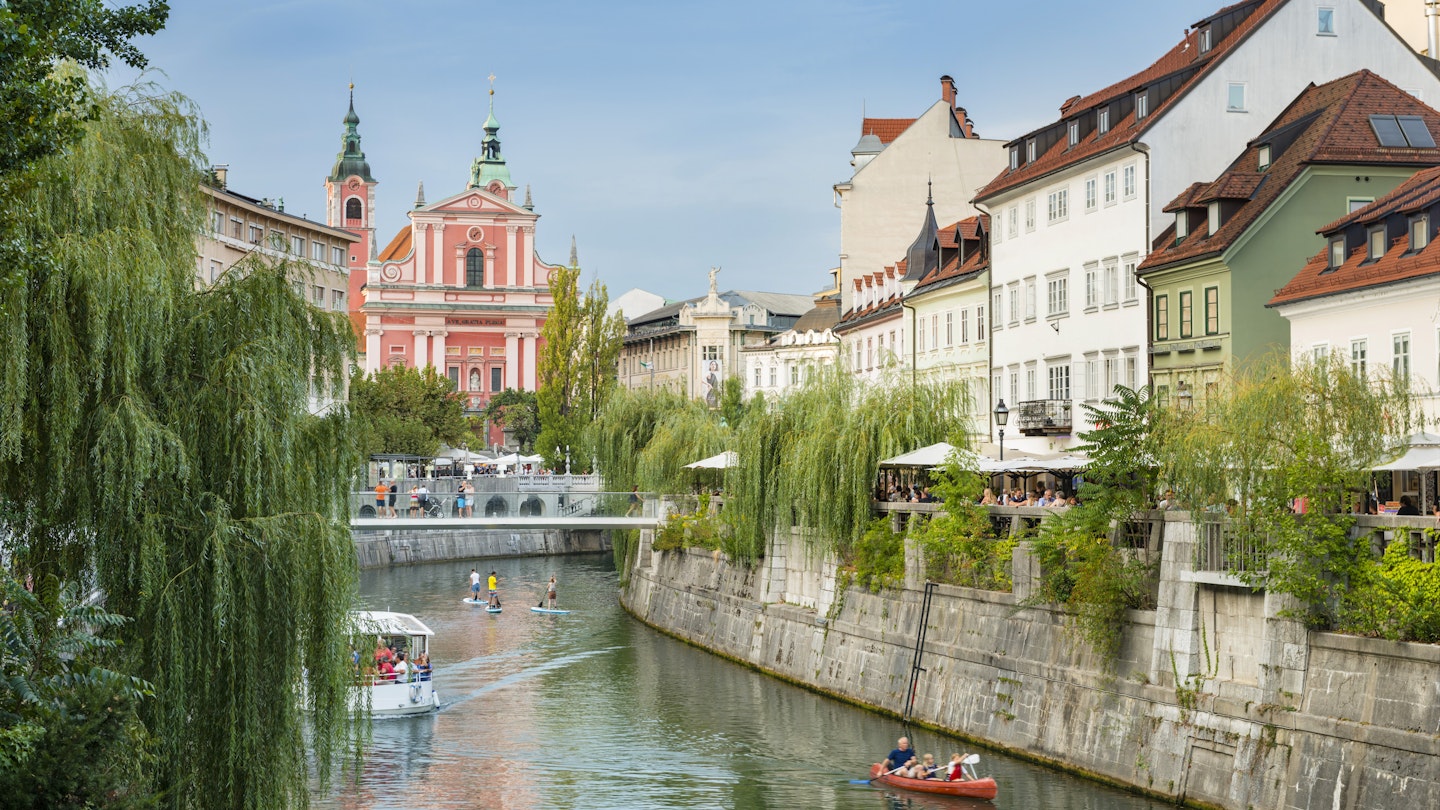
Slovenia's capital, Ljubljana, is a charming delight full of culture, bike trails, museums and cafes © Justin Foulkes / Lonely Planet
For proof that good things come in small packages, one need only visit Slovenia . In an area half the size of Switzerland, this Central European country packs in breathtaking mountain scenery, lively coastal resorts, fashionable cities, crystal-clear lakes and rivers, and charming, isolated villages.
Better still, because of this compact size, you can take in most or all of these delights within the course of one trip. In the span of a few days, you can walk in the Alps, kayak a glacial waterway, visit some world-class winemaking regions, and take a dip in the sea. Don't worry if you're not able to name many cities, regions or landmarks in this stunning country. Slovenia – hiding in plain sight – is waiting to be explored.
1. Ljubljana
Best for spectacular architecture
All roads in Slovenia lead to the capital, and not just because it’s situated in the center of the country. Ljubljana buzzes with active, cycle-riding residents, alternative culture and eclectic restaurants, museums and cafes. However, the setting alone is worth a visit – every square features stunning architecture that reveals the city’s history in stone and eye-catching ornamentation.
Start your investigation at the fairytale-like Ljubljana Castle , an ancient hilltop fortification whose origins date back to the 12 th century. You can either hike a short but steeply inclined path to the top or take the funicular. Once there, poke around old medieval rooms that have been preserved and take in attractions like the Slovenian History Exhibition or Museum of Puppetry .
Make your way back to the Old Town to admire the main square, Prešernov Trg , and its baroque, salmon-pink 17th-century Franciscan Church of the Annunciation . Several buildings here sport beautiful art nouveau and secessionist facades from the early 20 th century.
Fans of early-modern architecture will want to scout out the works of native son Jože Plečnik, a gifted architect who bequeathed several breathtaking bridges and buildings to the city during the first half of the 20th century. Many of his creations, including the dazzling Triple Bridge and the interior of the National & University Library , are UNESCO-protected works of cultural heritage.
2. Lake Bled
Best for a romantic holiday
Whether you know it or not, you’ve likely seen Lake Bled before. The image of a seemingly mythical church standing in the middle of a turquoise lake is Slovenia’s most iconic image. Even in two dimensions, this magical place pulls at your heartstrings. When you see it in person, with that special someone by your side, get ready for fireworks.
Begin with a sunrise walk around the lake, about 5km and almost entirely flat. Three footpaths signposted " Grad" lead toward Bled Castle ; each one involves a climb but it's worth it for the views. Then visit magical, tiny Bled Island in the middle of the lake. Board a pletna , a wooden boat that resembles a Venetian gondola, and head over to climb the 99 stairs into the Church of the Assumption of Mary .
No romantic outing here is complete without an easy hike to Vintgar Gorge , around 4km from the center of town. Boardwalks and bridges take visitors on an intimate journey across the magical 1600m-long ravine.
Planning tip: Buy tickets for Vintgar Gorge in advance . Entry is staggered to protect the gorge; pets are also welcome by purchasing a special ticket.
3. Lake Bohinj
Best for experiencing local culture
For a small country, Slovenia boasts a surprising amount of regional variation. The communities surrounding pristine Lake Bohinj – Slovenia’s largest natural lake, tucked into the Triglav National Park – truly lean into their regional identity. You’ll find makers here of everything from distinct dairy and cheese products to meats, honey, jam and even gin. To make it easier to find the genuine article, look for the “Bohinjsko” (from Bohinj) label signifying it’s locally produced.
Hike out into the rural hamlets north of the lake to learn more about local lifestyles. At the Alpine Dairy Farming Museum in Stara Fužina, exhibits explain how farm-to-table is more than just a dining trend – the locals are passionate about their heritage. Give in to the temptation to sip on whatever is handed to you and just listen.
Bohinj comes into its own in summer when you can swim or sail on the lake and hike or bike into the national park. Once you’re ready to travel again, board the scenic Bohinj Railway and ride it from the station at Bohinjska Bistrica all the way to Italy.
Planning tip: Lake Bohinj is lovely in springtime when the annual International Wildflower Festival allows you to experience the region from the roots up. Learn more about the magical activities in the area with our insider guide to Lake Bohinj .
Best for peeling back layers of history
Maribor could fit into several “best of” categories. Slovenia’s second-largest city anchors the country's Podravska wine region and has a thriving gourmet scene, including some of the country’s best restaurants. Plus, because it sits on the Drava River, it's a hub for adventure activities like rafting, cycling and hiking. But Maribor is, at its heart, a treasure chest of historic layers.
Settled time and again during the Stone Age, Celtic period and Roman era, the modern city dates back to the Middle Ages. First, stop in at Maribor Castle, home of the regional museum , to get a historical overview and then explore the main medieval market square, Glavni Trg .
Here, you’ll see the 16th-century Town Hall before taking a seat to enjoy a glass of wine at the Old Vine House , where the world’s oldest producing vine — more than 400 years old — climbs the facade and still produces vino. If you want to stretch your legs some more, hike 30 minutes out to an ancient, 12th-century castle known as Piramida .
Planning tip: Two excellent restaurants to try are Hiša Denk and Restavracija Mak . Book your table well in advance, particularly during the high season.
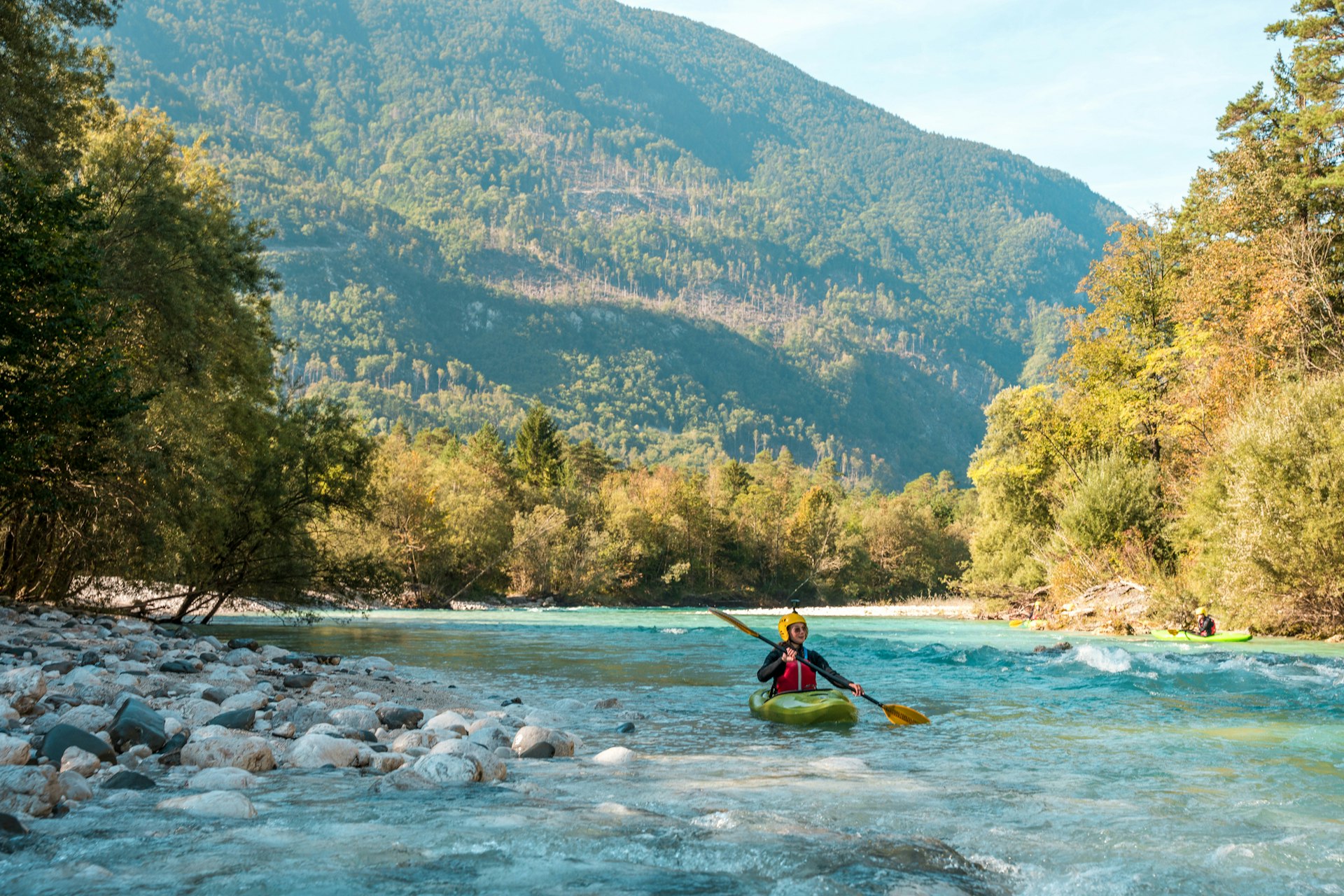
Best for outdoor adventure
At the edge of Triglav National Park, squeezed between the Julian Alps and the crystal-clear turquoise Soča River, Bovec is a haven for water-based activities. The frothy river, boasting unimaginable cerulean shades that come from the underlying bedrock itself, is just as stunning as you’ve heard and neither picture nor rumor does it justice.
The best way to experience the river is to join a white-water rafting or kayaking tour (they run from March to October). Canyoning – where groups make their way down a mountain stream in a gorge with techniques like abseiling, climbing, sliding and jumping – is gaining ground too. Bovec offers zip lining over the Julian Alps, with more than 3km of lines at the Adrenalin Park Bovec .
In winter, skiing is king, and nowhere is more popular than the Kanin Ski Centre. The biggest ski area in Slovenia shares custody with Italy, and the starting point for the gondola is in Bovec. Hit the slopes and watch the sea below.
Planning tip: Several rafting companies offer excursions for beginners and experts, including Nature's Ways and Kayak Soča .
6. Karst Region
Best for landscapes and caving
Slovenia’s Karst Region, which takes its name from its porous, limestone topography, is home to some of Europe’s largest and most-stunning cave systems. Two caves in particular, Postojna and Škocjan , stand out but the karst is riddled with dozens of underground attractions. Postojna Cave, one of the world's largest, features unparalleled stalagmite and stalactite formations. Once inside, take a 1.5-hour tour that unveils 5km of the expansive cave. More than half the journey is covered by a cool electric underground train.
The immense complex of the Škocjan Caves, 20km southwest of Postojna, is, if anything, more spectacular. The entire system was created by the Reka River, which carved its way over the millennia through a gorge beneath Škocjan village.
Planning tip: Aside from underground treasures, the Karst’s deep green hills are rich in fruits, ruby-red teran wine, pršut (dry-cured ham), and lots of picturesque villages with old stone churches.
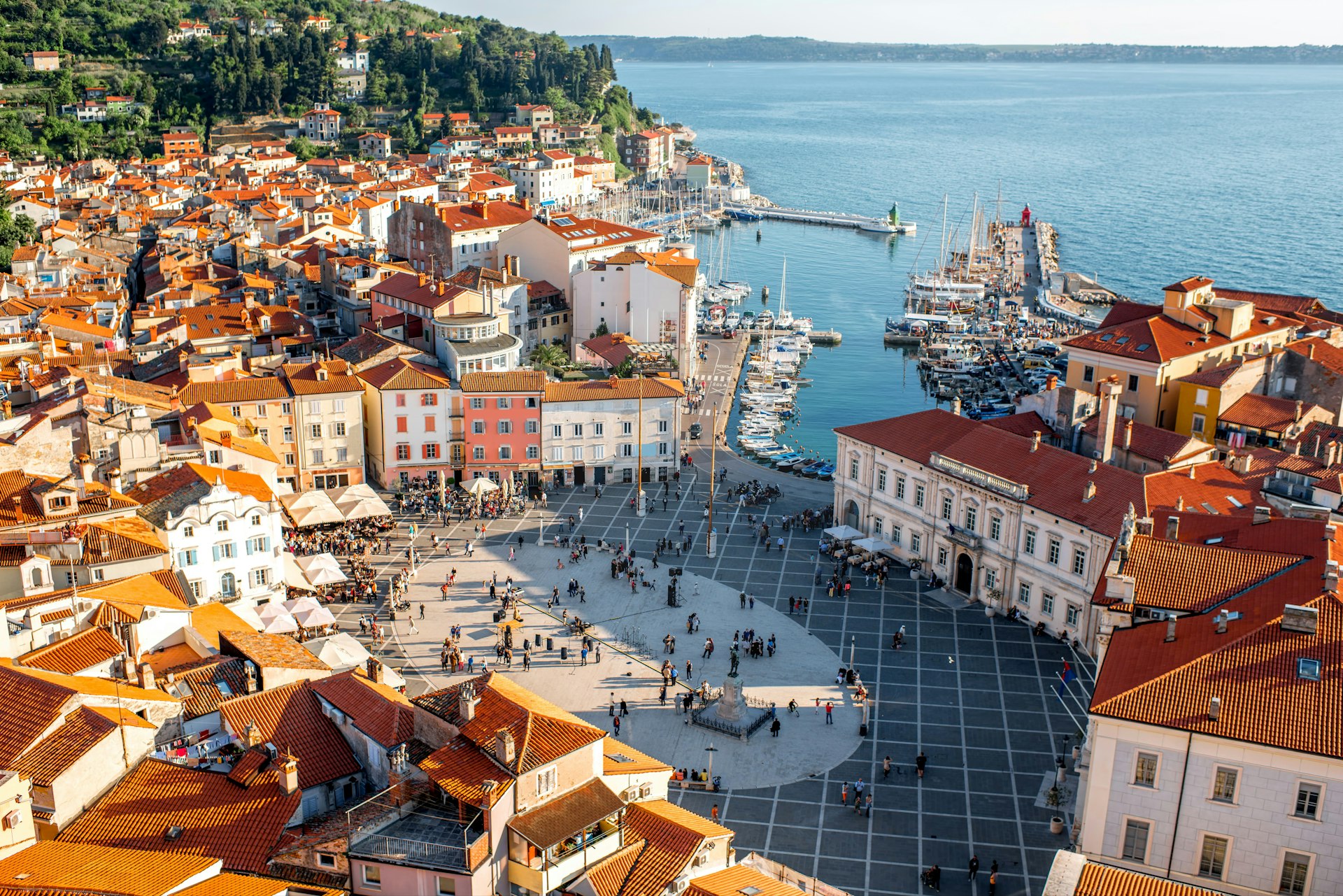
Best for soaking up the sun
Such is the bounty of Slovenia that you can play in the mountains in the morning and lounge on the beach in the afternoon. When that urge strikes, Piran is the spot to soak up the rays, splash in the Adriatic and discover a unique destination along the country’s tiny 47km long coastline.
Often called the most beautiful town along the Slovenian Adriatic, Piran predates the Romans but got its present look in the Middle Ages as part of the Venetian Empire. Get a panoramic overview by climbing the stairs to the top of the bell tower, next to the 17th-century baroque Cathedral of St George . From here, you'll be able to see three countries at once.
Come down from your perch to Tartinijev Trg , the town’s nerve center, before heading to the Mediadom Pyrhani , a museum that offers a multimedia take on Piran history. But don't forget the reason you’ve come – a 15-minute walk takes you to Fiesa Beach for your cooling plunge into the sea.
Planning tip: The nearby Strunjan Landscape Park , east of Piran, offers two secluded (and harder-to-reach) beaches: Moon Bay and Bele Skale.
8. Goriška Brda
Best for sampling wines
Straddling the Italian border, Goriška Brda (or simply “Brda") is an absolute charmer: rolling hills lined with grapevines and sun-kissed orchards topped with small settlements and churches. The area is one of Europe's best-kept secrets. From one of the many perched villages scattered across the fertile hillsides, you’ll see a seemingly endless expanse of vineyards disappearing over the horizon.
A paradise for cyclists, the hills of Goriška Brda are home to dozens of scenic trails that are great for exploring on two wheels. Wineries to look out for include Klet Brda , the largest wine producer in Slovenia, with a well-stocked wine shop at its Dobrovo estate and excellent daily tours, Vinoteka Brda , and Edi Simčič , a third-generation family estate with tastings almost every day.
Planning tip: Like elsewhere in Slovenia, most local wine producers require visitors to call or book ahead to arrange a tasting.
This article was first published Jan 5, 2022 and updated May 2, 2024.
Explore related stories
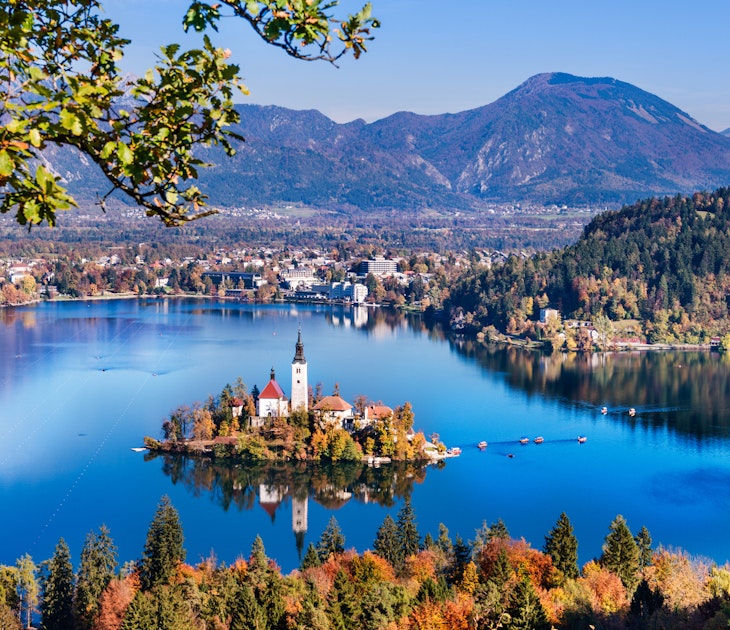
Tips & Advice
May 2, 2024 • 6 min read
Plan the perfect trip to Slovenia with these tips on booking, packing and activities.
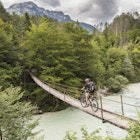
Apr 27, 2024 • 5 min read

Mar 17, 2024 • 7 min read

Oct 20, 2023 • 8 min read

Aug 30, 2023 • 6 min read
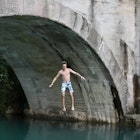
Dec 15, 2022 • 2 min read
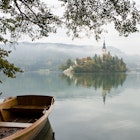
Feb 27, 2022 • 4 min read

Feb 20, 2022 • 6 min read

May 19, 2024 • 6 min read
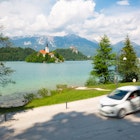
May 4, 2024 • 6 min read

IMAGES
VIDEO
COMMENTS
Let's explore the best places to visit in Lithuania: 1. Vilnius. Source: flickr. Vilnus, Lithuania. The historic capital of the Grand Duchy is a veritable treasure trove of medieval wonders and gorgeous Gothic come Russo-flavoured Baroque architecture.
9. Lithuanian Folk Museum in Rumšiškės. There is no better place to get to know what life in Lithuania was like in the past than the Lithuanian Folk Museum in Rumšiškės, aka Open-Air Museum of Lithuania. It's one of the largest ethnographic open-air museums in Europe, set in a beautiful area close to Kaunas Lagoon.
1. Vilnius Old Town. 6,120. Neighborhoods. Historic neighborhood with scenic, hilly cobbled streets and a variety of cafes, shops, and river walkways perfect for leisurely exploration and cultural enrichment. See ways to experience (34) 2023. 2.
Explore Lithuania. Museums 12. Architecture 7. Soviet History 7. Statues 6. Monuments 5. Sacred Spaces 4. Places To Stay 2.
Trakai Island Castle Museum. 3,247. Architectural Buildings. By deanosaur89. Entrance ticket for adults is 10 euros and we felt it was worth the Day trip from Vilnius. See ways to experience (20) 2023. 4. Lukiškės Prison 2.0.
Among the top things to do in Lithuania, a visit to Kaunas is a must. Located 98km west of Vilnius and easily accessible by bus or rail, Kaunas is considered by many Lithuanians as the true heart of their country, serving as Lithuania's second city. The most picturesque part of Kaunas is the Old Town (Senamiestis), centred on Town Hall Square ...
Top 10 Glamping Spots In Lithuania - Updated 2024. 1. Kernave (from USD 138.0) Show all photos. Kernavė is a town in Southeast Lithuania with a beautiful landscape and renowned historic sites among many other attractions. There is no better place to experience the beauty of this region than at the Hillforts of Kernave.
Things to Do in Lithuania, Europe: See Tripadvisor's 248,259 traveller reviews and photos of Lithuania tourist attractions. Find what to do today, this weekend or in June. ... Lukiškės prison 2.0 is probably one of the most interesting cultural phenomena in Lithuania. The former prison is transforming into a hub for music, modern art, design ...
Champagne Boutique in Old town, more than 100 Champagnes,Champagne testing and snacks. See ways to experience (33) 2023. 2. KGB Museum (Genocido Auku Muziejus) 3,373. Speciality Museums. By lahdenpera. Housing the Nazi occupants during WW2, and the Soviet KGB directly after, and up until 1989, this building has sealed….
Discover the best attractions in Lithuania including Hill of Crosses, Palace of the Grand Dukes of Lithuania, and Vilnius Cathedral. Lonely Planet. Destinations. Planning. Inspiration. Shop. Search. Saves. Open main menu. Europe. Must-see attractions in Lithuania. Sights; Restaurants; ... this fun museum gives visitors the chance to ride on ...
For centuries, Lithuania - particularly the capital, Vilnius - was a vital centre of Jewish culture and learning. The Nazi occupation of World War II and the Holocaust dealt a tragic blow to this storied history. In the years from 1941 to 1944, tens of thousands of Jews were murdered here under the trees of the Paneriai Forest, about 10km ...
The best 10 places to visit in Lithuania. 1. Curonian Spit (Kuršių Nerija) Let's start with my absolute favorite and the most beautiful natural must-visit place in Lithuania- a UNESCO-listed natural wonder called Curonian Spit (Kuršių Nerija in Lithuanian). It is like the desert of Lithuania half of which is covered in forests.
13. Go chocolate tasting at the Chocolate Museum. Ruta's Chocolate Museum is a must-visit destination for chocoholics and one of the tastiest things to do in Lithuania! Near the Hill of Crosses, in Siauliai, the museum presents an interesting history of the oldest chocolate factory in Lithuania.
The combination of culture and nature makes Neringa one of the most beautiful places in Lithuania. 6. Trakai. The historic city and lake resort of Trakai is a popular tourist destination in Lithuania. It has an interesting multicultural history, as communities of Lithuanians, Russian, Poles, and Jews made a home here.
Go for a boat ride out on the lake. Go for a sunset meal by the lake. 7. Panemunės pilis. If you are interested in discovering even more spectacular castles, then one of the best places to visit in Lithuania is Panemunes Pilis. It was built in the early 1600s and is located just up from the banks of the Neman River.
2. Plan a Pilgrimage to the Hill of Crosses. The Hill of Crosses is one of the major Lithuanian points of interest. This unique destination is covered in over 200,000 crosses and is a cultural center for both locals and tourists alike. Walking into the Hill of Crosses. The first crosses were recorded here in 1831.
A list of must-see places to visit when exploring Lithuania would be incomplete without such a sight as the Vilnius Cathedral. It is the most important Roman Catholic cathedral in Lithuania. ... There are about 120 villages on the territory of the reserve - these are interesting places, popular with tourists, where you can admire the mills and ...
Užupis' bright colored buildings and unique statues makes it one of the best sites to visit in Vilnius. 3. Vilnius Old Town. Exploring the Vilnius Old Town is undoubtedly one of the coolest things to do in Vilnius. This UNESCO World Heritage site is a maze of narrow streets, historic buildings, and bustling squares.
7. Gate of Dawn. Built between 1503 and 1522, the gorgeous Gate of Dawn is the only remaining part of Vilnius' city wall still standing. Not only a significant historical and cultural landmark, the gate is also a popular pilgrimage site as it is home to a famous and revered chapel of the same name.
There are many interesting places to visit in Lithuania - from white sand dunes in the west to amazing capital Vilnius in the southeast. Here we recommend 6 must see places in Lithuania that should be on your travel list. Vilnius. Time to spent in Vilnius: 2 - 4 days
Nature. Lithuanians are proud of their nature - and for good reason! To recharge from urban noise and daily routine, explore centuries-old woods, sandy beaches and dunes, swim in lakes and rivers, explore gorgeous nature reserves, and break a sweat on one of the country's 100+ hiking trails.
6 - Visit the important site of The Hill of Three Crosses. The Hill of Three Crosses is a famous monument in Klanai Park - an 8-minute drive from Old Town Vilnius. The symbolism dates back to the 12th and 13th centuries when a group of Franciscans died as martyrs on the hill. Today the crosses honor their deaths.
3. Lake Bohinj. Best for experiencing local culture. For a small country, Slovenia boasts a surprising amount of regional variation. The communities surrounding pristine Lake Bohinj - Slovenia's largest natural lake, tucked into the Triglav National Park - truly lean into their regional identity. You'll find makers here of everything from distinct dairy and cheese products to meats ...